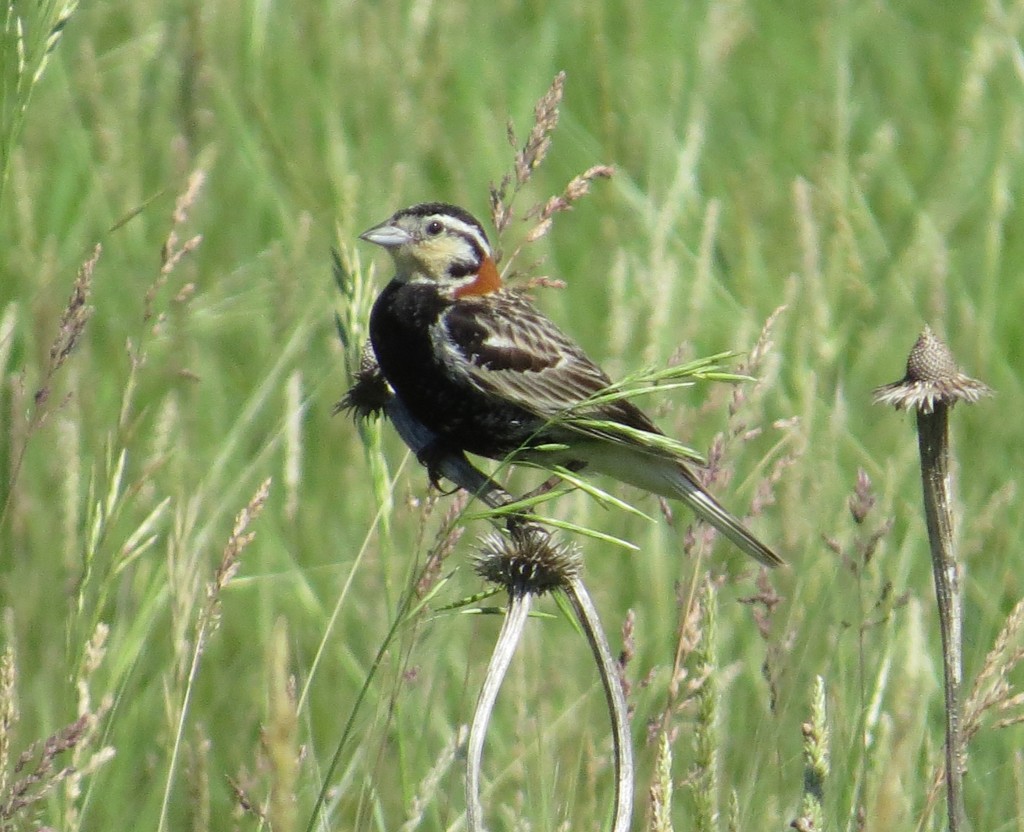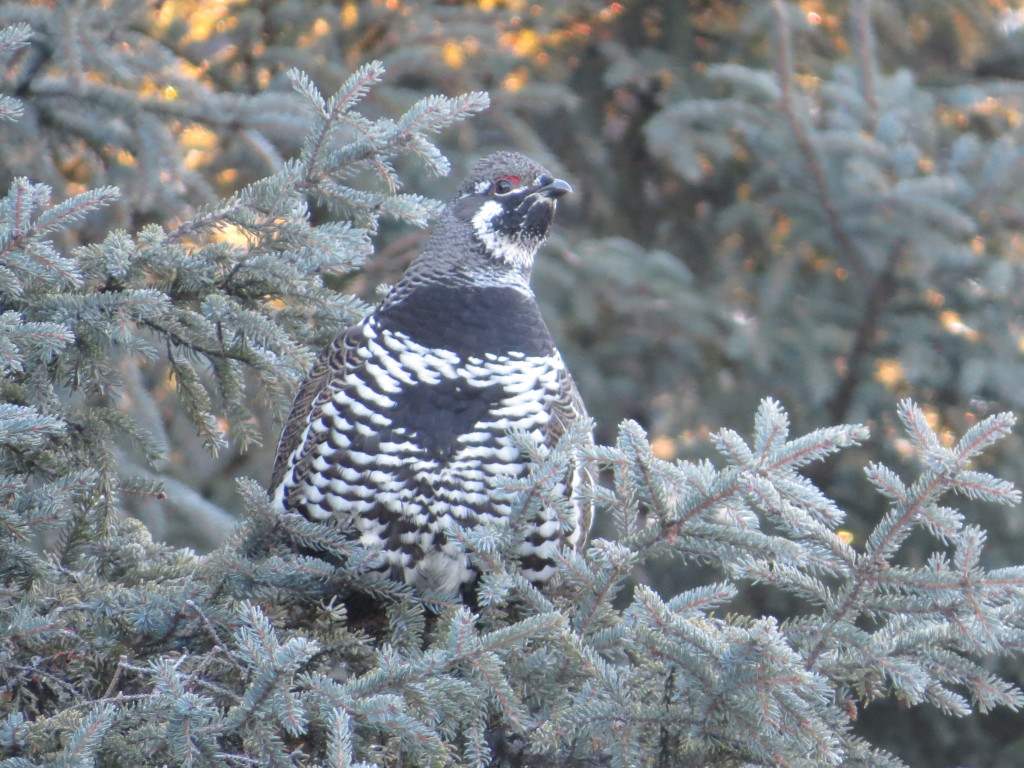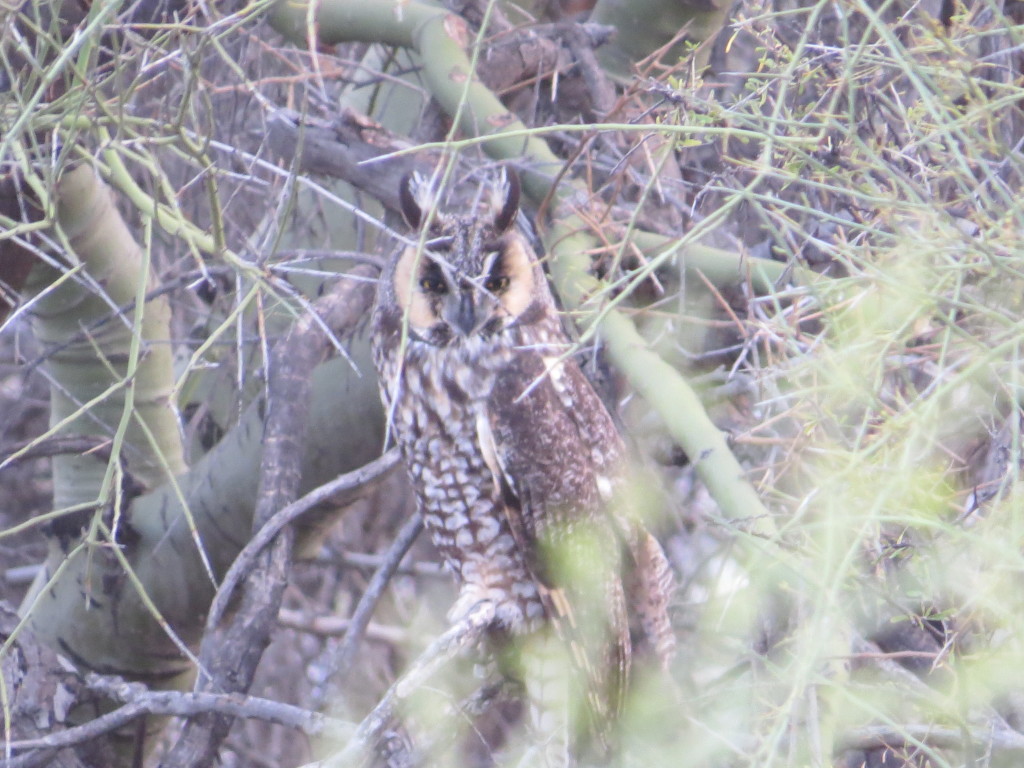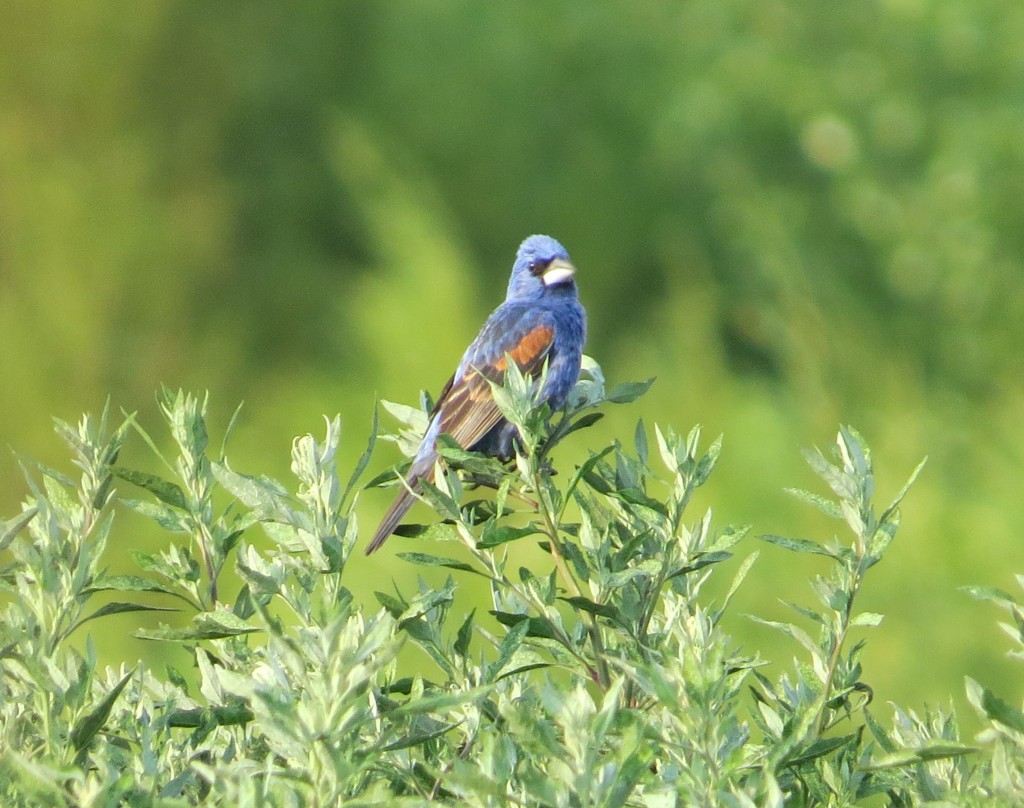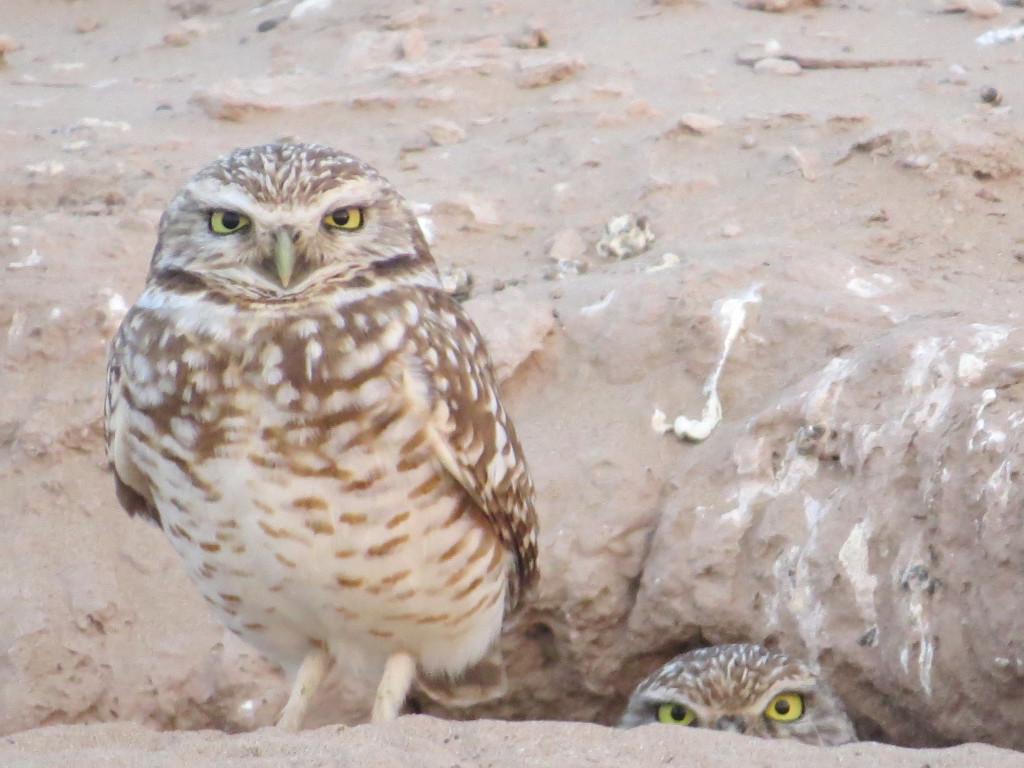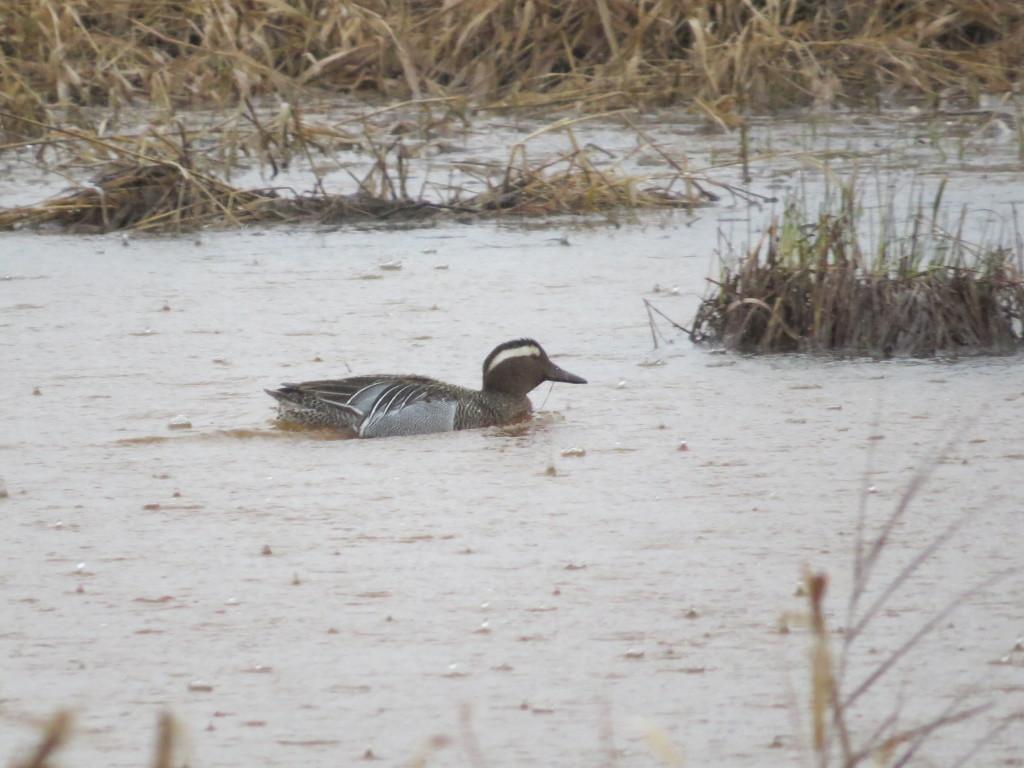So what does one do to celebrate the accomplishment of a major birding goal that was several years in the making…go to Disney Land? Take an Owl victory lap, visiting some favorite Owls? No, these are not the thoughts of a birder. There’s always a queue of birding priorities, and now that FEPO was knocked off, another bird demanded immediate attention. It nearly cut short the FEPO experience, though I vowed not to let it. That bird was Arizona’s first record of a White-throated Thrush, a vagrant from Mexico. Obviously such a bird had created quite a stir in the state and even national birding scene just a few weeks prior to my visit. I watched the reports with amusement and wasn’t too concerned with it. I was undaunted in my FEPO pursuit and was not about to let another Mexican bird scrap those plans. And besides, the Thrush had hung for weeks, entertaining several hundred birders by now. It would be there, but would I?
Seeing as how FEPO was found immediately and enjoyed thoroughly, we had ample time to swing over to Madera Canyon to try for THE THRUSH. But first, we had a windy desert road to drive and a lifer Cassin’s Sparrow to nab thanks to Caleb, the sharp-eyed chauffeur. This was a nice little bonus that I did not foresee.
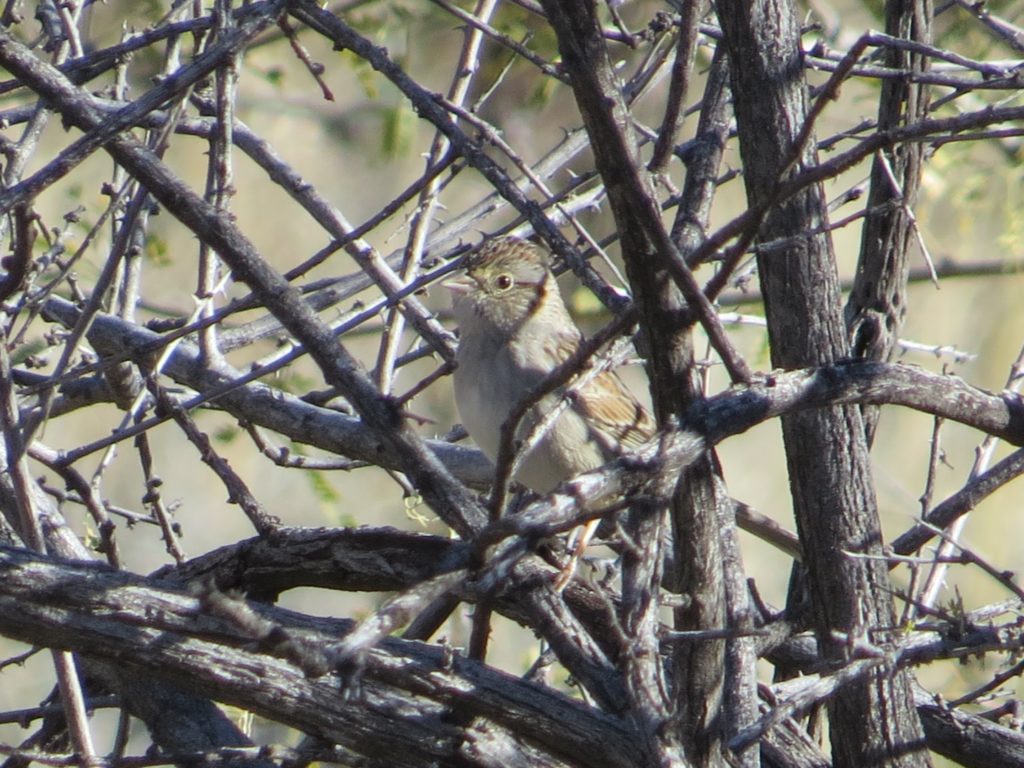
The mood on the way to Madera was light and easy. We got the FEPO. I honestly didn’t care if we dipped on the Thrush. But with that said, I still wanted to see it pretty bad too. It’s an insanely good bird, and just like the Fan-tailed Warbler, SE AZ opportunity was knocking. Once again I found myself in the intersection of right place and right time. Thrush or not, it’s always the right time to go to Madera Canyon.
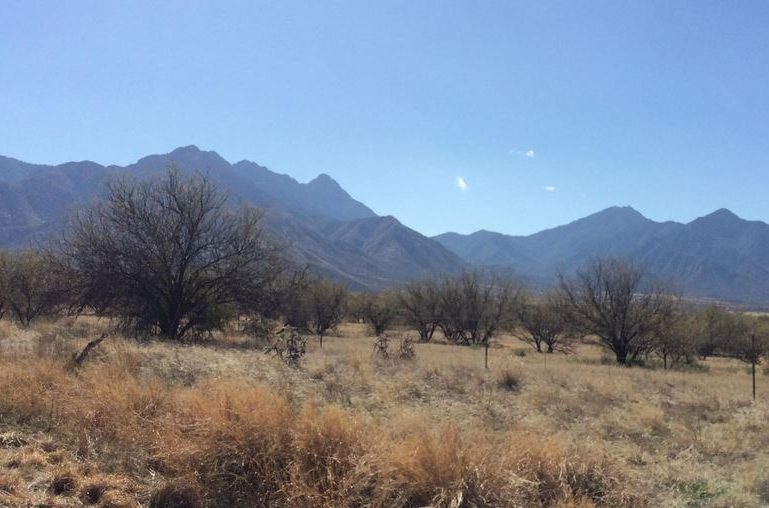
After we parked at the Proctor Road parking lot, we followed a paved trail where it had been seen. Like a bird dog, Caleb immediately disappeared from the trail in search of quarry. Again, Tommy was in total relaxation mode as the Boy was whacking the bushes for the White-throated Thrush and a Black-capped Gnatcatcher for me. Tommy and I idly strolled the trail, hoping to turn American Robins and Hermit Thrushes into the one thrush species that counted. Mexican Jays were loud and huge but not worth looking at, considering. We talked with other birders there trying to get the latest on the Thrush. Best we heard was that it was seen a couple hours prior. That was good news. It was around, and the Boy was on it. Some birders we visited with told us about a snoozing Whiskered Screech-Owl further up trail. The Owl victory lap idea was taking hold, distracting Tommy, Gordon, and me from the new major target of the day. Plus, you know, Caleb was out there, somewhere, handling things.
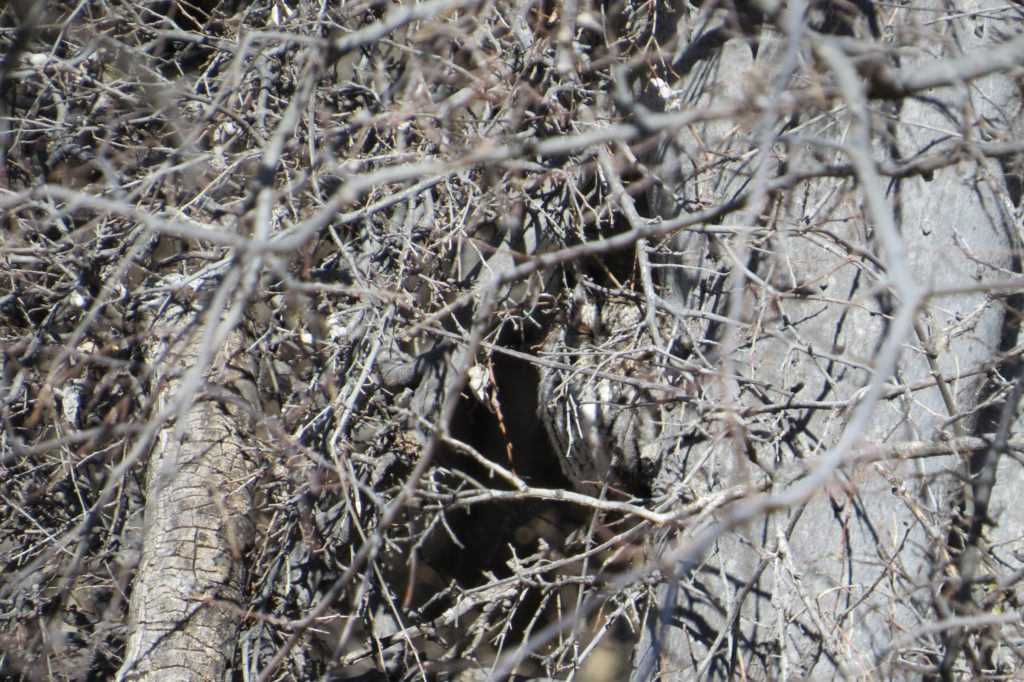 How someone spotted this thing I’ll never know. I could barely find it with multiple people pointing to it.
How someone spotted this thing I’ll never know. I could barely find it with multiple people pointing to it.
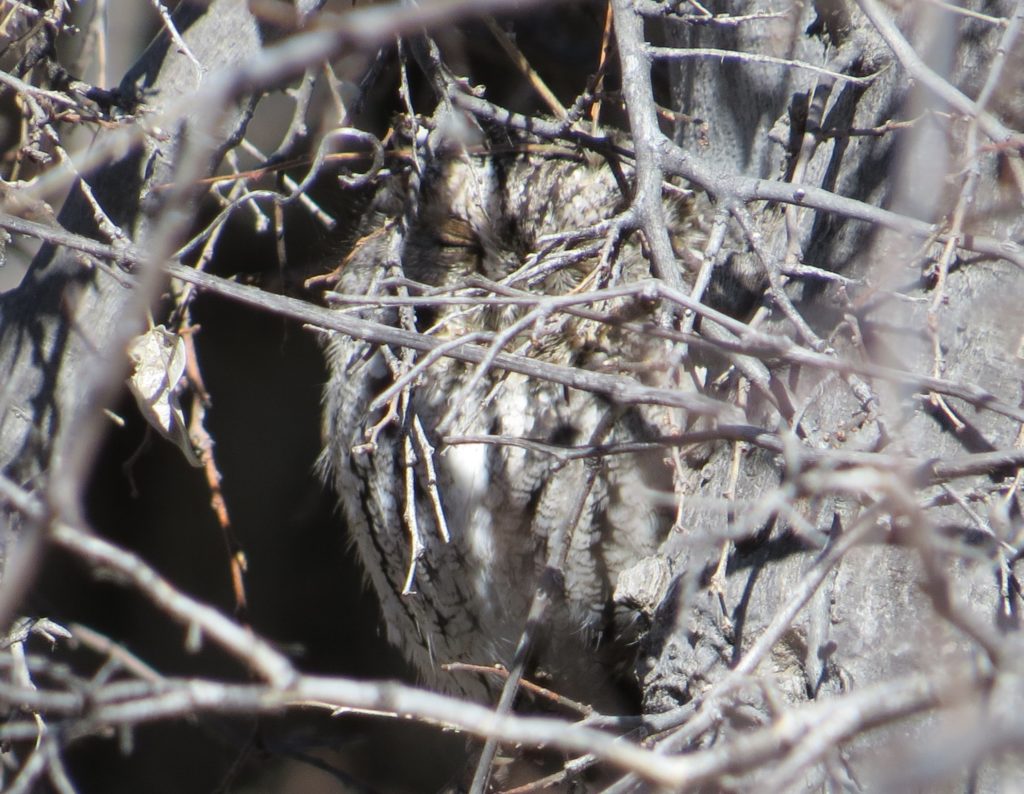 Tommy and I had barely resumed our Thrush sorting when I asked Tommy whatever happened to Caleb. I no sooner said those words, and the Boy came sprinting down the path toward us hollering (without breaking stride) that the Thrush had been spotted further up the trail. Caleb continued running and proclaiming the good news to everyone and their cousin, birders or not, that the White-throated Thrush was present.
Tommy and I had barely resumed our Thrush sorting when I asked Tommy whatever happened to Caleb. I no sooner said those words, and the Boy came sprinting down the path toward us hollering (without breaking stride) that the Thrush had been spotted further up the trail. Caleb continued running and proclaiming the good news to everyone and their cousin, birders or not, that the White-throated Thrush was present.
Tommy and I hustled up to the spot and caught a quick glimpse of it in the open on the ground before it retired to the treetops in terrible light. Pretty neat regardless.
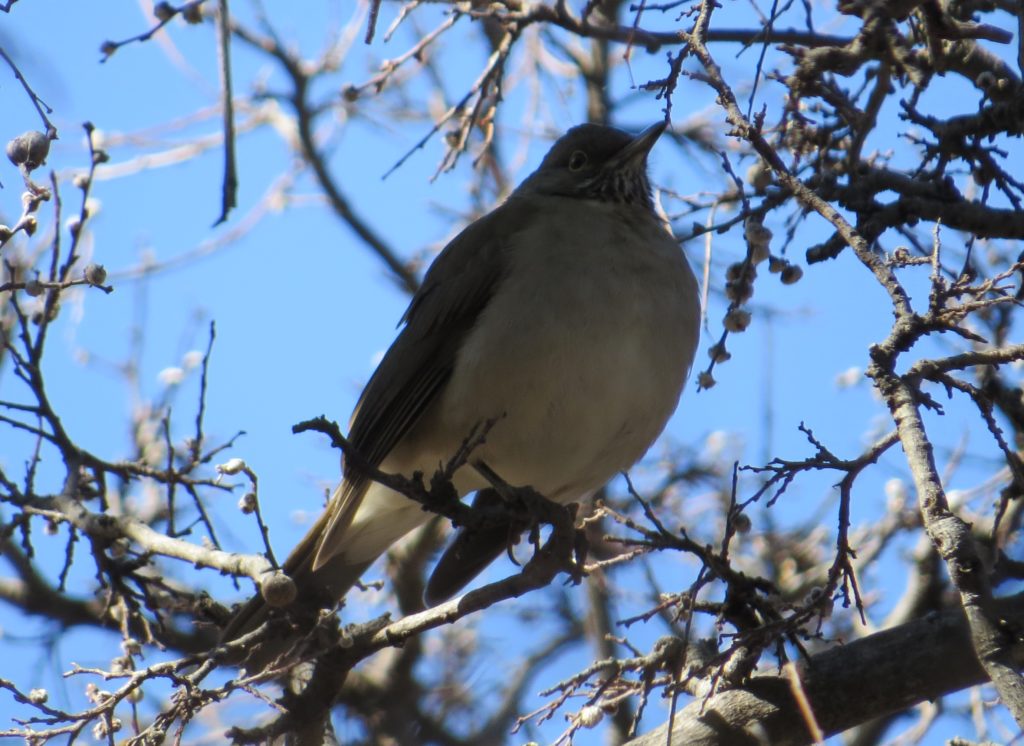
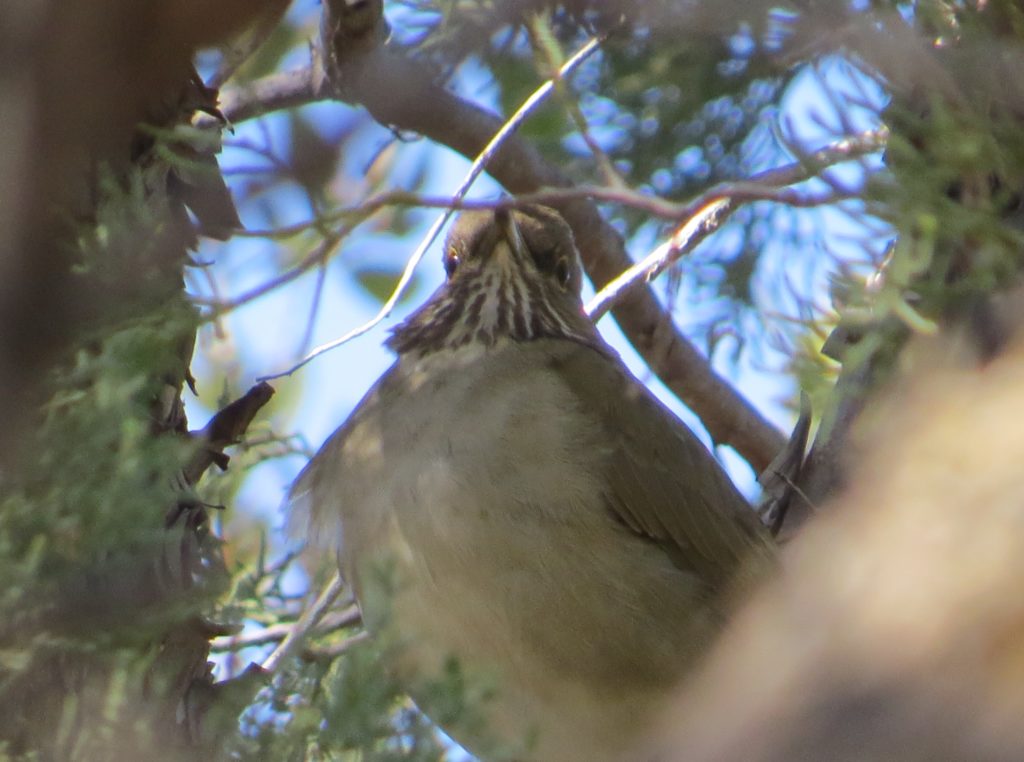
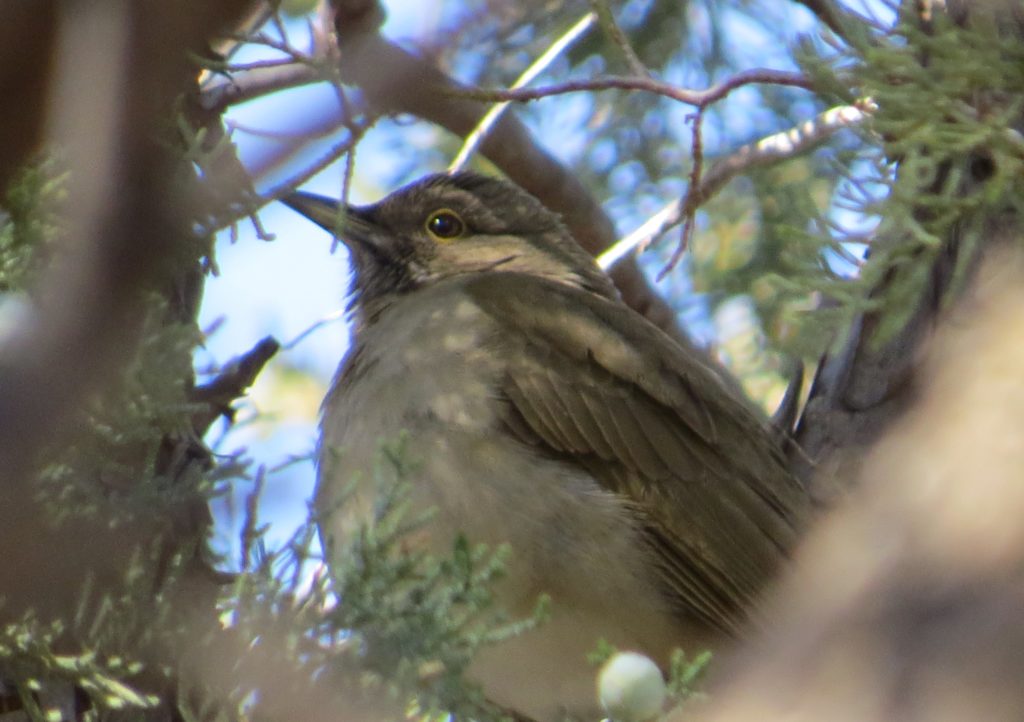 A bit of serendipity happened at the parking lot on the way out when a birder recognized Tommy. Turns out that birder was Linda Grant, the original finder of the famous Thrush. Linda had come back for better photos after her first ones were harried as bird photos can be when you realize you have a Mega and need to get the word out immediately. Tommy had written a great blog post on Linda’s discovery of the White-throated Thrush and on over two dozen birders’ reactions to the find. Linda and her husband were able to tell Tommy how much they enjoyed the post, and Tommy clearly enjoyed meeting this hero to hundreds of birders. A cool moment.
A bit of serendipity happened at the parking lot on the way out when a birder recognized Tommy. Turns out that birder was Linda Grant, the original finder of the famous Thrush. Linda had come back for better photos after her first ones were harried as bird photos can be when you realize you have a Mega and need to get the word out immediately. Tommy had written a great blog post on Linda’s discovery of the White-throated Thrush and on over two dozen birders’ reactions to the find. Linda and her husband were able to tell Tommy how much they enjoyed the post, and Tommy clearly enjoyed meeting this hero to hundreds of birders. A cool moment.
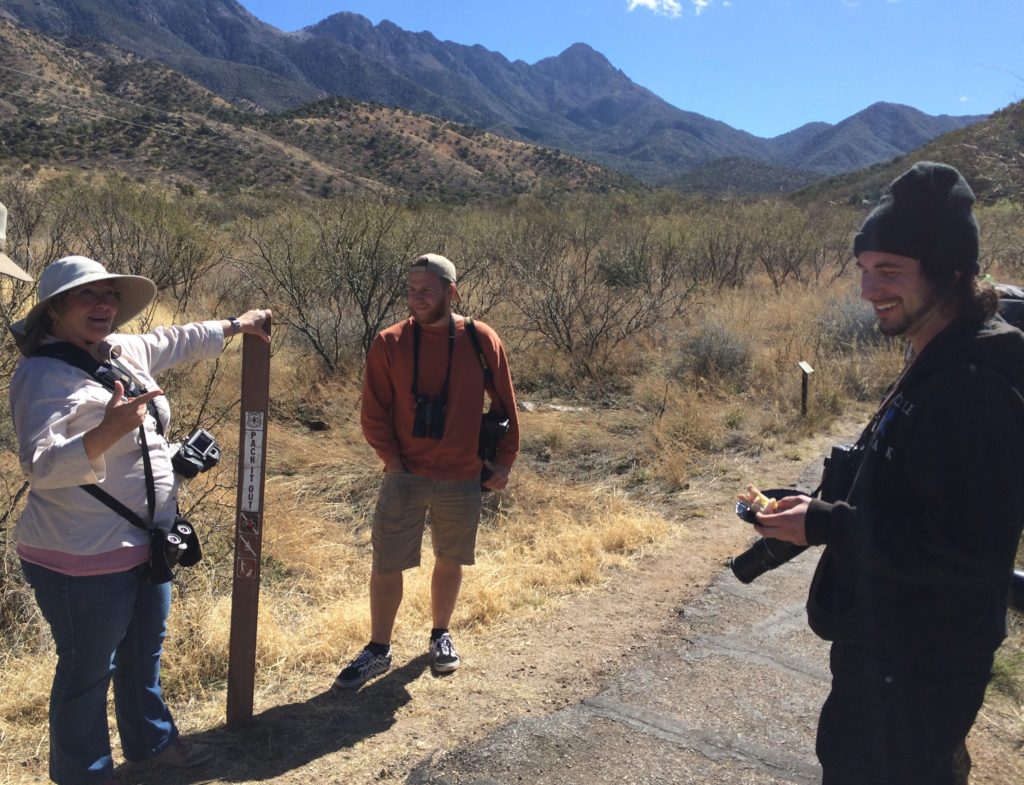
The intensity of Madera Canyon never ceases to amaze me. One would think that things would be pretty chill after my lifer FEPO and WTTH with a side helping of Whiskered-Screech. But it wasn’t. A stunning male Elegant Trogon had been spending the winter in the lower elevations near the White House Picnic Area, and fellow Thrush seekers had said it was around this day. Since that brief encounter with a Trogon a few years back higher up on the Super Trail, I have wanted a better experience with this bird.
This was the day. We saw the ELTR paparazzi staked out at a pyracantha tree loaded with berries along the road. The tree is a favorite buffett of the Trogon. Unfortunately we were told the Trogon had just flown off, but not to worry because it would be back. I’m an impatient birder, especially when borrowing time against a family vacation. So I looked into the oak woods in the direction people said it flew. And that’s when I spotted it–one lady up on the hillside aiming a massive camera at a random spot in the trees. There would be only one reason for that. I scrambled up the rocky hillside and quickly found her target.
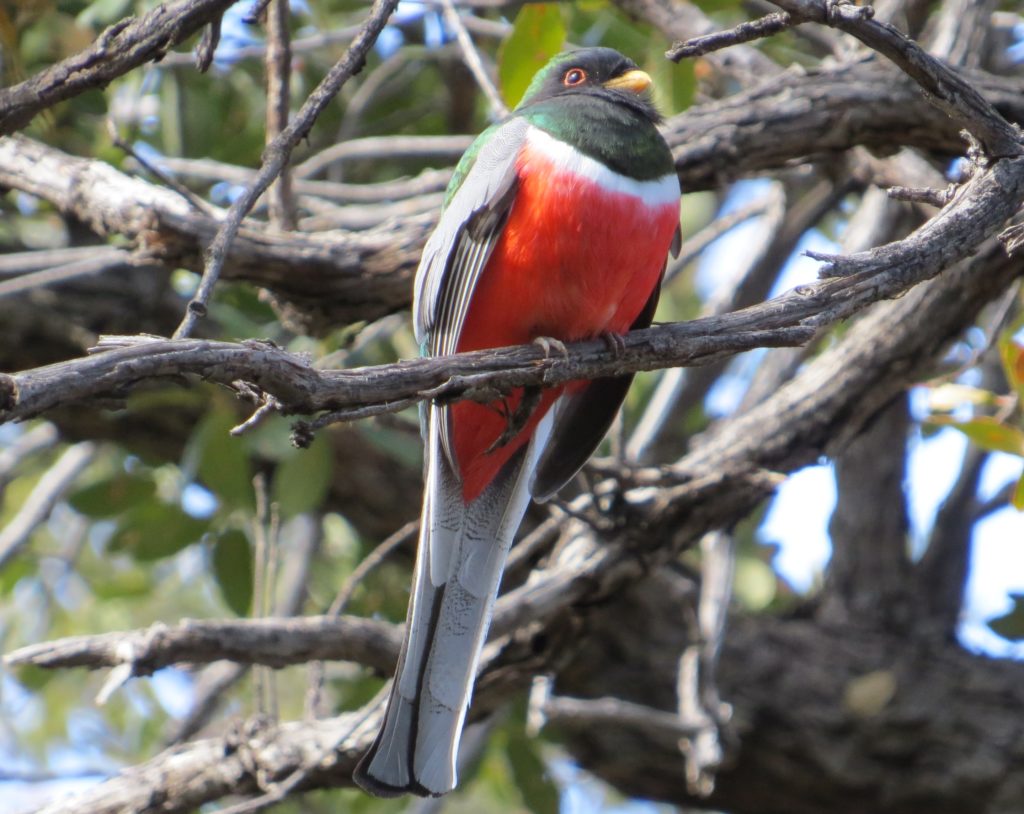 The Trogon was incredibly tame and would sit for long periods of time on a perch before moving a short distance, easy to find and easy to approach. SE AZ never ceases to amaze me. This was a stunning moment. And, AZ birders will have to forgive me, but this was just as big a thrill or bigger than the Thrush.
The Trogon was incredibly tame and would sit for long periods of time on a perch before moving a short distance, easy to find and easy to approach. SE AZ never ceases to amaze me. This was a stunning moment. And, AZ birders will have to forgive me, but this was just as big a thrill or bigger than the Thrush.
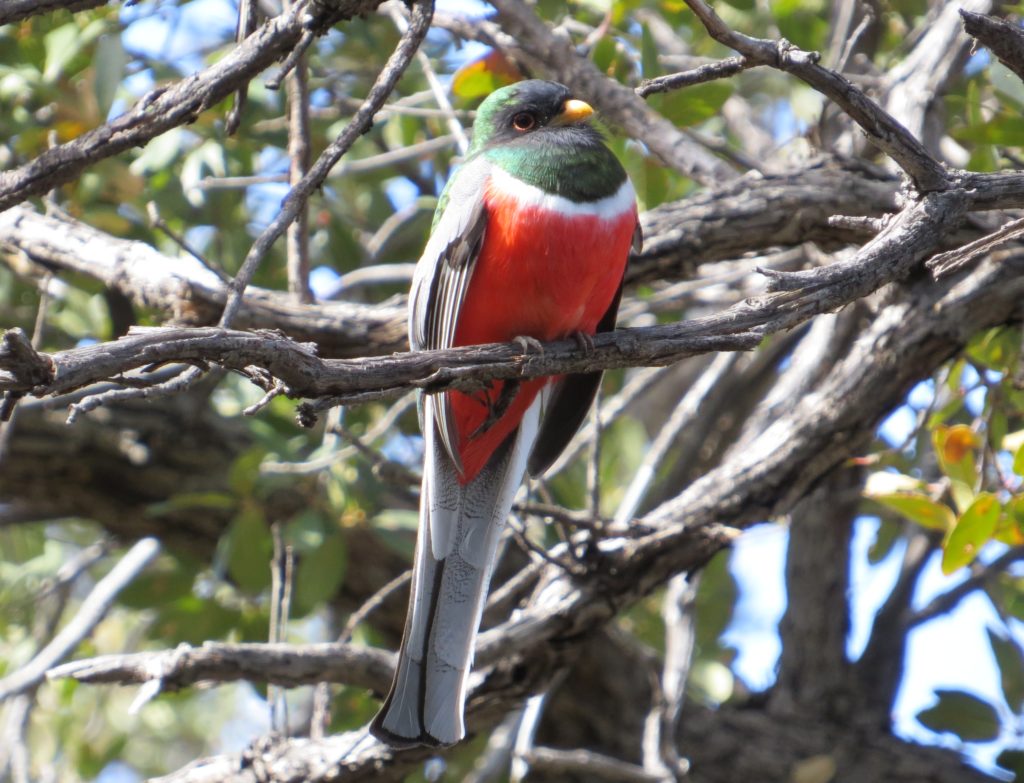 In 2015 my only real photo of the Elegant Trogon was from the back. This was a refreshing and a much yearned for change. I, of course, got to see the back this time too and once again admire that coppery tail that it was once named for.
In 2015 my only real photo of the Elegant Trogon was from the back. This was a refreshing and a much yearned for change. I, of course, got to see the back this time too and once again admire that coppery tail that it was once named for.
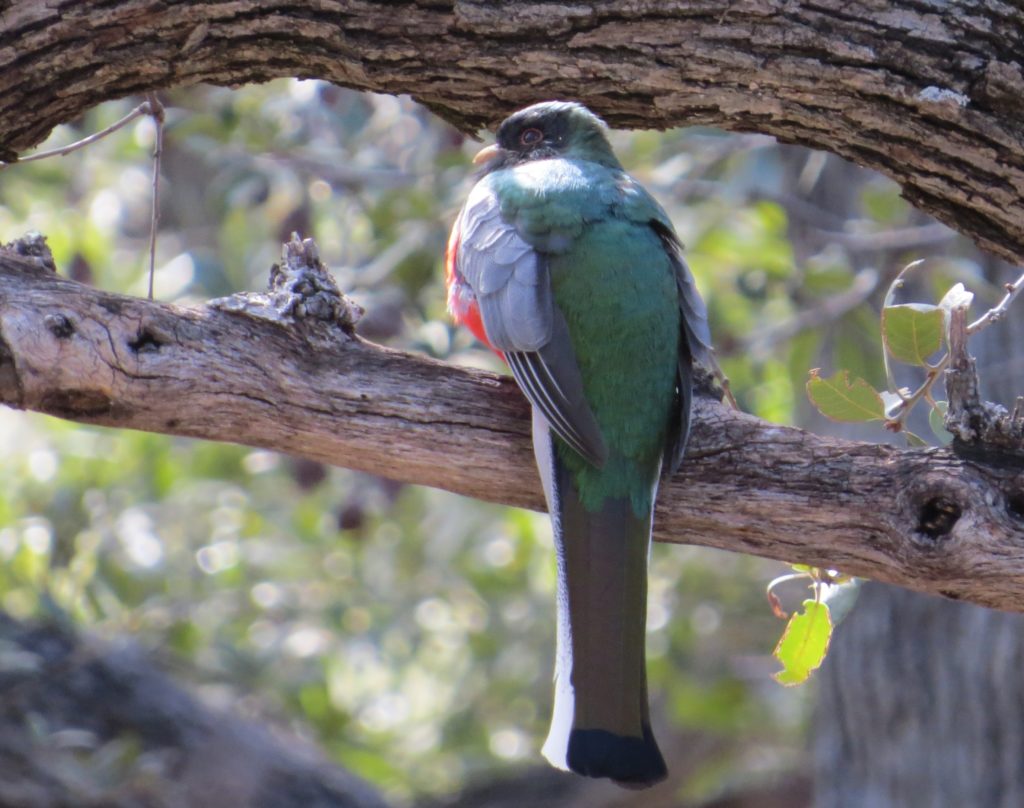
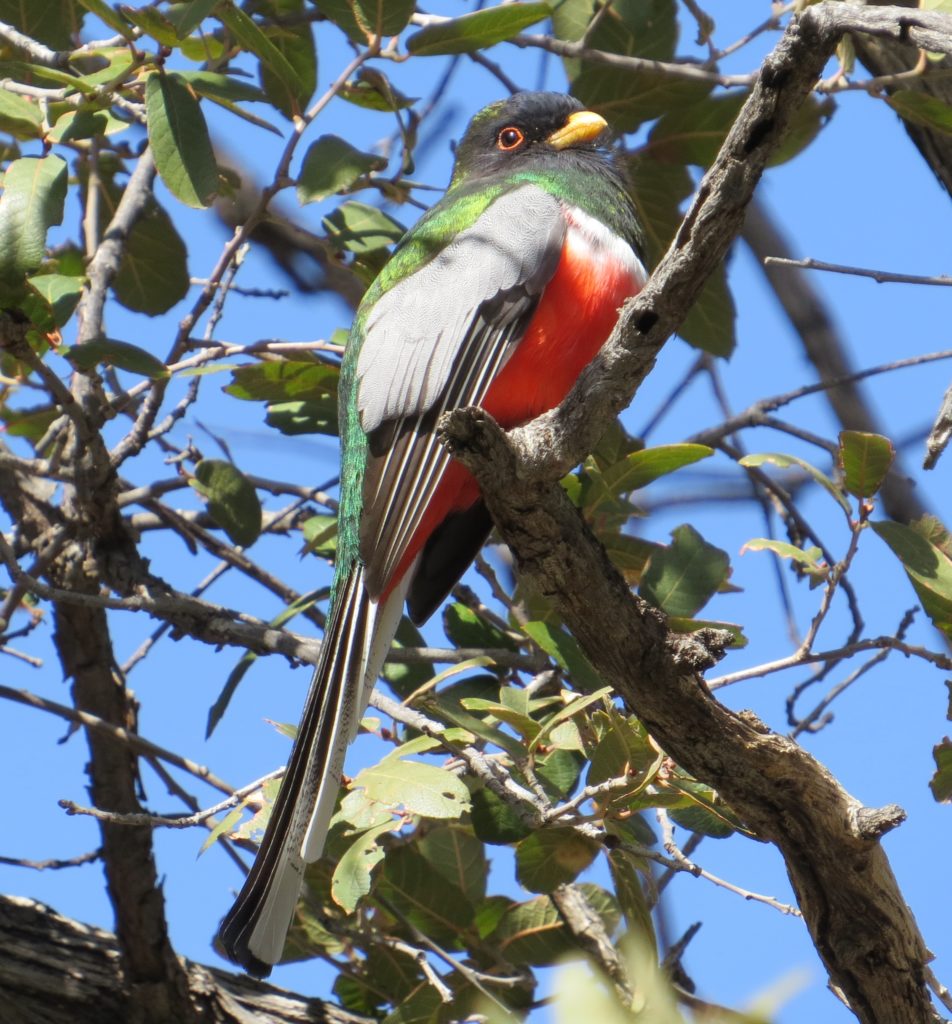
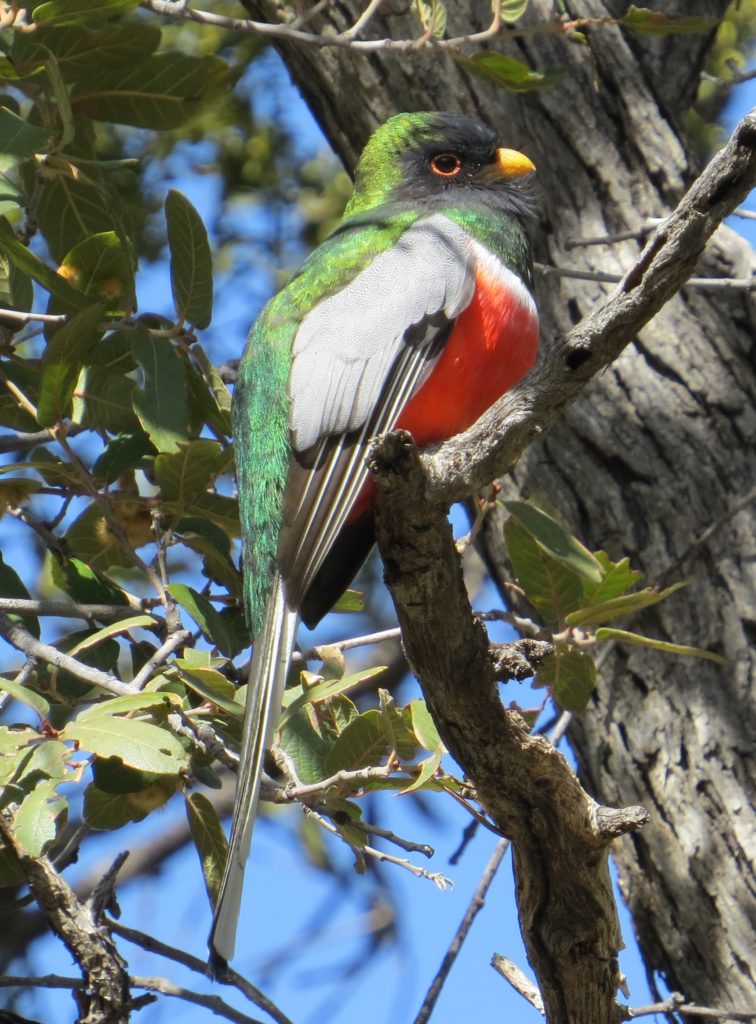 This was a Trogon-crushfest, enjoyed by even the most experienced of locals…
This was a Trogon-crushfest, enjoyed by even the most experienced of locals…
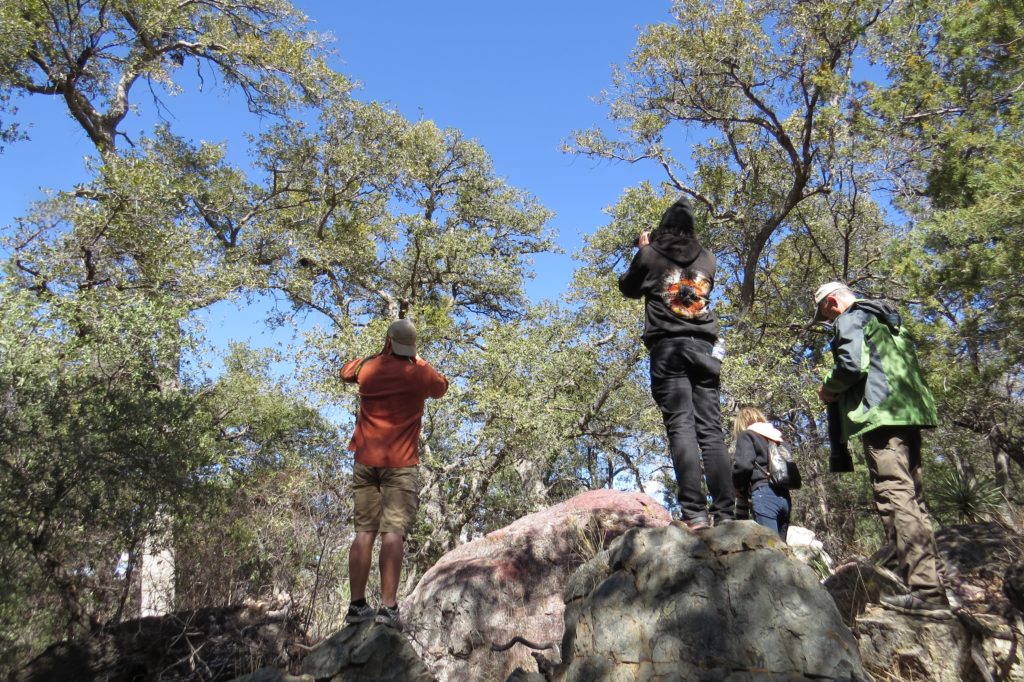
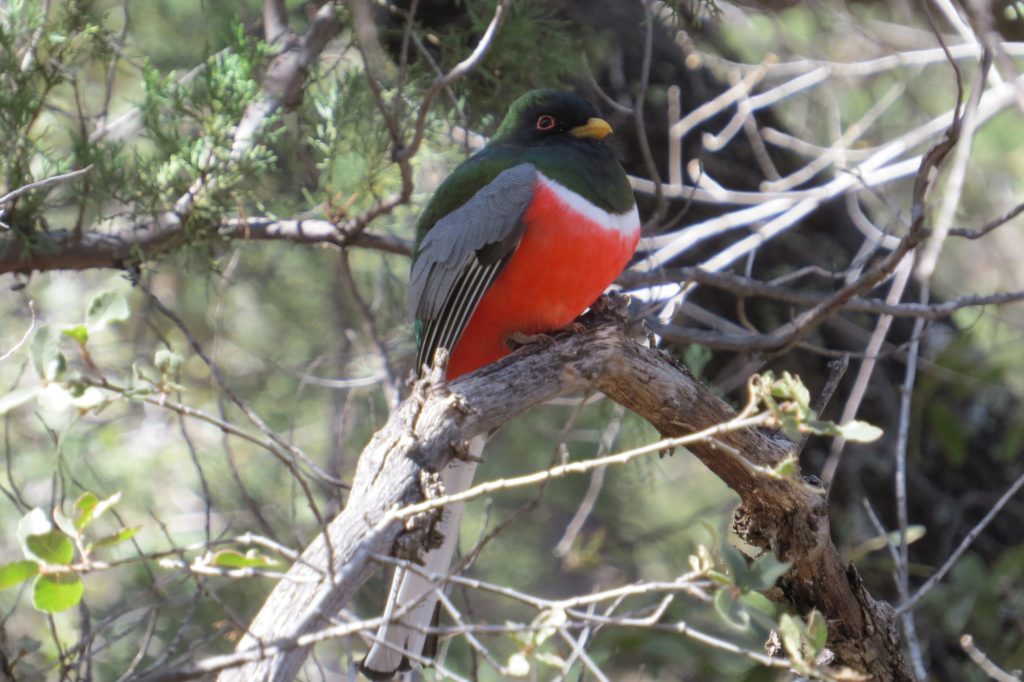
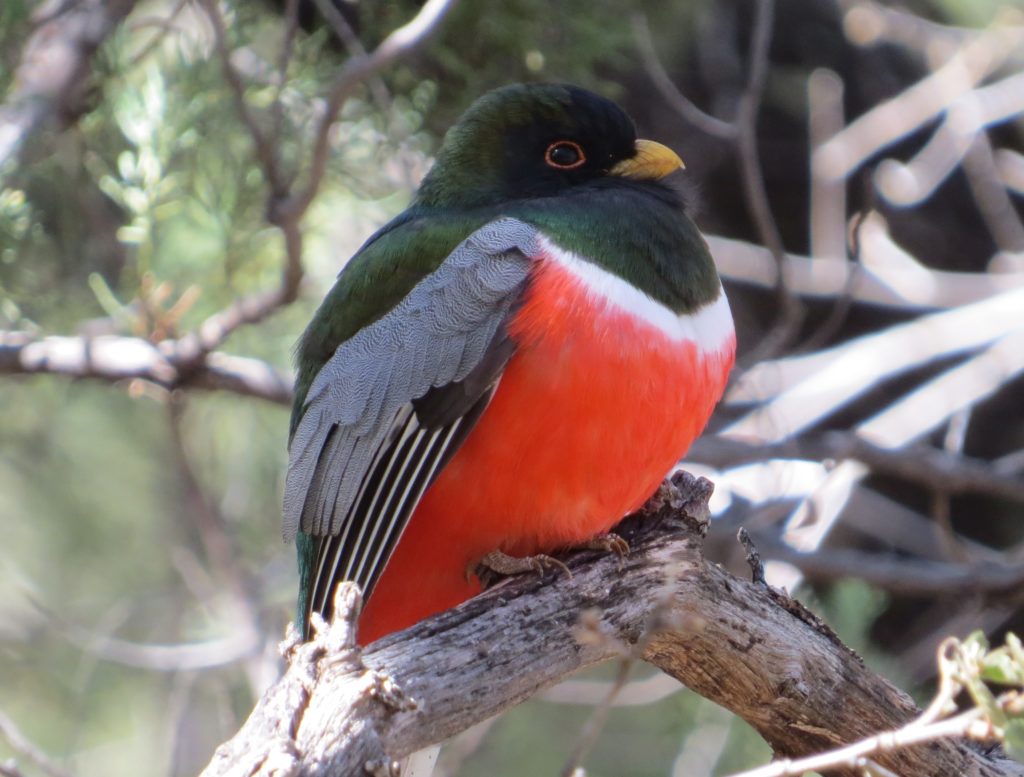 Obviously I had a hard time prying myself away from that bird, but the clock was ticking and the birding queue had a new line leader. Would I have liked to go to the Santa Rita Lodge and try to get a better look at a Blue-throated Hummingbird? Yes. Would I have liked to pick up some fresh Trogon gear at the gift shop? Also yes. But did I? Sadly, no. Time was slipping by, and the one bird I needed was in nearby Green Valley. Lawrence’s Goldfinches have irrupted this winter all over the place, and the Canoa Ranch was a stronghold for them. I needed to grab this bird while I could since this was the year for that bird. I have never seen reports of them in other years on my visits. But first we made a quick stop down by Proctor Road to look for a Black-capped Gnatcatcher. No dice, again.
Obviously I had a hard time prying myself away from that bird, but the clock was ticking and the birding queue had a new line leader. Would I have liked to go to the Santa Rita Lodge and try to get a better look at a Blue-throated Hummingbird? Yes. Would I have liked to pick up some fresh Trogon gear at the gift shop? Also yes. But did I? Sadly, no. Time was slipping by, and the one bird I needed was in nearby Green Valley. Lawrence’s Goldfinches have irrupted this winter all over the place, and the Canoa Ranch was a stronghold for them. I needed to grab this bird while I could since this was the year for that bird. I have never seen reports of them in other years on my visits. But first we made a quick stop down by Proctor Road to look for a Black-capped Gnatcatcher. No dice, again.
Thankfully, the LAGOs were where they were supposed to be, if only for a minute.
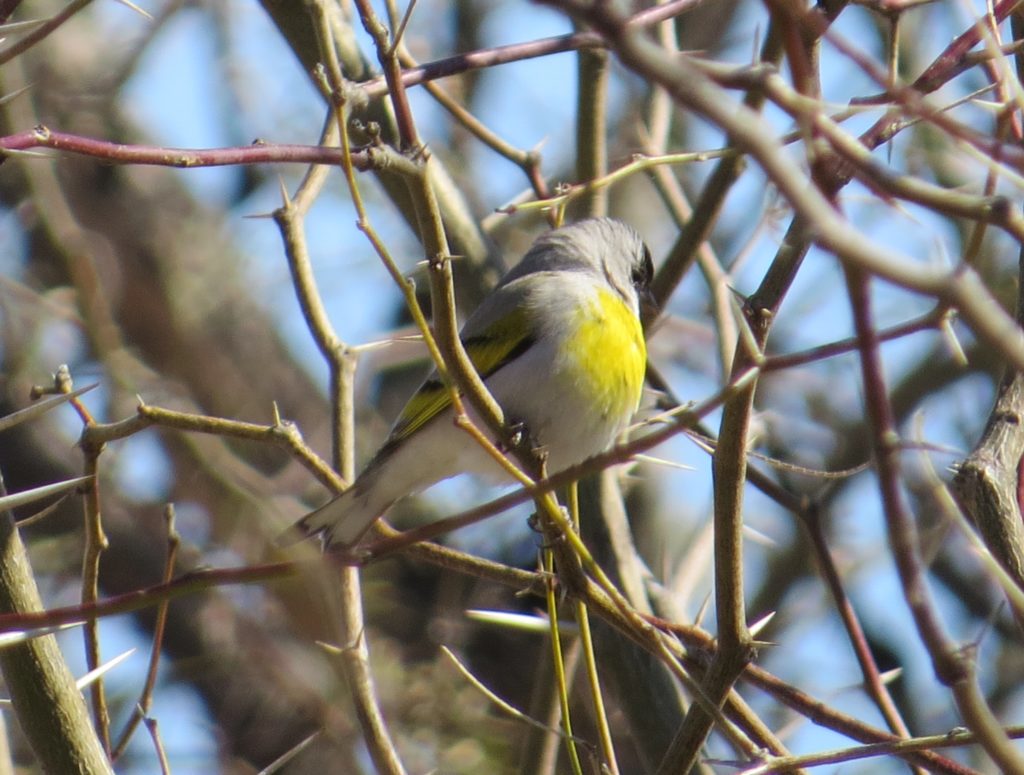 It was now time to bust back to Mom and Dad’s. Mom was putting on a spread for the birders and non-birders. By the end of the day we were all stuffed–with good food and good birds.
It was now time to bust back to Mom and Dad’s. Mom was putting on a spread for the birders and non-birders. By the end of the day we were all stuffed–with good food and good birds.
We scarcely had time to sleep off the food/bird coma as Dad, Gordon, Tommy, and I had a date with destiny early the next morning. After putting it off for many years, it was finally time to reconcile my staggering AZ Thrasher deficit. I was finally going to the Thrasher Spot, a place west of Phoenix known by every serious birder. It’s even marked on Google Maps. Thrashers had never been my thing as I always opted for the flashier and owlier birds of AZ, so it never made it to the top of the queue. But now with five potential life birds out there with practically nothing else for me to pursue in the state, I was eager to finally go. I’m glad I saved this little cache of lifers for so long. I don’t think I would have appreciated it nearly as much in my early birding career.
Now most people might look at this and see a wasteland with random fire pits and broken plastic chairs with the rising steam from the Palo Verde nuclear plant as a backdrop, steam from a plant not cooled by a natural body of water but by treated sewage from nearby municipalities… But a birder sees a beautiful landscape, full of opportunity. For at the center of this photo sits the lightly colored LeConte’s Thrasher, singing his song above the scrub.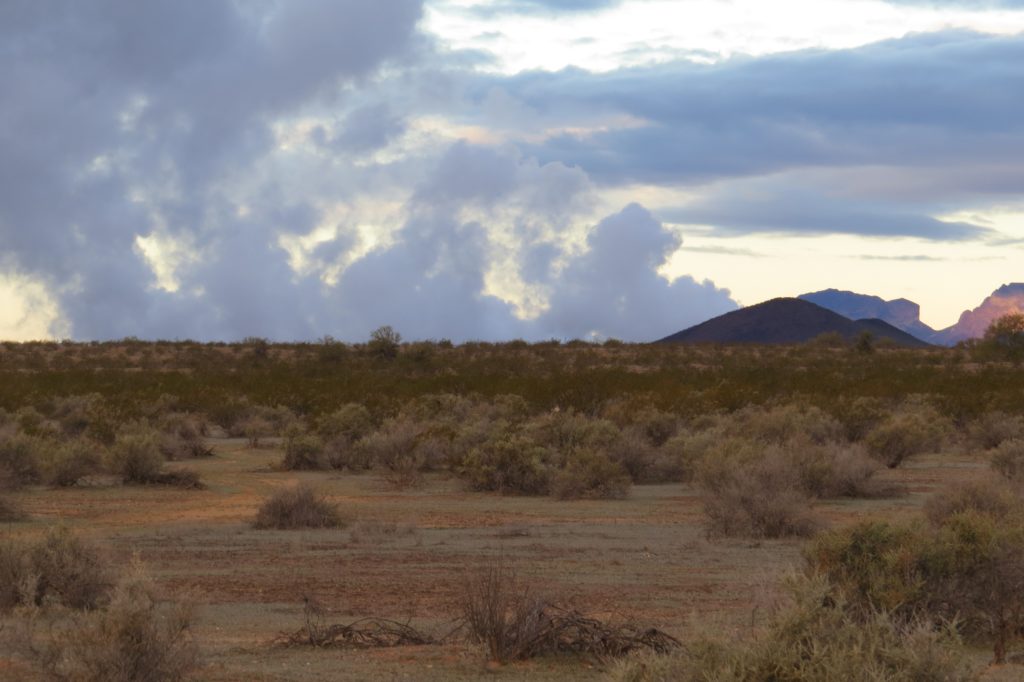
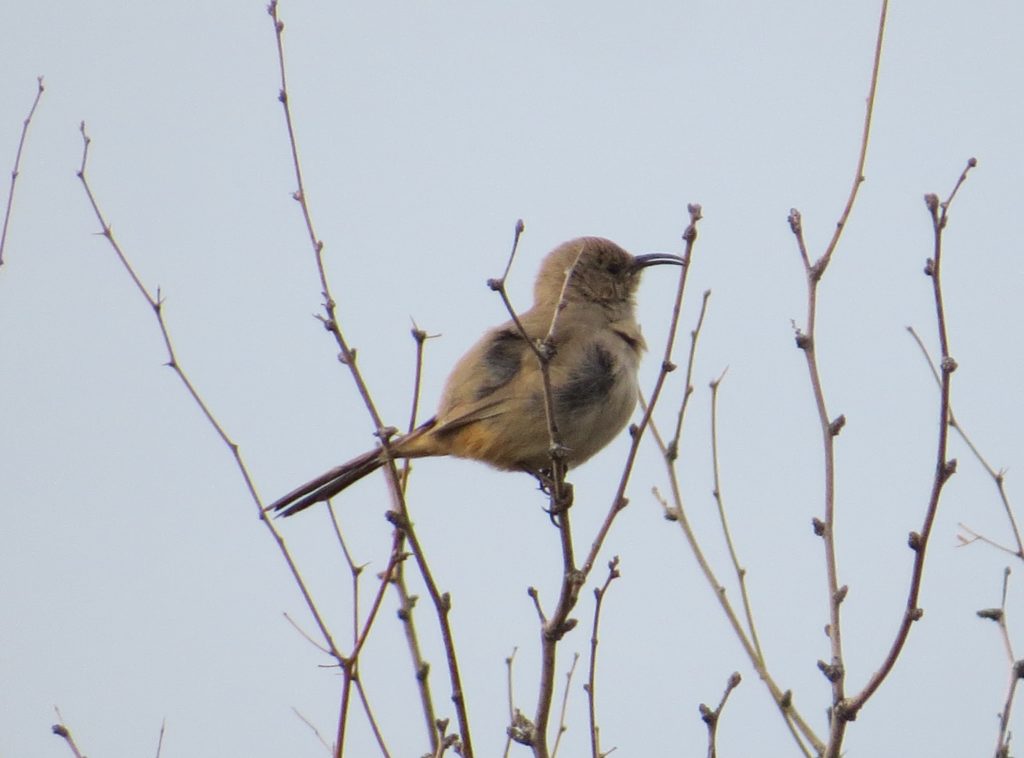 It was one lifer down with four to go. Two thoughts struck me on my first visit to the Thrasher Spot. One was that I couldn’t believe how flat the ground was.
It was one lifer down with four to go. Two thoughts struck me on my first visit to the Thrasher Spot. One was that I couldn’t believe how flat the ground was.
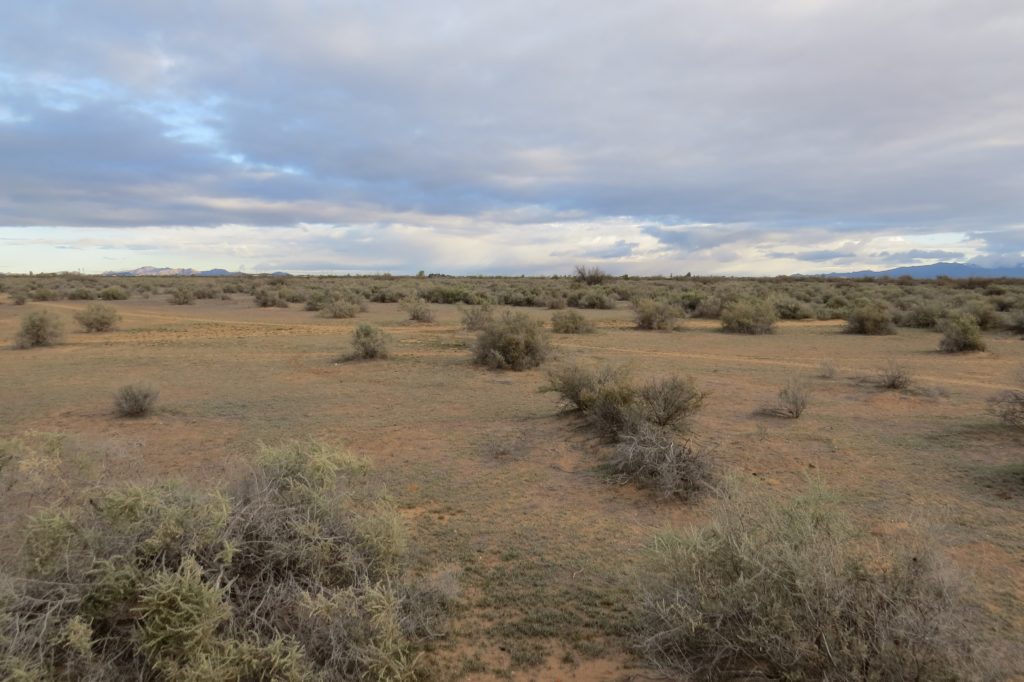
The other was that I had an expectation of easy lifering in short order with minimal walking. From other blogs I’ve read over the years, I had this thought that we’d just walk a short ways and crush all the Thrashers and the two Sparrows in the same bush. I couldn’t have been more wrong. At least the walking was easy.
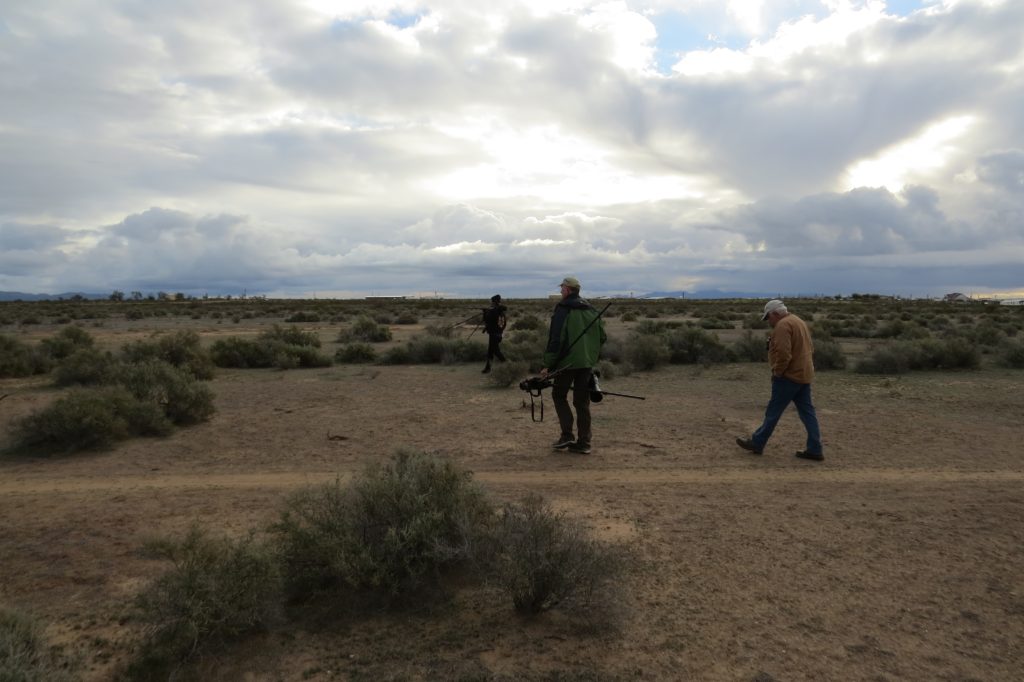 Though not completely unexpected, there were sightings of a couple different old men wandering alone and somewhat aimlessly trying to tally some Thrasher lifers for themselves. At least I wasn’t as late to the party as these guys. The sparse saltbush- studded landscape was not only good habitat for the occasional septagenerian but also for numerous Sagebrush Sparrows (lifer) that would run with tails held high from bush to bush. I was shocked to learn they didn’t respond to pishing. What kind of Sparrows are these anyway? Good looks at these birds and the others were tough to come by. Pressing on and going wider in our search efforts, we eventually locked up a Bendire’s Thrasher lifer.
Though not completely unexpected, there were sightings of a couple different old men wandering alone and somewhat aimlessly trying to tally some Thrasher lifers for themselves. At least I wasn’t as late to the party as these guys. The sparse saltbush- studded landscape was not only good habitat for the occasional septagenerian but also for numerous Sagebrush Sparrows (lifer) that would run with tails held high from bush to bush. I was shocked to learn they didn’t respond to pishing. What kind of Sparrows are these anyway? Good looks at these birds and the others were tough to come by. Pressing on and going wider in our search efforts, we eventually locked up a Bendire’s Thrasher lifer.
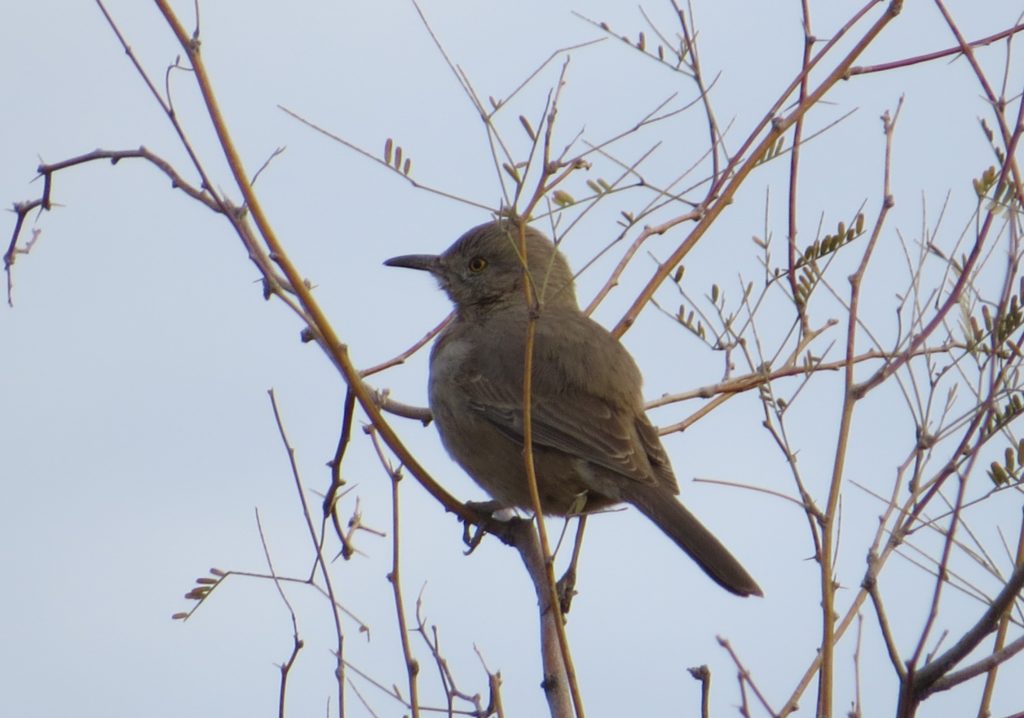 By this time, the sun was finally showing itself and warming up our frozen bodies. The birds seemed to enjoy it too as we finally started to get some good looks of perching Sagebrush Sparrows.
By this time, the sun was finally showing itself and warming up our frozen bodies. The birds seemed to enjoy it too as we finally started to get some good looks of perching Sagebrush Sparrows.
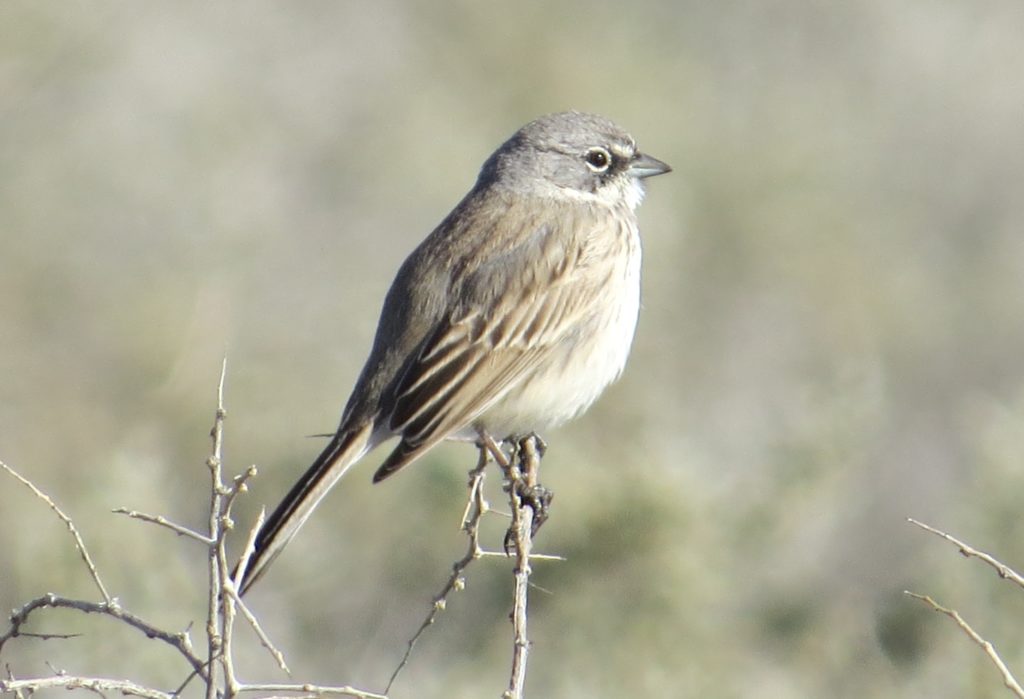 Tommy was able to spy the more rare doppelganger Bell’s Sparrow to make my fourth lifer of five for the morning. The Bell’s is told apart from the Sagebrush Sparrow by its bolder, thicker malar stripe and its unstreaked back.
Tommy was able to spy the more rare doppelganger Bell’s Sparrow to make my fourth lifer of five for the morning. The Bell’s is told apart from the Sagebrush Sparrow by its bolder, thicker malar stripe and its unstreaked back.
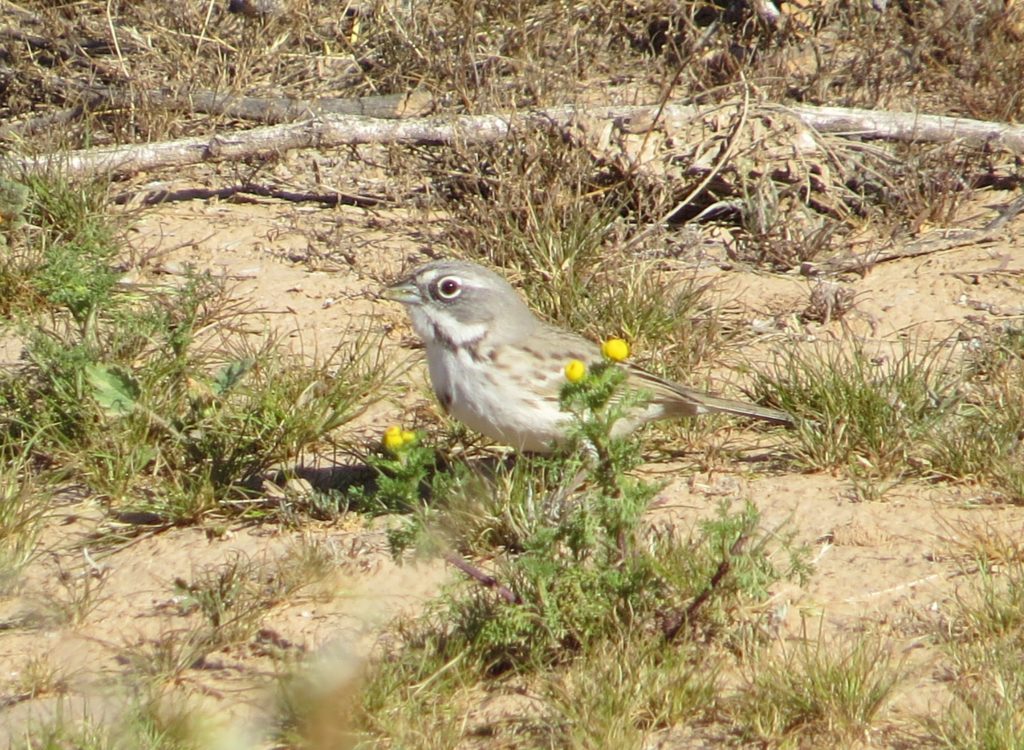
Despite our best efforts and lots more walking, we could not rustle up a Crissal Thrasher. It was time to head out and leave the Thrasher Spot behind. It had been a satisfying experience. On the way home there were a couple more pitstops. Gordon knew just where to go to get me a Common Ground-Dove lifer at a large stand of overgrown palm trees.
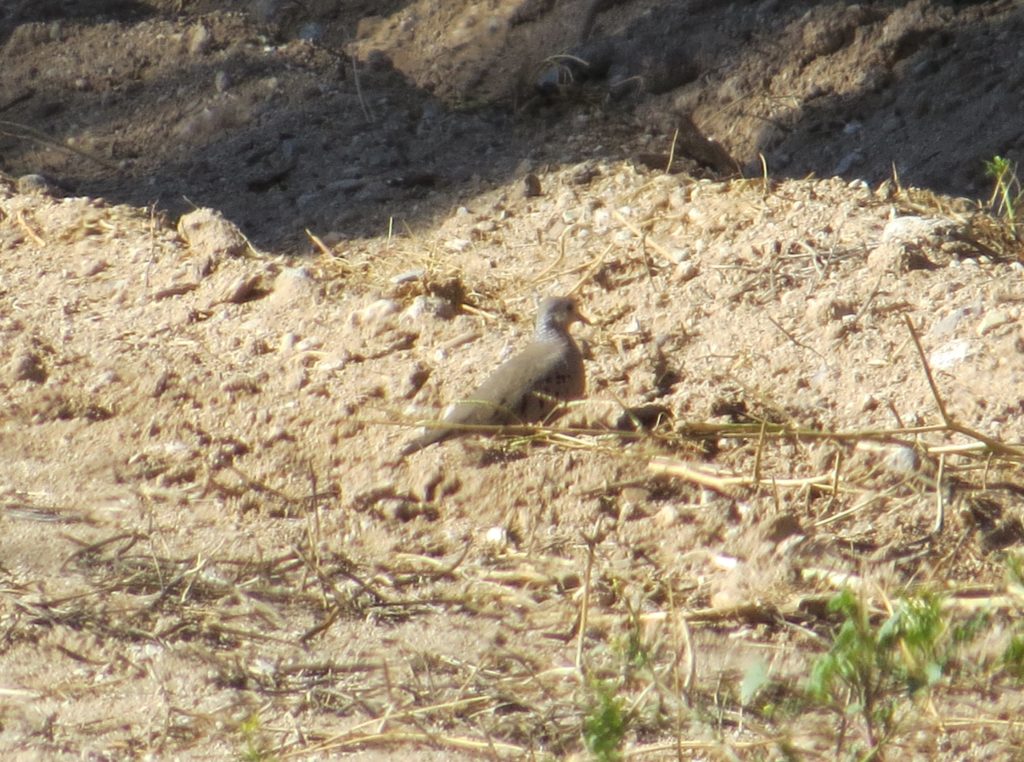 I repaid Gordon by spotting a raptor flying over us. I casually asked the guys what it was since they were making an eBird checklist. Turns out it was a Crested Caracara, a county bird for Gordon and only the second one Tommy has seen in Maricopa County.
I repaid Gordon by spotting a raptor flying over us. I casually asked the guys what it was since they were making an eBird checklist. Turns out it was a Crested Caracara, a county bird for Gordon and only the second one Tommy has seen in Maricopa County.
Our next and final stop was a dead end road that was great for all kinds of birds, including the occasional Burrower (my Maricopa BUOW).
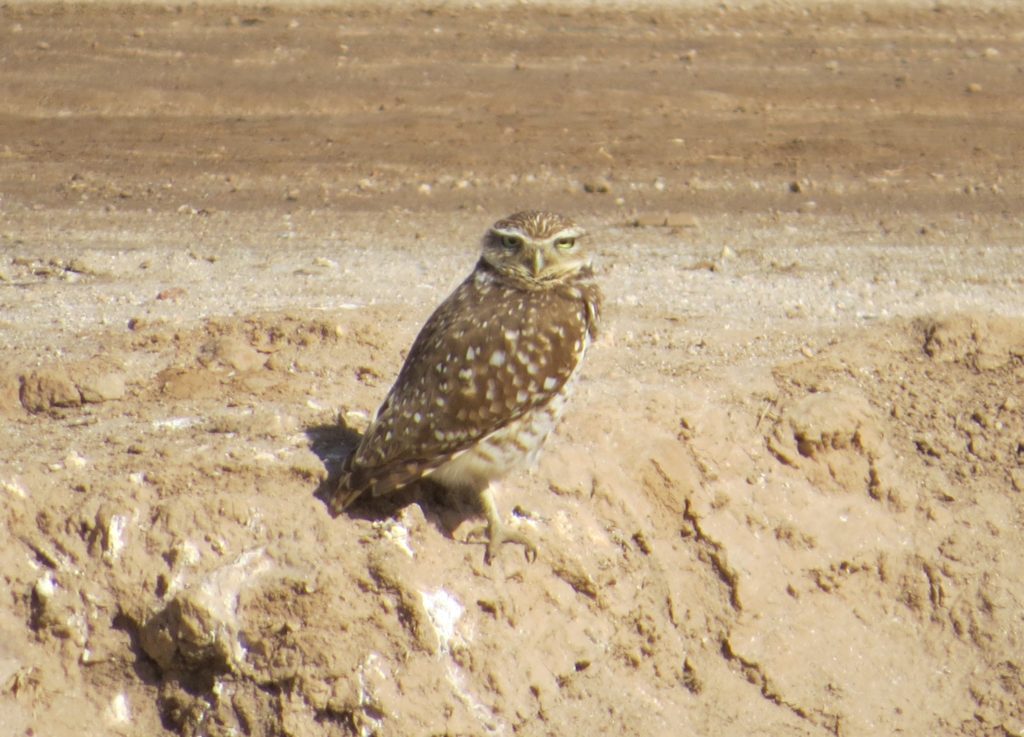 At the end of the dead end road, Tomy finally heard it–a Crissal Thrasher. Unfortunately no views were had of the true curve-billed Thrasher. So it goes. It’s hard to have any misgivings or least find anyone sympathetic whining about not seeing a CRTH when the birding had been sooo good. What’s next, Arizona? After 123 life birds in eight trips, I seriously have no idea and no plans.
At the end of the dead end road, Tomy finally heard it–a Crissal Thrasher. Unfortunately no views were had of the true curve-billed Thrasher. So it goes. It’s hard to have any misgivings or least find anyone sympathetic whining about not seeing a CRTH when the birding had been sooo good. What’s next, Arizona? After 123 life birds in eight trips, I seriously have no idea and no plans.

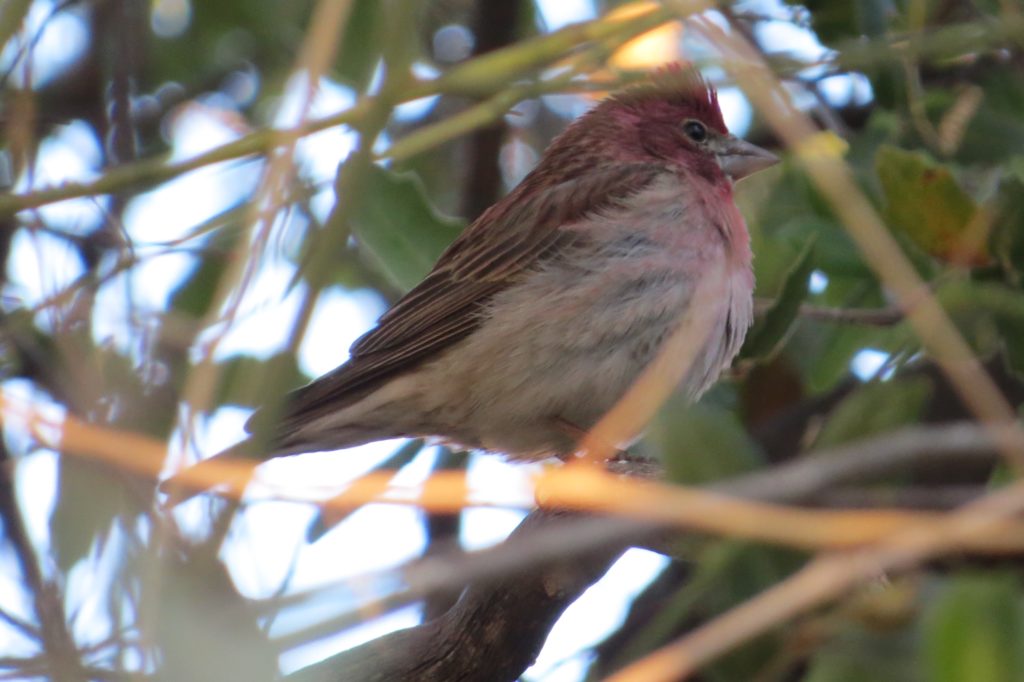
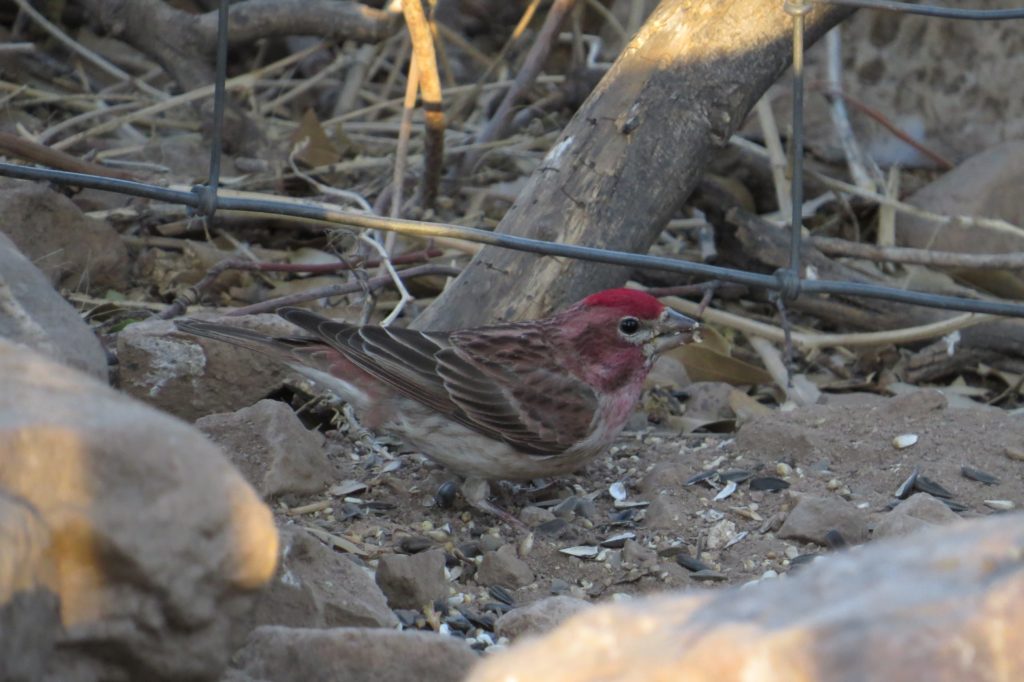 We barely had any time to enjoy the Cassin’s Finch warm-up band before the real head-banging act materialized suddenly, shocking and awing a crowd too afraid to move or breathe, lest the show be over for good.
We barely had any time to enjoy the Cassin’s Finch warm-up band before the real head-banging act materialized suddenly, shocking and awing a crowd too afraid to move or breathe, lest the show be over for good.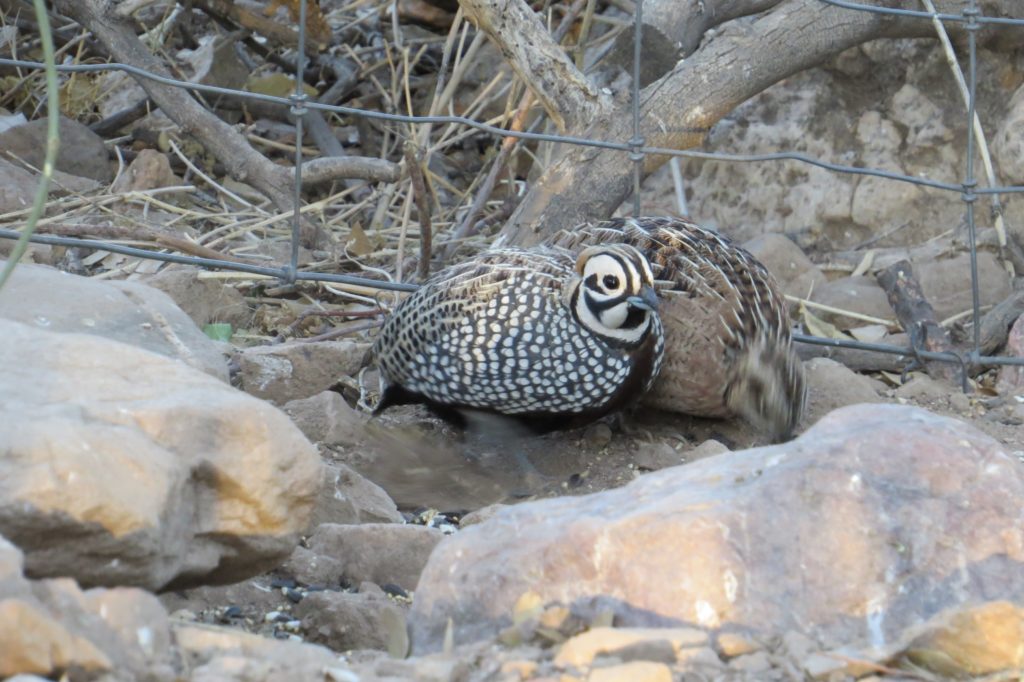
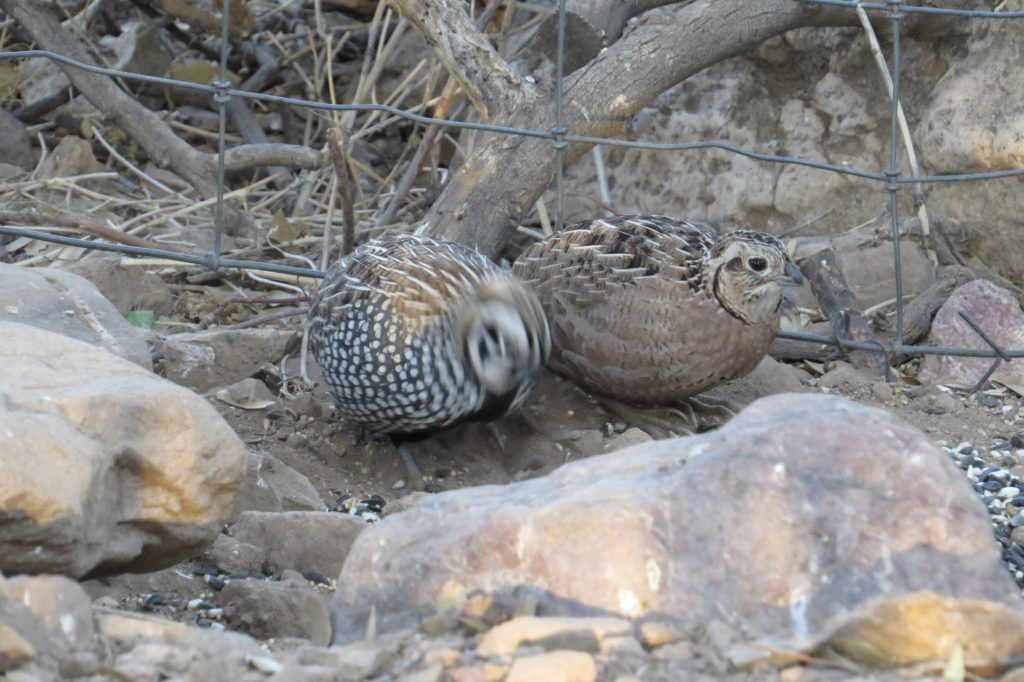
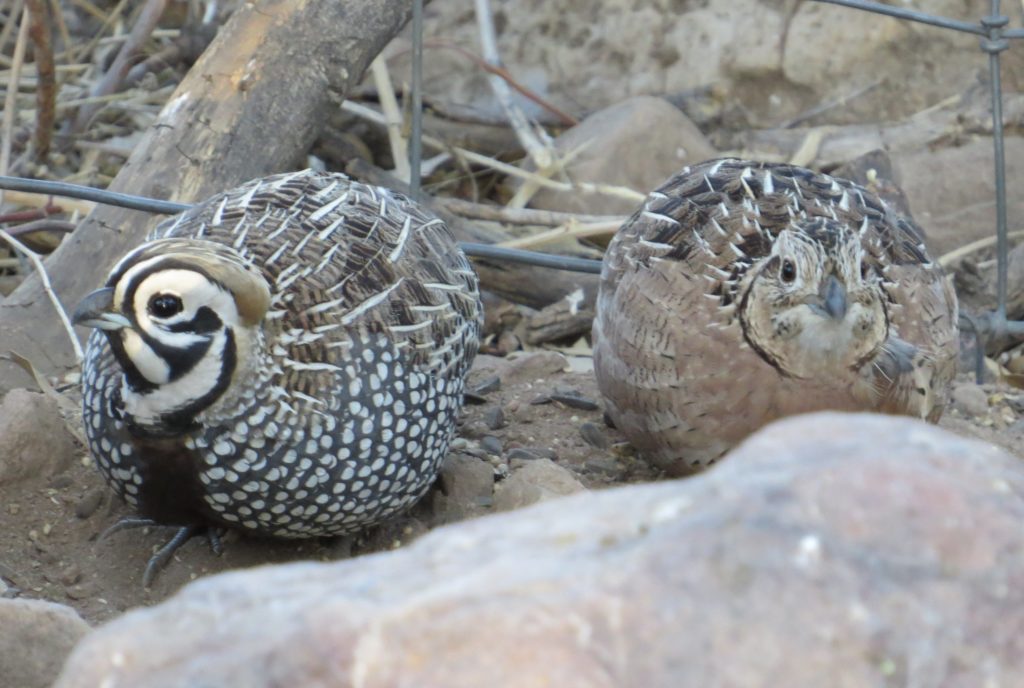
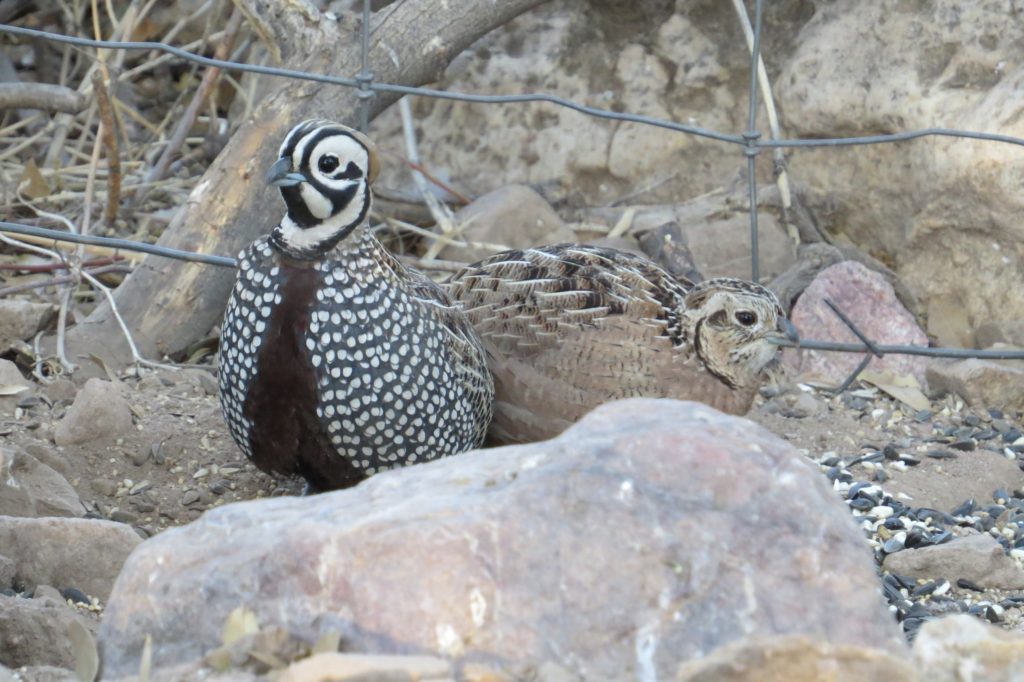
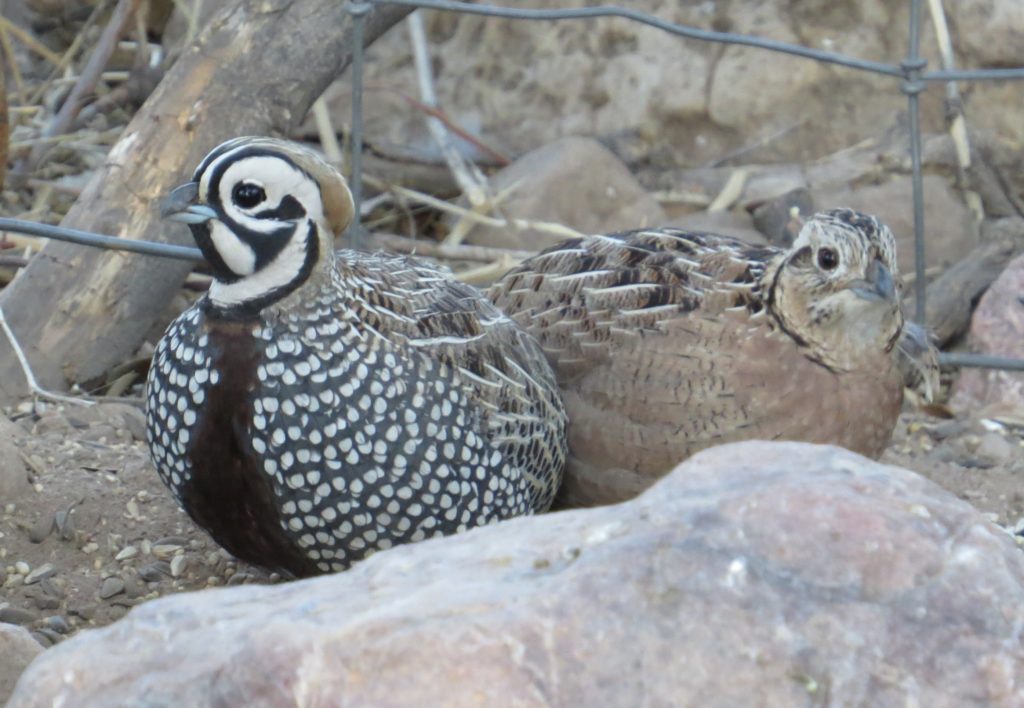 It was not the Ferruginous Pygmy-Owl I craved, but the Montezuma Quail was one of those birds that can make an entire trip. Not only was it a key lifer for Steve and me, but this was Tommy’s first time photographing this species. It was a high for the entire group.
It was not the Ferruginous Pygmy-Owl I craved, but the Montezuma Quail was one of those birds that can make an entire trip. Not only was it a key lifer for Steve and me, but this was Tommy’s first time photographing this species. It was a high for the entire group.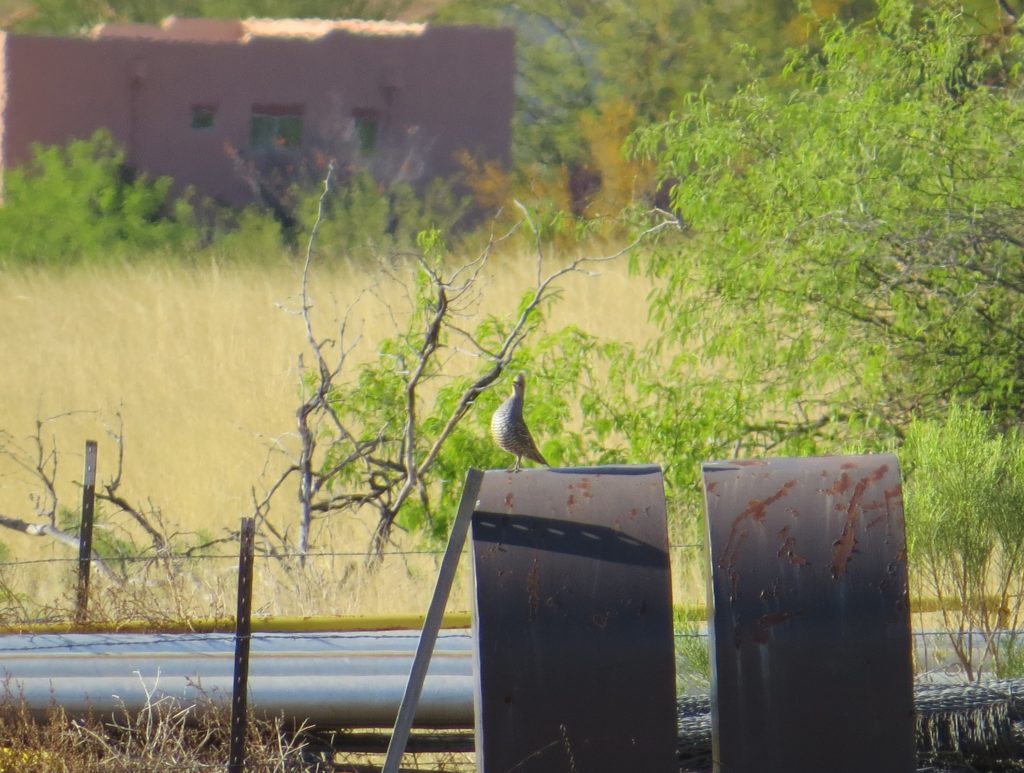 On our to-do list was to hit up Miller Canyon next to try to get Steve a Spotted Owl lifer, among others. This whole time that Fan-tailed Warbler report was still on all of our minds. Strangely, there had been no word the previous day or this morning. It was odd considering it was such a mega rarity. I finally heard from Chris Rohrer that the Warbler had been seen Saturday by numerous people AND that it was still there this morning. We decided to do Miller Canyon as planned since we were so close. What hadn’t been decided yet was if we were going after the Warbler. A chase to the Chiricahuas in far southeastern AZ would mean the FEPO plans would have to be nixed–we had originally planned to try for FEPO again Sunday night and Monday morning before we flew out. Though the Warbler would have been a lifer for Tommy, he graciously said the decision was mine to continue with the FEPO plans or abandon them. Steve also said it didn’t matter to him as he was enjoying a plethora of new birds wherever we went. As we hiked up Miller Canyon, I didn’t know what to do. It made it tough for me to enjoy some of the canyon’s residents, many of which were lifers for Steve.
On our to-do list was to hit up Miller Canyon next to try to get Steve a Spotted Owl lifer, among others. This whole time that Fan-tailed Warbler report was still on all of our minds. Strangely, there had been no word the previous day or this morning. It was odd considering it was such a mega rarity. I finally heard from Chris Rohrer that the Warbler had been seen Saturday by numerous people AND that it was still there this morning. We decided to do Miller Canyon as planned since we were so close. What hadn’t been decided yet was if we were going after the Warbler. A chase to the Chiricahuas in far southeastern AZ would mean the FEPO plans would have to be nixed–we had originally planned to try for FEPO again Sunday night and Monday morning before we flew out. Though the Warbler would have been a lifer for Tommy, he graciously said the decision was mine to continue with the FEPO plans or abandon them. Steve also said it didn’t matter to him as he was enjoying a plethora of new birds wherever we went. As we hiked up Miller Canyon, I didn’t know what to do. It made it tough for me to enjoy some of the canyon’s residents, many of which were lifers for Steve.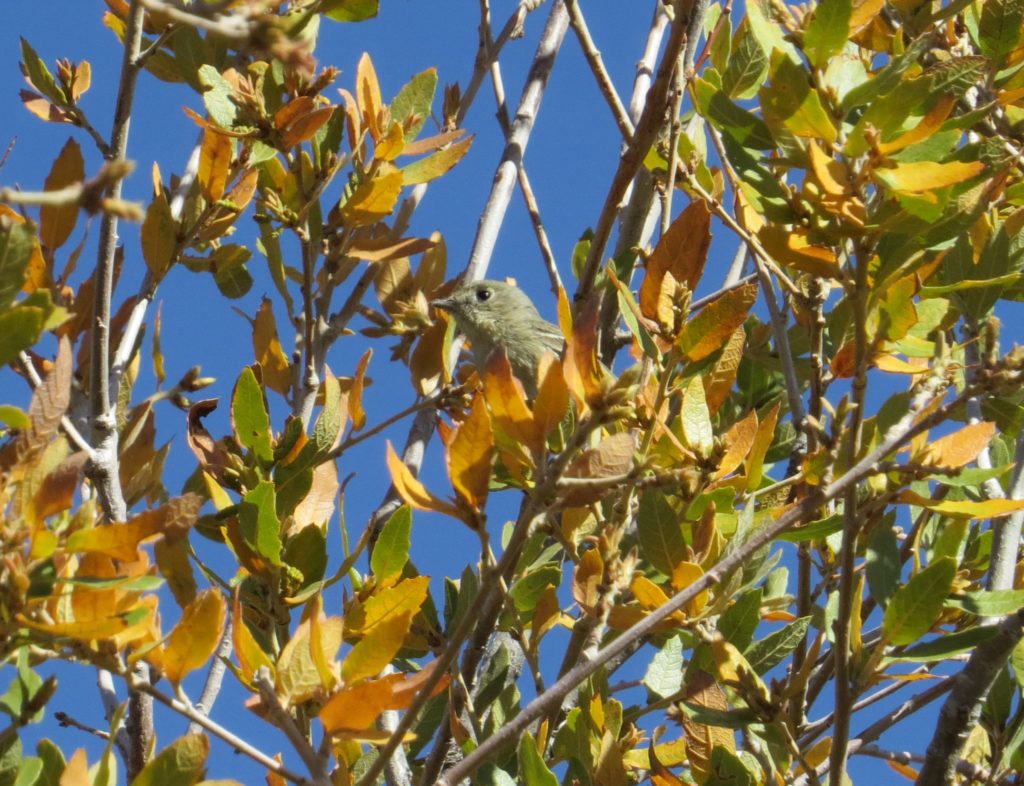
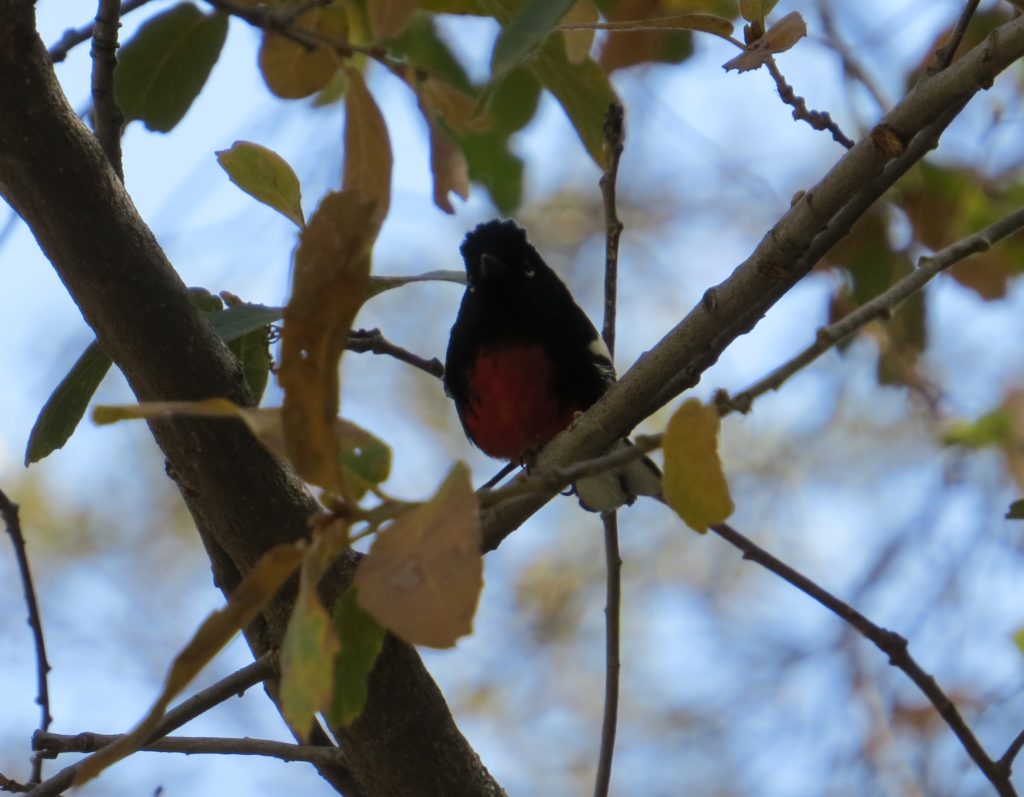
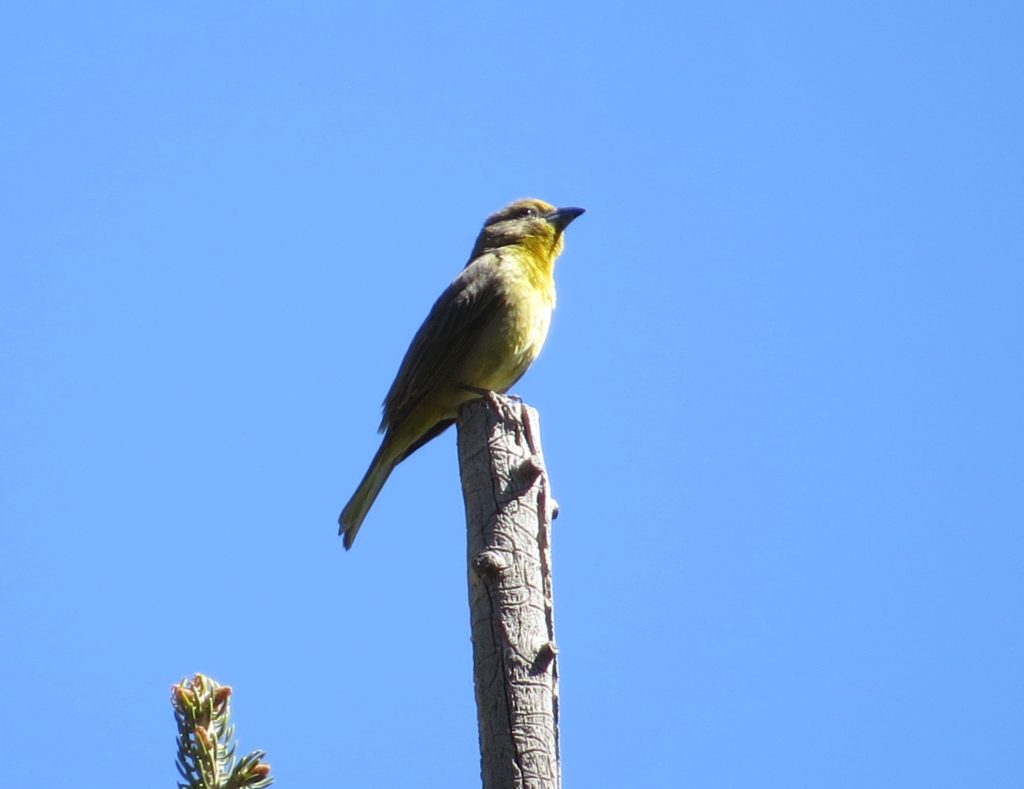
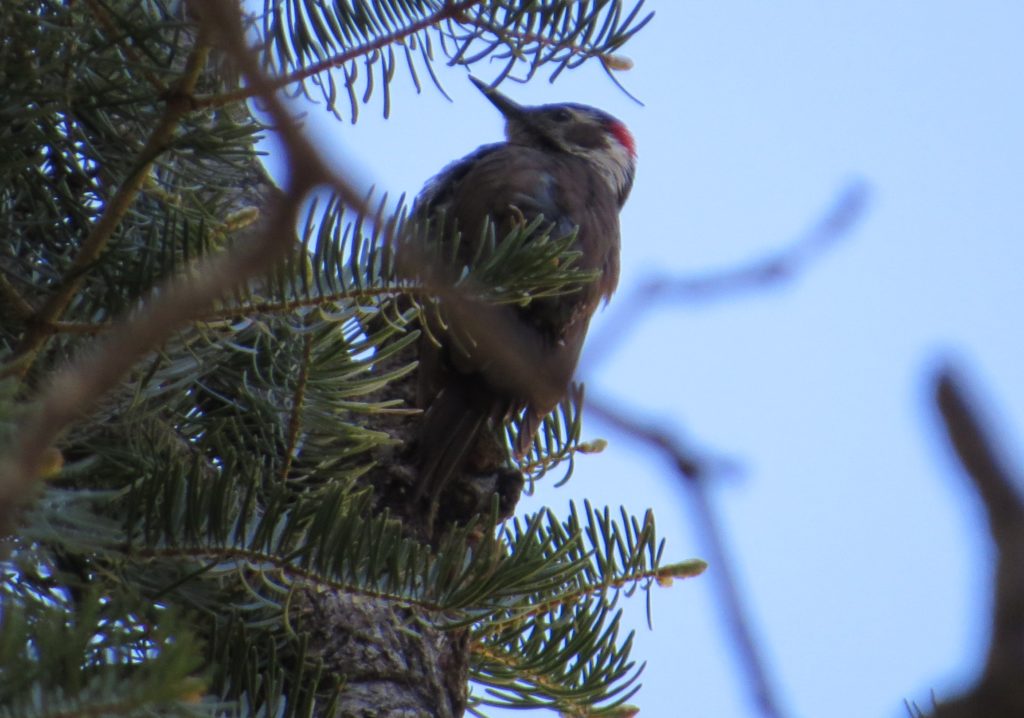
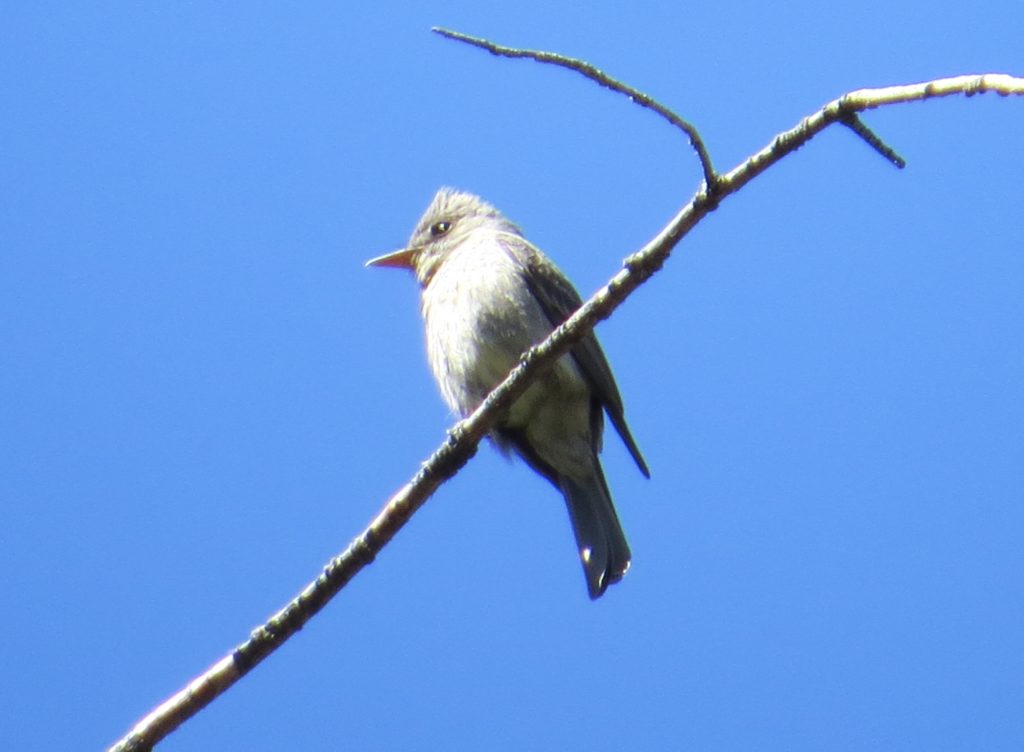
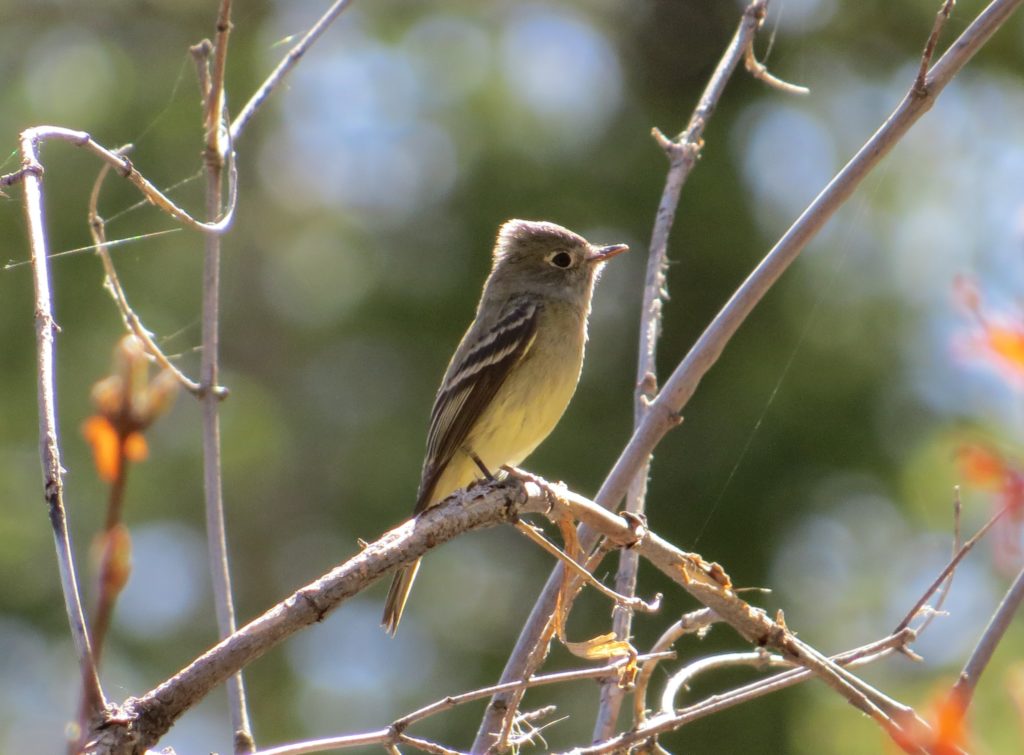 Another ID question prolonged the decision. Anybody know what species this lizard is?
Another ID question prolonged the decision. Anybody know what species this lizard is?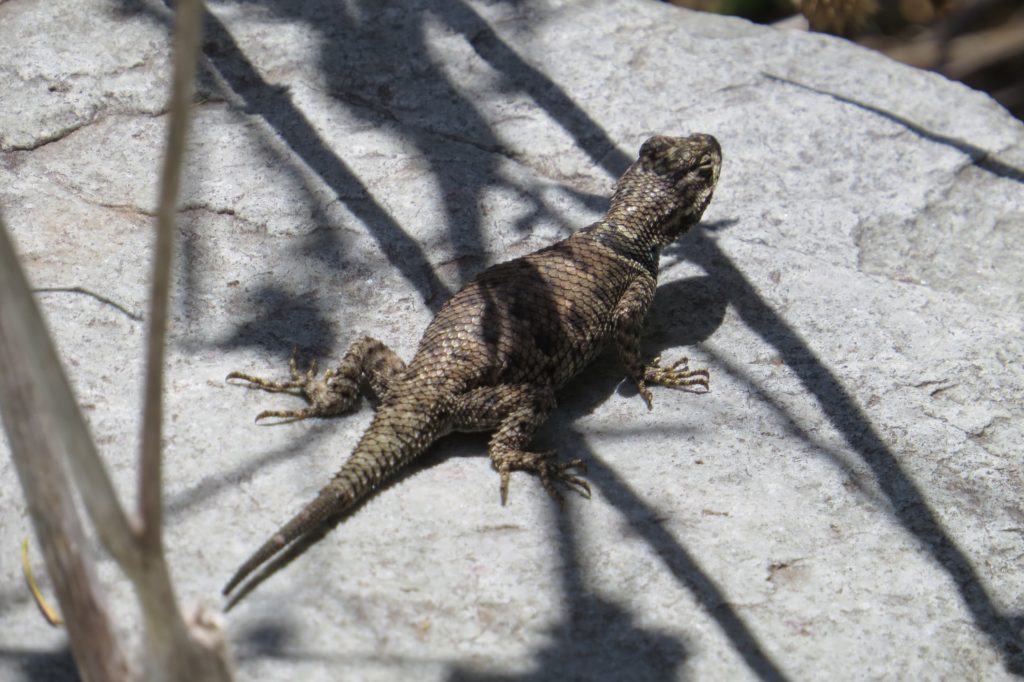
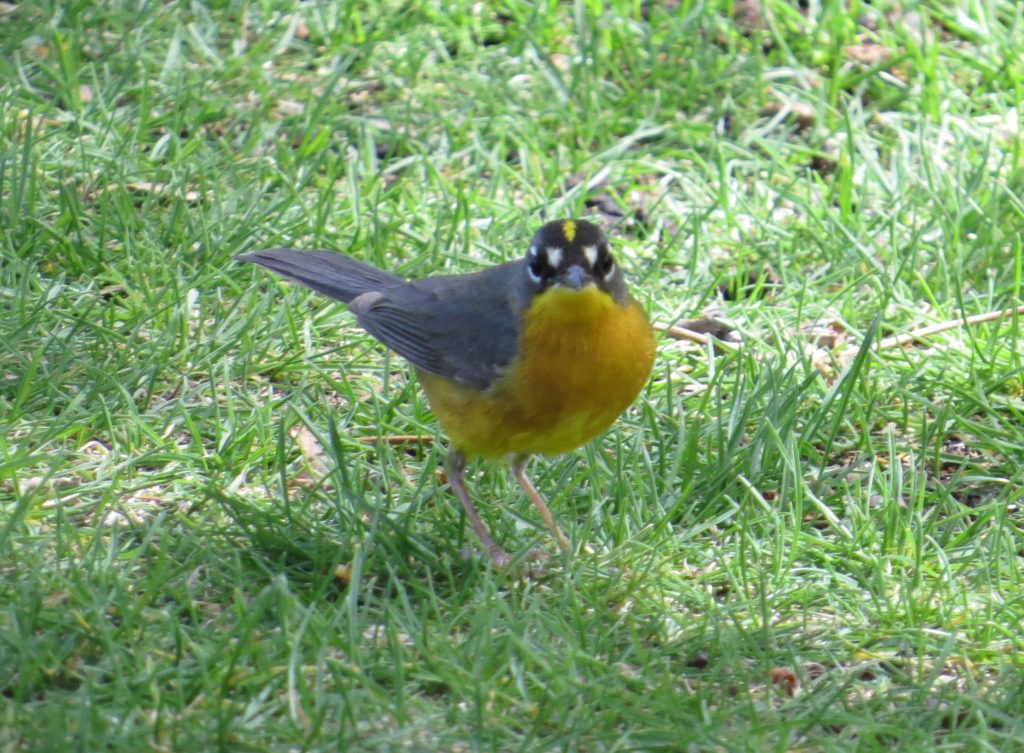
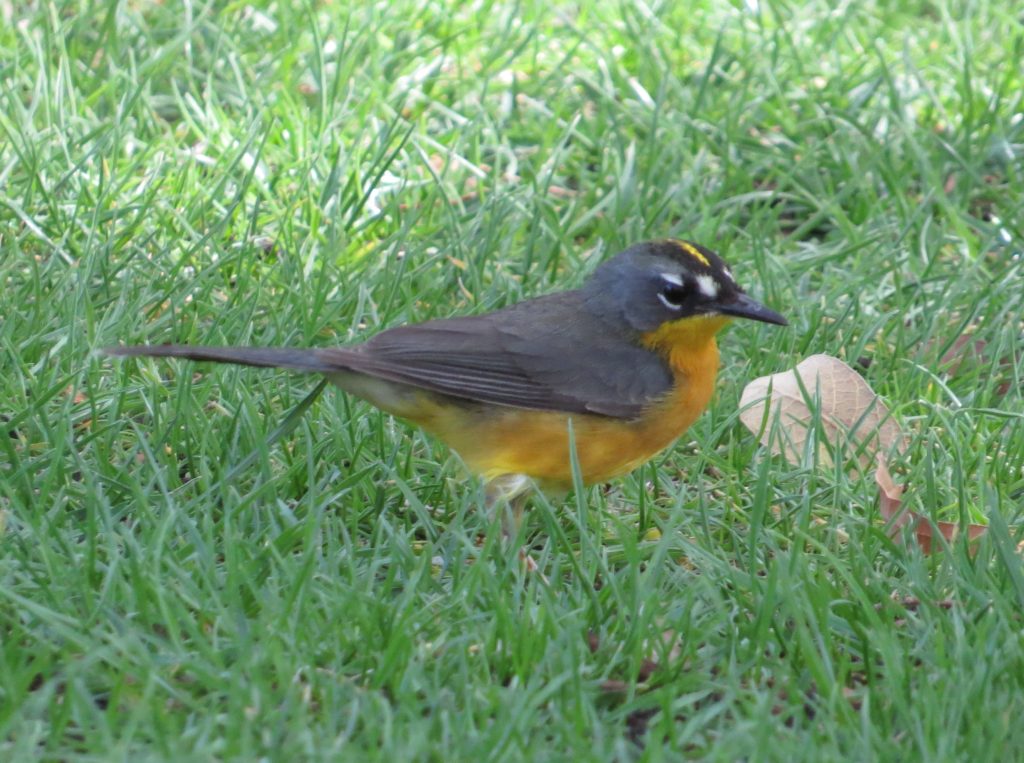 If the Fan-tailed Warbler weren’t enough, the regulars of Rick’s yard were worthy of their own awe. The place was positively buzzing with bird activity. Among the many species of birds were a couple more lifers for me, the bulky Blue-throated Hummingbird and a Calliope Hummingbird. Both were quick sightings that didn’t allow for photos. This gorgeous male Scott’s Oriole was cooperative, though. It was a nice redemptive photo from my lifer butt-shot in Hunter Canyon a few years ago.
If the Fan-tailed Warbler weren’t enough, the regulars of Rick’s yard were worthy of their own awe. The place was positively buzzing with bird activity. Among the many species of birds were a couple more lifers for me, the bulky Blue-throated Hummingbird and a Calliope Hummingbird. Both were quick sightings that didn’t allow for photos. This gorgeous male Scott’s Oriole was cooperative, though. It was a nice redemptive photo from my lifer butt-shot in Hunter Canyon a few years ago.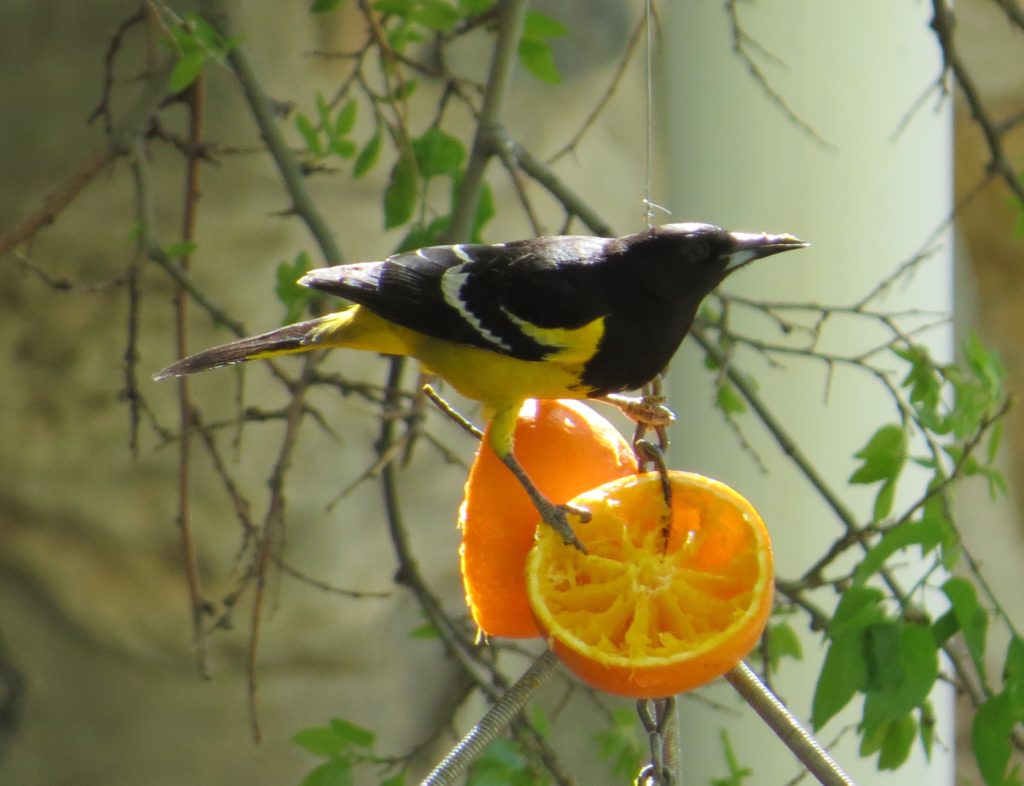 While we were at Rick’s yard visiting with Rick and his wife, there was another young birder there from New Mexico. I forget his name, but it was this kid’s 14th birthday, and his parents had driven him several hundred miles for his birthday to see this mega rarity. Cool parents, huh? The kid was no slouch birder either as he was identifying birds left and right. In fact, as we were leaving, he spotted two raptors overhead and announced they were Zone-tailed Hawks! That was a lifer for Steve and me and one that we were hoping for.
While we were at Rick’s yard visiting with Rick and his wife, there was another young birder there from New Mexico. I forget his name, but it was this kid’s 14th birthday, and his parents had driven him several hundred miles for his birthday to see this mega rarity. Cool parents, huh? The kid was no slouch birder either as he was identifying birds left and right. In fact, as we were leaving, he spotted two raptors overhead and announced they were Zone-tailed Hawks! That was a lifer for Steve and me and one that we were hoping for.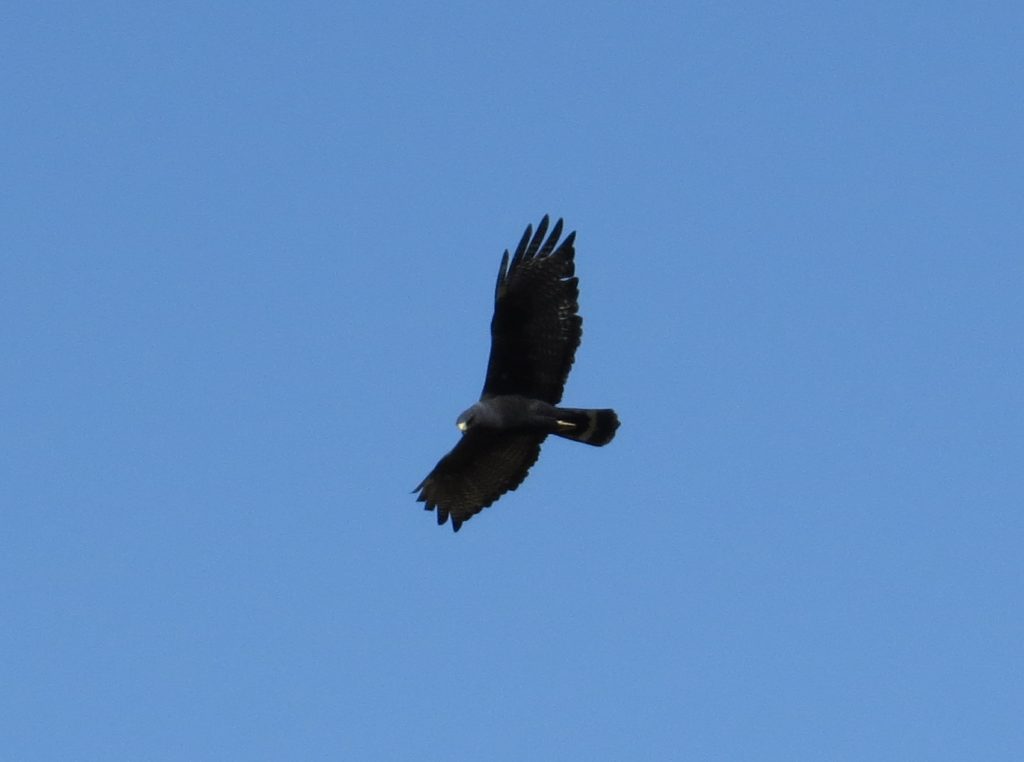 With one Mexican Warbler under our belts, it was time to go after another that had been showing in the Chiricahuas, the Slate-throated Redstart. I had tried for this ABA Code-3 a few years ago in Hunter Canyon. We barely had enough daylight to get all the way up and over the Chiris to Pinery Canyon where it had been seen. The views along the way were spectacular even if the road was a bit stressful with its curves and steep drop-offs. I’m glad Steve was driving.
With one Mexican Warbler under our belts, it was time to go after another that had been showing in the Chiricahuas, the Slate-throated Redstart. I had tried for this ABA Code-3 a few years ago in Hunter Canyon. We barely had enough daylight to get all the way up and over the Chiris to Pinery Canyon where it had been seen. The views along the way were spectacular even if the road was a bit stressful with its curves and steep drop-offs. I’m glad Steve was driving.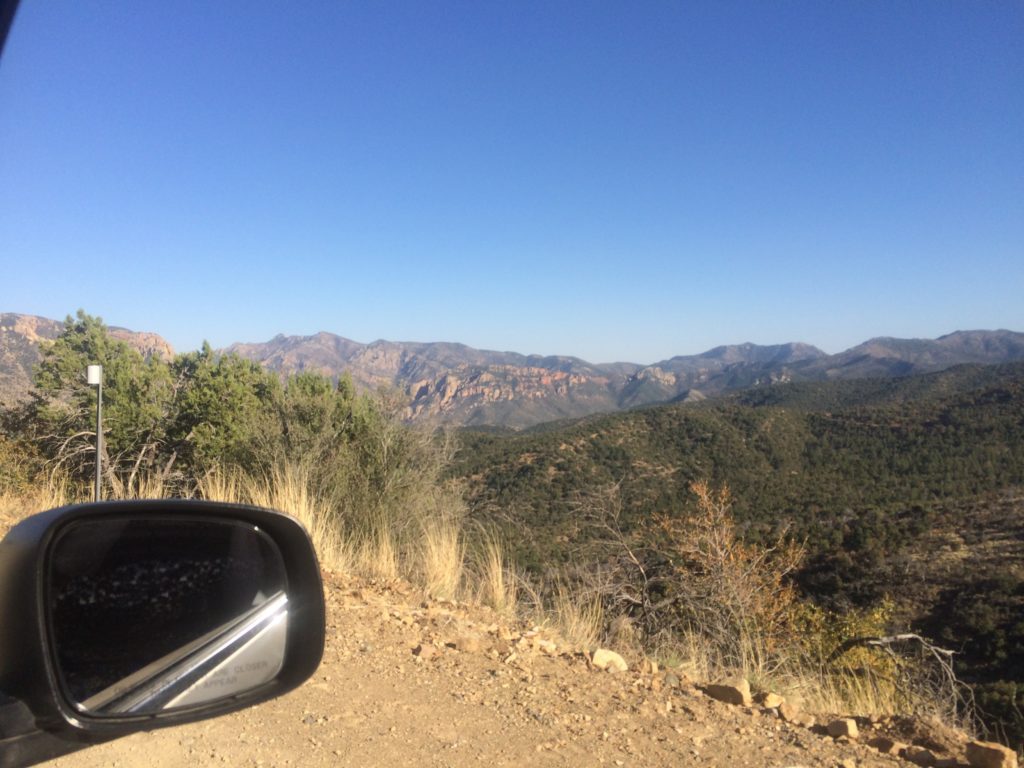
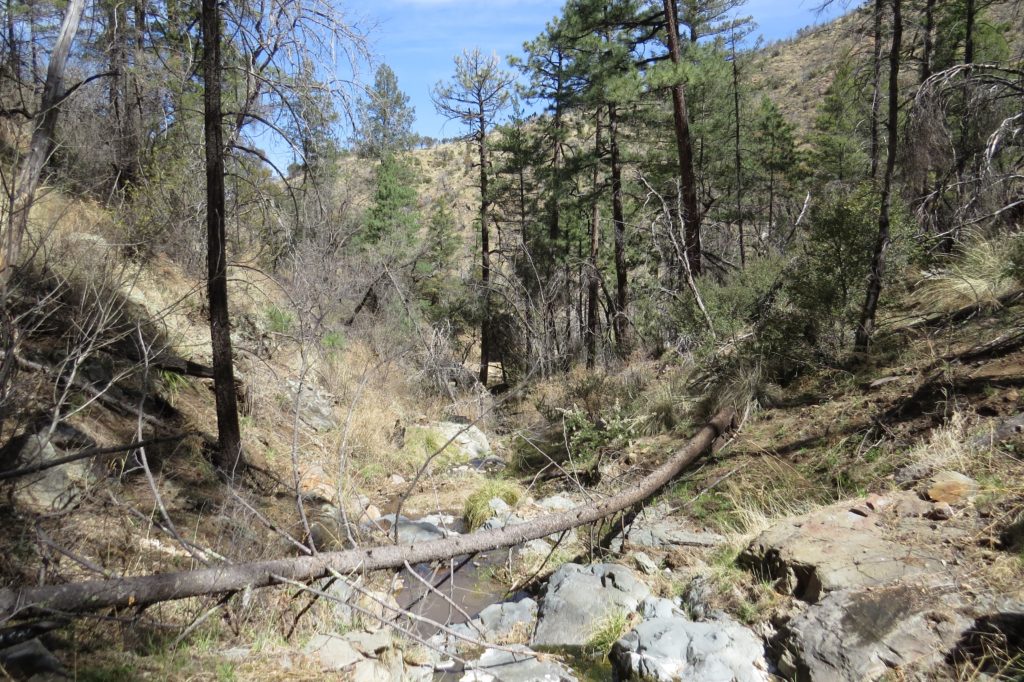
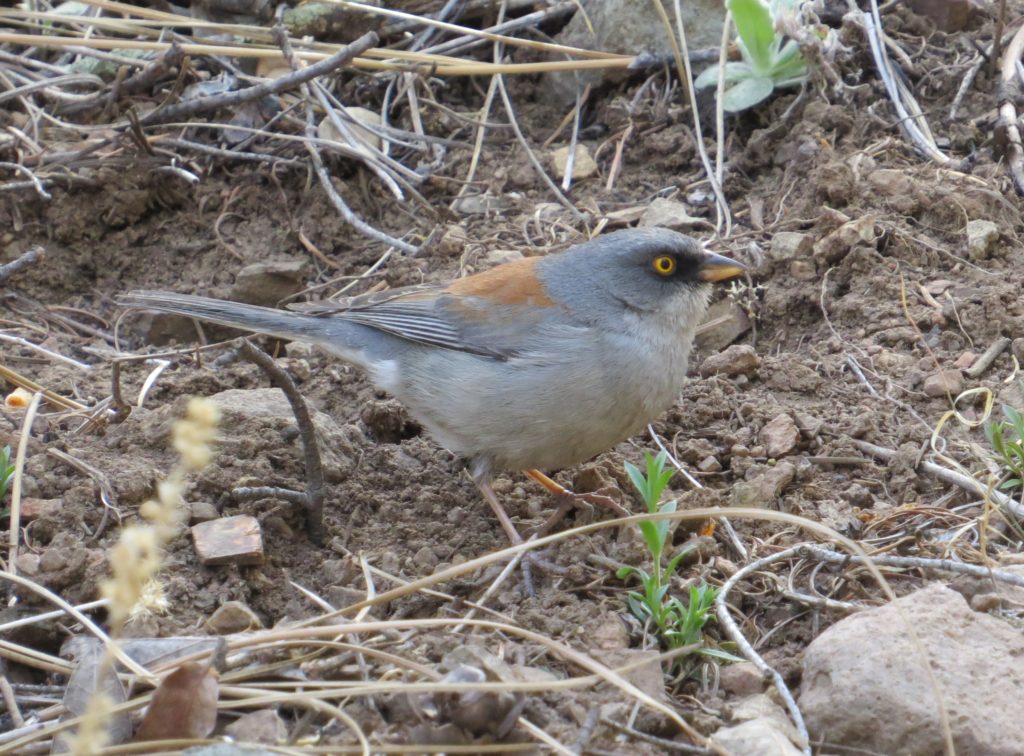
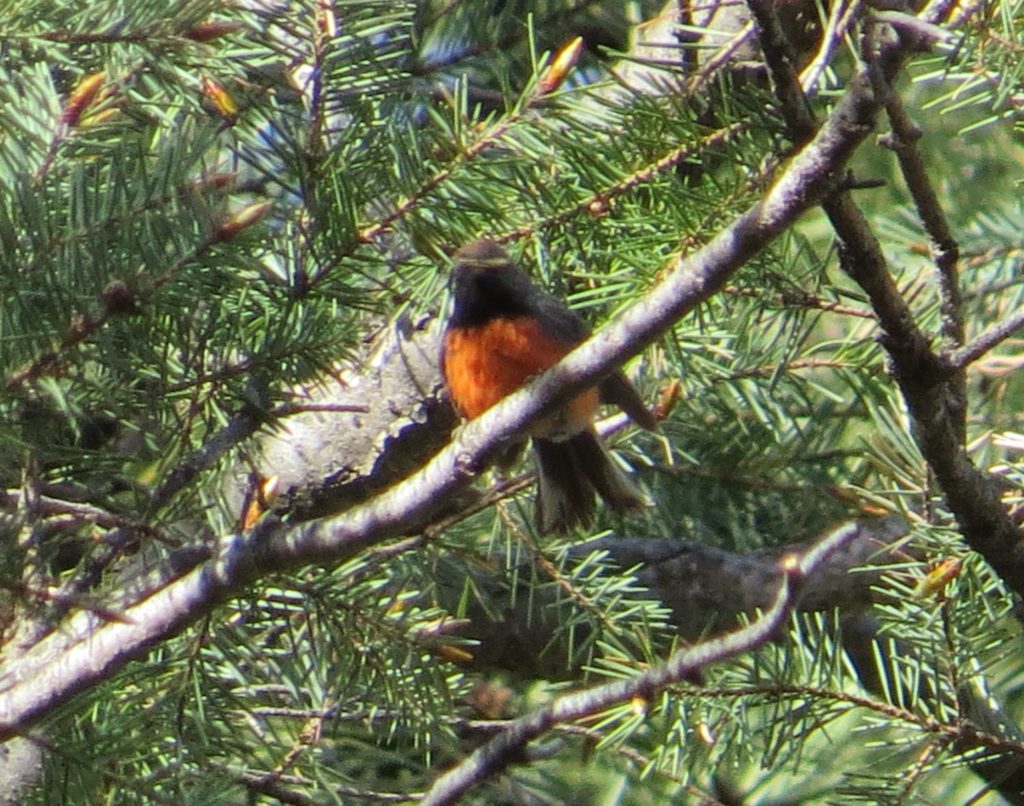
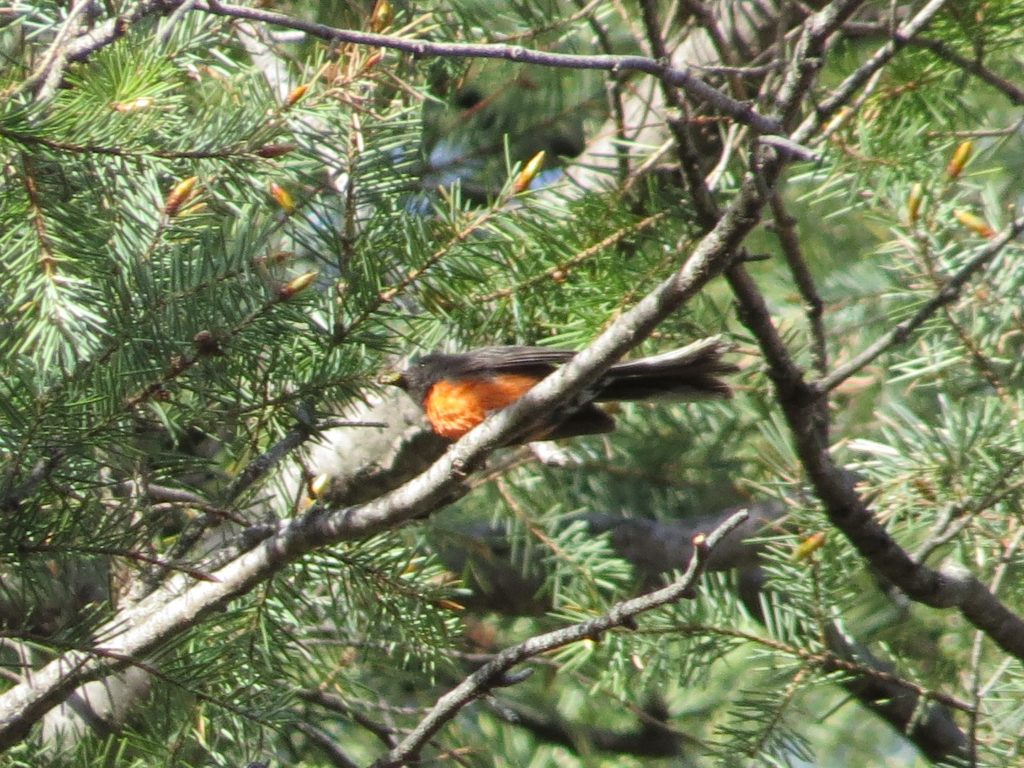
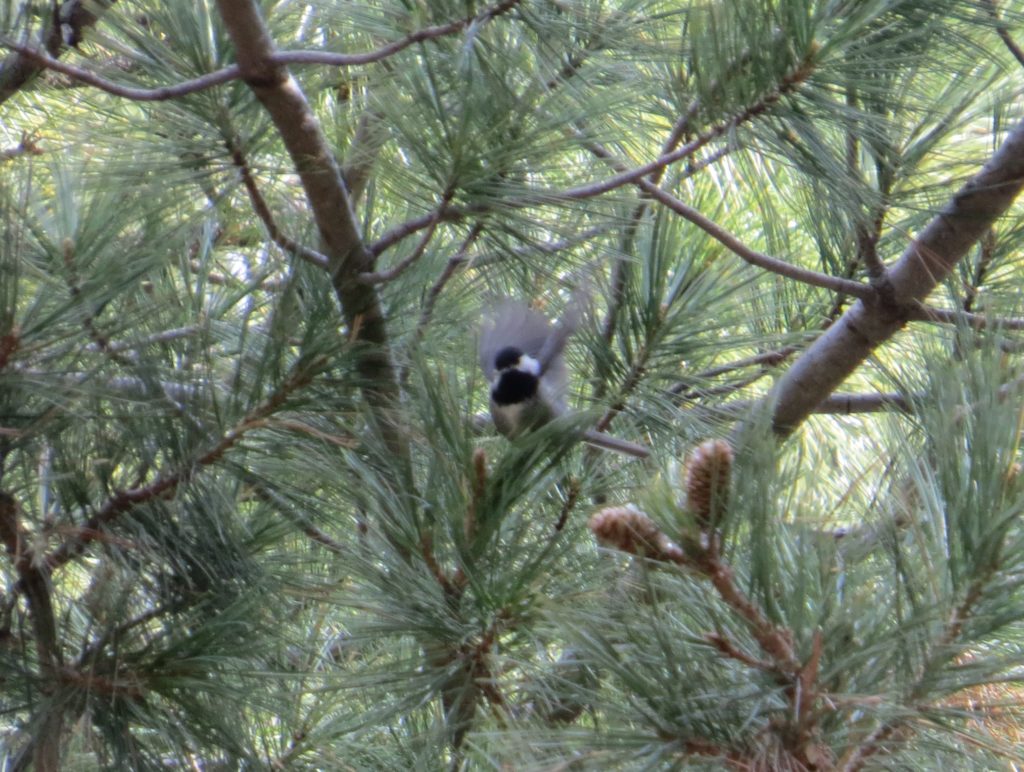 When you are literally on top of the world and have seen the Mexican Chickadee (and all kinds of other crazy good birds), a celebratory selfie is in order.
When you are literally on top of the world and have seen the Mexican Chickadee (and all kinds of other crazy good birds), a celebratory selfie is in order.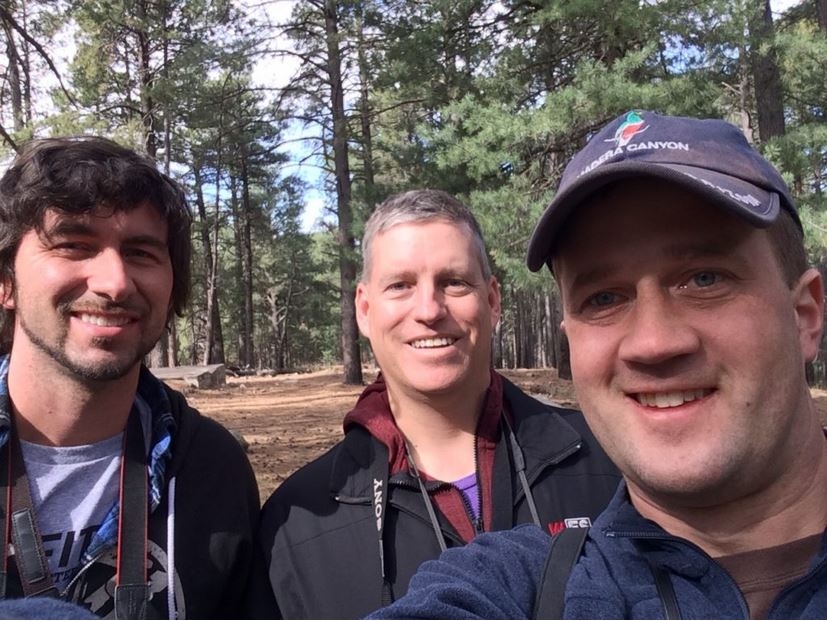
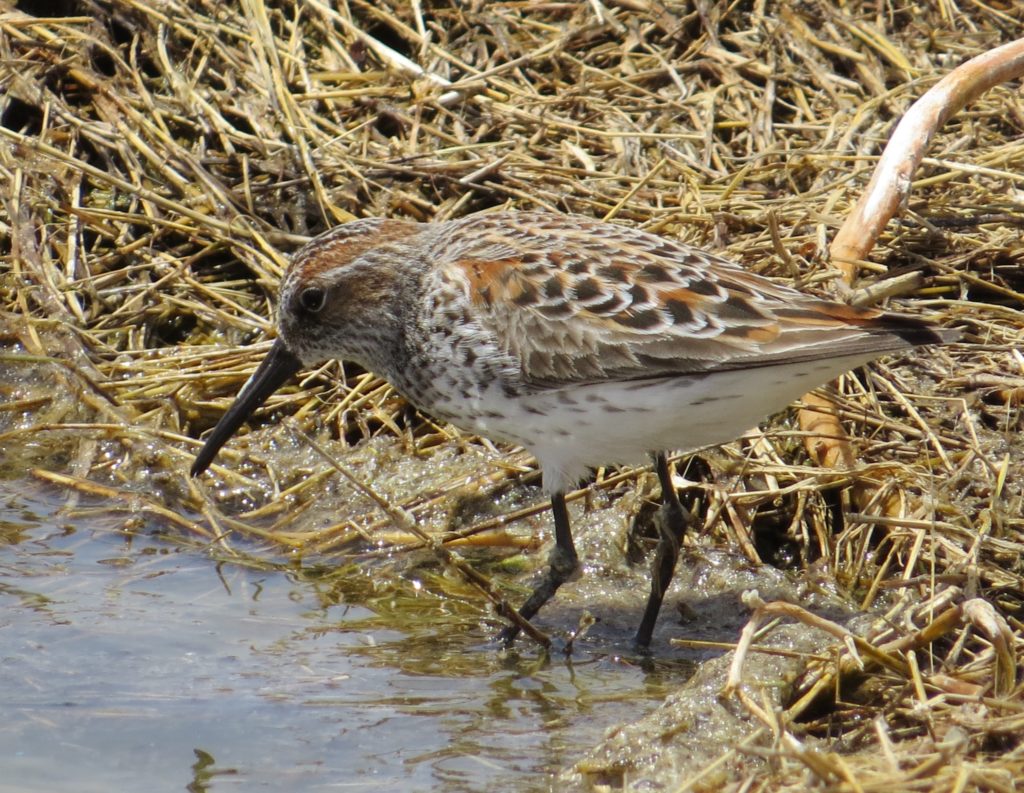 Cinnamon Teal never get old to this birder, and they were quite cooperative in Willcox as well.
Cinnamon Teal never get old to this birder, and they were quite cooperative in Willcox as well.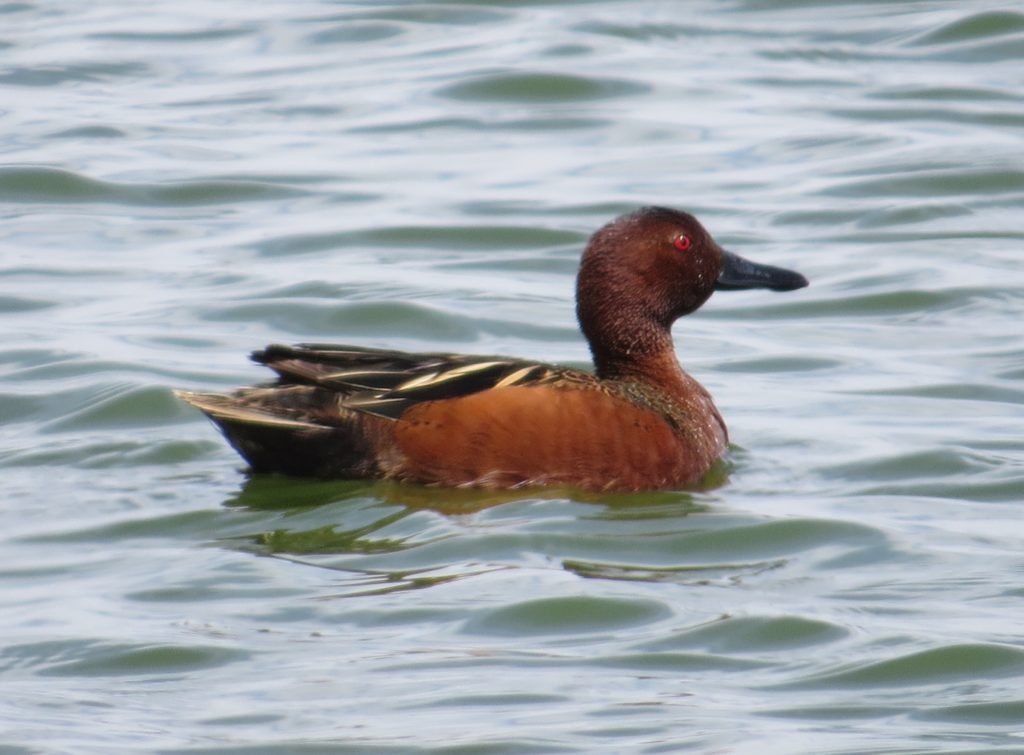 The trip was really over at this point. Steve and I had a flight to catch. That didn’t mean there wasn’t time to make one quick stop when we got close to my parents’ house in Maricopa. Tommy spotted this Burrowing Owl.
The trip was really over at this point. Steve and I had a flight to catch. That didn’t mean there wasn’t time to make one quick stop when we got close to my parents’ house in Maricopa. Tommy spotted this Burrowing Owl.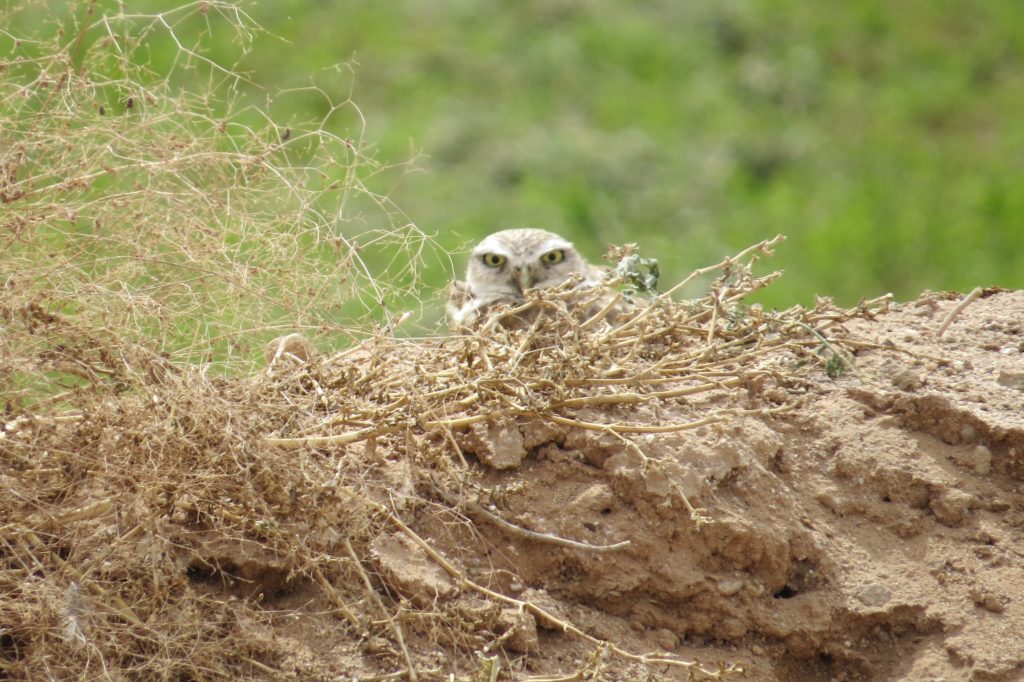
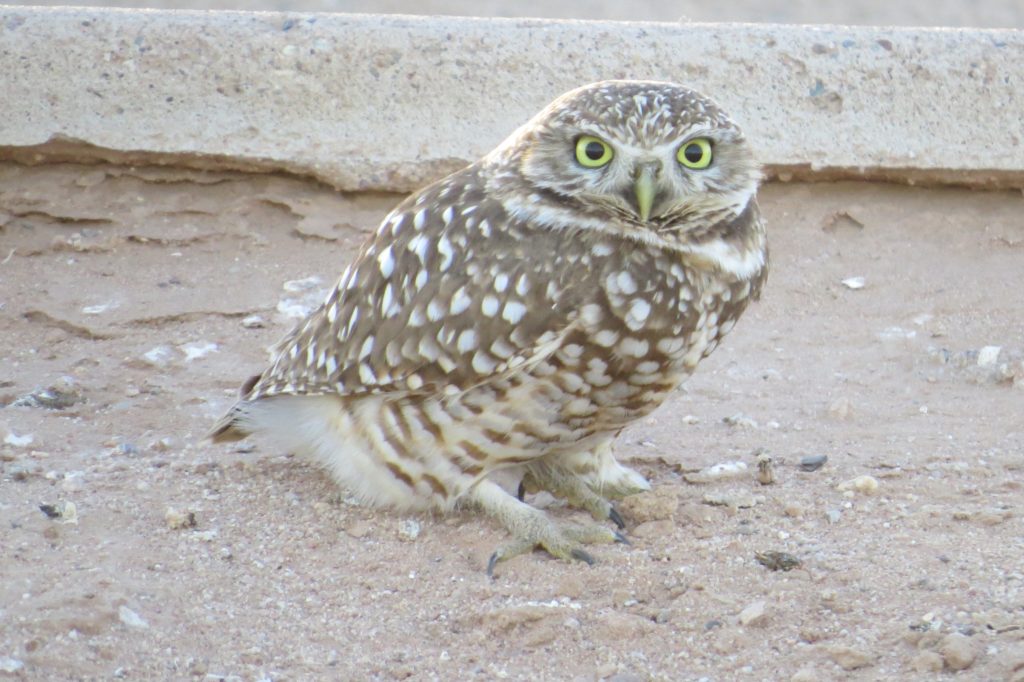 Finally, I found the sought-after silhouette at the eleventh hour.
Finally, I found the sought-after silhouette at the eleventh hour.
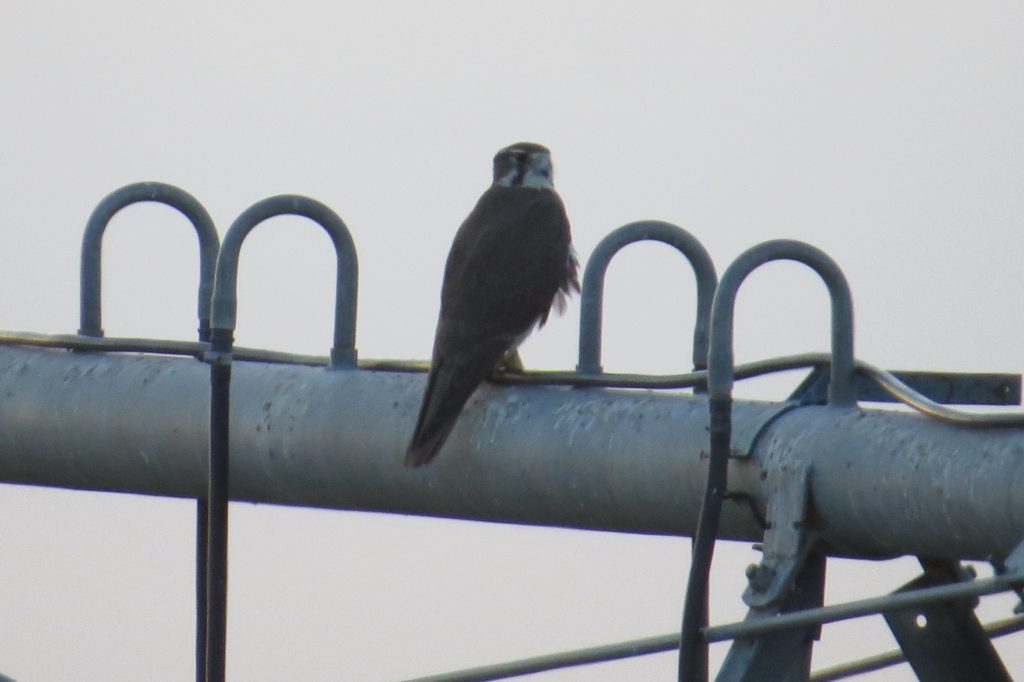 My clean-up operations are not haphazard–my strategy is to try to go after anything rare first and save the most common for later if need be. One of those rarities was the Rufous-backed Robin. This past winter was exceptional for this species with many records popping up in AZ. So that next day, my friend Gordon Karre took me on a mini-outing to stake out a gorgeous backyard in Paradise Valley to hopefully get one of two Robins that had been eating the berries of pyracantha bushes. The problem was that time and berries had run out for this particular Robin pair. We dipped.
My clean-up operations are not haphazard–my strategy is to try to go after anything rare first and save the most common for later if need be. One of those rarities was the Rufous-backed Robin. This past winter was exceptional for this species with many records popping up in AZ. So that next day, my friend Gordon Karre took me on a mini-outing to stake out a gorgeous backyard in Paradise Valley to hopefully get one of two Robins that had been eating the berries of pyracantha bushes. The problem was that time and berries had run out for this particular Robin pair. We dipped.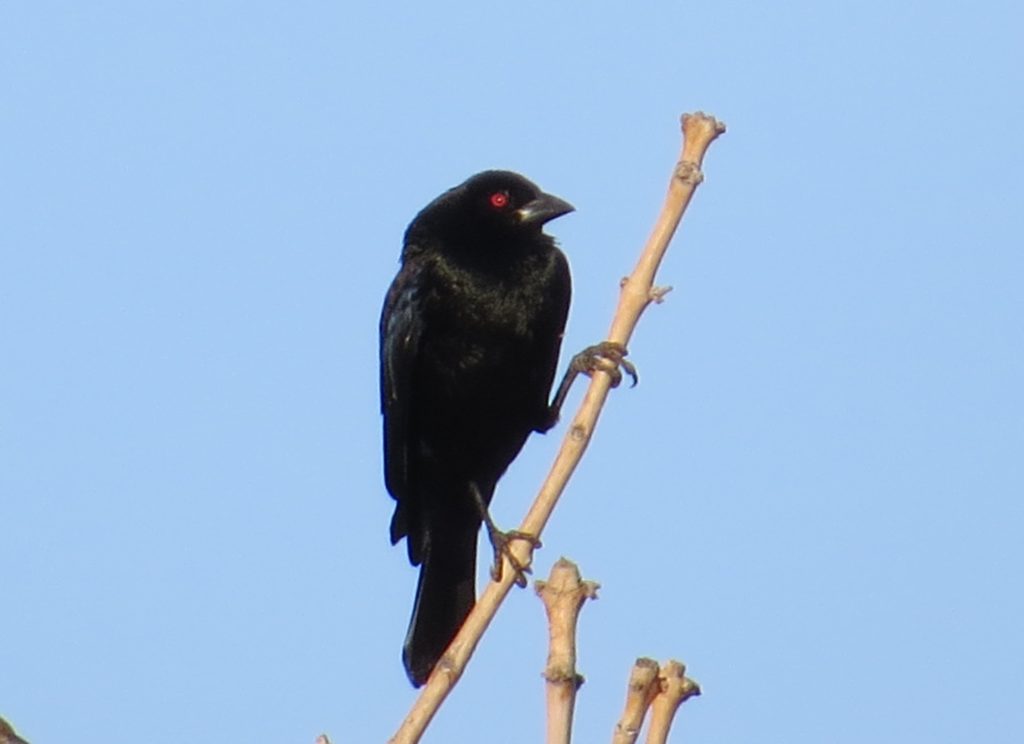 With that target achieved, the birding was put on hold until the next morning where Gordon, my Dad, and I would follow the same strategy–go after a key rarity and snag as many other lifers along the way. That rarity was the Ruddy Ground-Dove. Though we were going to originally go after one in the Phoenix area, it became a no-show just a couple days before the trip. We were then forced to go south to the Red Rock feedlot where several had been seen.
With that target achieved, the birding was put on hold until the next morning where Gordon, my Dad, and I would follow the same strategy–go after a key rarity and snag as many other lifers along the way. That rarity was the Ruddy Ground-Dove. Though we were going to originally go after one in the Phoenix area, it became a no-show just a couple days before the trip. We were then forced to go south to the Red Rock feedlot where several had been seen.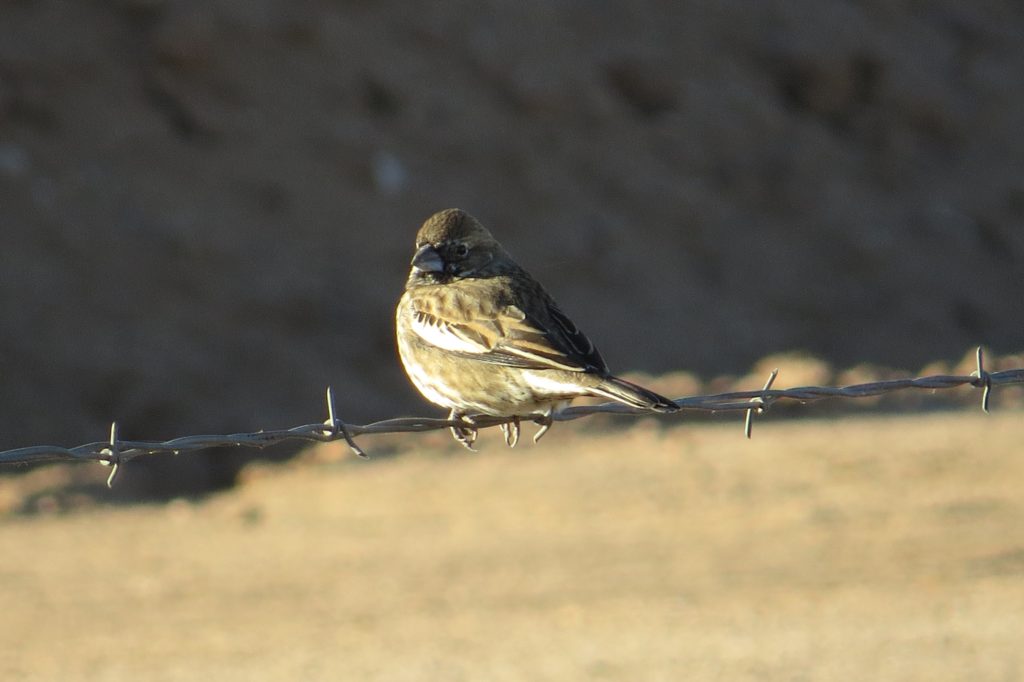 Finally we got on to the flock(!) of the rare Doves, finding five or six in all. Here are four of them with an Inca Dove that has identity issues, all huddling to keep warm on this chilly morning.
Finally we got on to the flock(!) of the rare Doves, finding five or six in all. Here are four of them with an Inca Dove that has identity issues, all huddling to keep warm on this chilly morning.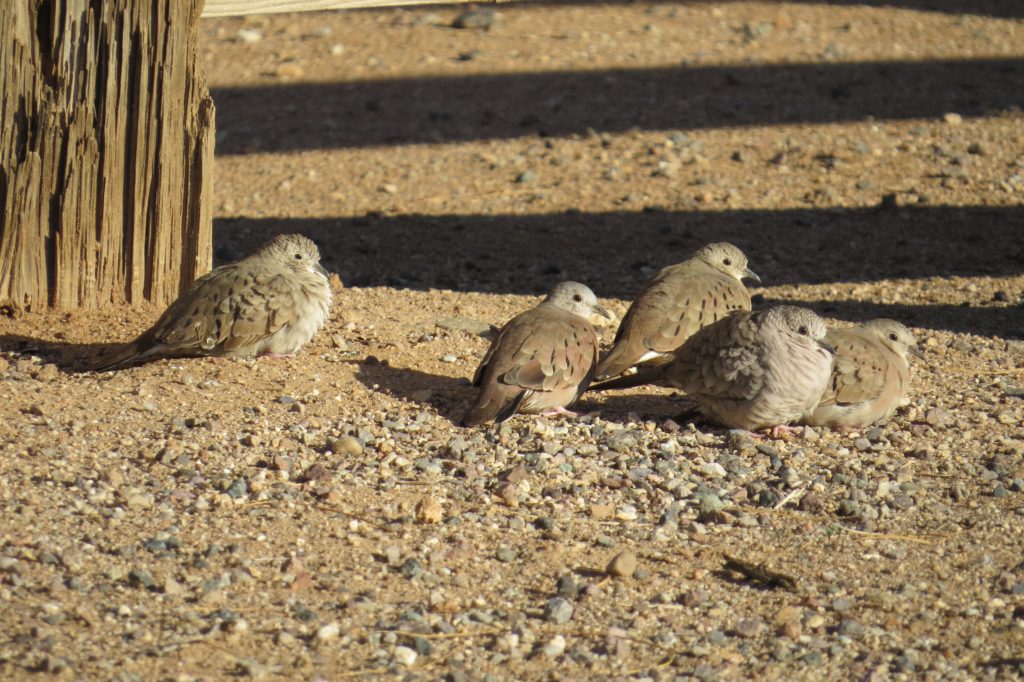
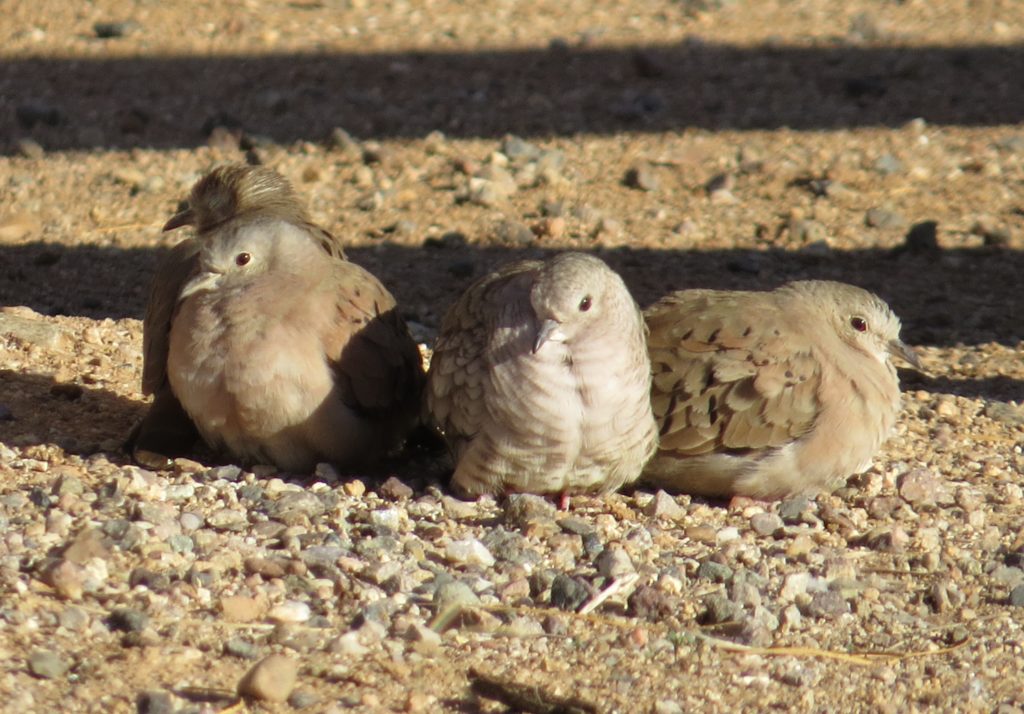
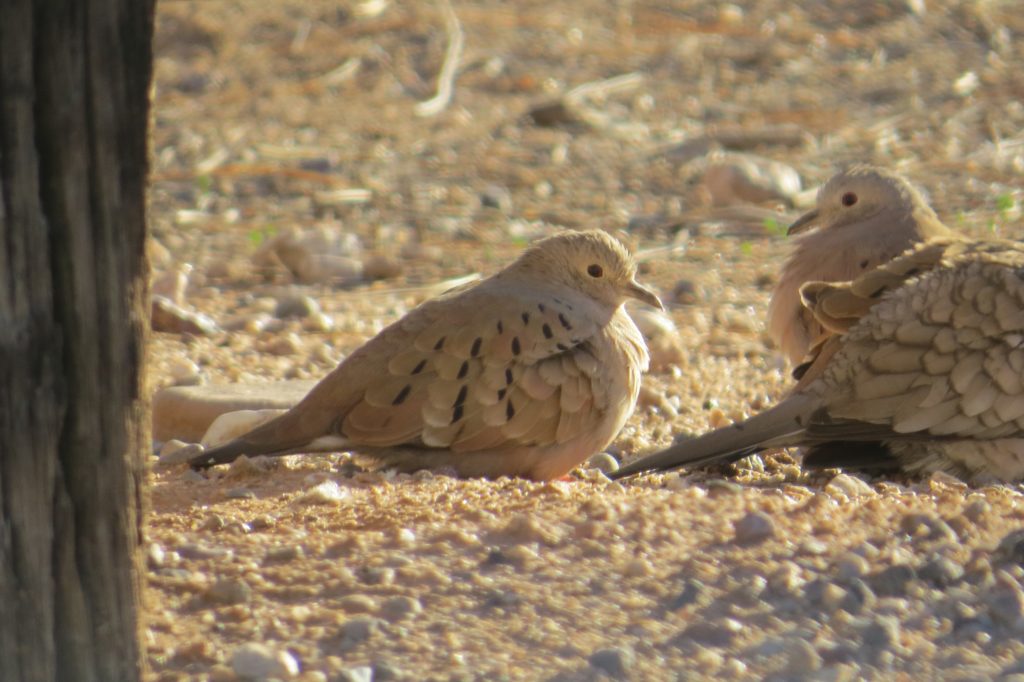
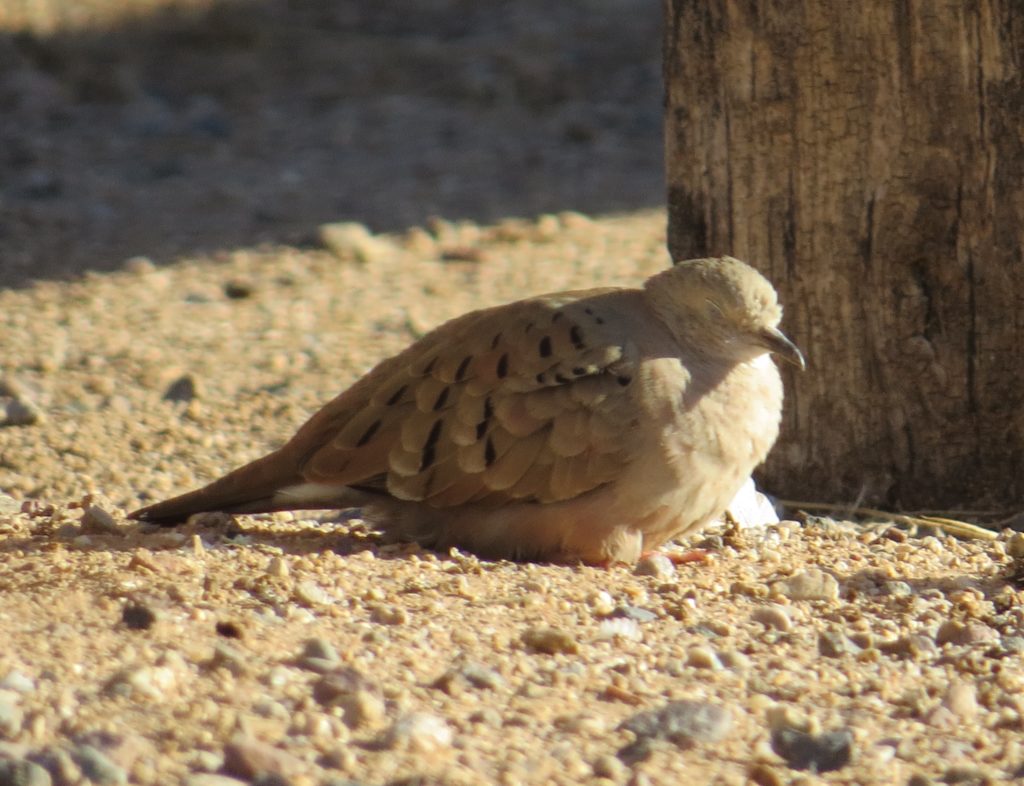 The plan was to cruise through the Santa Cruz Flats on the way home to try for two birds I had long been holding in reserve: Crested Caracara and Mountain Plover. The Santa Cruz Flats are fun place to bird where one can not only stumble across a Mark Ochs lifer but also see cool stuff like Harris’s Hawks.
The plan was to cruise through the Santa Cruz Flats on the way home to try for two birds I had long been holding in reserve: Crested Caracara and Mountain Plover. The Santa Cruz Flats are fun place to bird where one can not only stumble across a Mark Ochs lifer but also see cool stuff like Harris’s Hawks.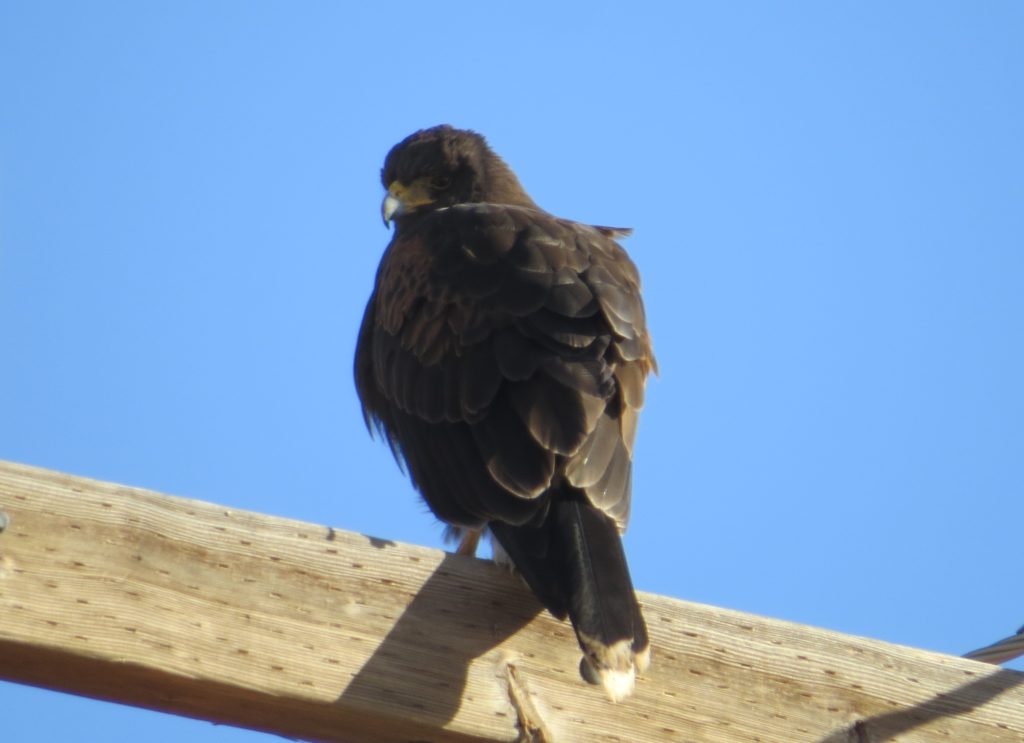
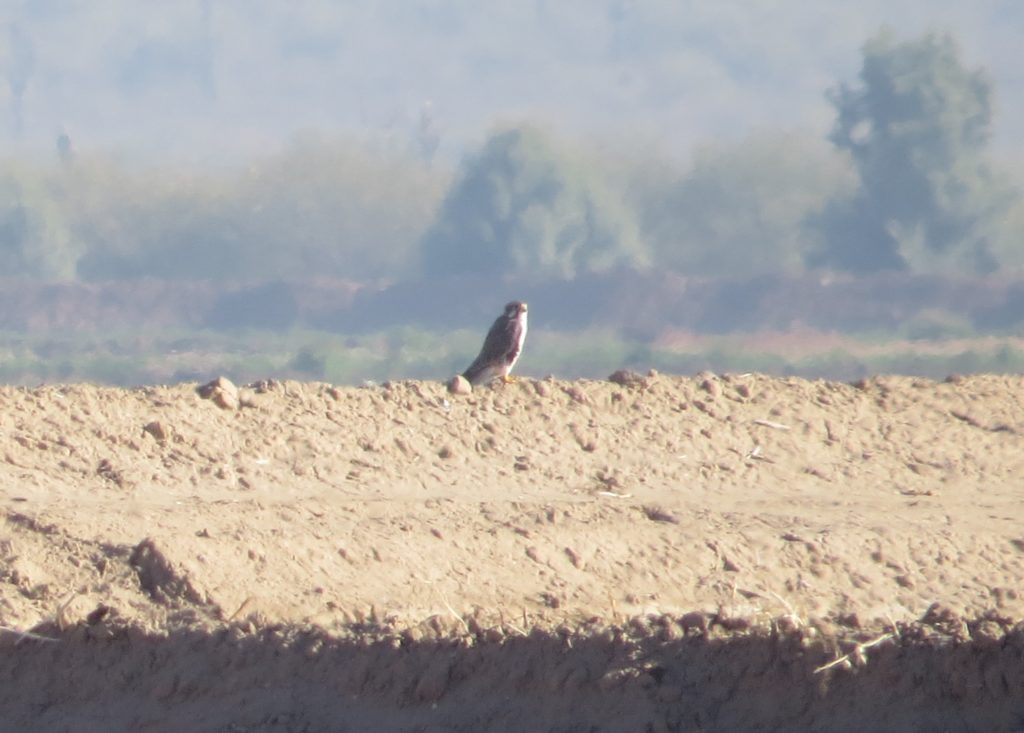 Then, thanks to our trusty guide, we finally got onto one of the two targets–a whole heap of Crested Caracaras.
Then, thanks to our trusty guide, we finally got onto one of the two targets–a whole heap of Crested Caracaras. 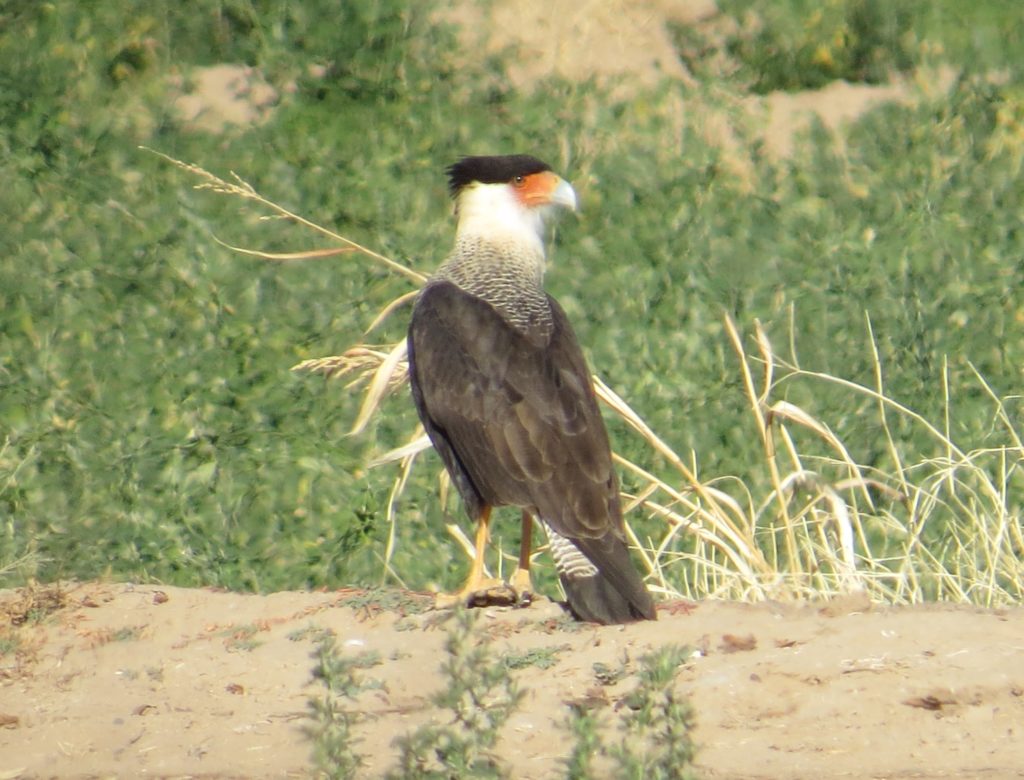
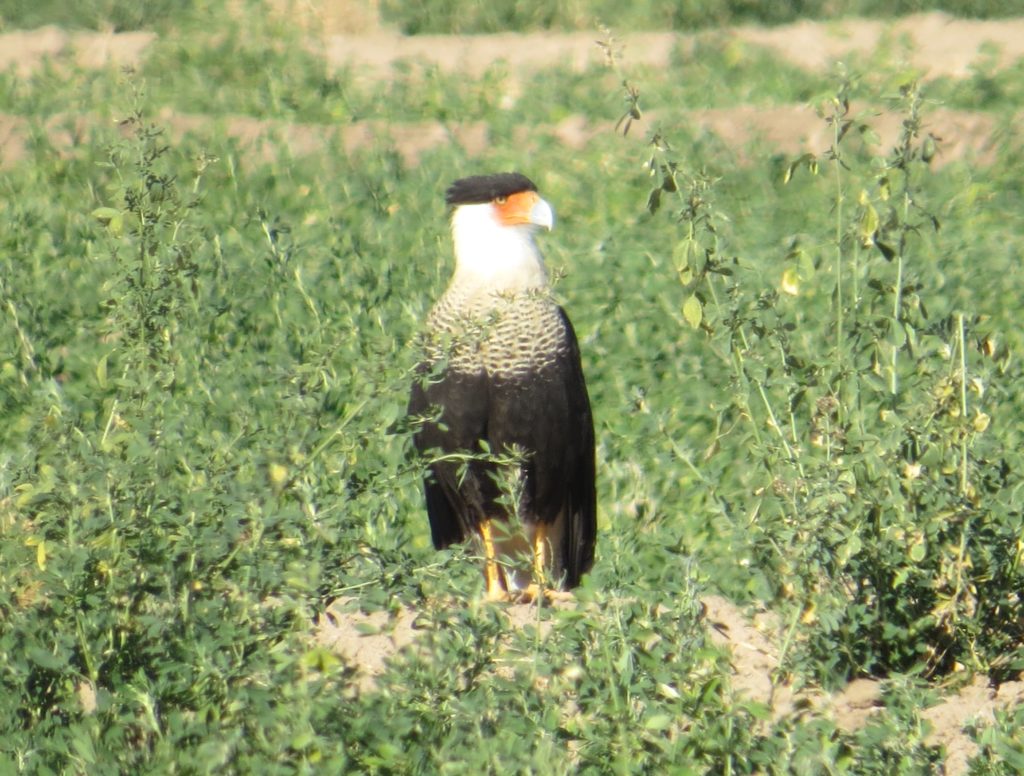 Not long after, Gordon had found us some Mountain Plovers.
Not long after, Gordon had found us some Mountain Plovers.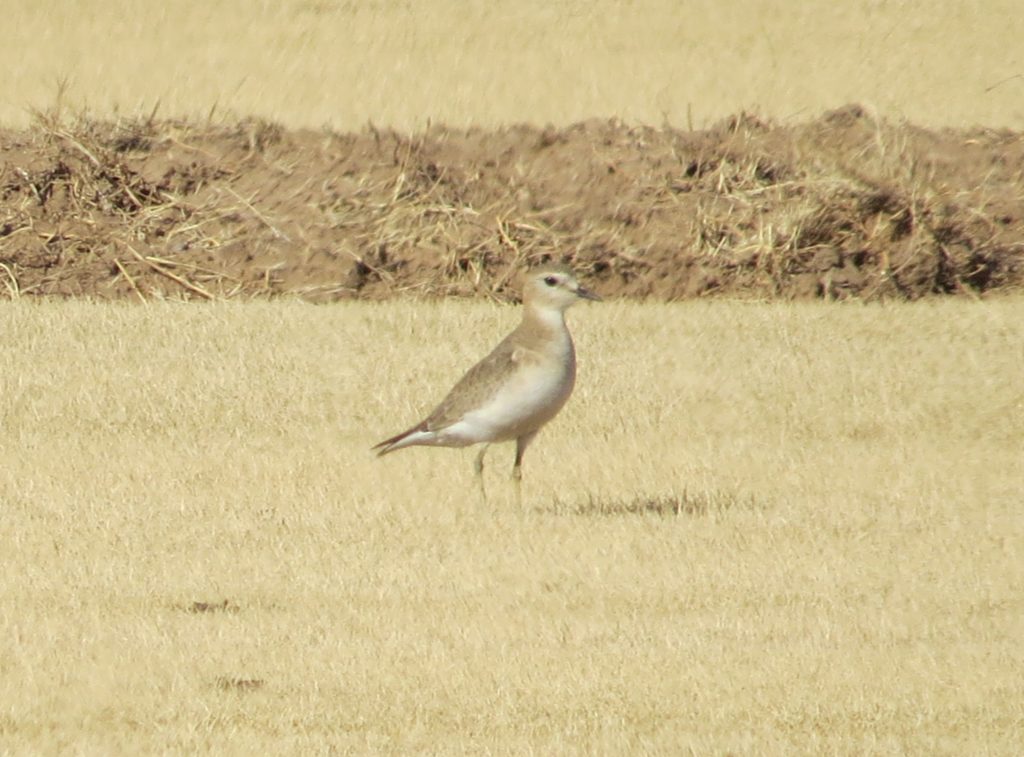
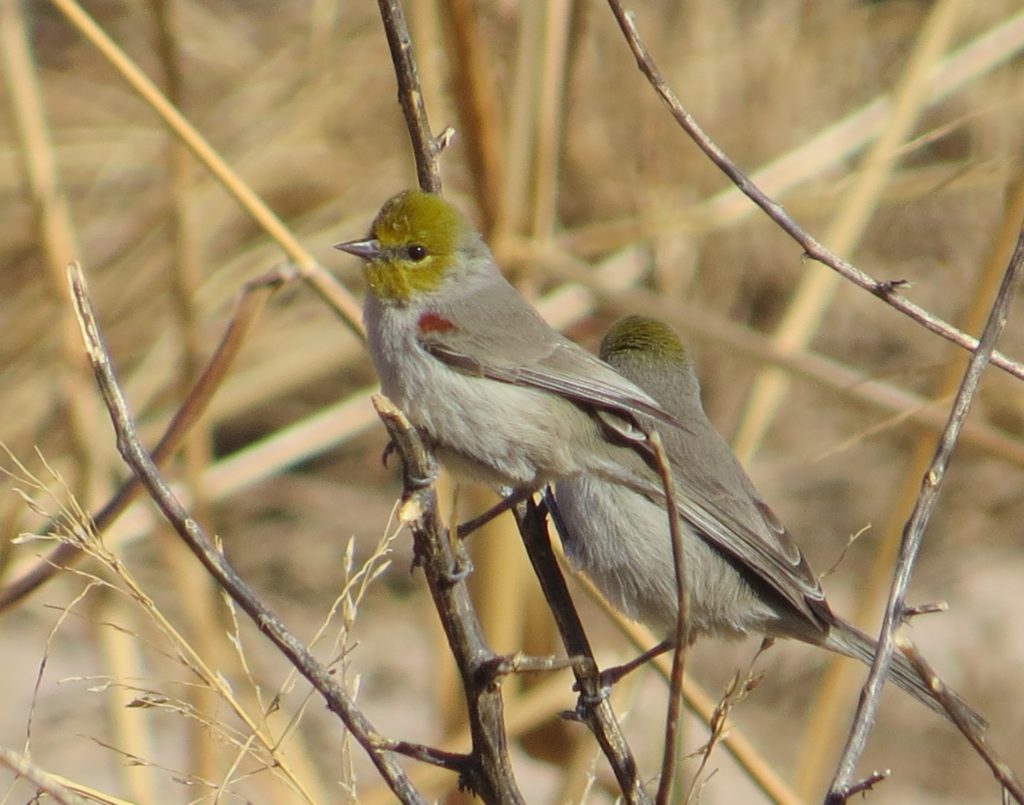 Some birds practically throw themselves at you when you’re just out walking in the neighborhood. Vermilion Flycatchers seem to be becoming more prolific in the area of Maricopa where Mom and Dad live. I don’t mind.
Some birds practically throw themselves at you when you’re just out walking in the neighborhood. Vermilion Flycatchers seem to be becoming more prolific in the area of Maricopa where Mom and Dad live. I don’t mind.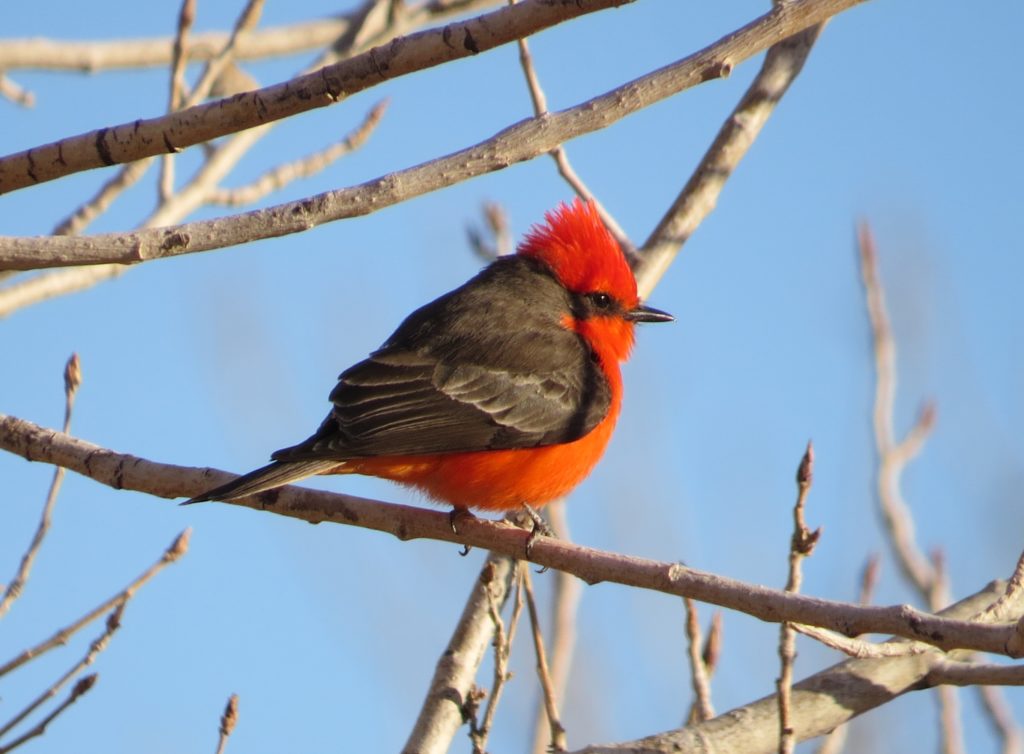
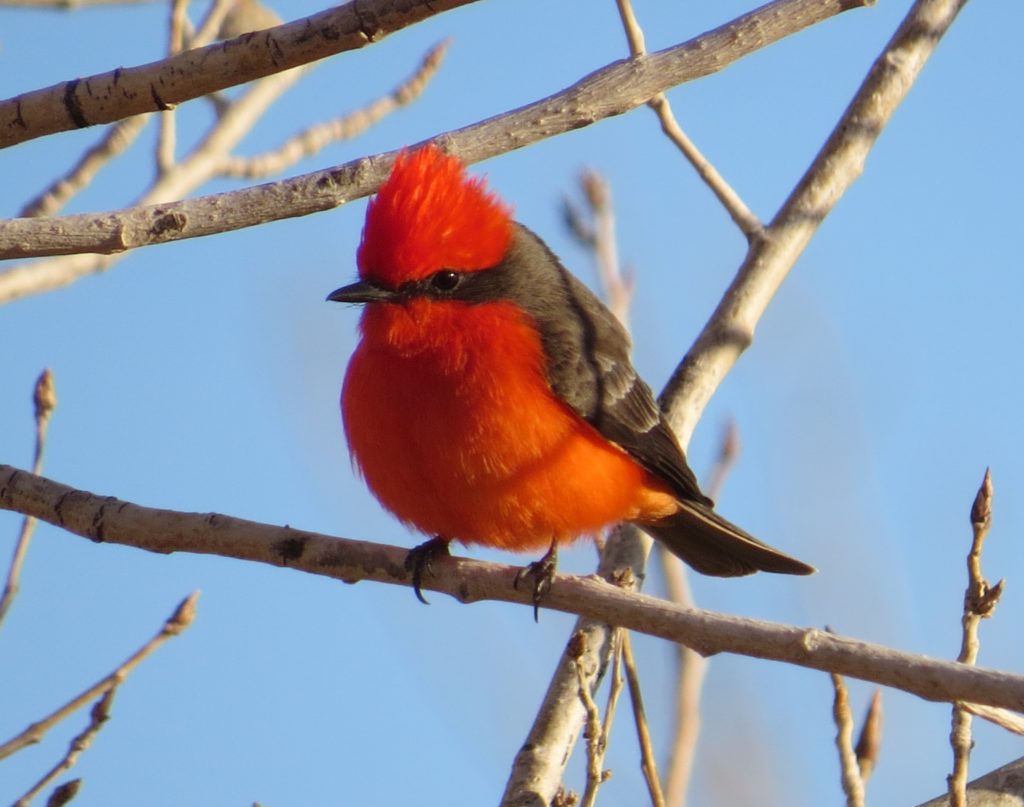 Last, but certainly not least, checking on our neighborhood buddy is an annual tradition.
Last, but certainly not least, checking on our neighborhood buddy is an annual tradition.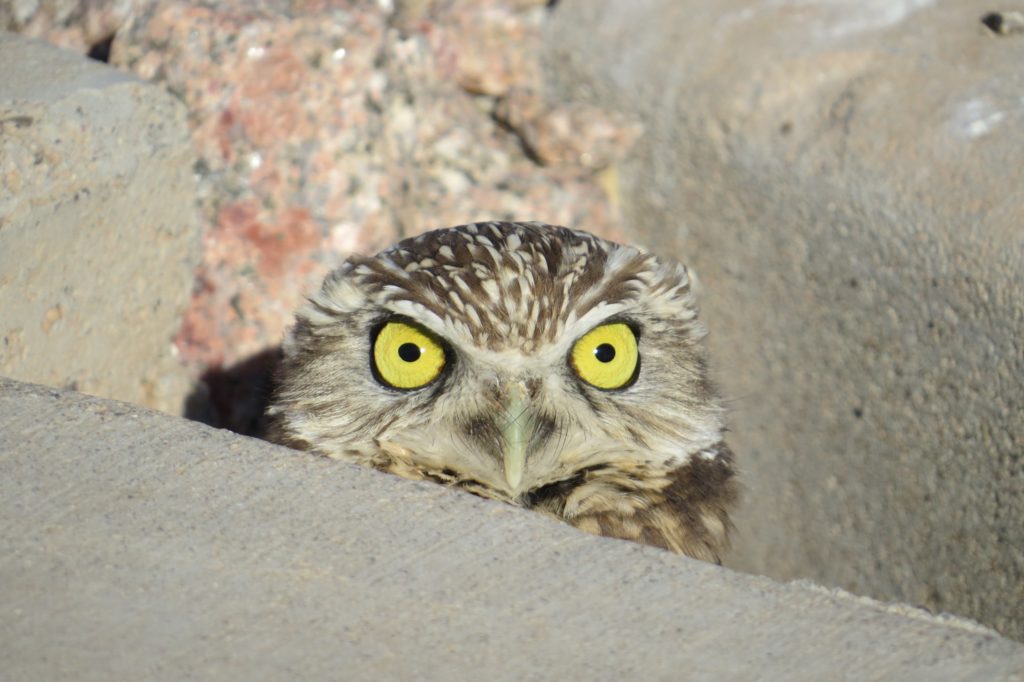 So that’s it from this trip. Pretty tame by previous standards, but that will more than be made up for on an upcoming post detailing another trip to Arizona that was focused exclusively on birding. But first, we have to cover another excursion to Duluth. There was an irruption going on this winter, after all.
So that’s it from this trip. Pretty tame by previous standards, but that will more than be made up for on an upcoming post detailing another trip to Arizona that was focused exclusively on birding. But first, we have to cover another excursion to Duluth. There was an irruption going on this winter, after all.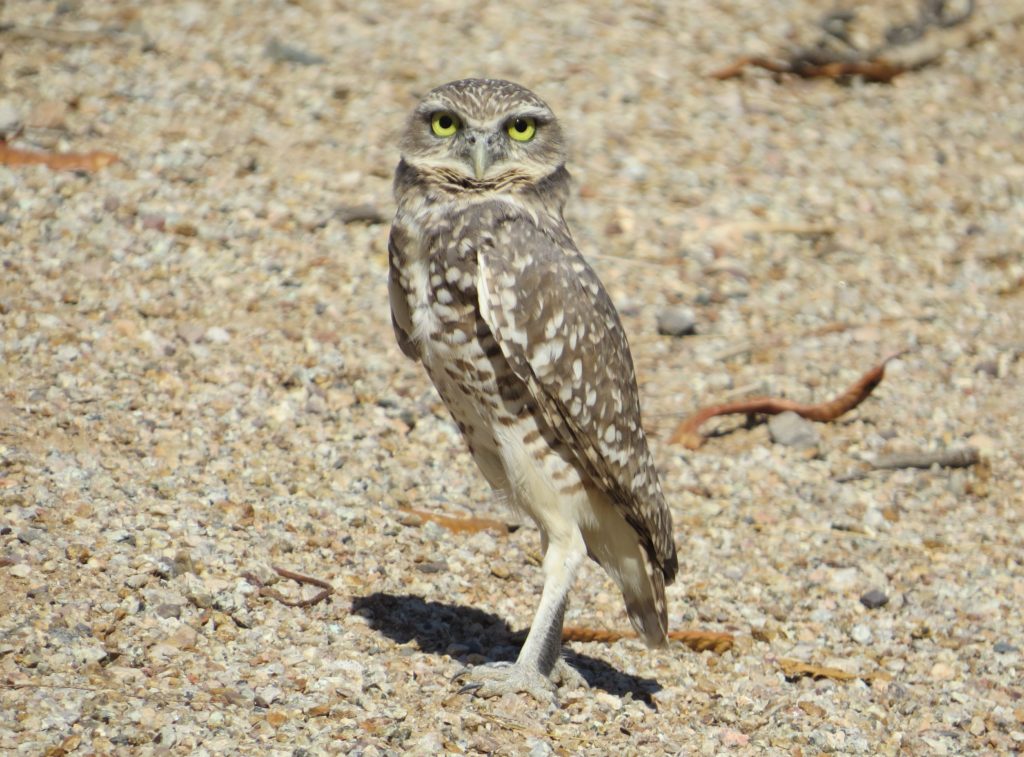
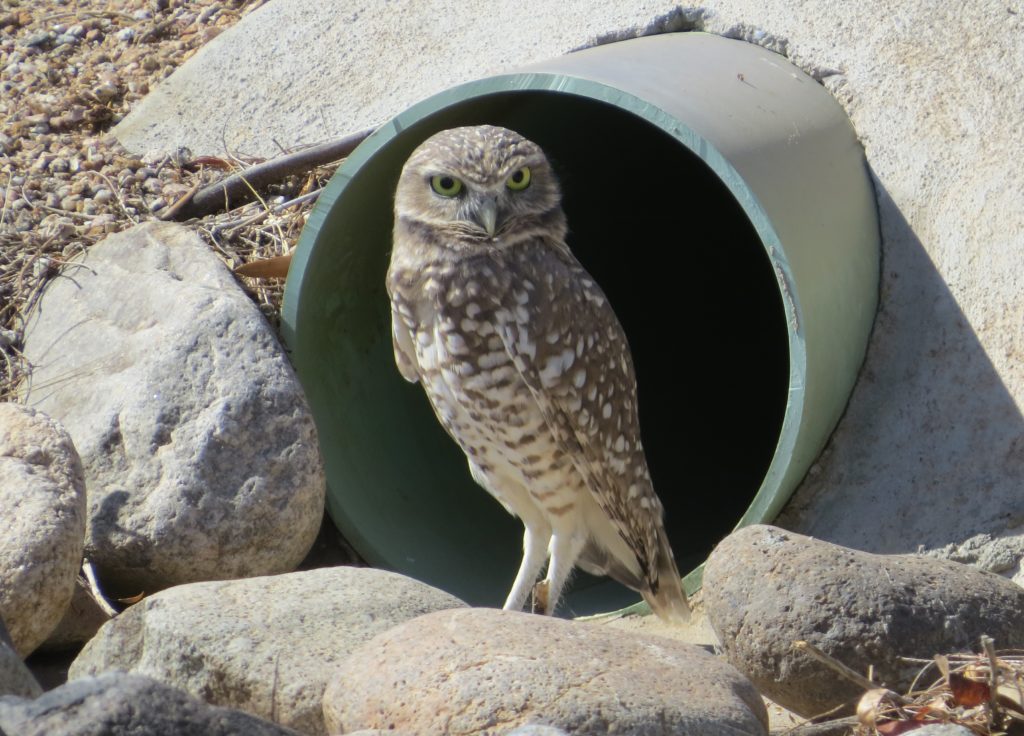 There is a pair of Burrowing Owls within a mile of my parents’ place that I usually visit, but this year I didn’t find them as easily in the past. I did eventually see one which brought me relief; I hadn’t seen them the first few times I checked this year. Normally they are always out. To get my Burrower fix this year, I had to find some brand new ones which is always fun. This pair was found on school property in Maricopa. How cool would it be to have Burrowing Owls at your school?
There is a pair of Burrowing Owls within a mile of my parents’ place that I usually visit, but this year I didn’t find them as easily in the past. I did eventually see one which brought me relief; I hadn’t seen them the first few times I checked this year. Normally they are always out. To get my Burrower fix this year, I had to find some brand new ones which is always fun. This pair was found on school property in Maricopa. How cool would it be to have Burrowing Owls at your school?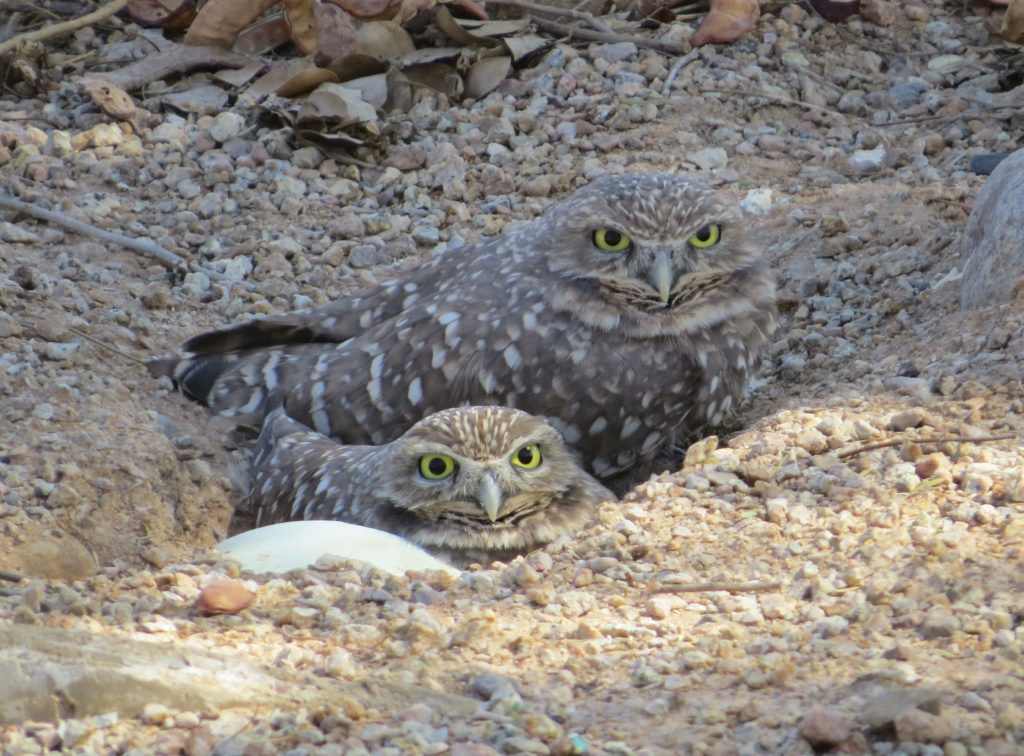 Another new Burrowing Owl I found this trip was only 100 yards from my parents’ backyard fence–I was pretty pumped to find this one.
Another new Burrowing Owl I found this trip was only 100 yards from my parents’ backyard fence–I was pretty pumped to find this one.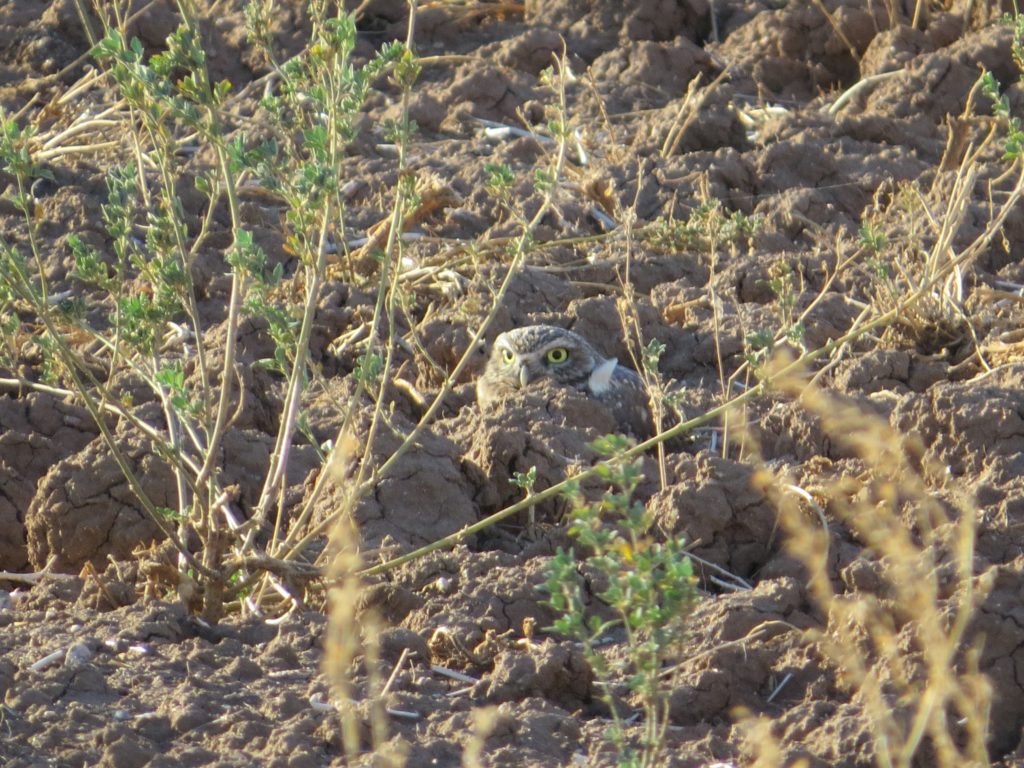 Burrowing Owls aren’t the only birds I enjoy re-seeing on our annual AZ trip. Vermilion Flycatcher is another. Every year I’m finding more and more around my parents’ neighborhood. Fun fact: Vermilion Flycatchers look just as amazing after November 8th as they did before.
Burrowing Owls aren’t the only birds I enjoy re-seeing on our annual AZ trip. Vermilion Flycatcher is another. Every year I’m finding more and more around my parents’ neighborhood. Fun fact: Vermilion Flycatchers look just as amazing after November 8th as they did before.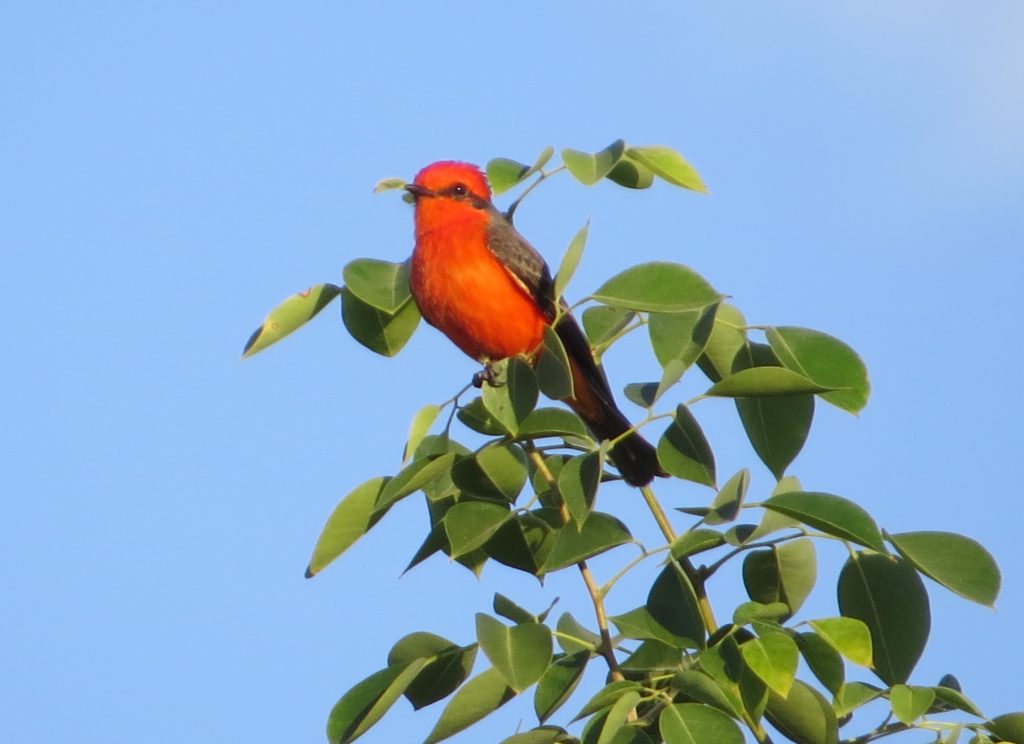
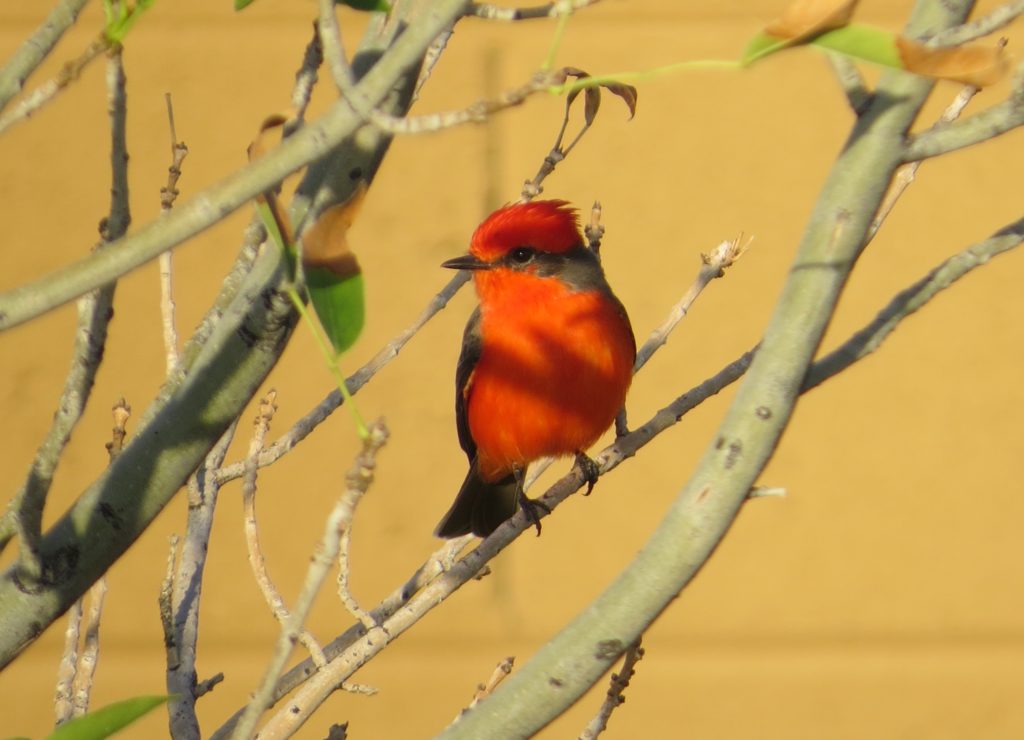 I did get to do some birding beyond my parents’ neighborhood and city. I had the pleasure of once again meeting up with good friends, Tommy DeBardeleben and Gordon Karre for some intense birding outings in southeastern AZ. We’ll save the really juicy lifer stuff for the next two posts, but there was plenty of non-lifer goodness as well, like a Green-tailed Towhee seen along the De Anza Trail near Tubac. Previously I had only seen an extremely back-lit one in Colorado.
I did get to do some birding beyond my parents’ neighborhood and city. I had the pleasure of once again meeting up with good friends, Tommy DeBardeleben and Gordon Karre for some intense birding outings in southeastern AZ. We’ll save the really juicy lifer stuff for the next two posts, but there was plenty of non-lifer goodness as well, like a Green-tailed Towhee seen along the De Anza Trail near Tubac. Previously I had only seen an extremely back-lit one in Colorado.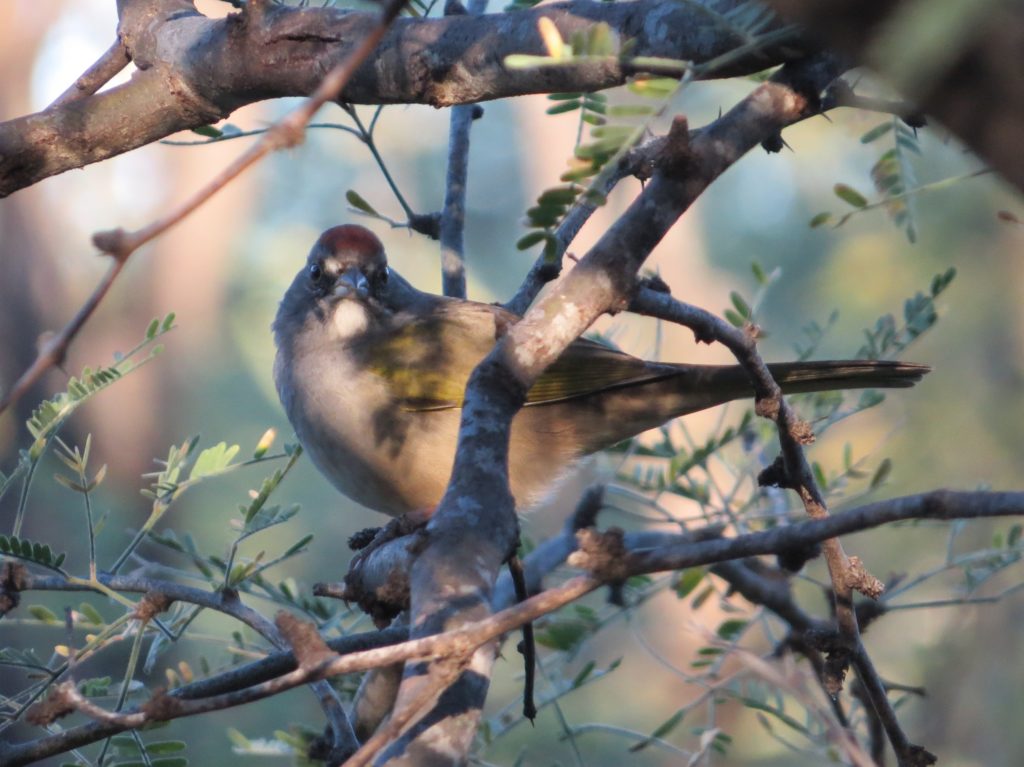 In many ways, this was a photo redemption trip of many birds. This Lazuli Bunting was another nice find on the De Anza Trail. The only other sighting I had was a fleeting glimpse at a lifer in MN. Here I got to see the front AND back of this looker.
In many ways, this was a photo redemption trip of many birds. This Lazuli Bunting was another nice find on the De Anza Trail. The only other sighting I had was a fleeting glimpse at a lifer in MN. Here I got to see the front AND back of this looker.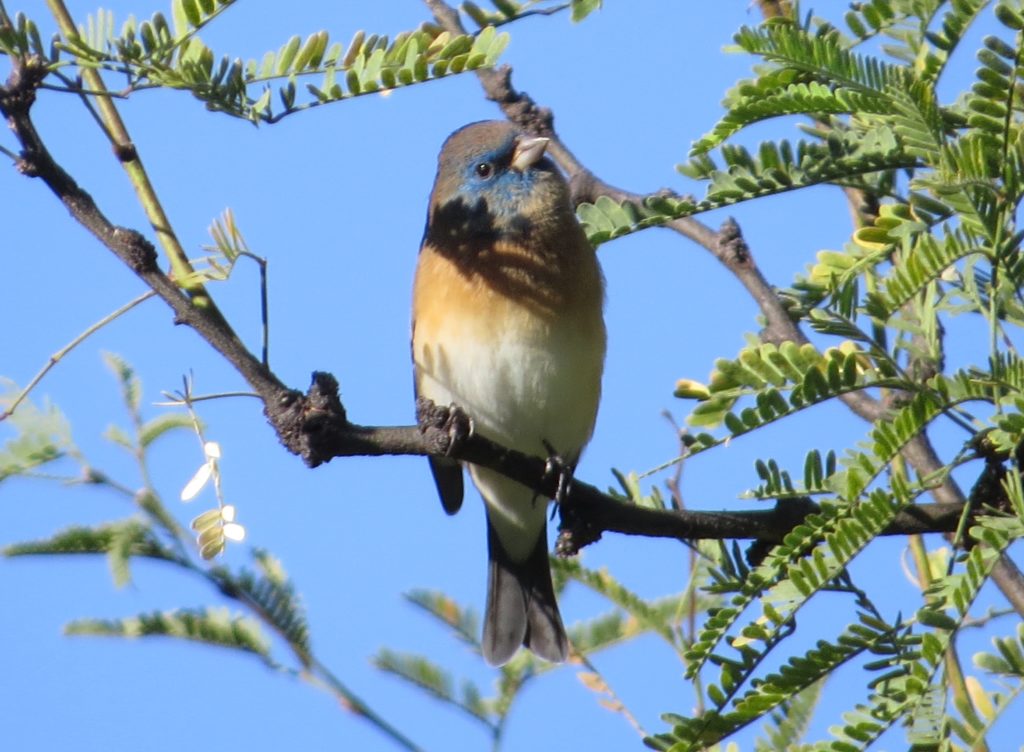
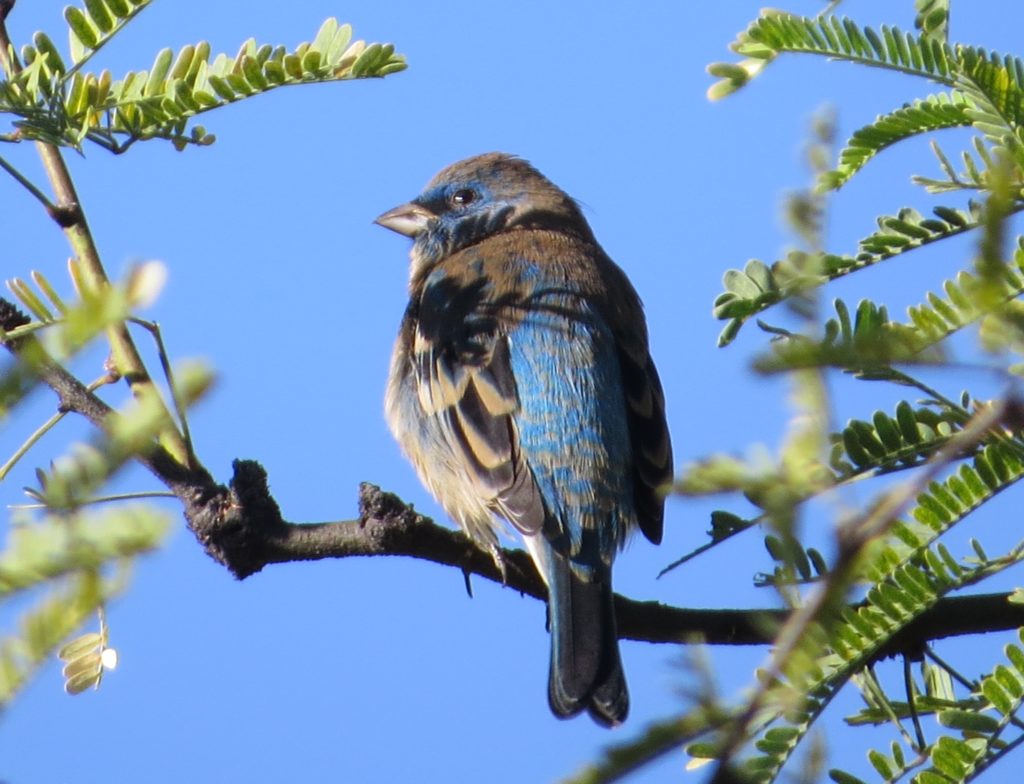 Black Phoebe is another of which I only had marginal photos before this trip.
Black Phoebe is another of which I only had marginal photos before this trip.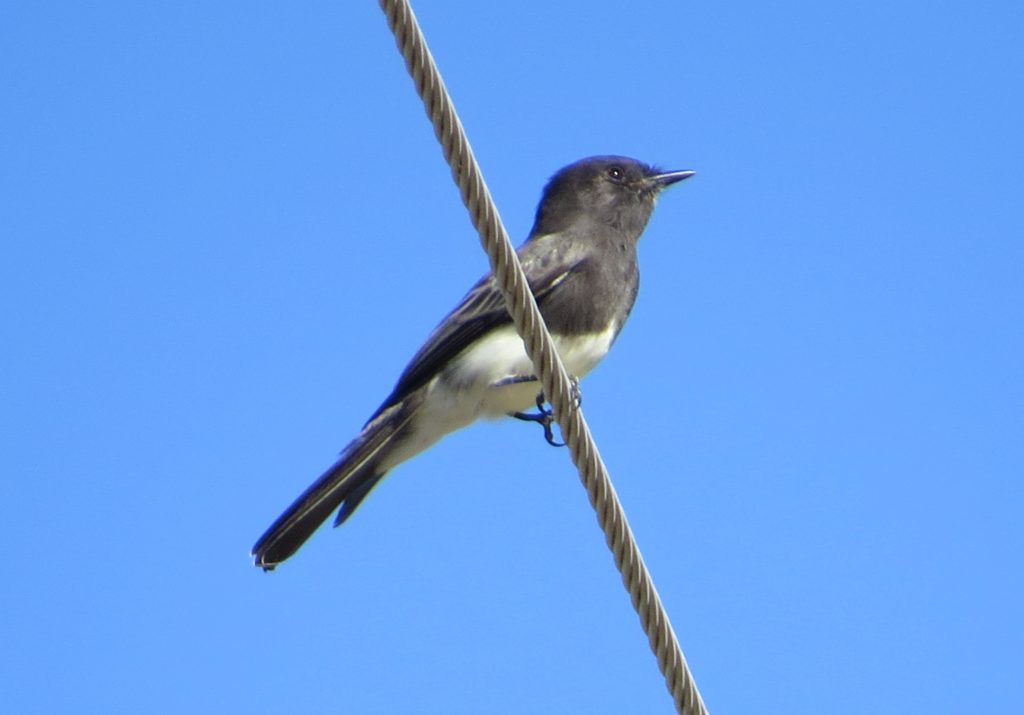 And Greater Roadrunners…we got skunked on this bird our very first AZ trip. This bird below might have even let me pet it. It actually walked toward me when I was only 10 feet away.
And Greater Roadrunners…we got skunked on this bird our very first AZ trip. This bird below might have even let me pet it. It actually walked toward me when I was only 10 feet away.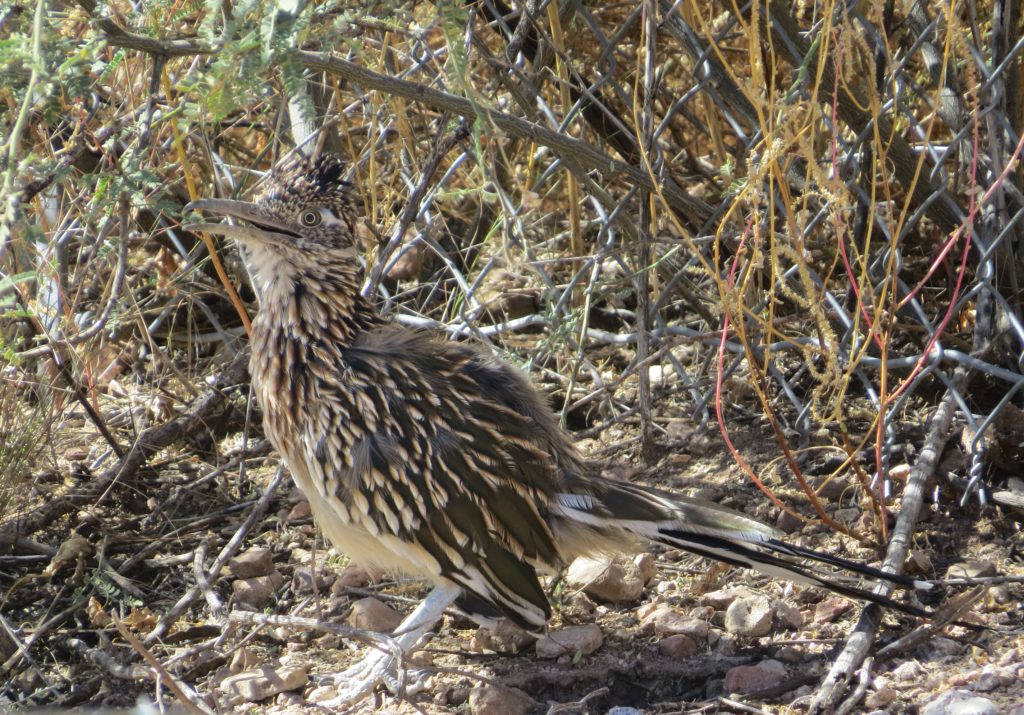 Now this next bird is one that I have better photos of, but c’mon, it’s a Black-throated Sparrow and needs to be included in this post regardless.
Now this next bird is one that I have better photos of, but c’mon, it’s a Black-throated Sparrow and needs to be included in this post regardless.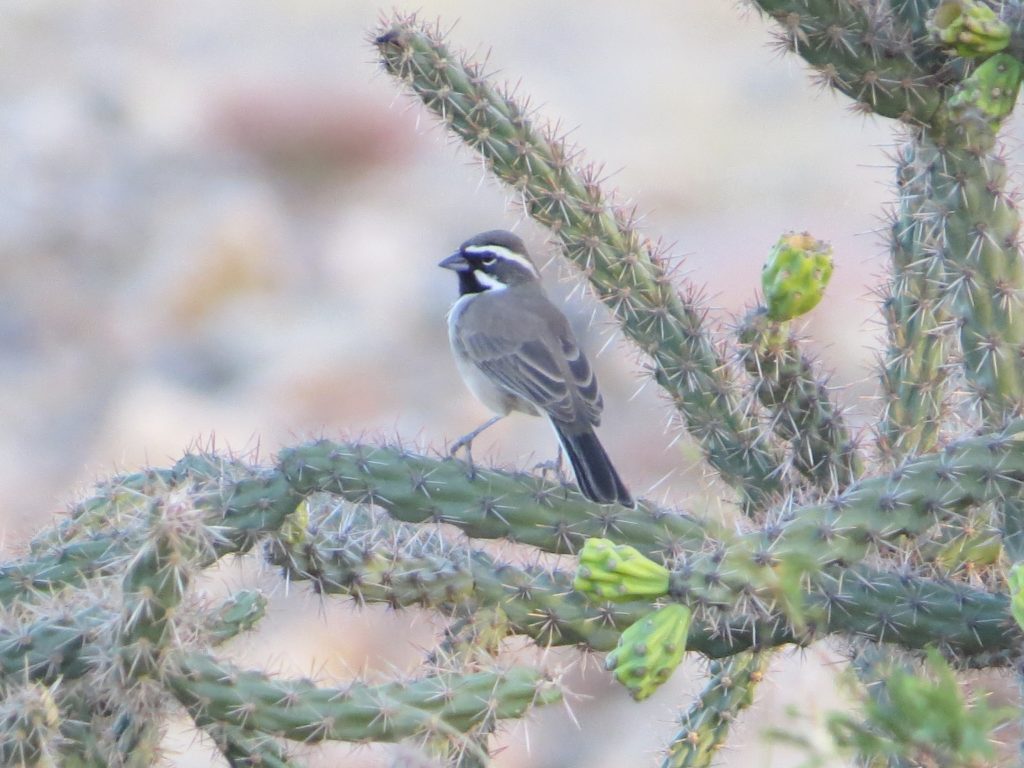 And finally, the best photo redemption of all was of the only Owl Iifer I had never photographed. Last year we saw a Barn Owl, but it flushed from its roost before I could get a photo. It was a major letdown that I wanted to fix on this trip. This time I was able to get a few shots before it flushed.
And finally, the best photo redemption of all was of the only Owl Iifer I had never photographed. Last year we saw a Barn Owl, but it flushed from its roost before I could get a photo. It was a major letdown that I wanted to fix on this trip. This time I was able to get a few shots before it flushed.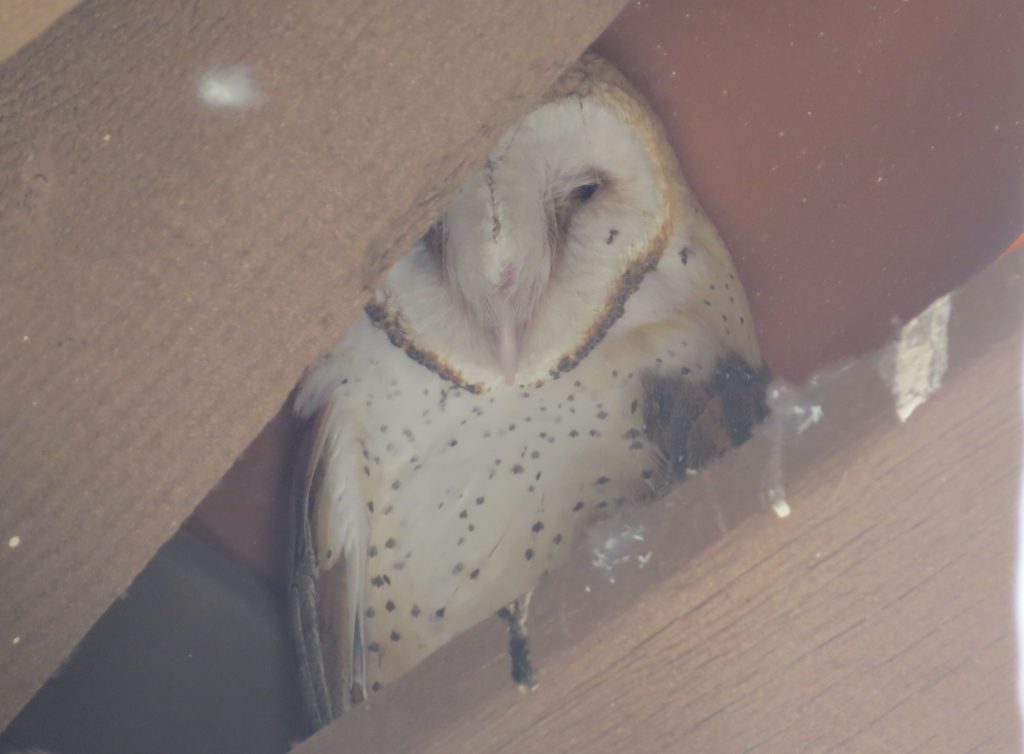 Then Tommy and I found it after it flushed and got some more shots of this cool bird.
Then Tommy and I found it after it flushed and got some more shots of this cool bird.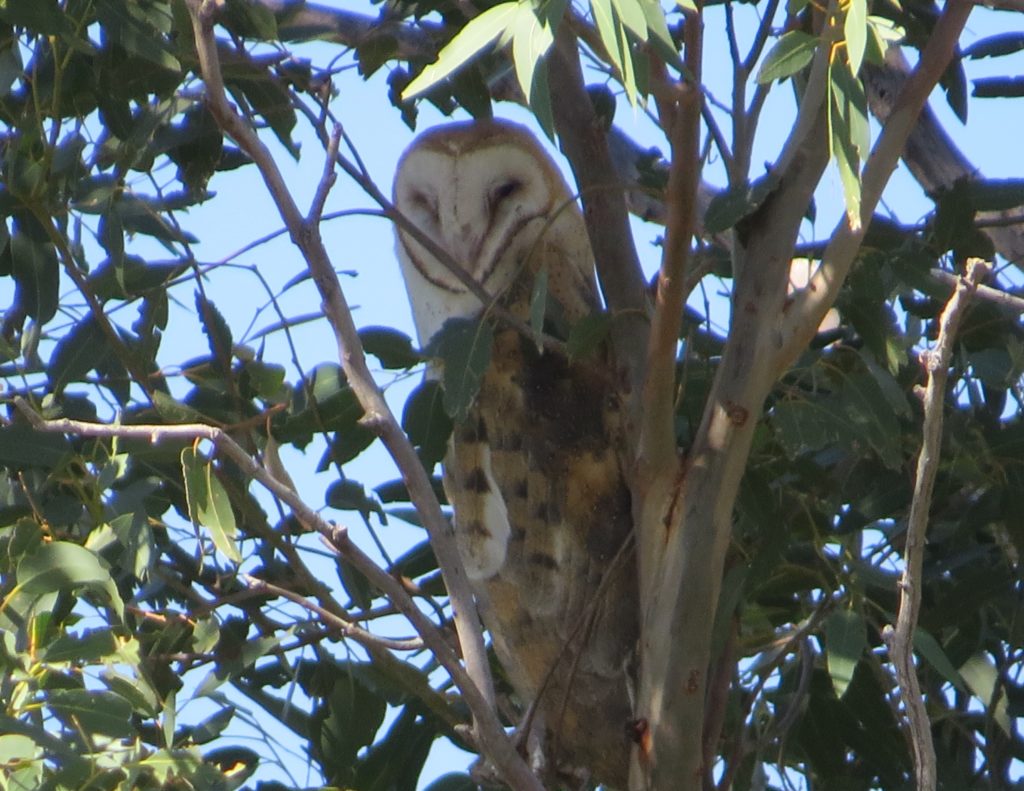 Next post will be all lifers. With three more posts (two AZ), there is much to look forward to!
Next post will be all lifers. With three more posts (two AZ), there is much to look forward to!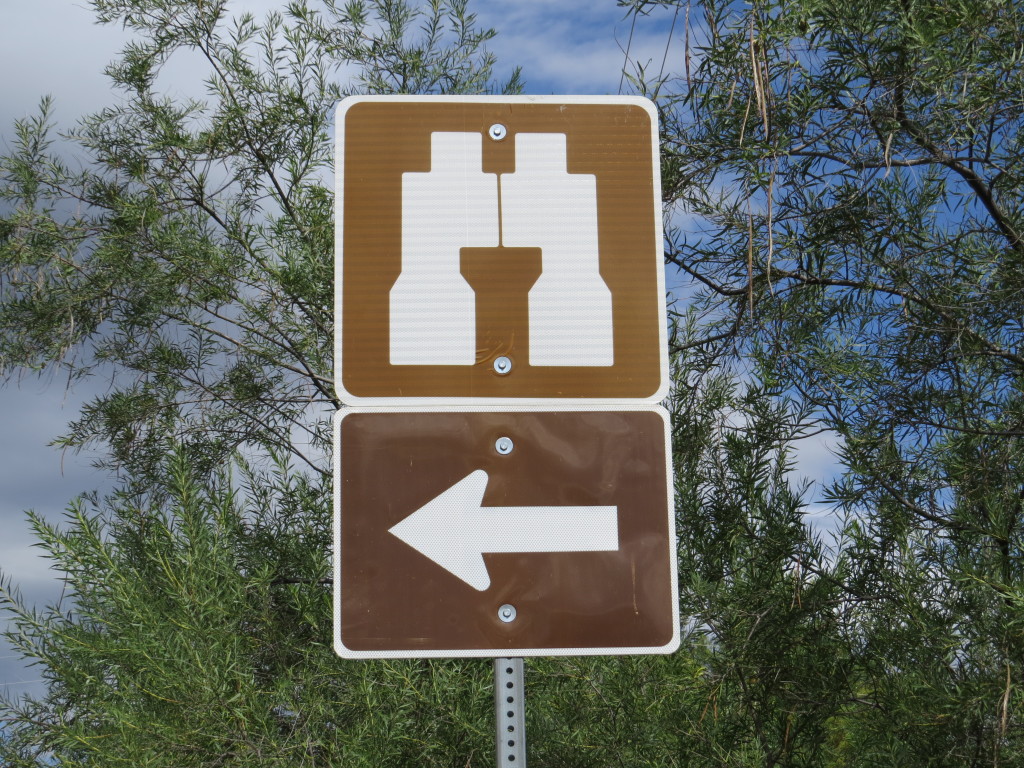
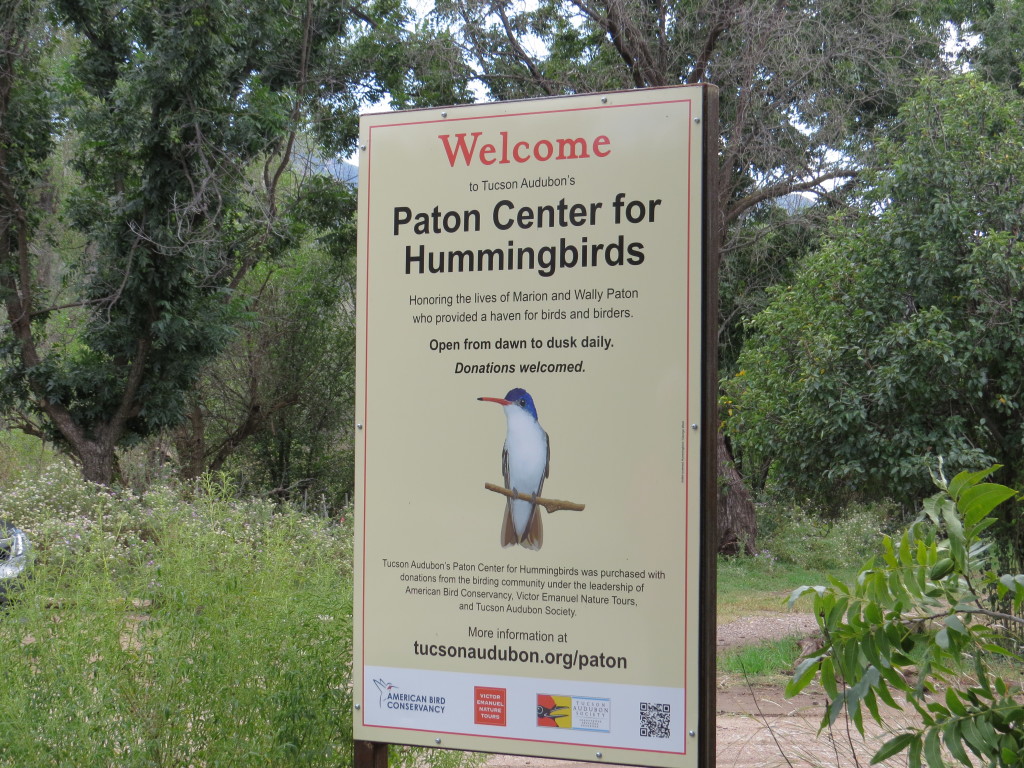 The famous Paton House–hard to believe I was actually here.
The famous Paton House–hard to believe I was actually here.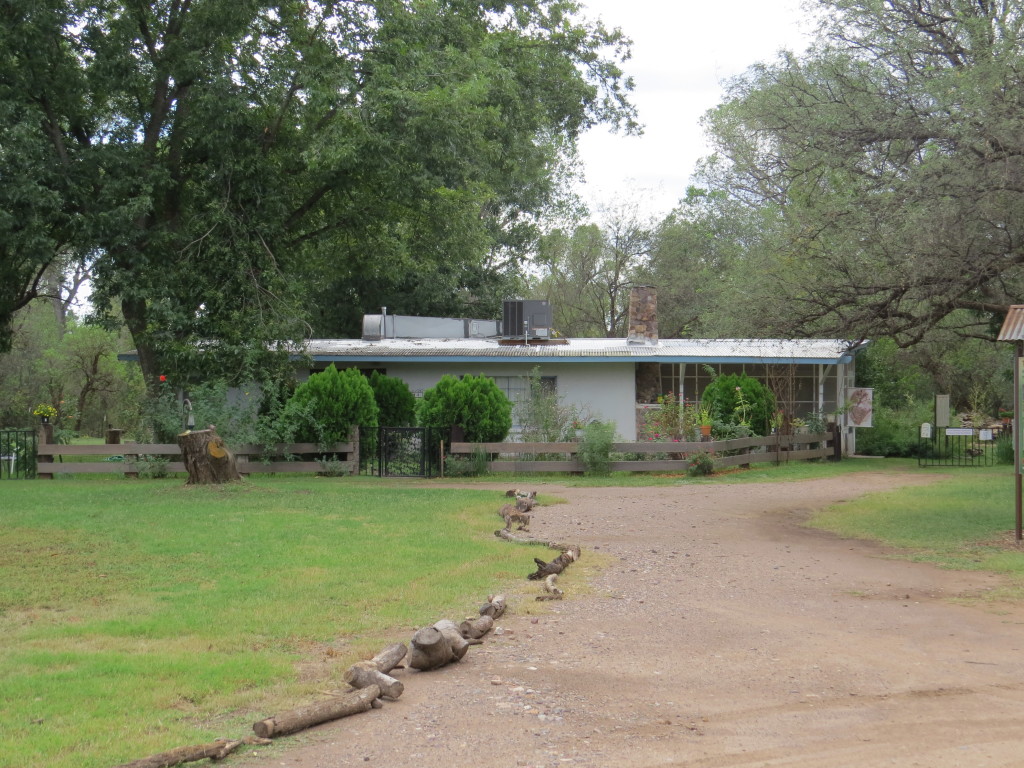 No, we didn’t come for the common White-winged Doves, though they were dapper and only the second time we’d seen one.
No, we didn’t come for the common White-winged Doves, though they were dapper and only the second time we’d seen one.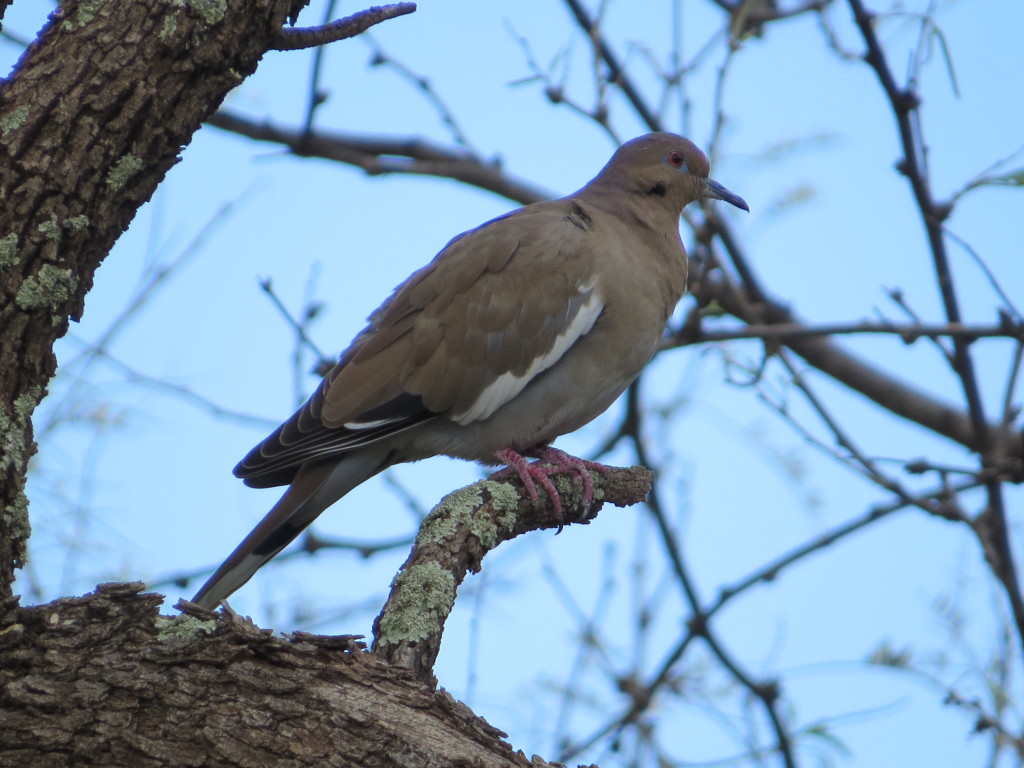 Nor did we come for the WWDO’s cousin, the much less abiding Inca Dove.
Nor did we come for the WWDO’s cousin, the much less abiding Inca Dove.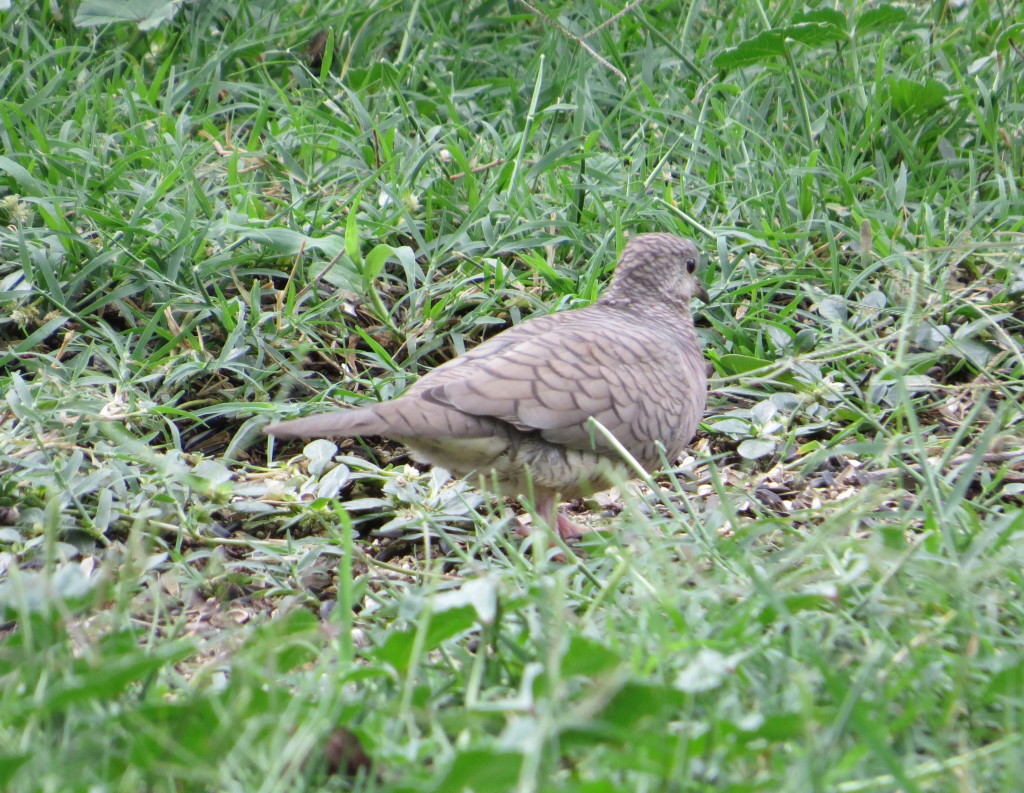 It was nice to see a Black-headed Grosbeak even if it was a bit scruffy looking, but that’s still not why we came.
It was nice to see a Black-headed Grosbeak even if it was a bit scruffy looking, but that’s still not why we came.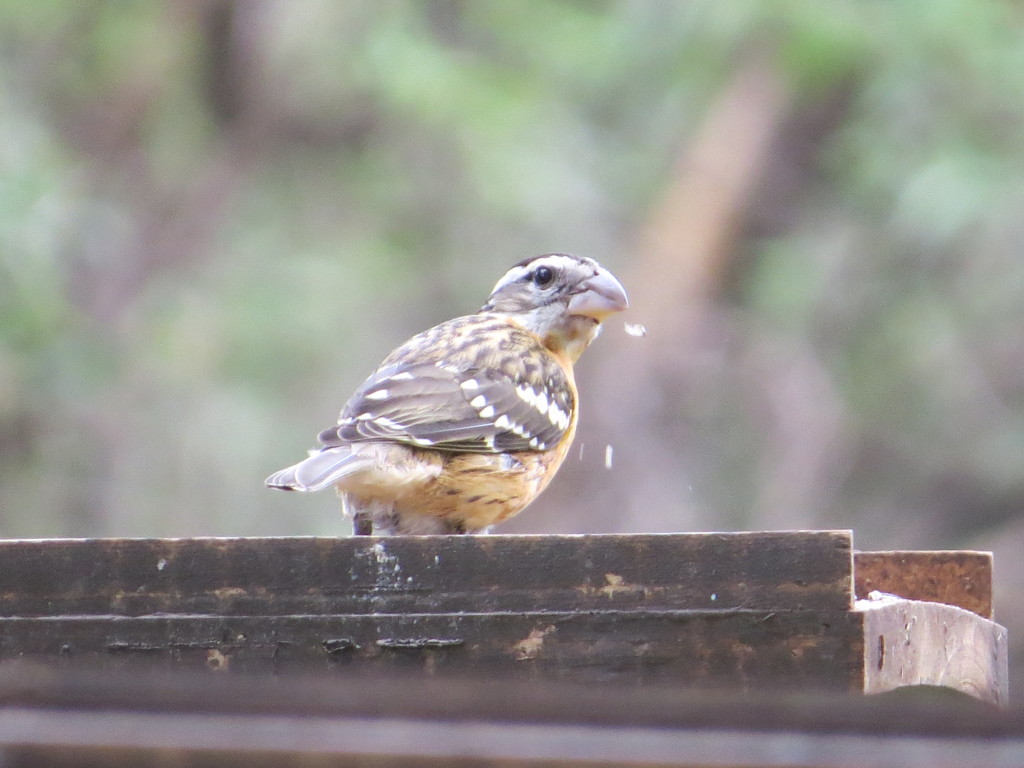
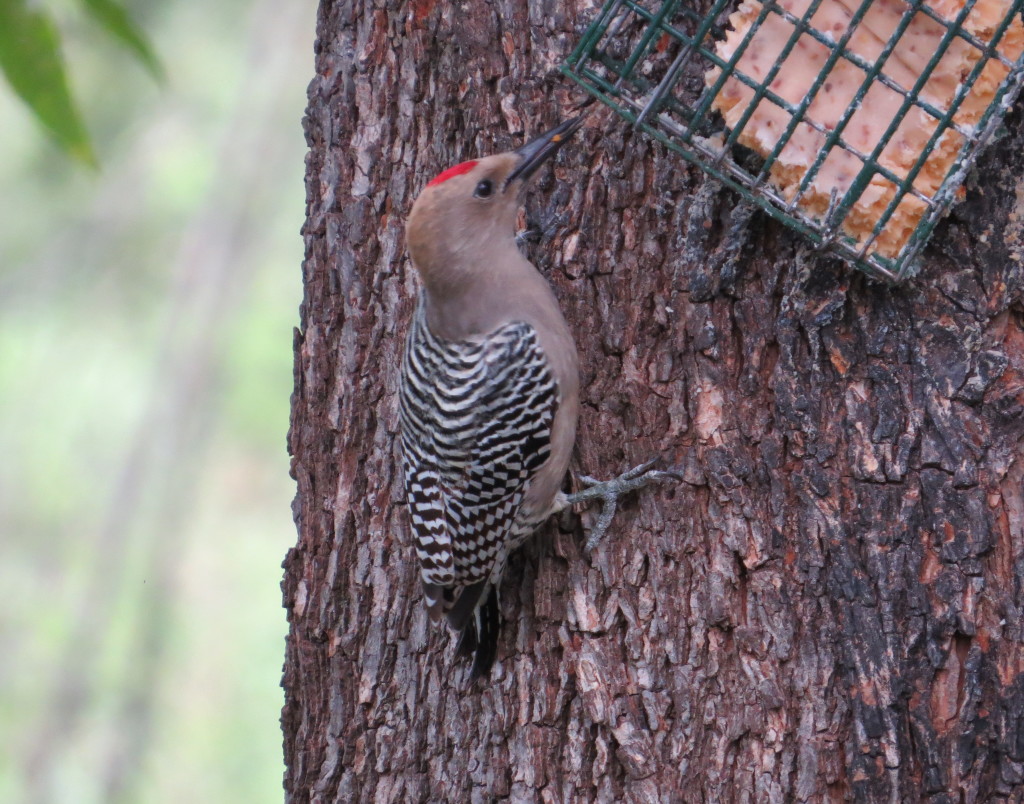 We came for the Hummingbirds. But not for the Broad-billed.
We came for the Hummingbirds. But not for the Broad-billed.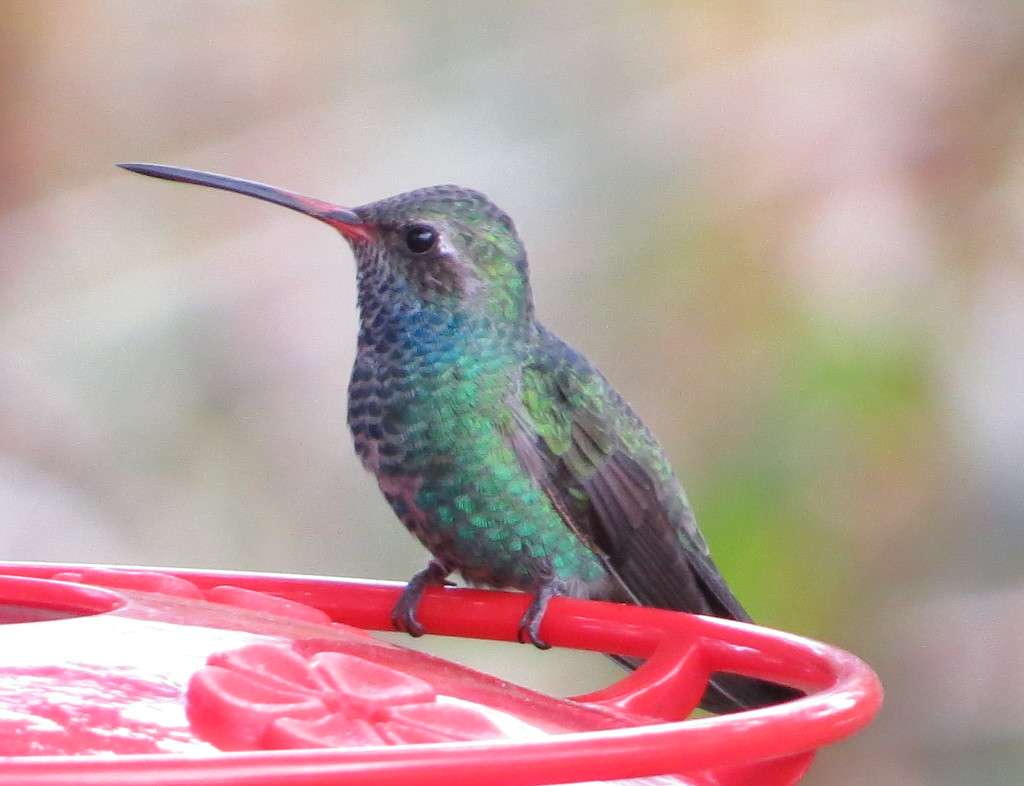
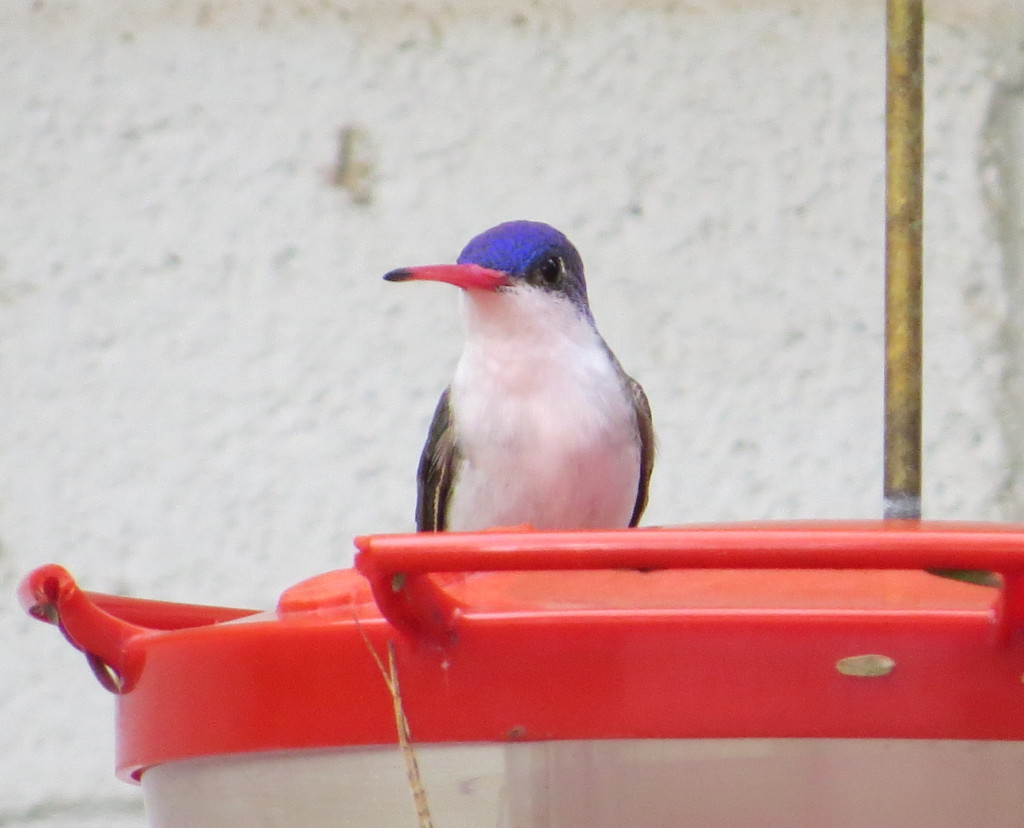 Ain’t it a beaut?
Ain’t it a beaut?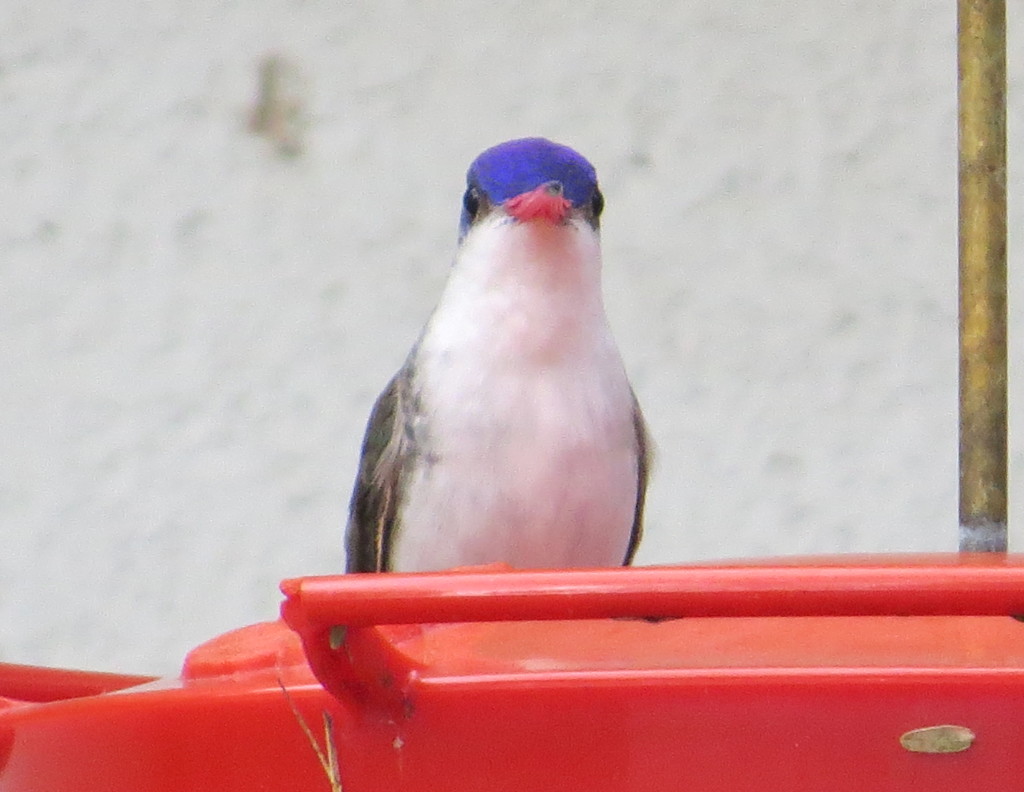 It knows it too. Like Orcas or Dolphins, it pandered to its gawking audience.
It knows it too. Like Orcas or Dolphins, it pandered to its gawking audience.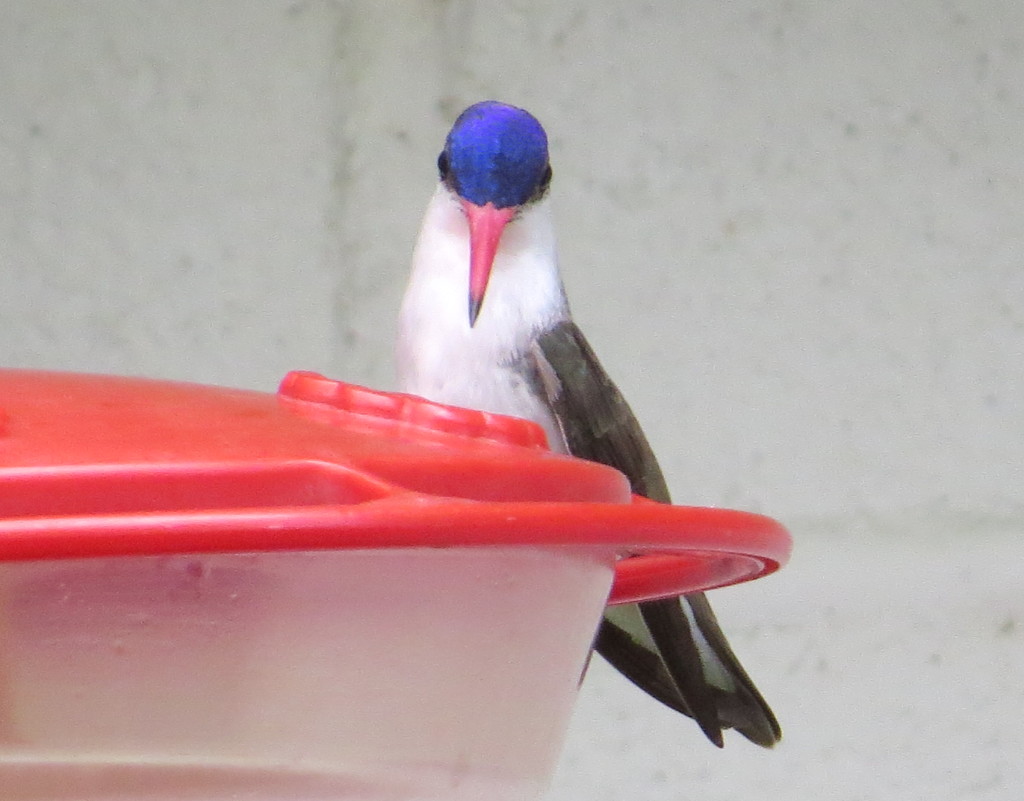 So that was that. Tommy DeBardeleben and Gordon Karre had told me about a much rarer Hummer, the Plain-capped Starthroat, that had been seen regularly somewhere in Patagonia. Not knowing exactly where to go for it and not feeling I could make yet another birding stop with the non-birding family, I didn’t even bother to check into it.
So that was that. Tommy DeBardeleben and Gordon Karre had told me about a much rarer Hummer, the Plain-capped Starthroat, that had been seen regularly somewhere in Patagonia. Not knowing exactly where to go for it and not feeling I could make yet another birding stop with the non-birding family, I didn’t even bother to check into it.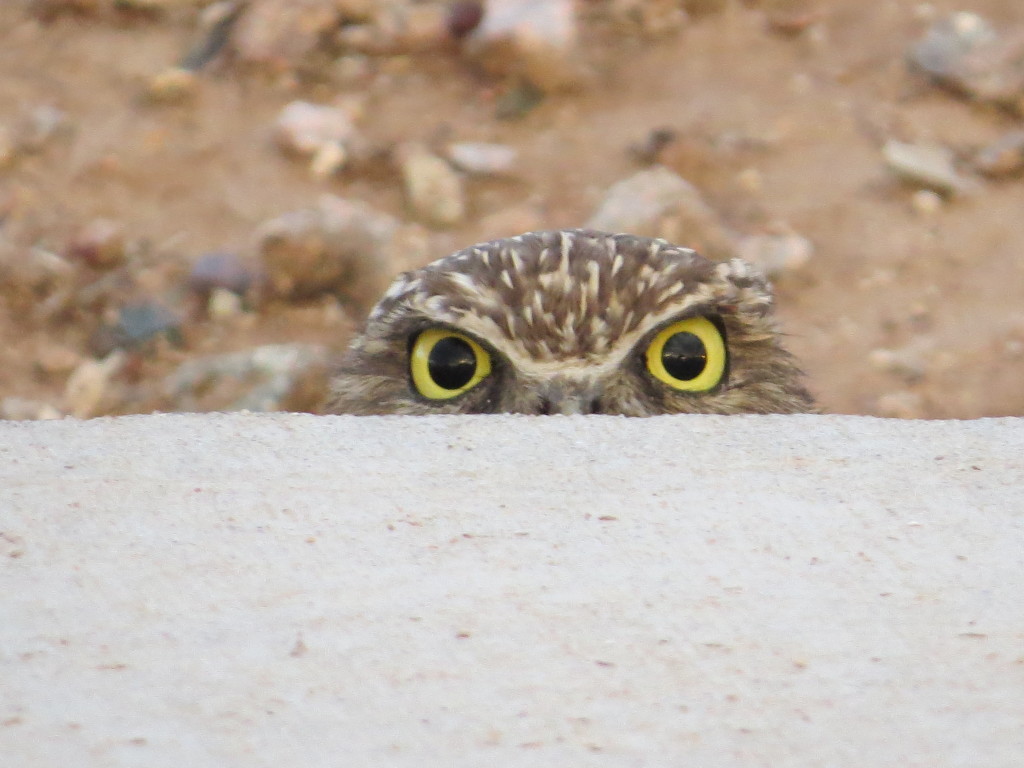 Scanning a residential pond in the low light of the evening, I was excited to see the brilliant pop of color of the male Vermilion Flycatcher in my binoculars. They never get old.
Scanning a residential pond in the low light of the evening, I was excited to see the brilliant pop of color of the male Vermilion Flycatcher in my binoculars. They never get old.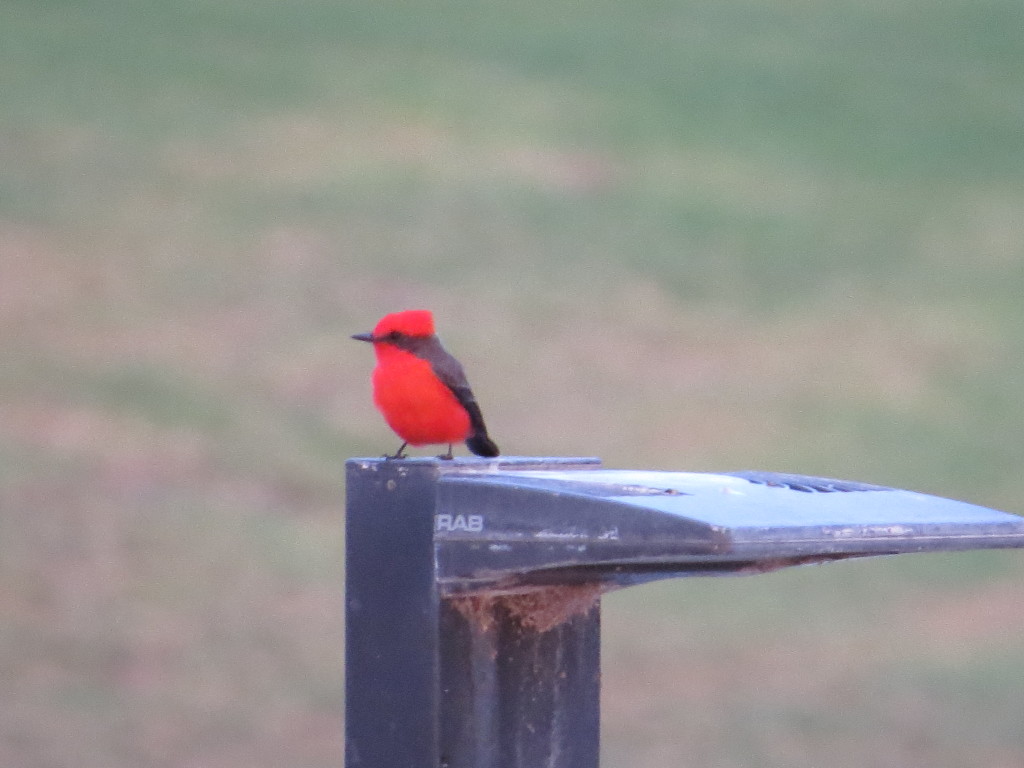 We also saw a Jackrabbit of some sort which was a cool experience.
We also saw a Jackrabbit of some sort which was a cool experience.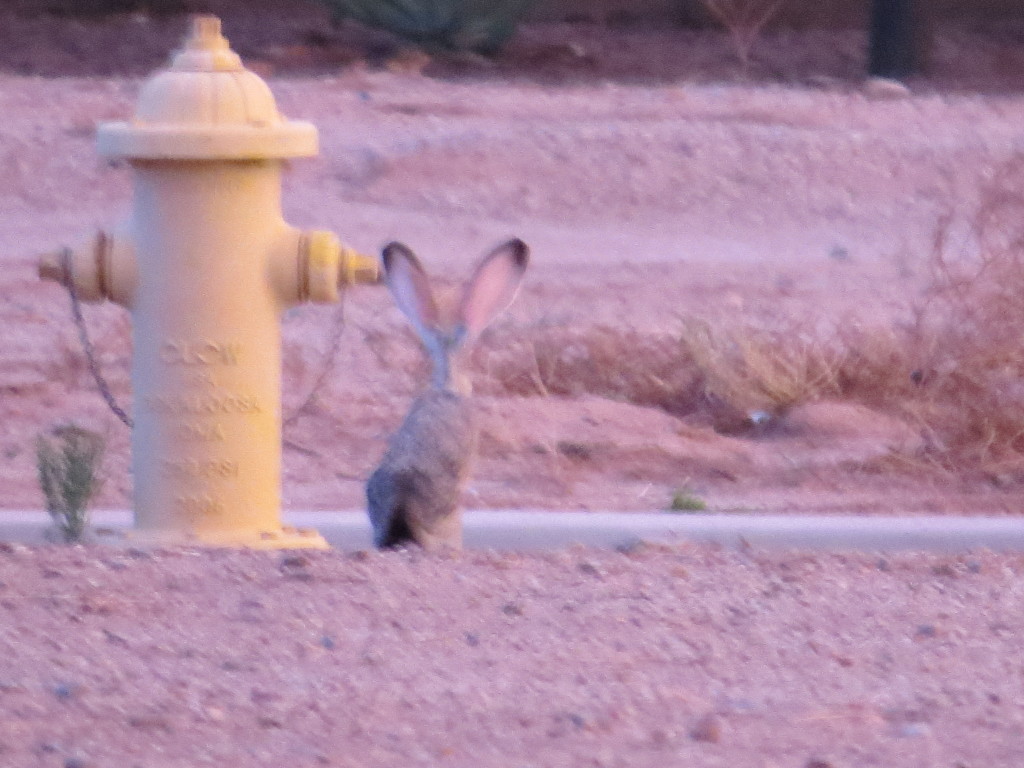 The Arizona fun isn’t over. Next up is the final post and arguably the ugliest and cutest birds you will see.
The Arizona fun isn’t over. Next up is the final post and arguably the ugliest and cutest birds you will see.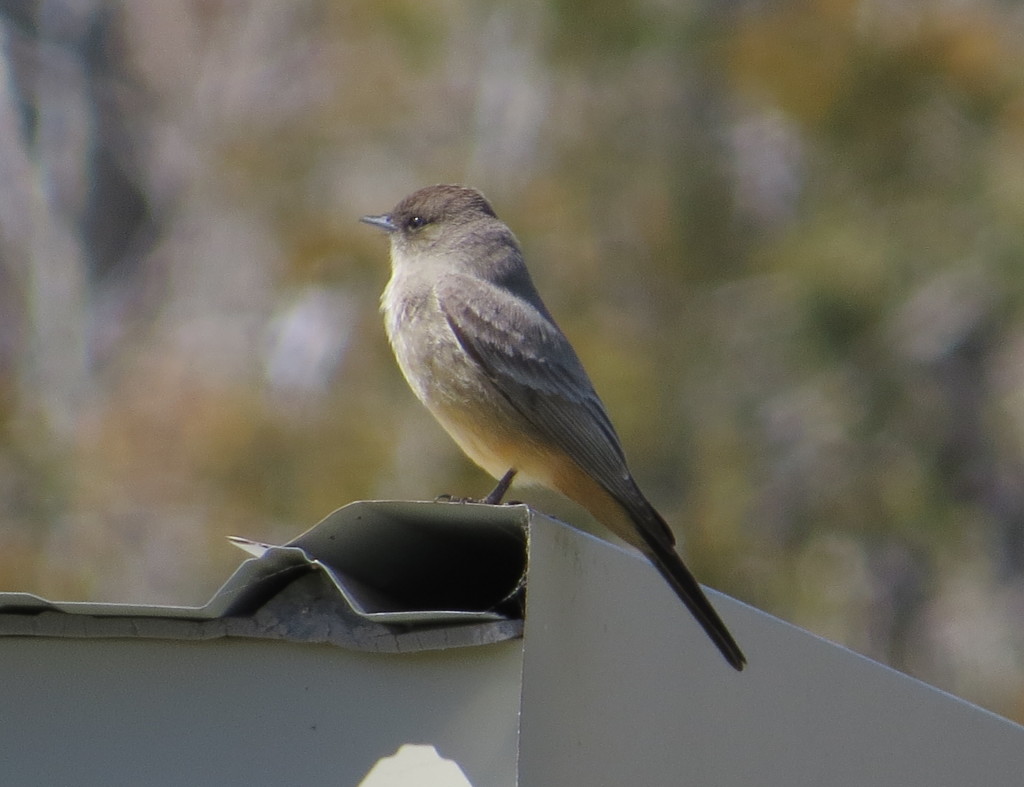
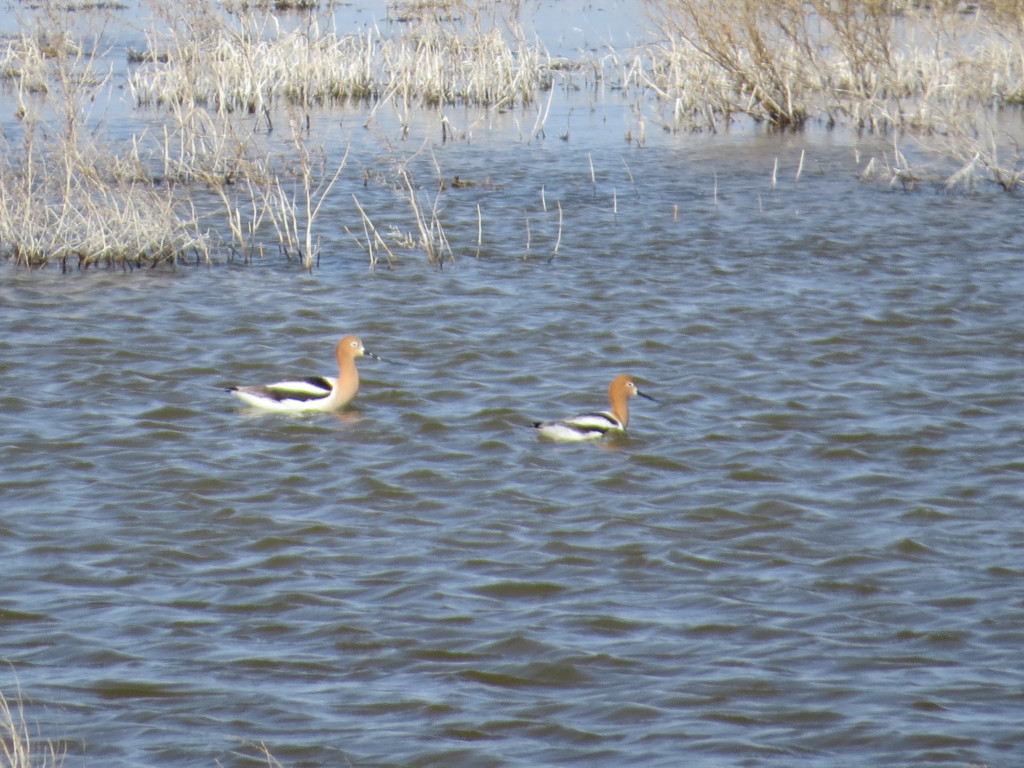
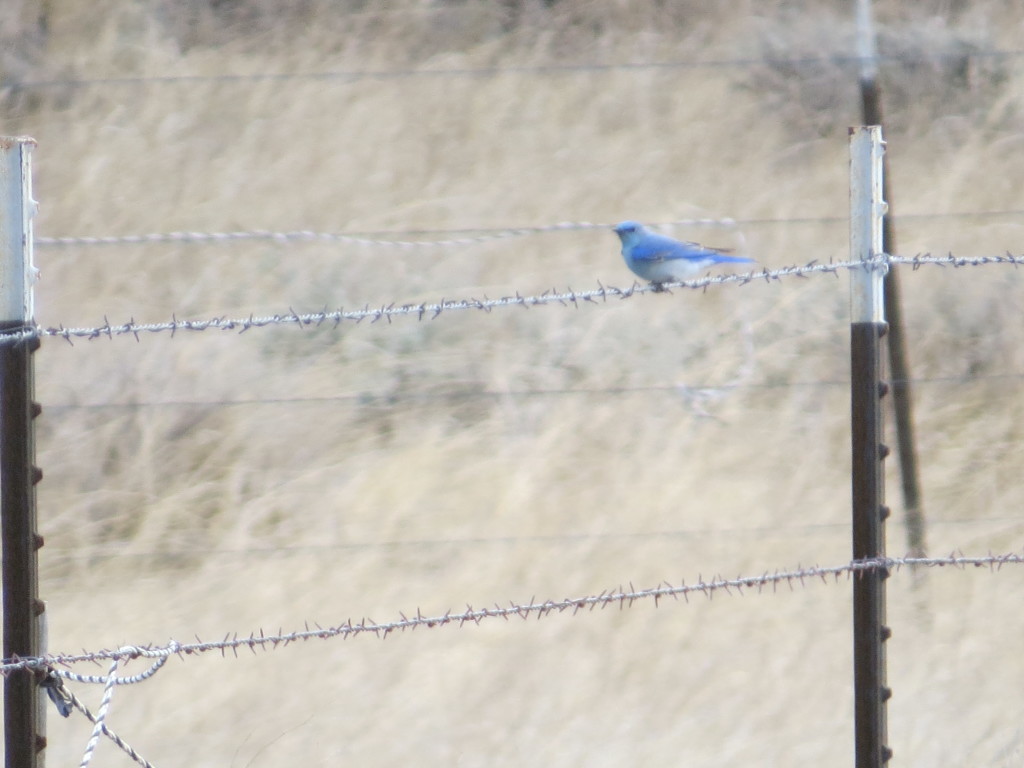
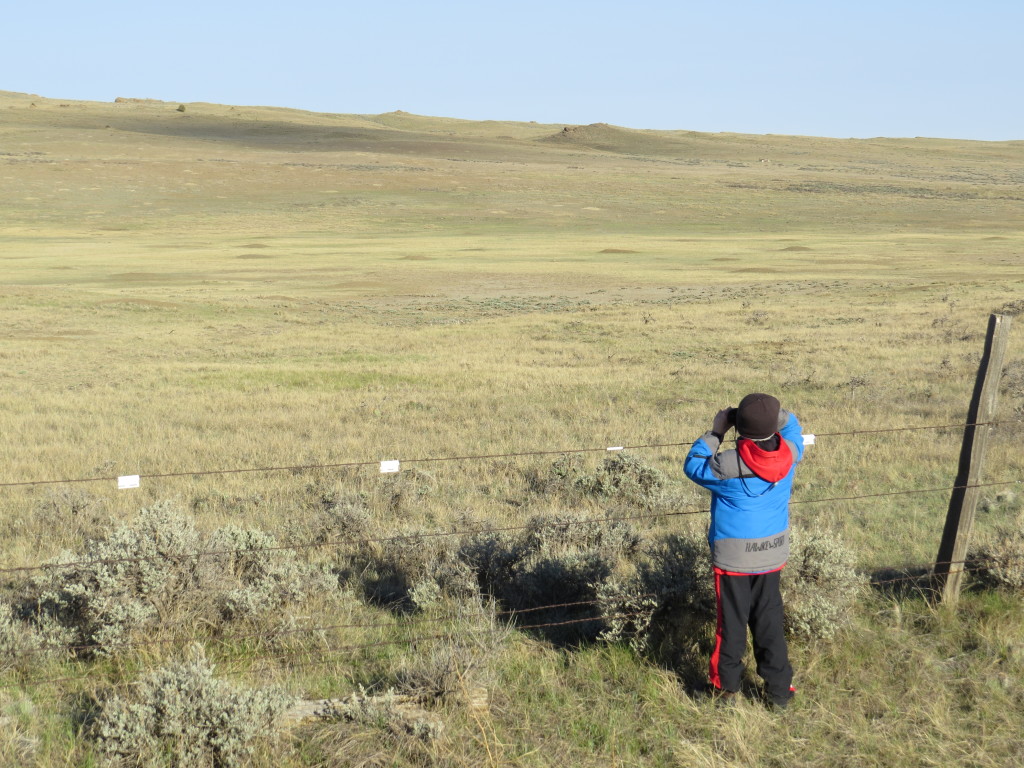
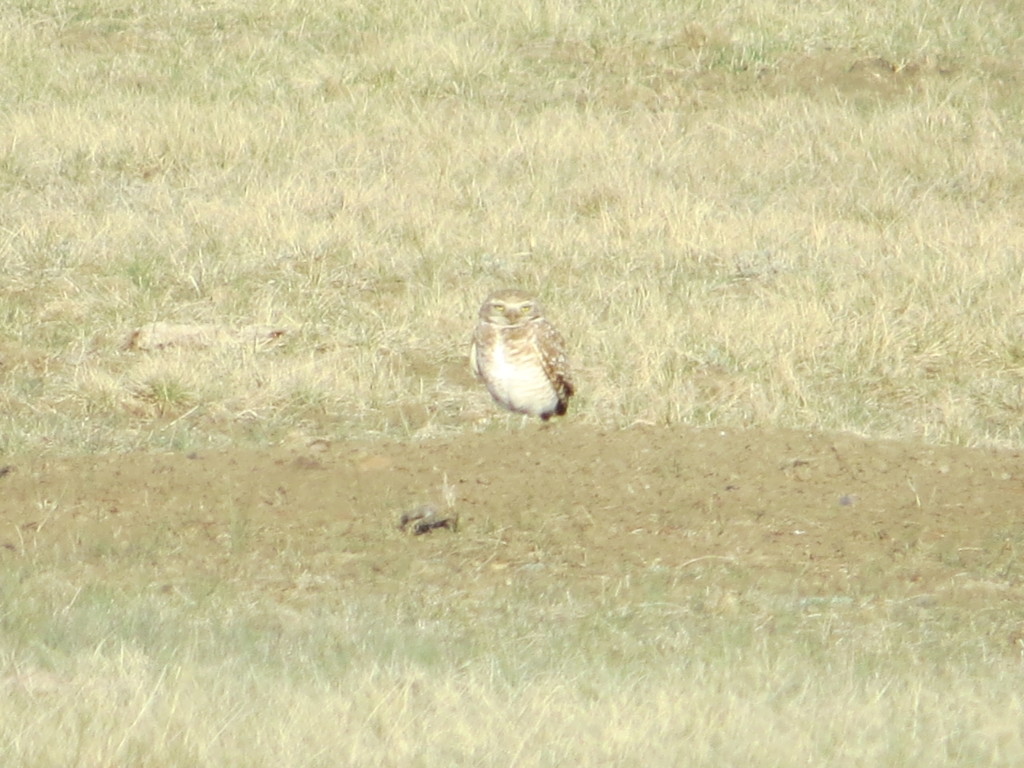
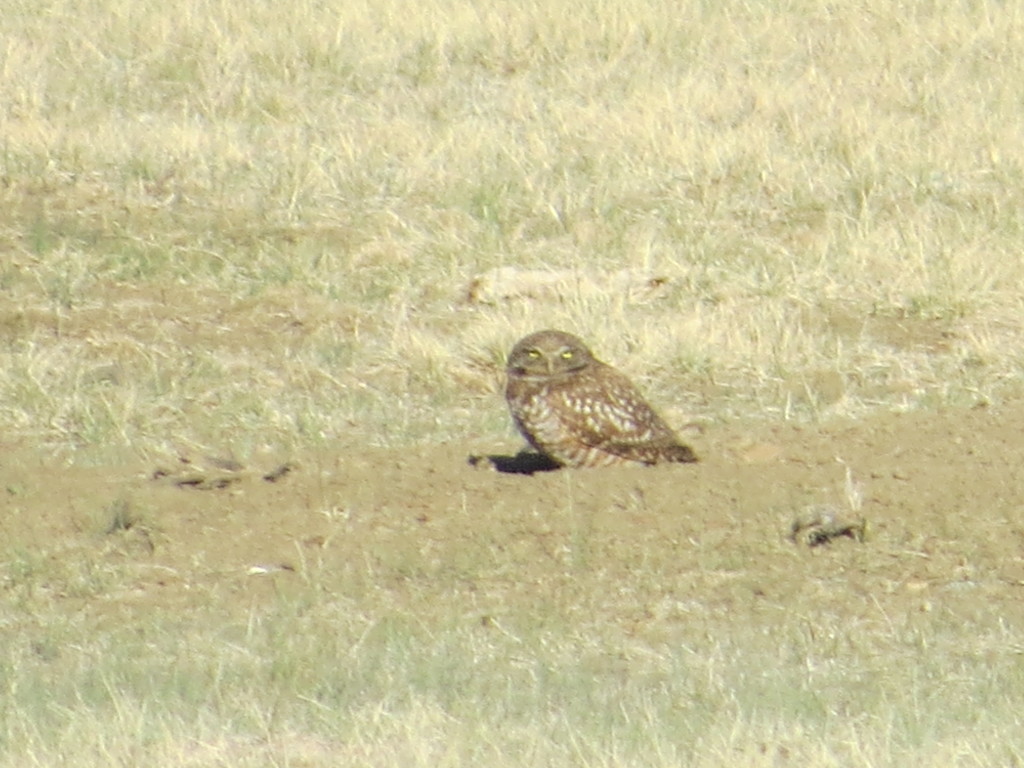
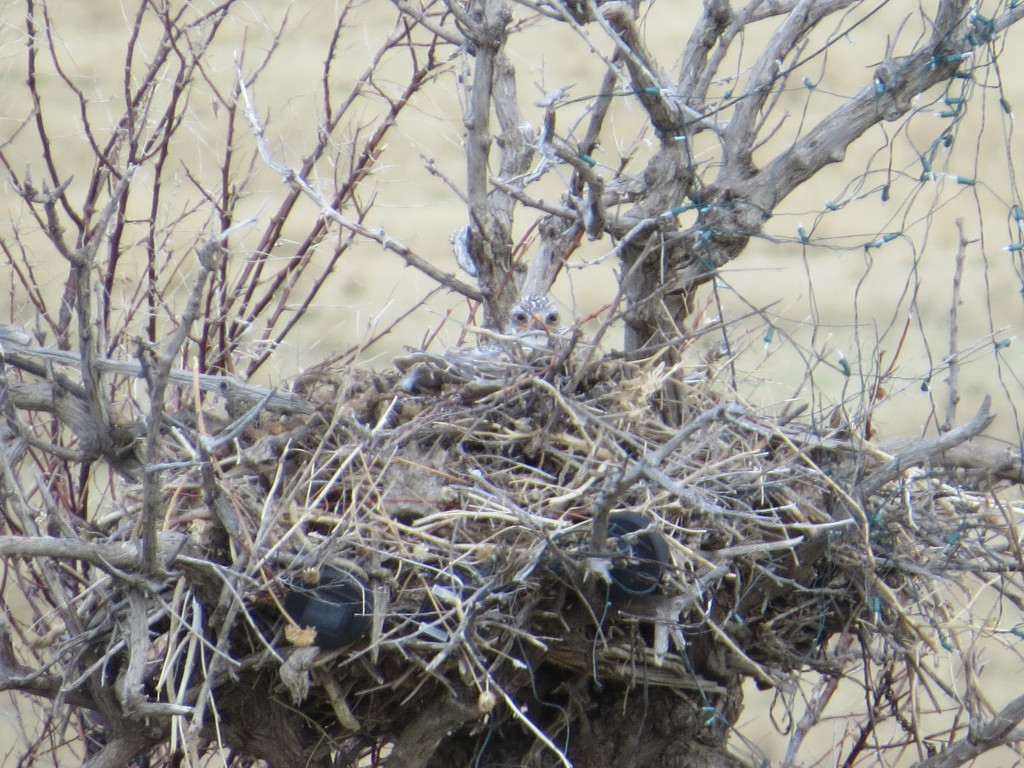
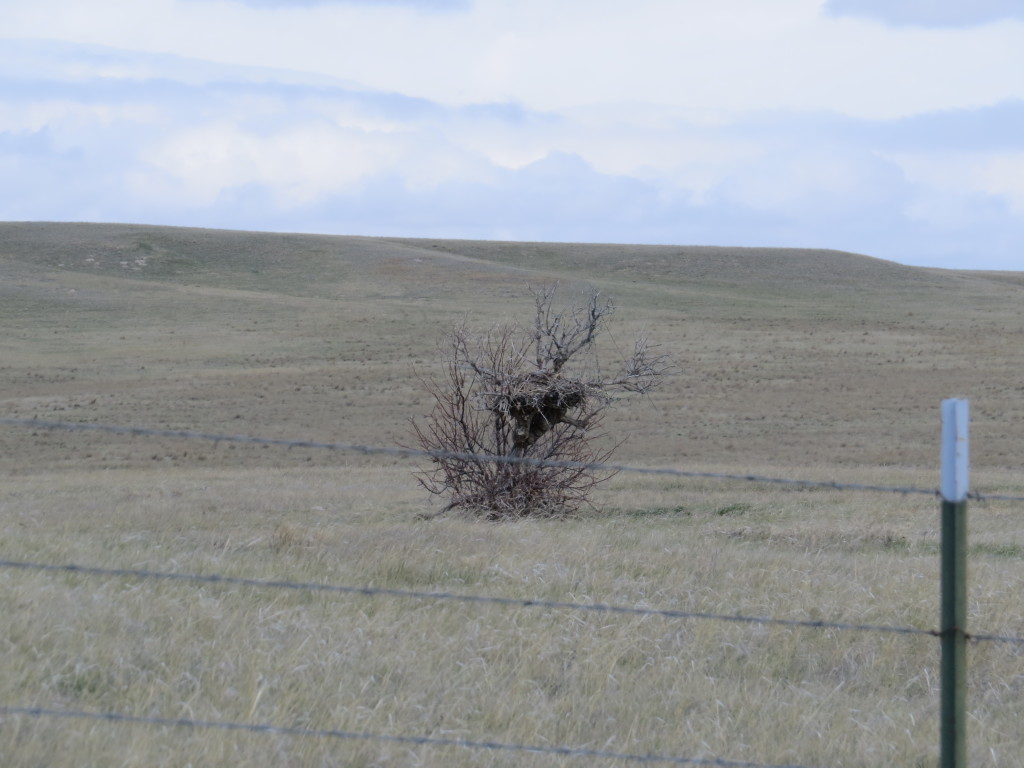
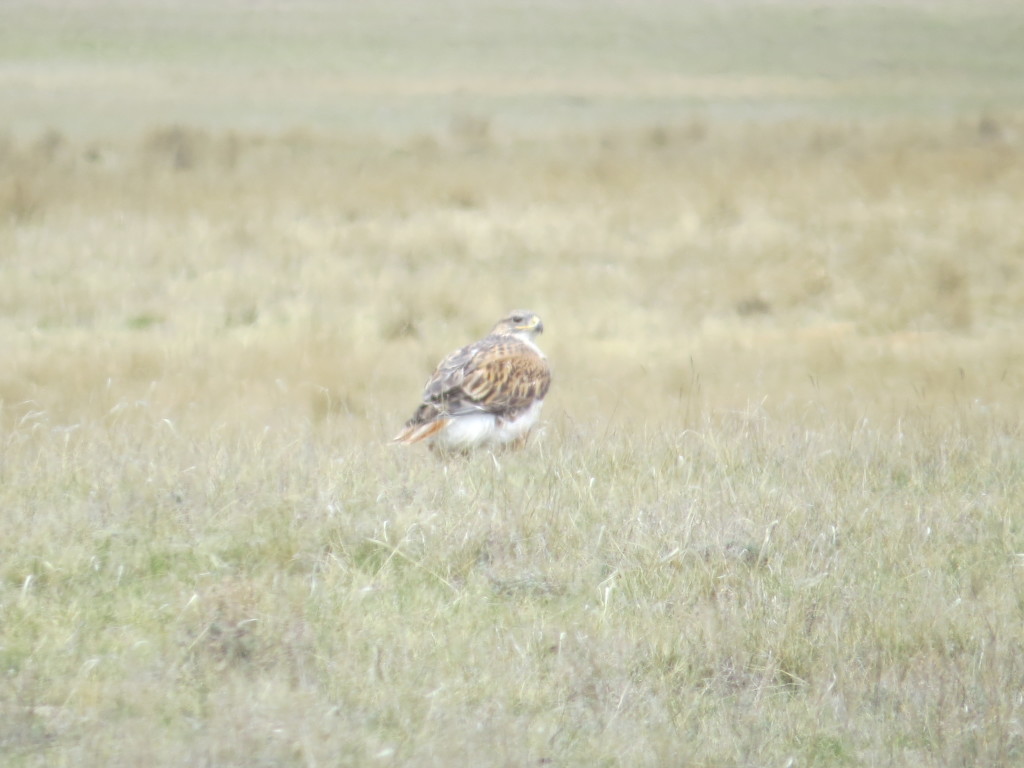 It was fun to see the male exhibiting the behavior described in the field guide, which is sitting out in the open on the ground and always in a perfect western setting.
It was fun to see the male exhibiting the behavior described in the field guide, which is sitting out in the open on the ground and always in a perfect western setting.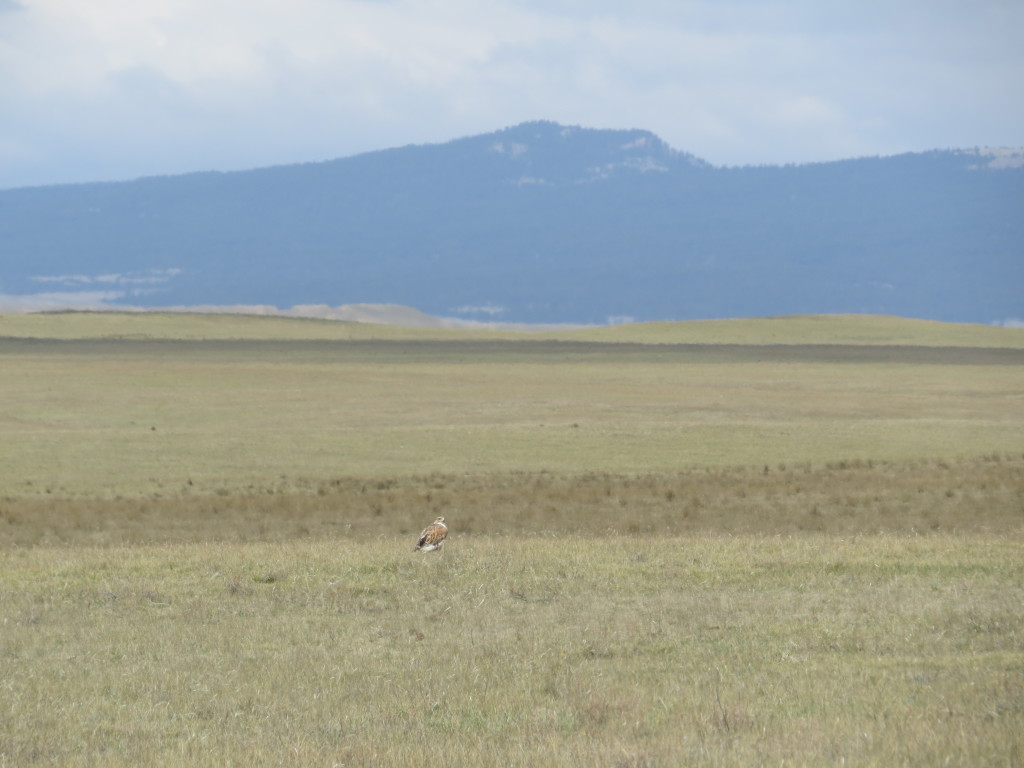
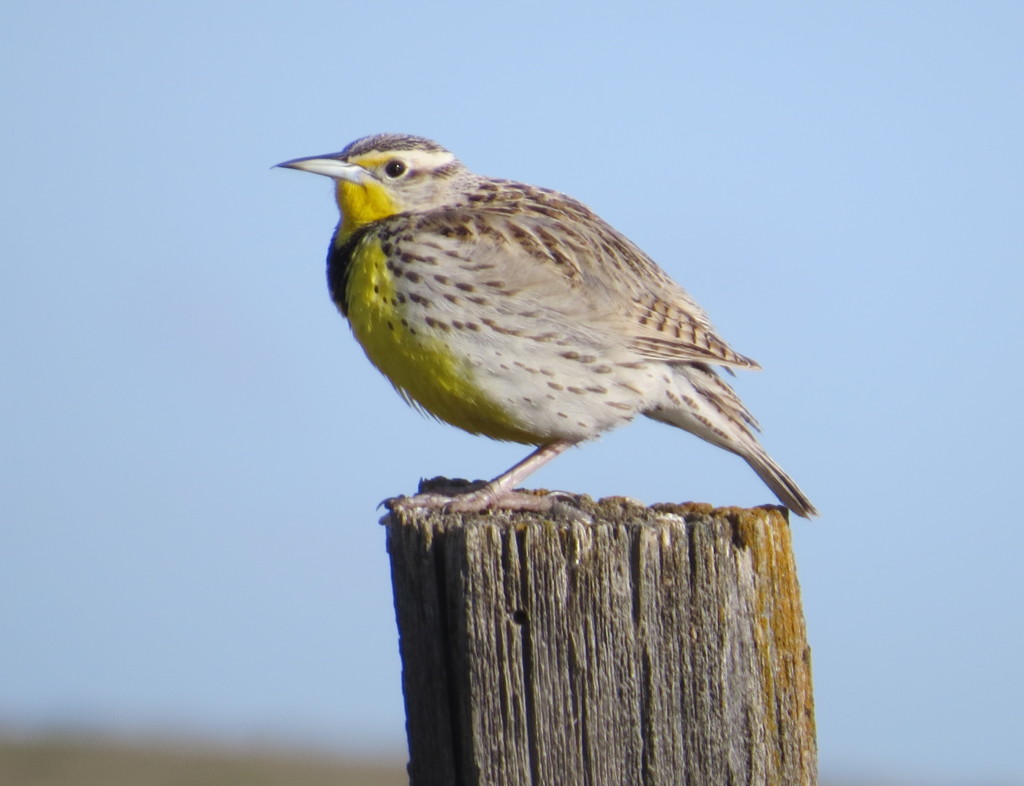
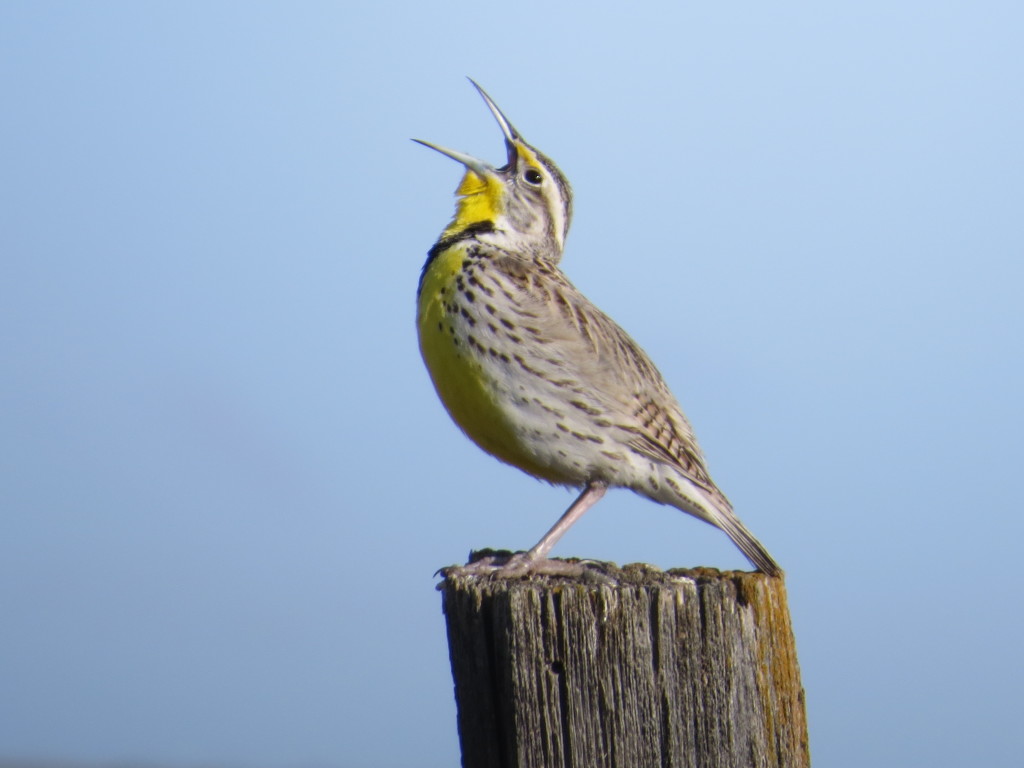
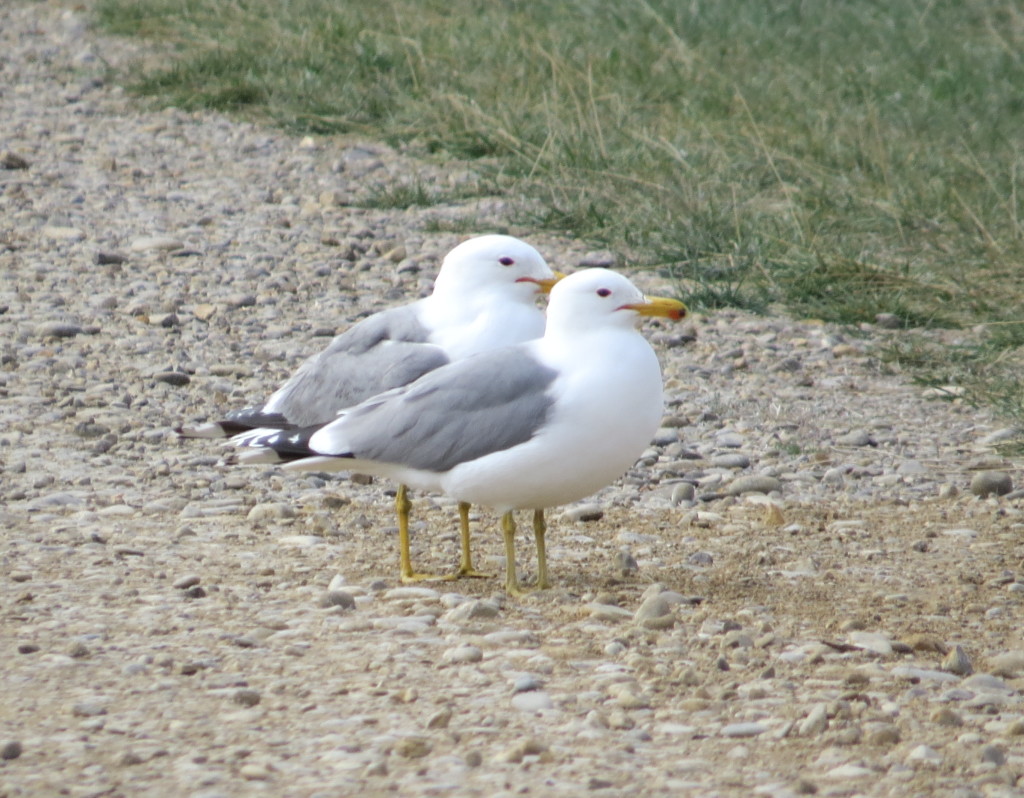
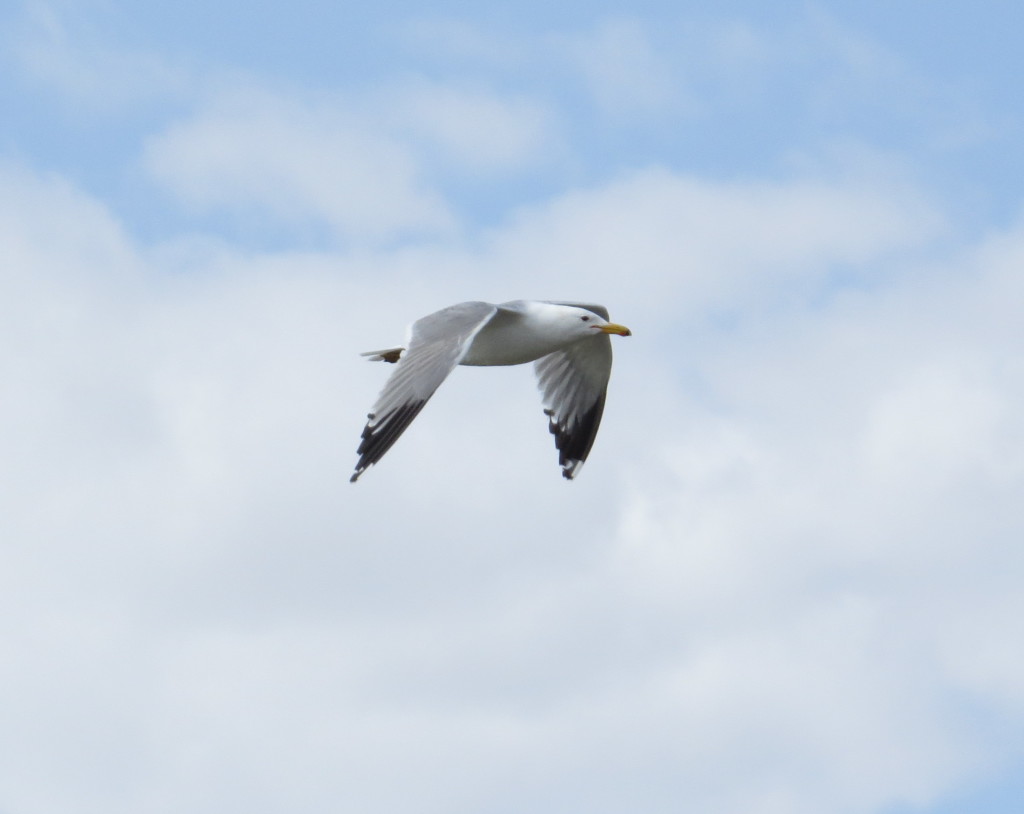
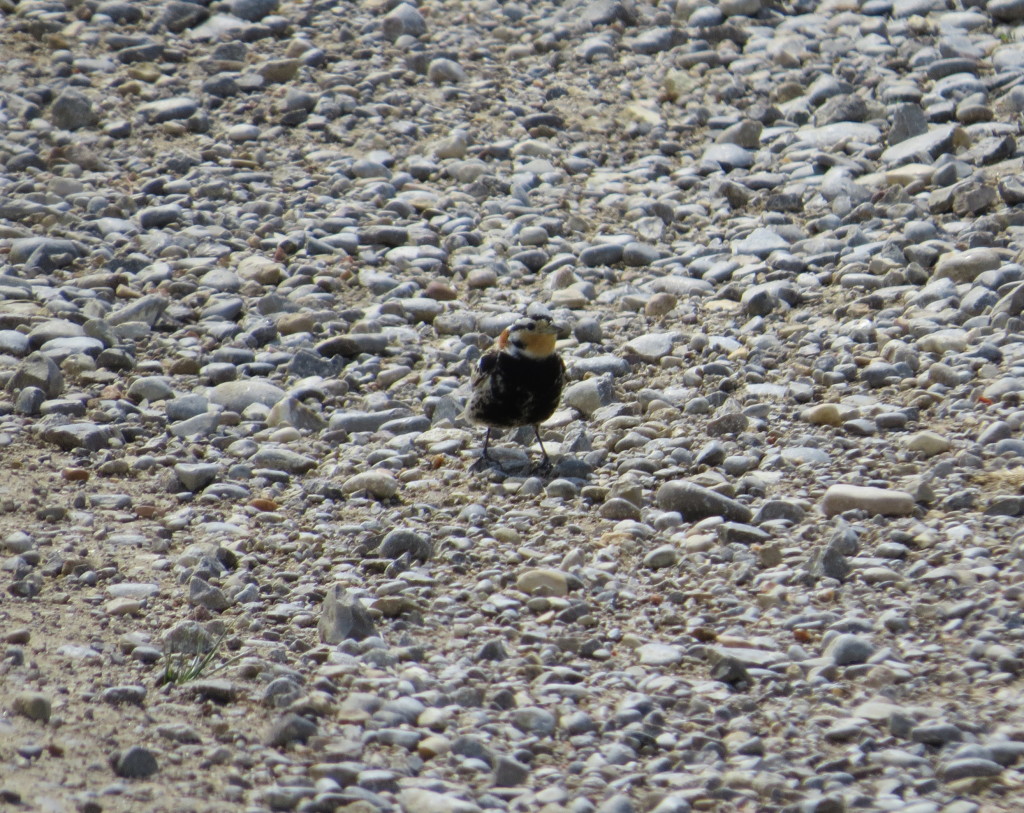
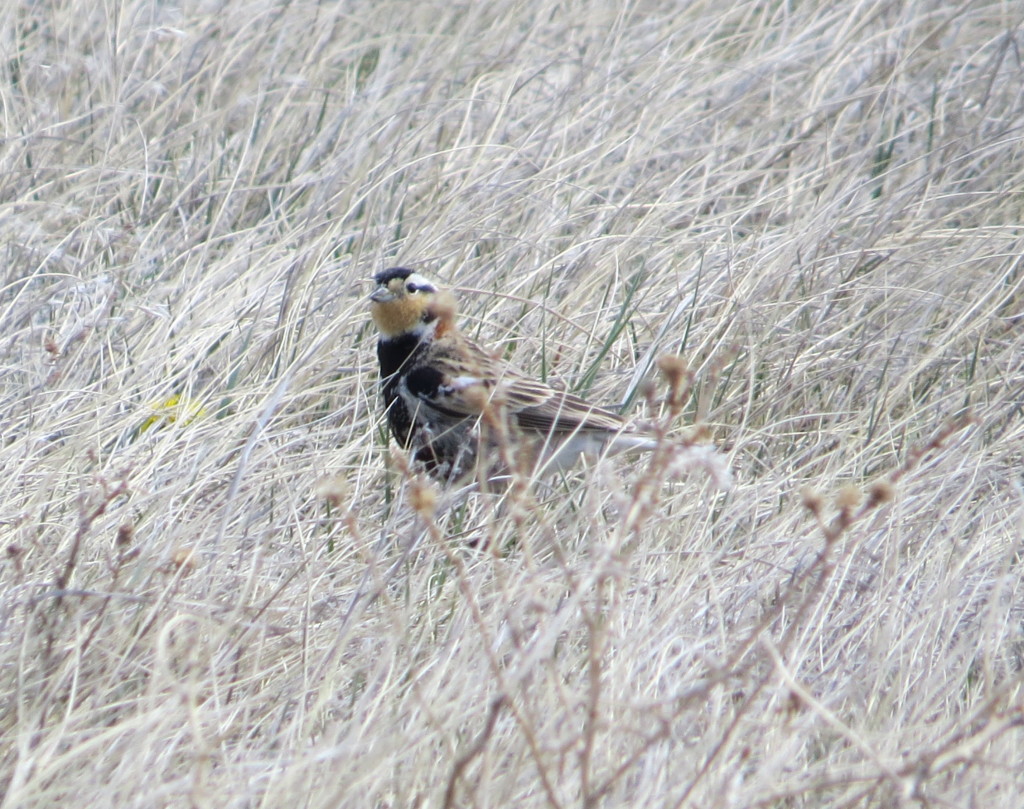 I don’t recall the name of the road we traveled where we saw this Chestnut-collared Longspur, but whatever it’s called, I’ve dubbed it Longspur Road.
I don’t recall the name of the road we traveled where we saw this Chestnut-collared Longspur, but whatever it’s called, I’ve dubbed it Longspur Road.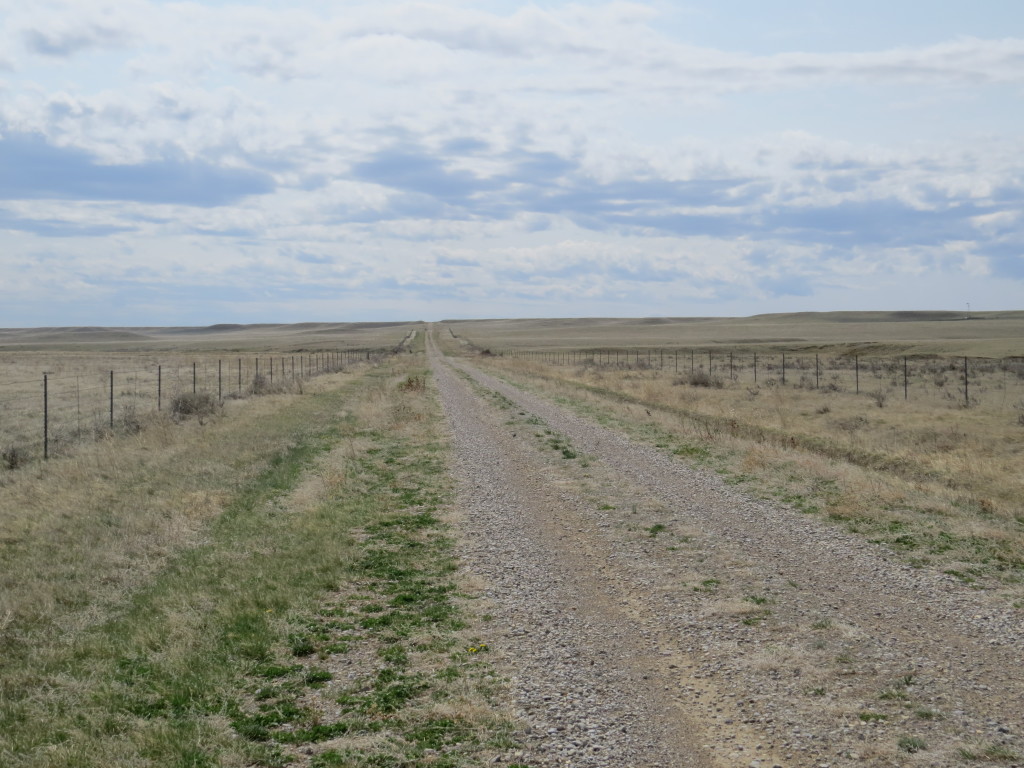
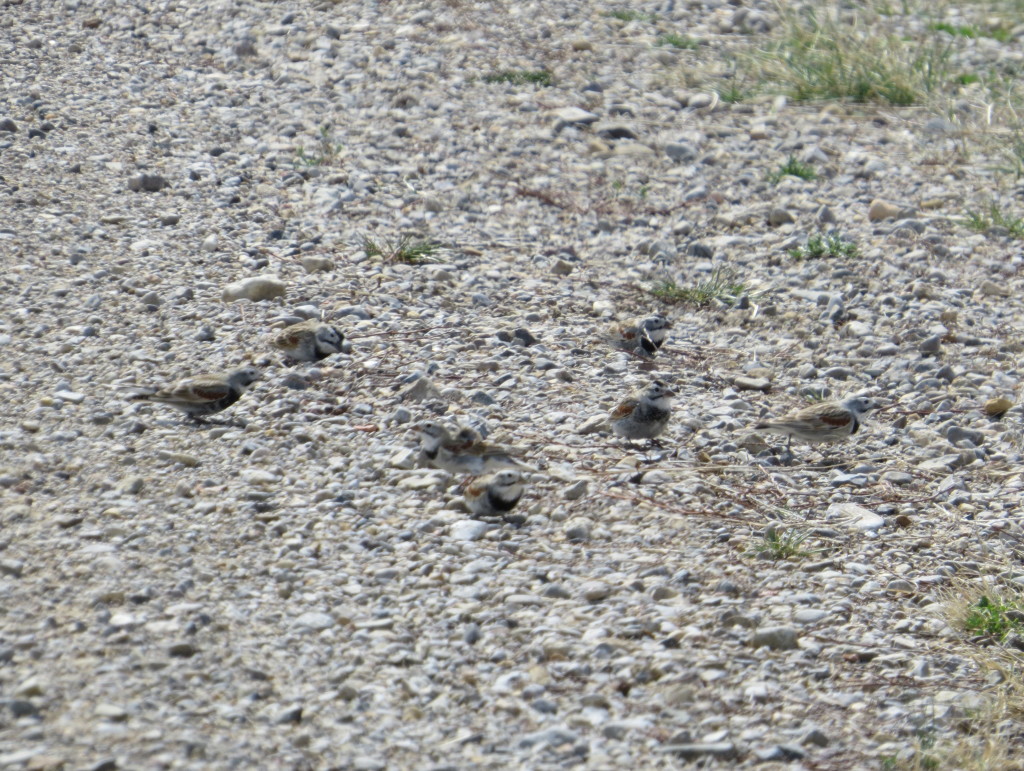
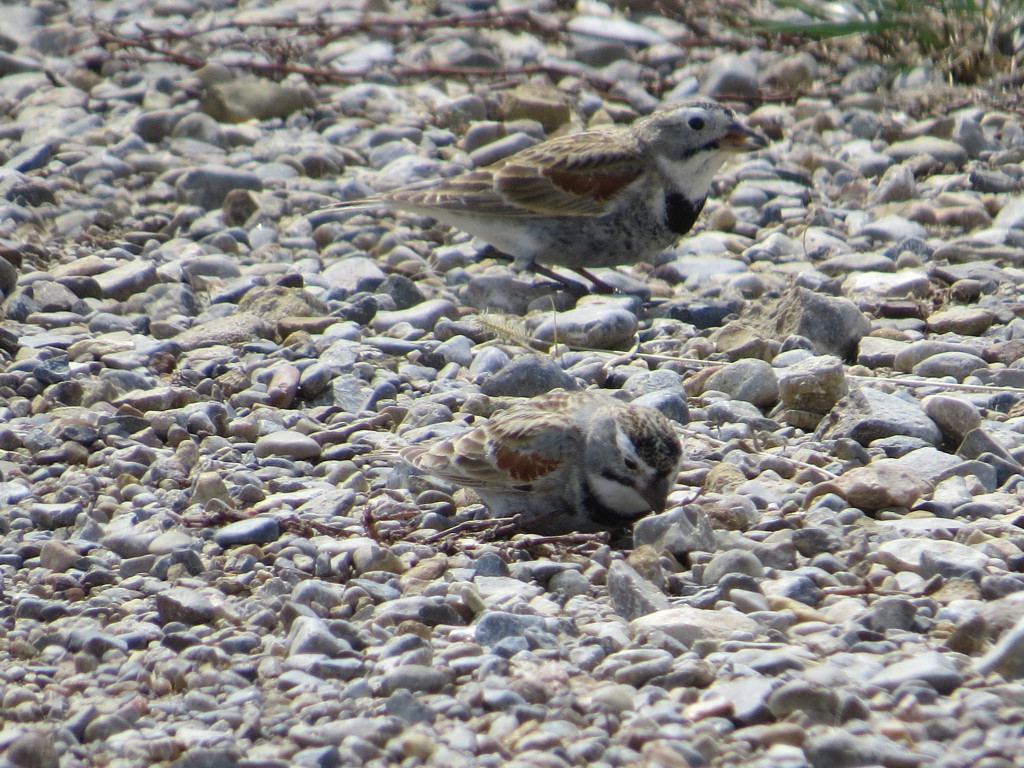
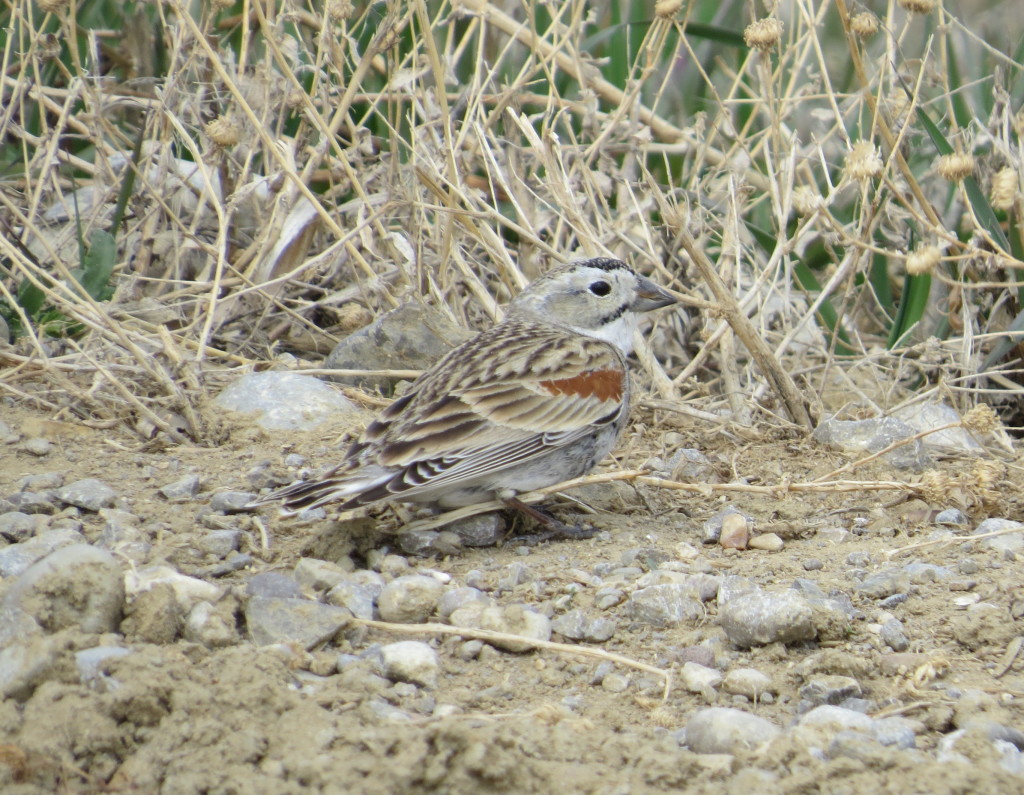
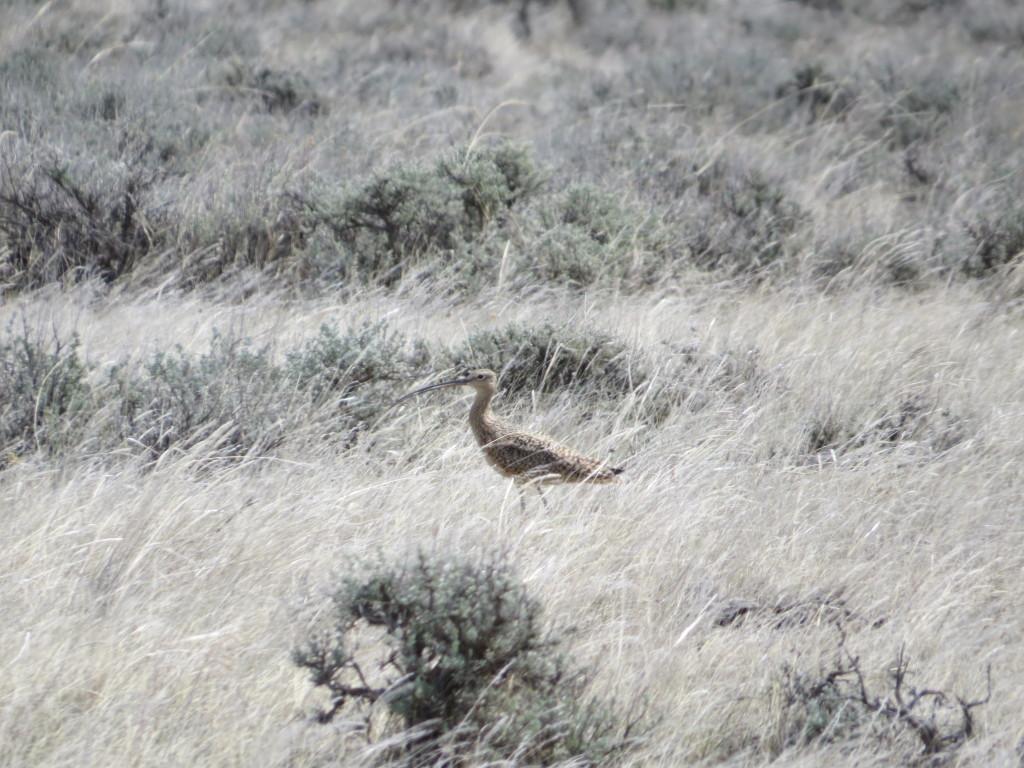
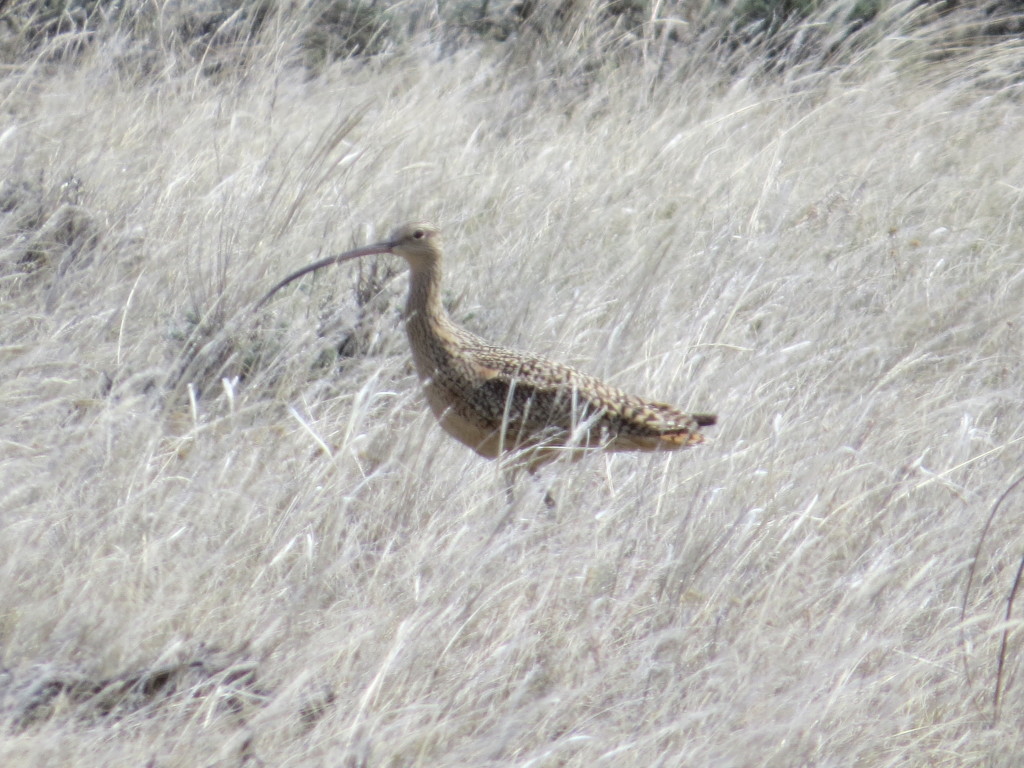 We ended up seeing a second Curlew a little later, but neither were very photogenic.
We ended up seeing a second Curlew a little later, but neither were very photogenic.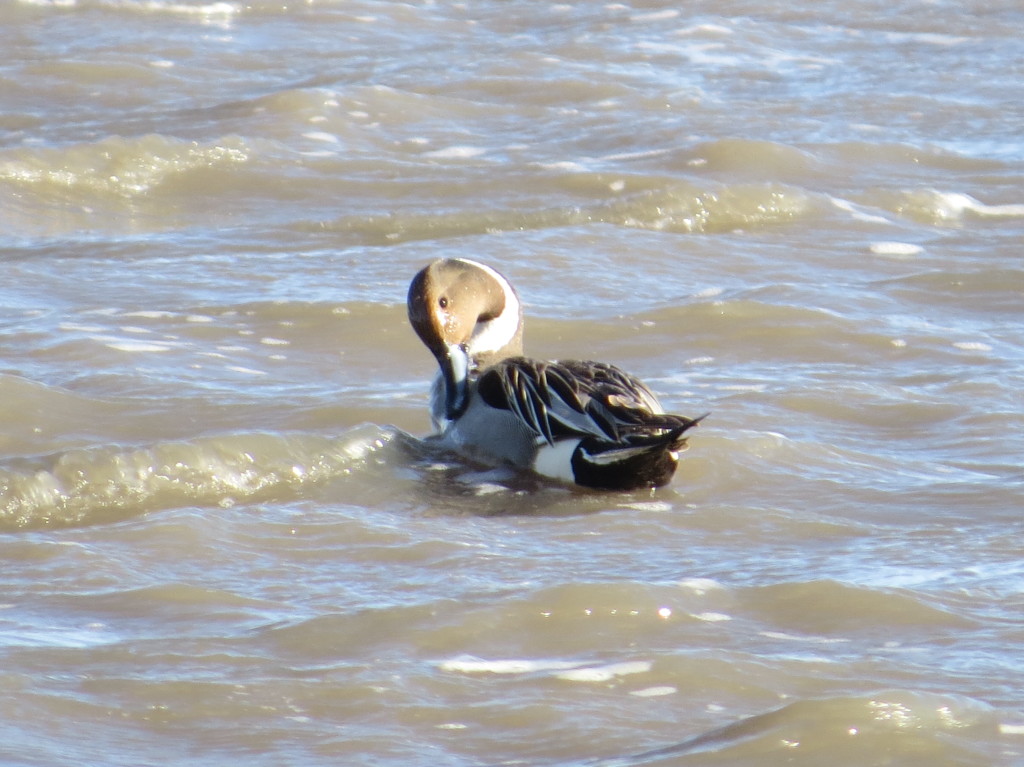
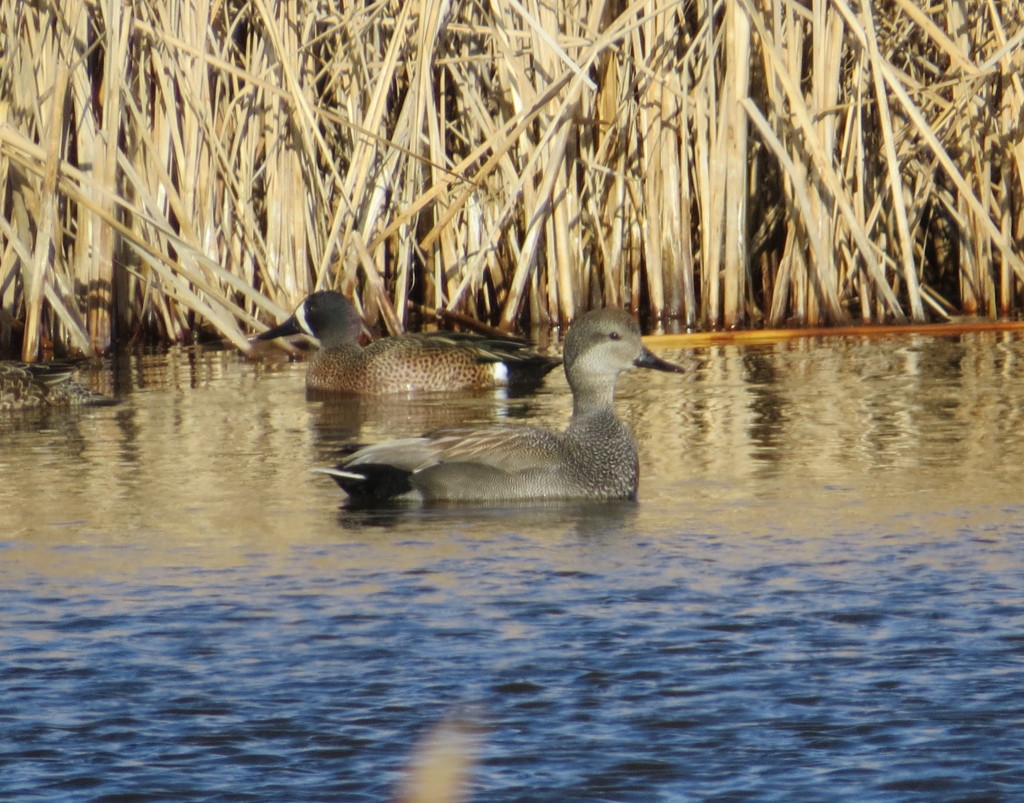
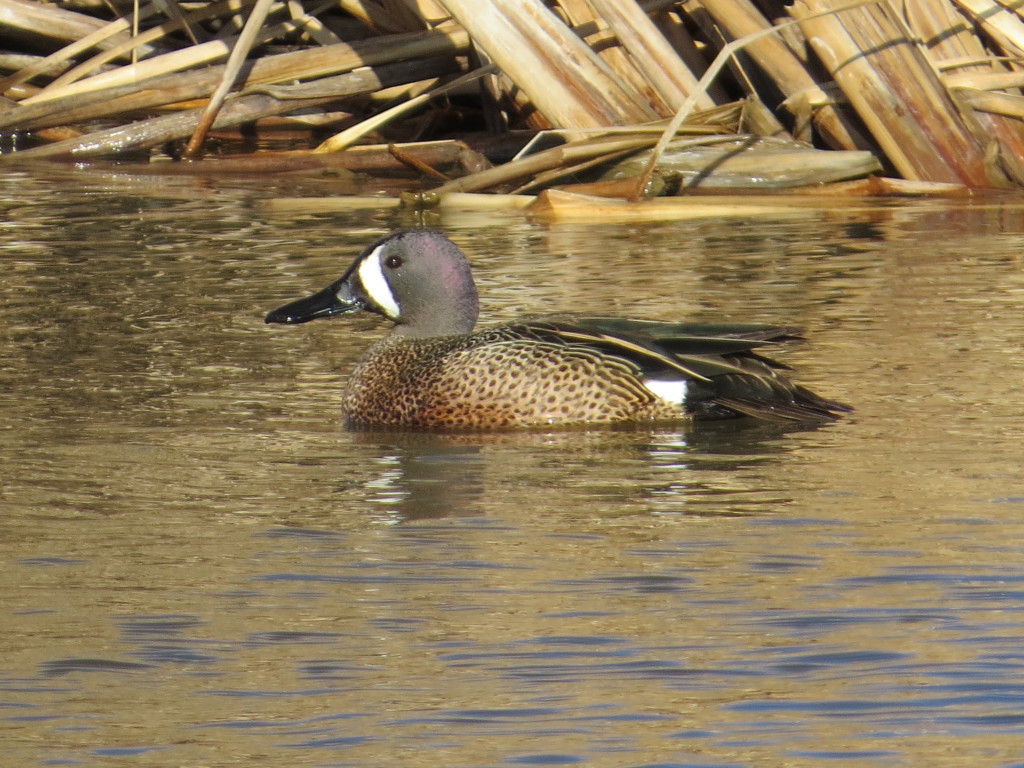

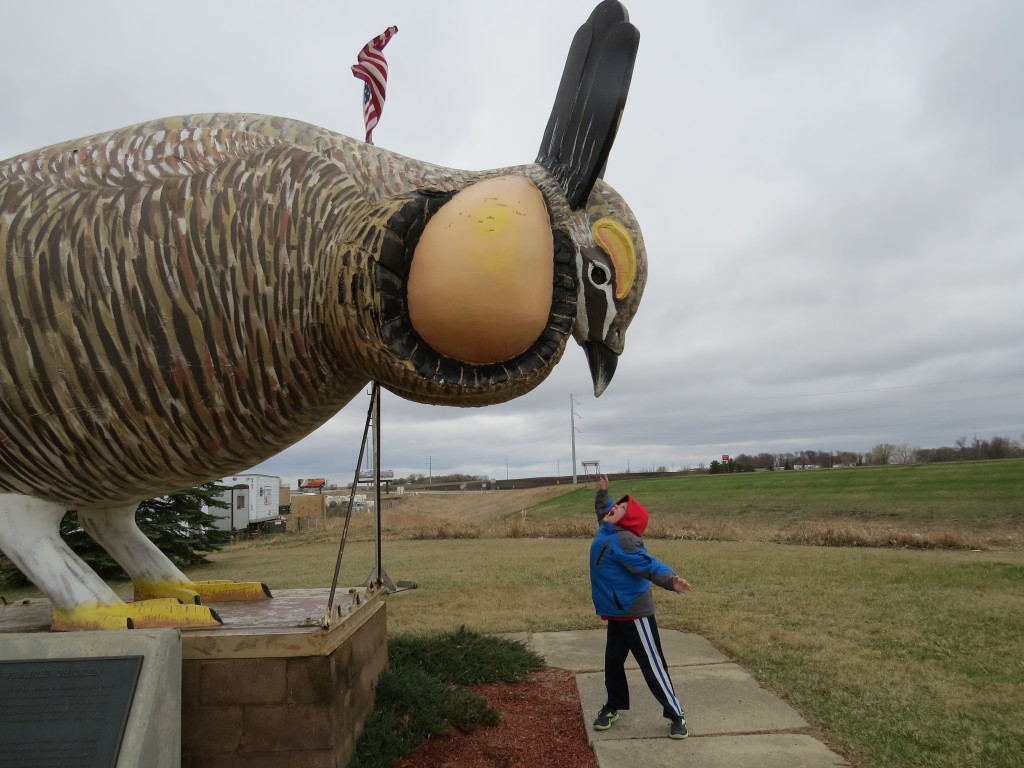 This next photo was not completely orchestrated by me. Evan really did discover the lesser end of a Greater Prairie Chicken all on his own. The smiles are 100% natural. Oh, to be 8 again.
This next photo was not completely orchestrated by me. Evan really did discover the lesser end of a Greater Prairie Chicken all on his own. The smiles are 100% natural. Oh, to be 8 again.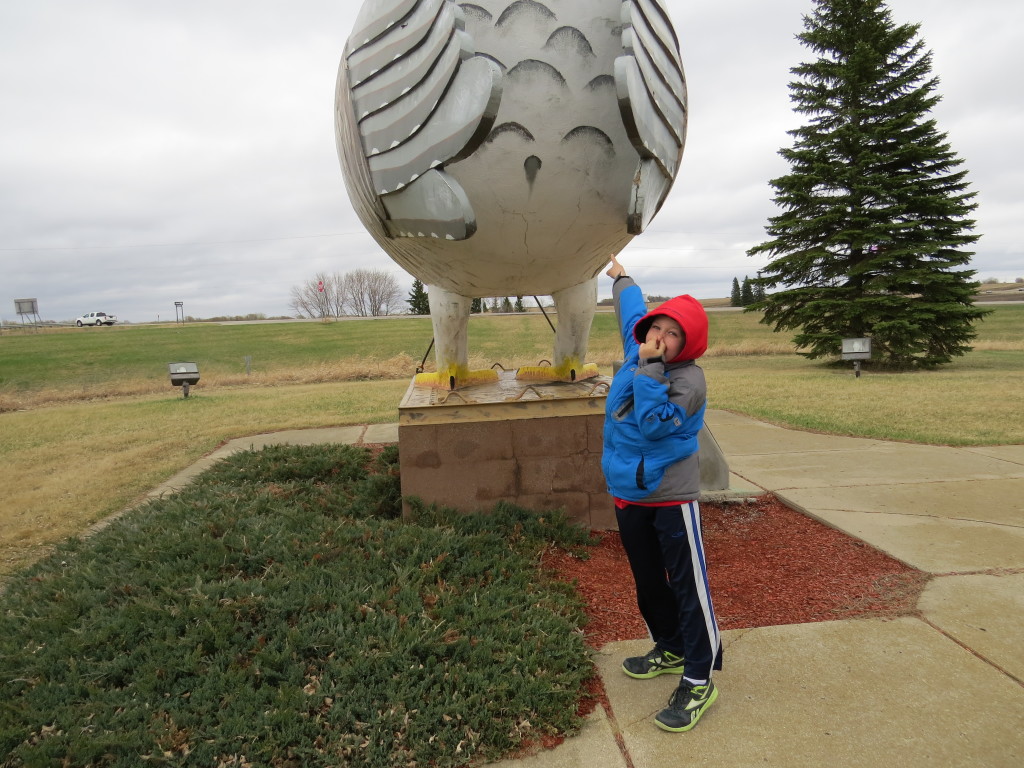
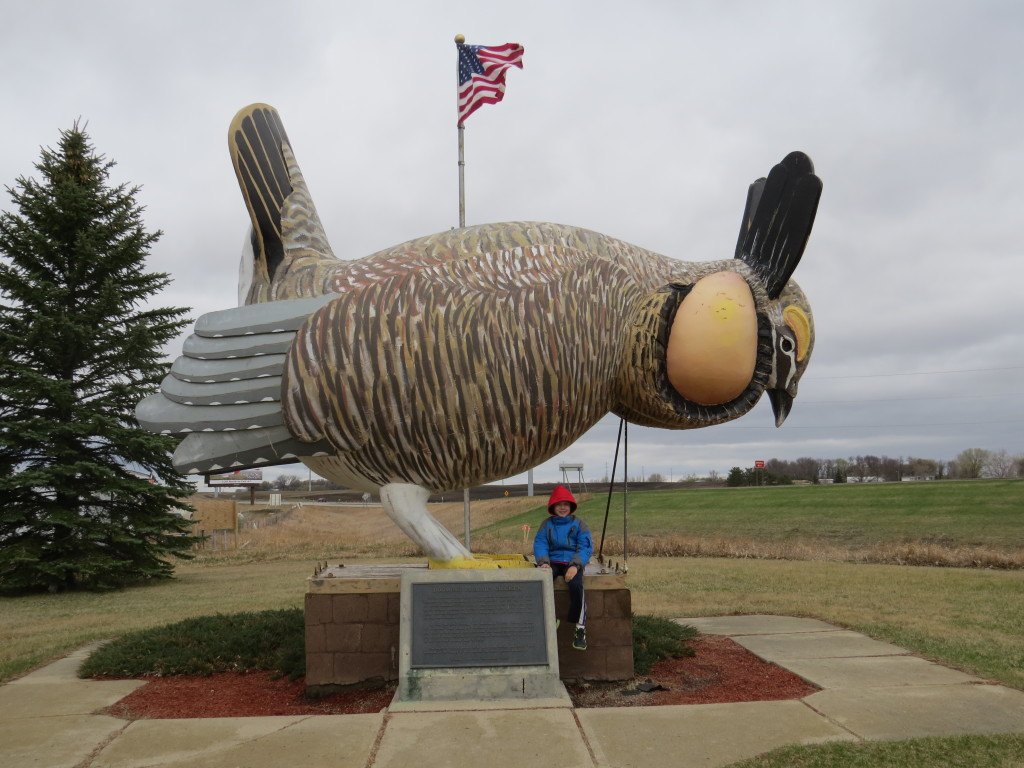
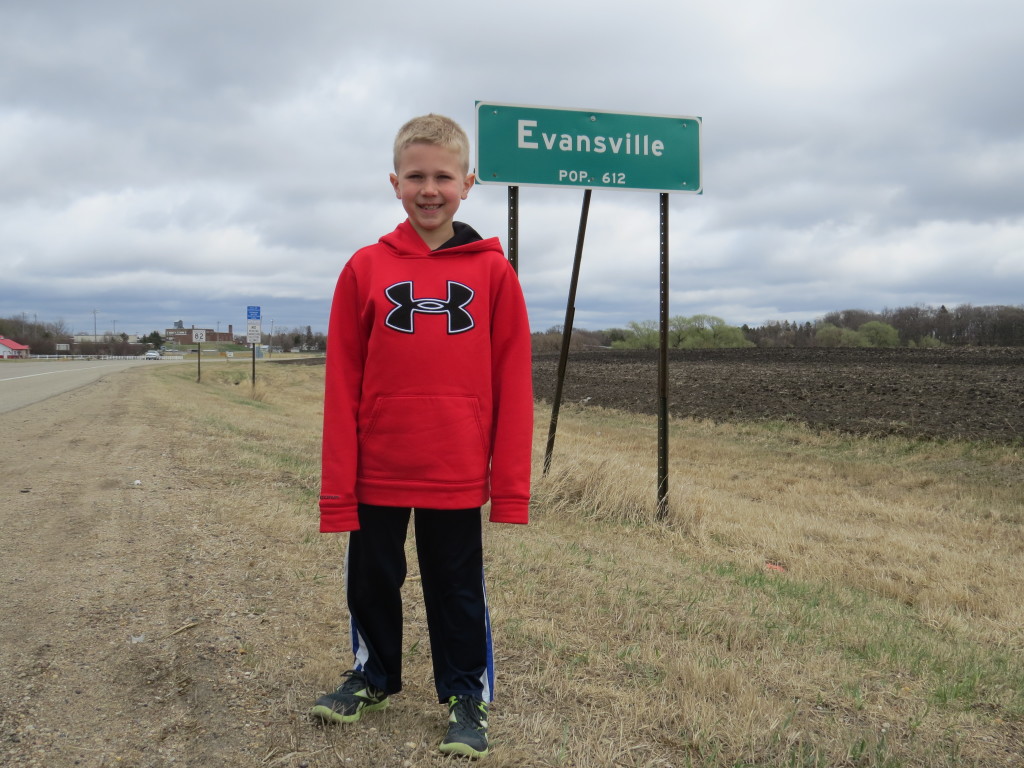
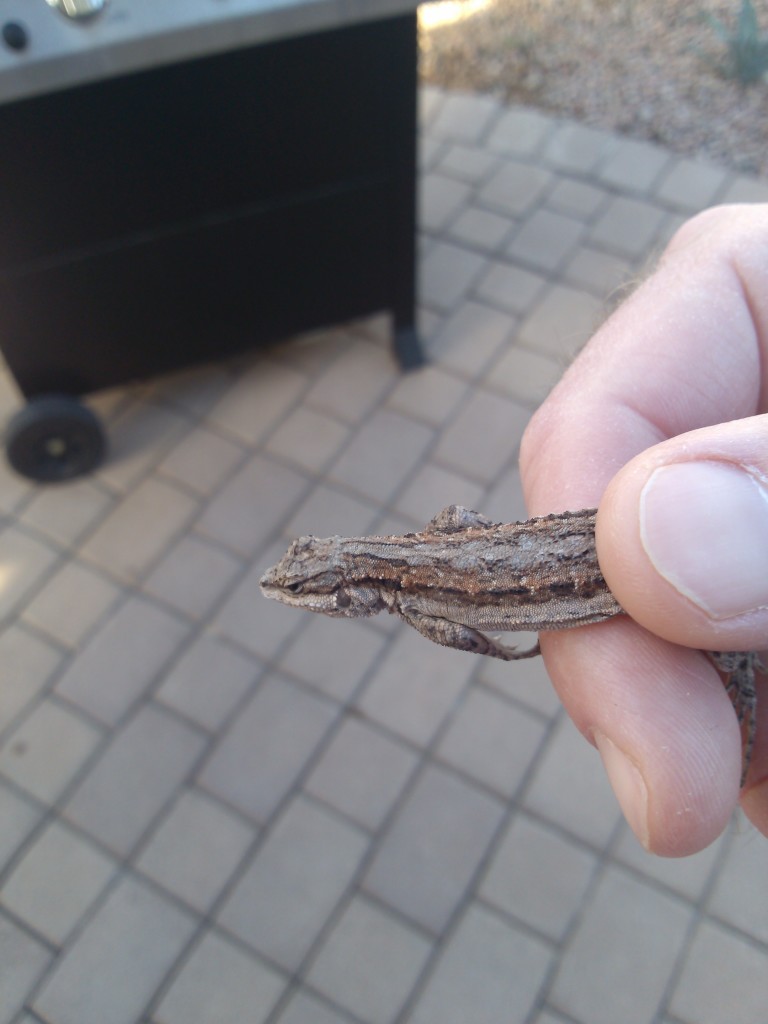
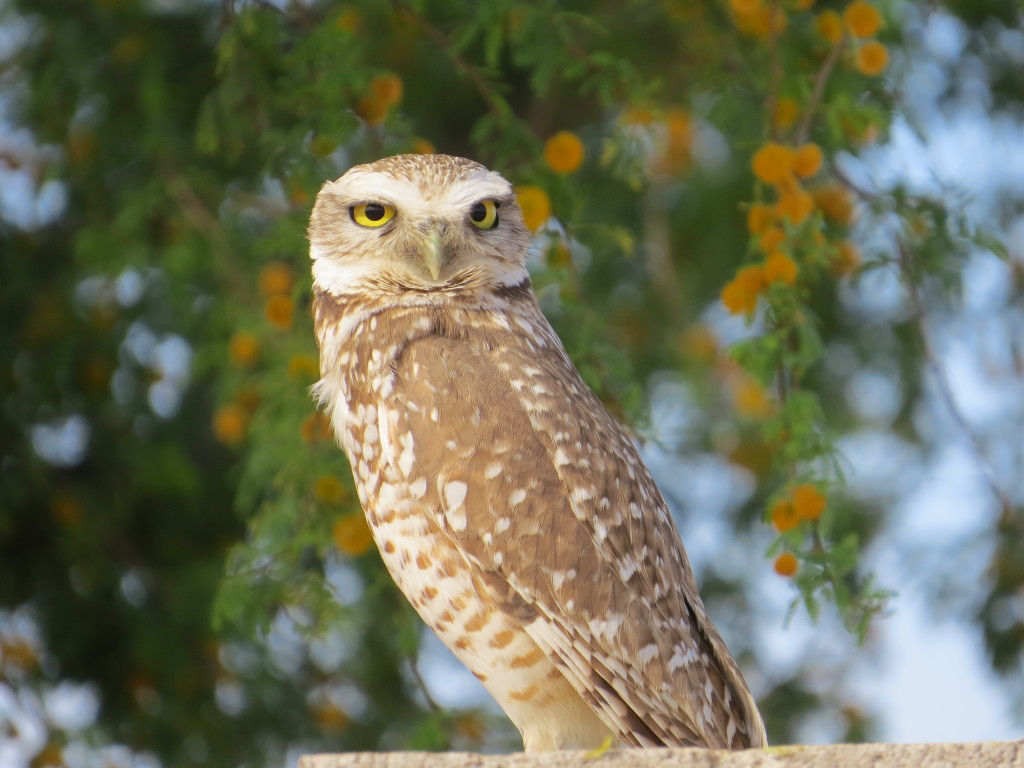
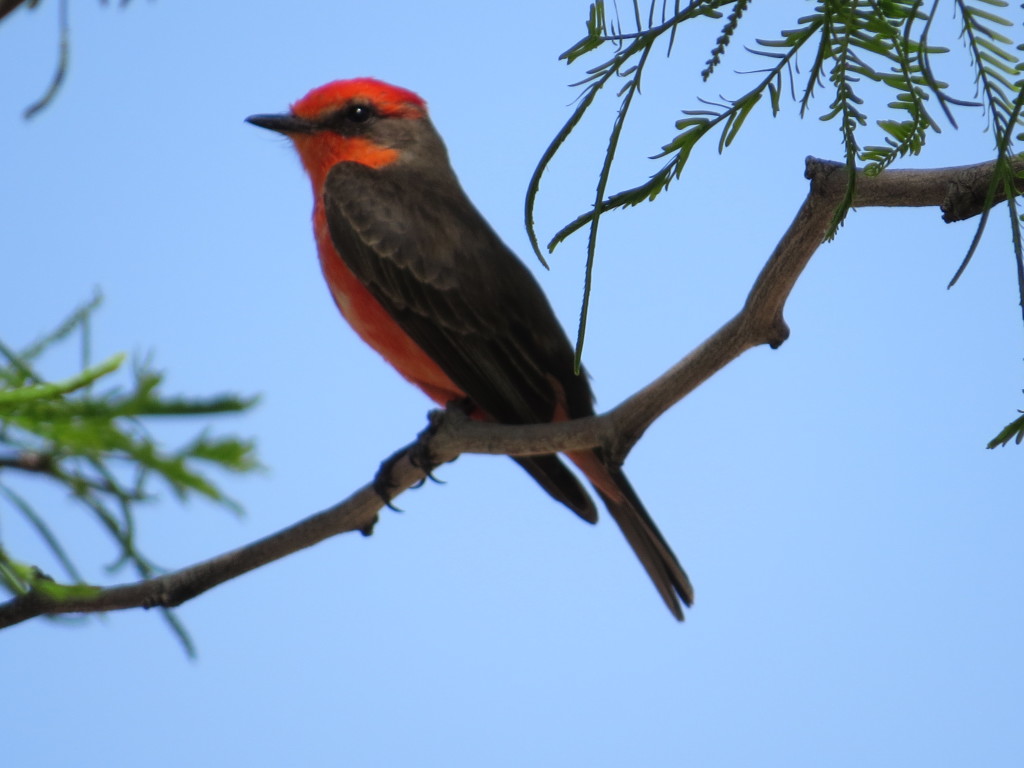 Good birds can be had in my parents’ yard and just beyond. My dad had been seeing a Greater Roadrunner around the house recently. Evan and I were going to set out to see if we could find it. As I was literally walking out to get Evan in the back yard, I caught a fast glimpse of the Roadrunner himself on the fence! While I was able to finally put this lifer to rest, Evan still didn’t see it–something that would become a common theme for the trip…
Good birds can be had in my parents’ yard and just beyond. My dad had been seeing a Greater Roadrunner around the house recently. Evan and I were going to set out to see if we could find it. As I was literally walking out to get Evan in the back yard, I caught a fast glimpse of the Roadrunner himself on the fence! While I was able to finally put this lifer to rest, Evan still didn’t see it–something that would become a common theme for the trip…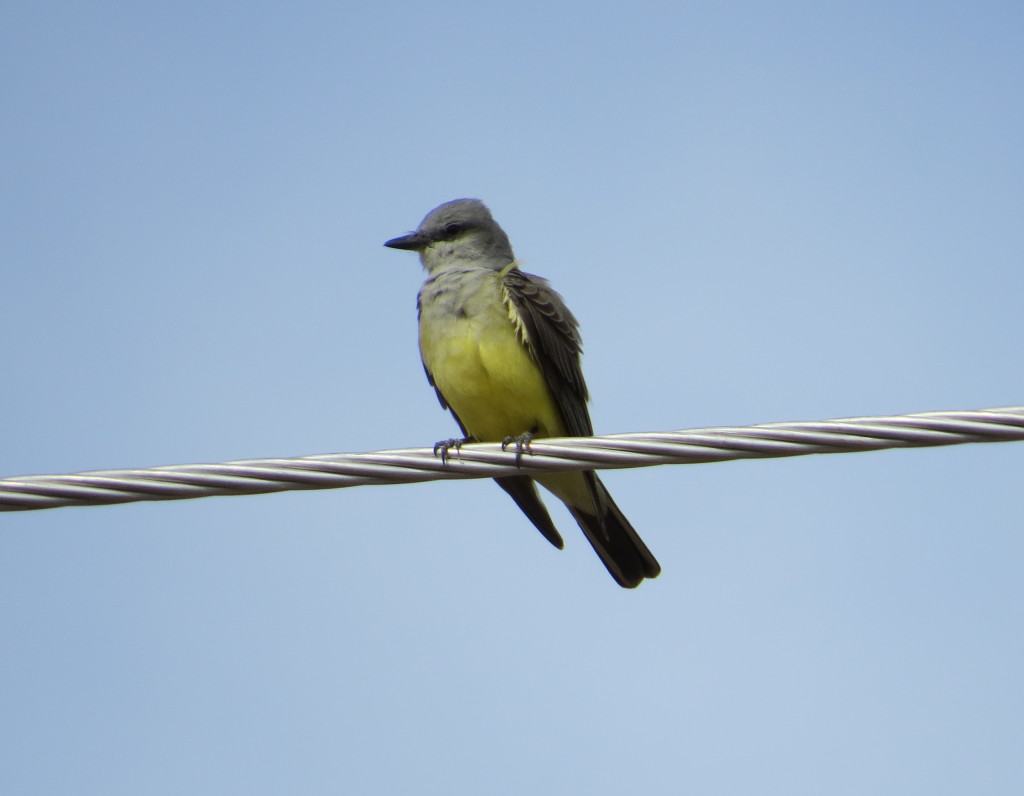
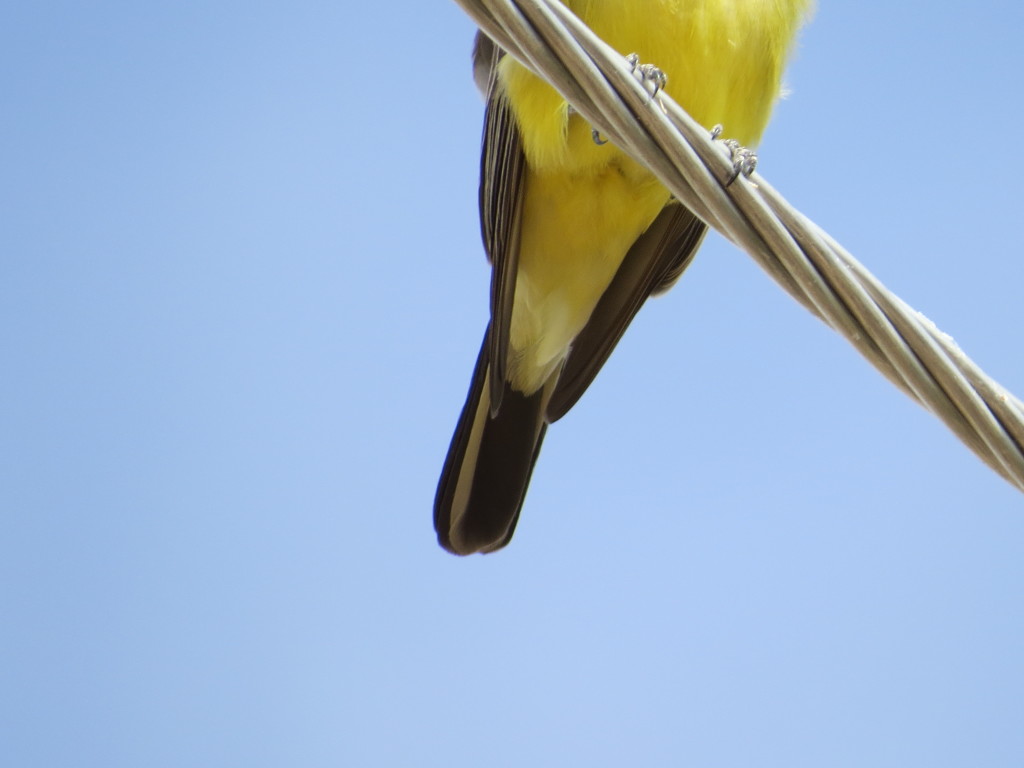
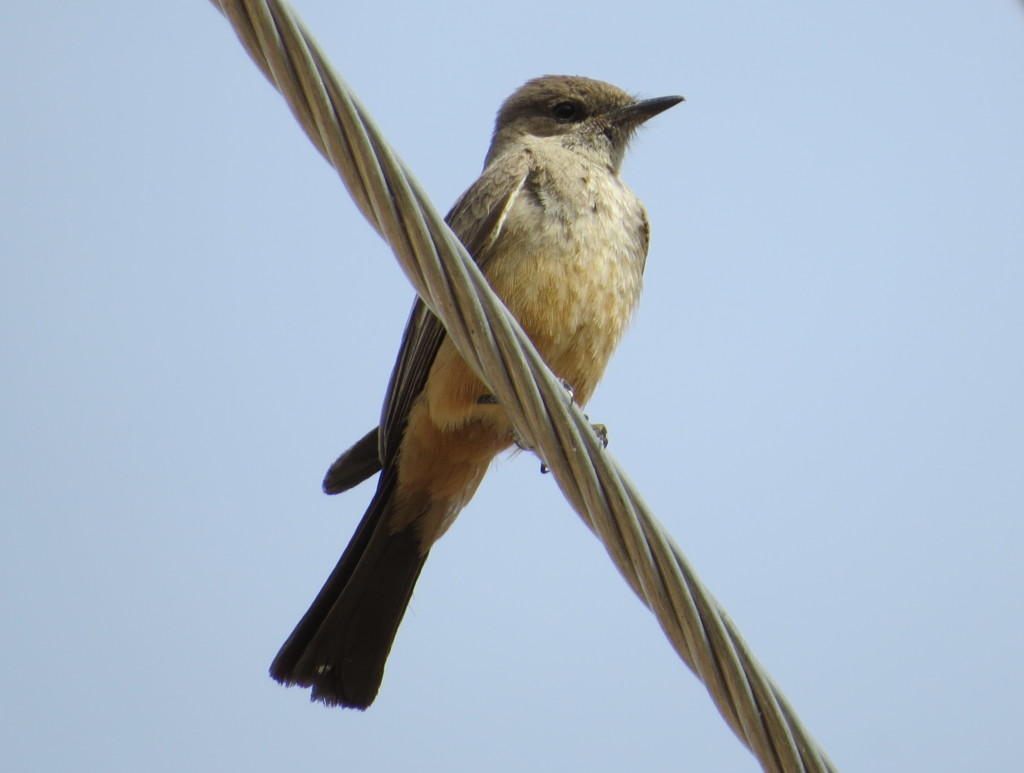
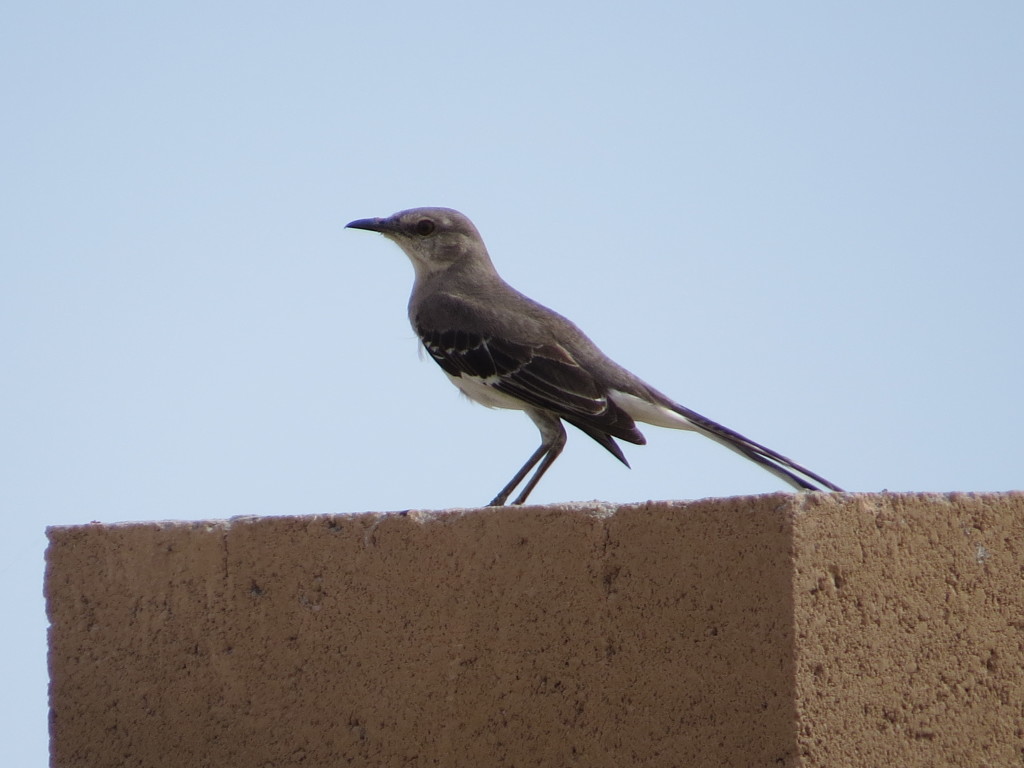
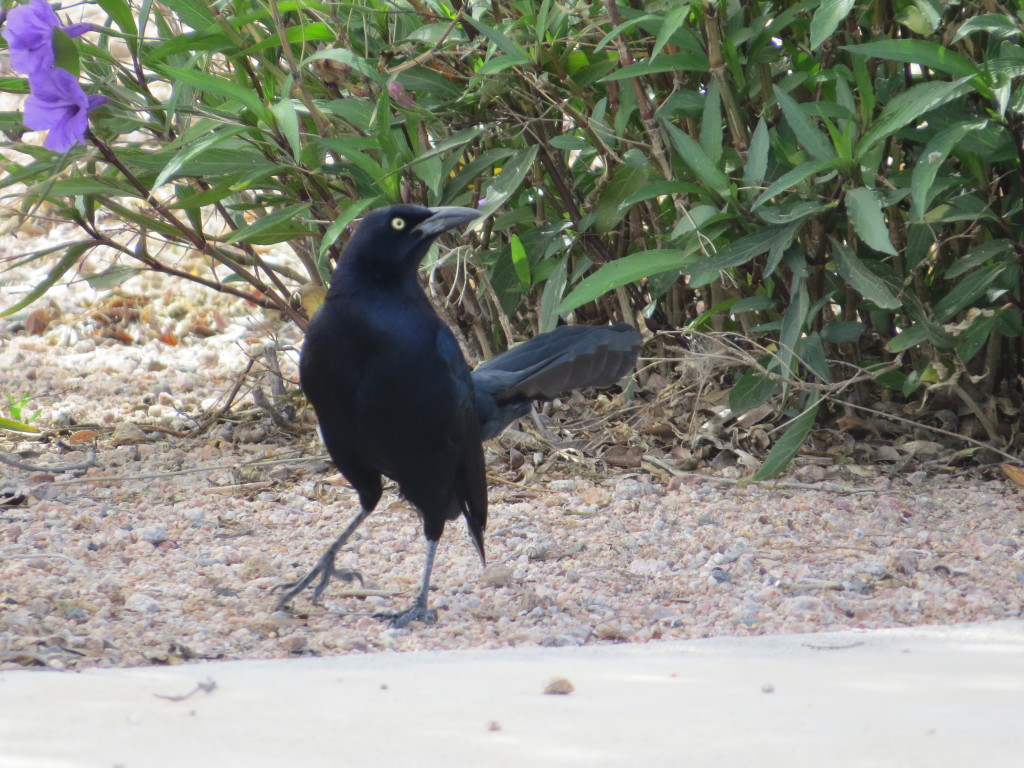 No trip to Arizona is complete without seeing the bodacious and skittish Gambel’s Quail.
No trip to Arizona is complete without seeing the bodacious and skittish Gambel’s Quail.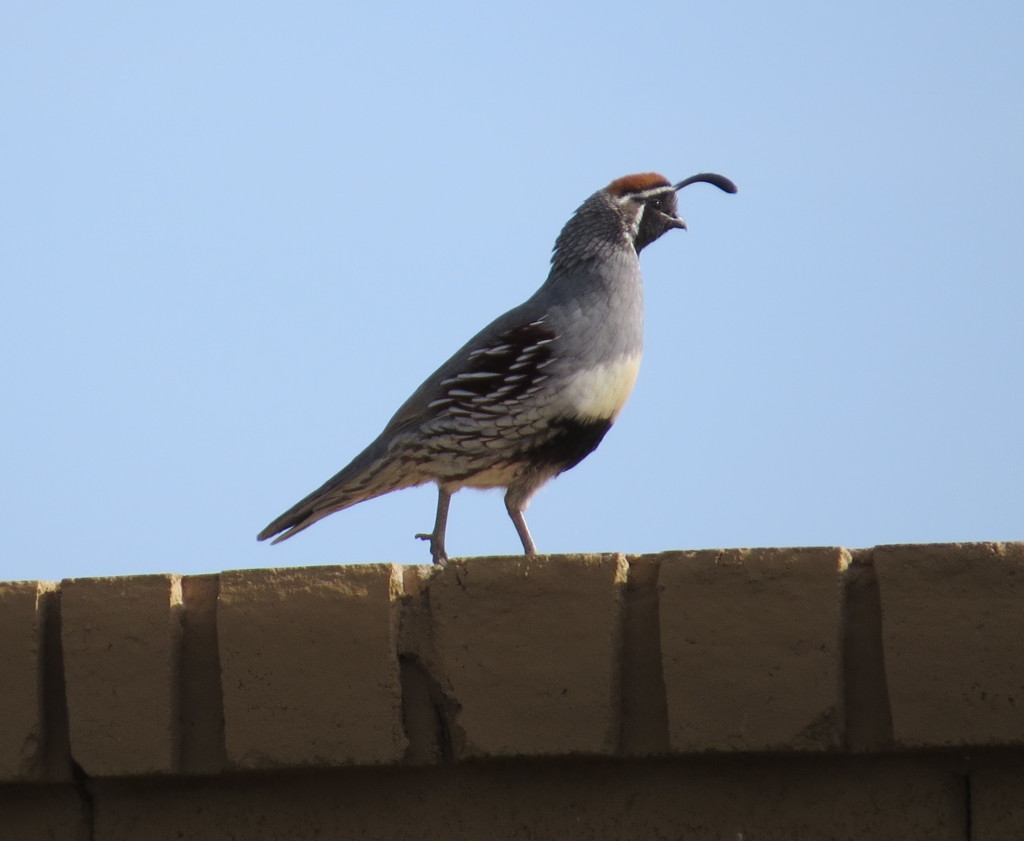
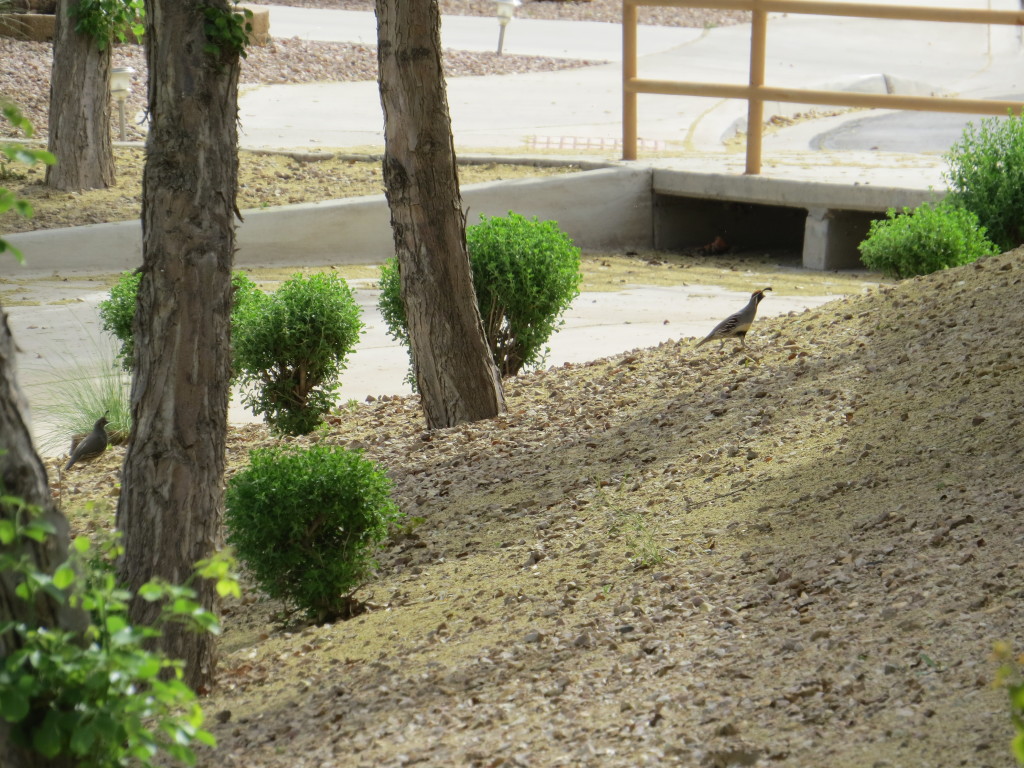
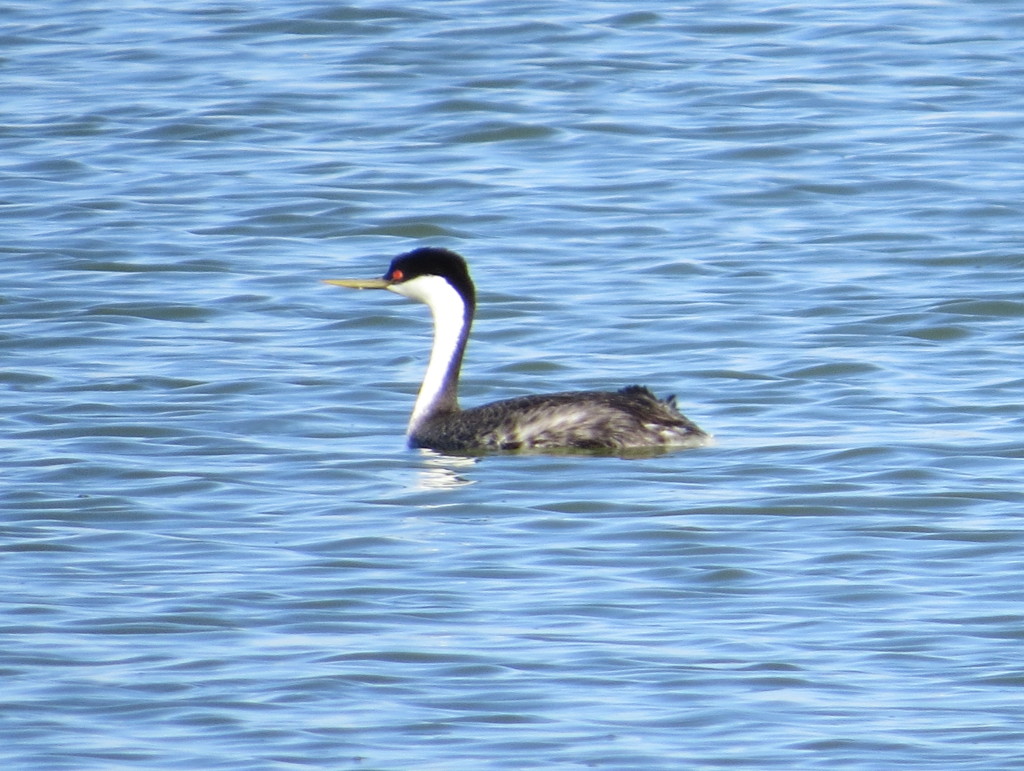

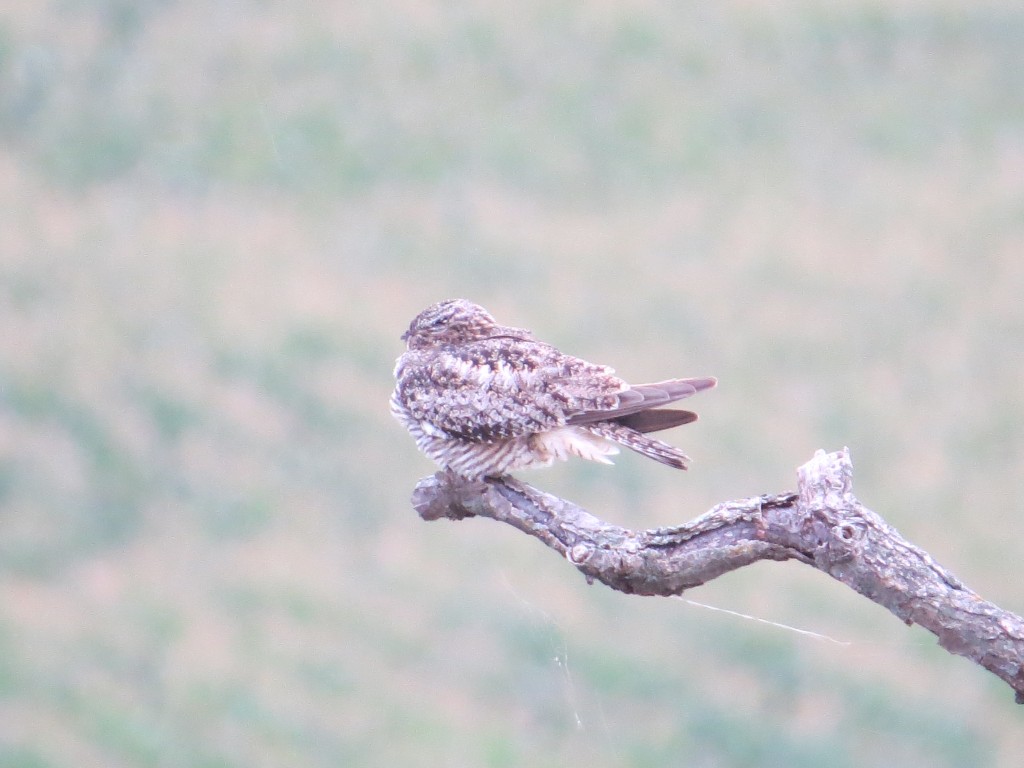

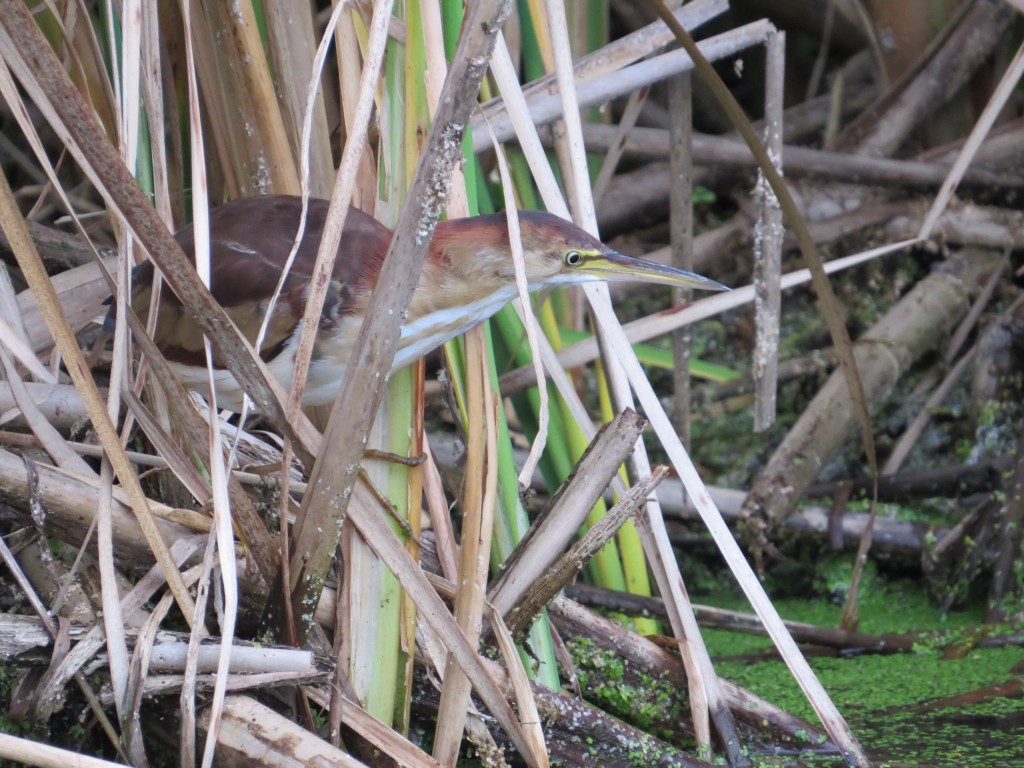 And one of the birders who helped us find this bird was none other than Stan Tekiela!
And one of the birders who helped us find this bird was none other than Stan Tekiela!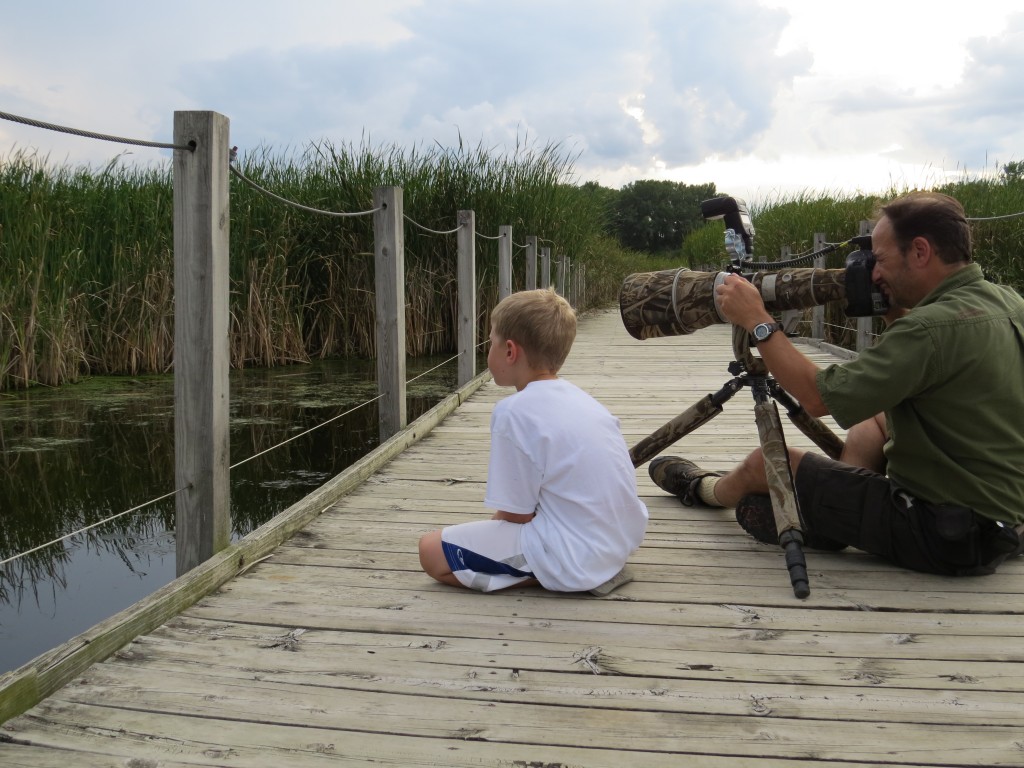
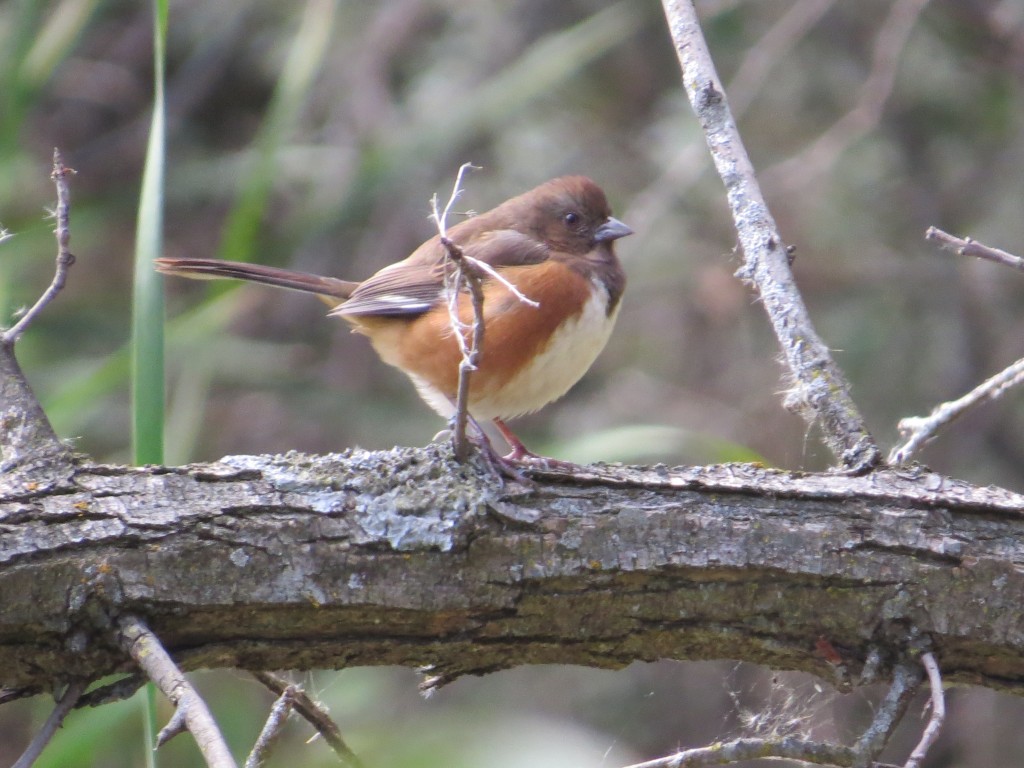
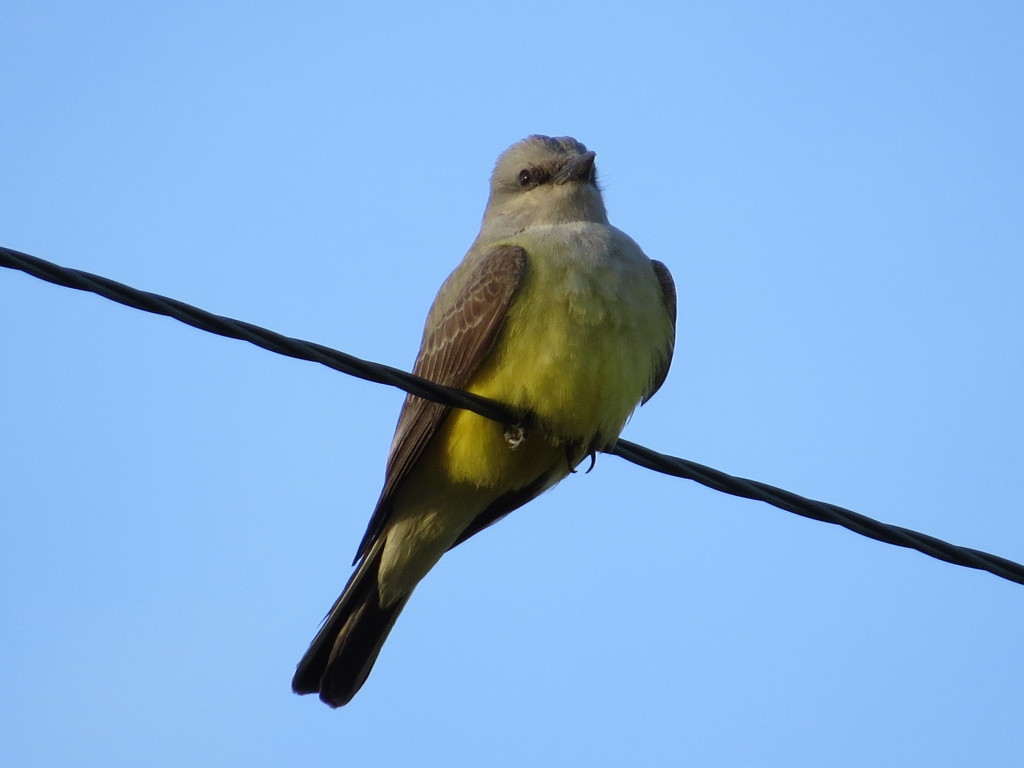
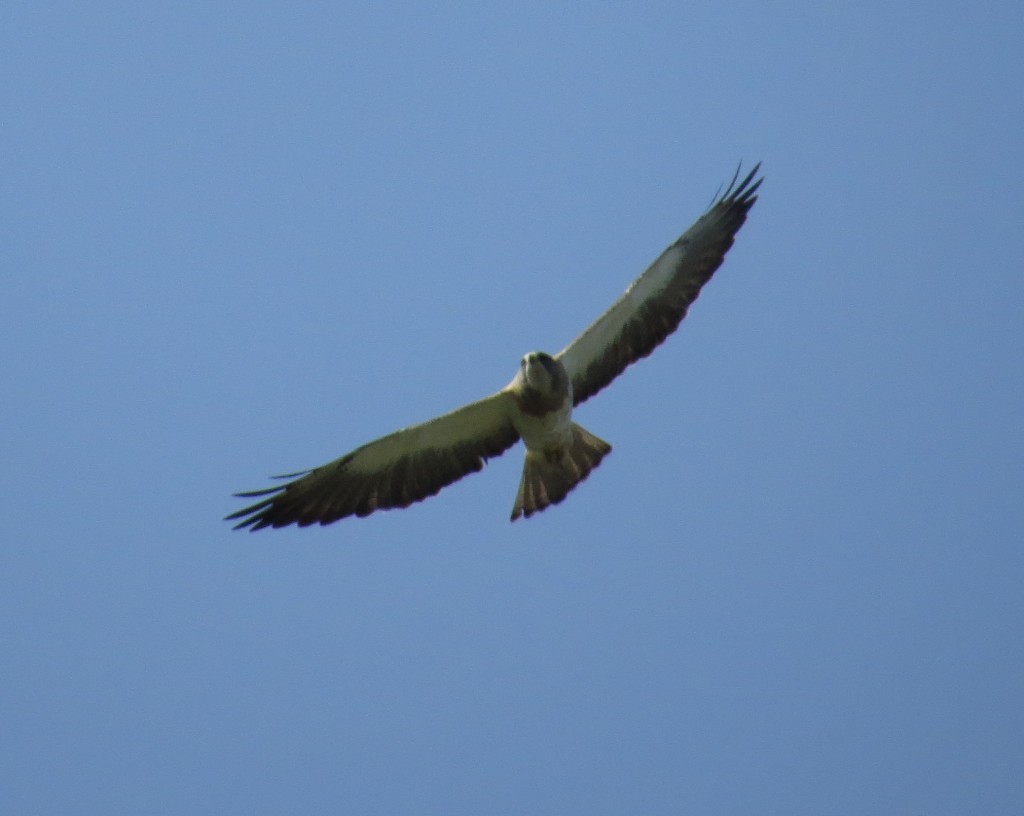
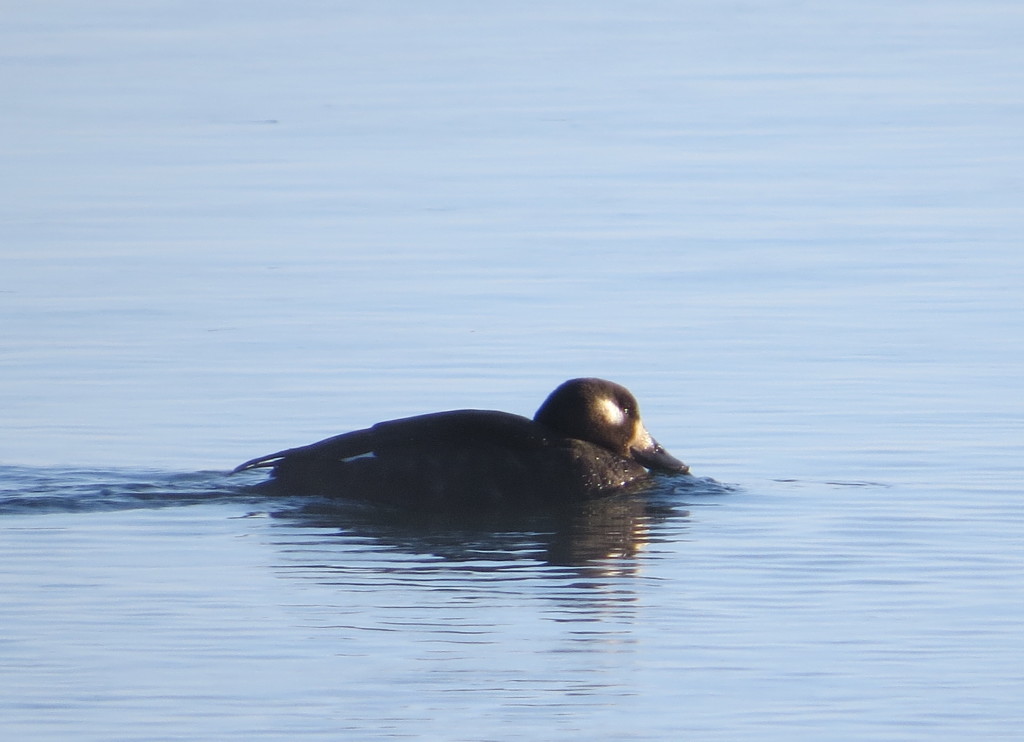
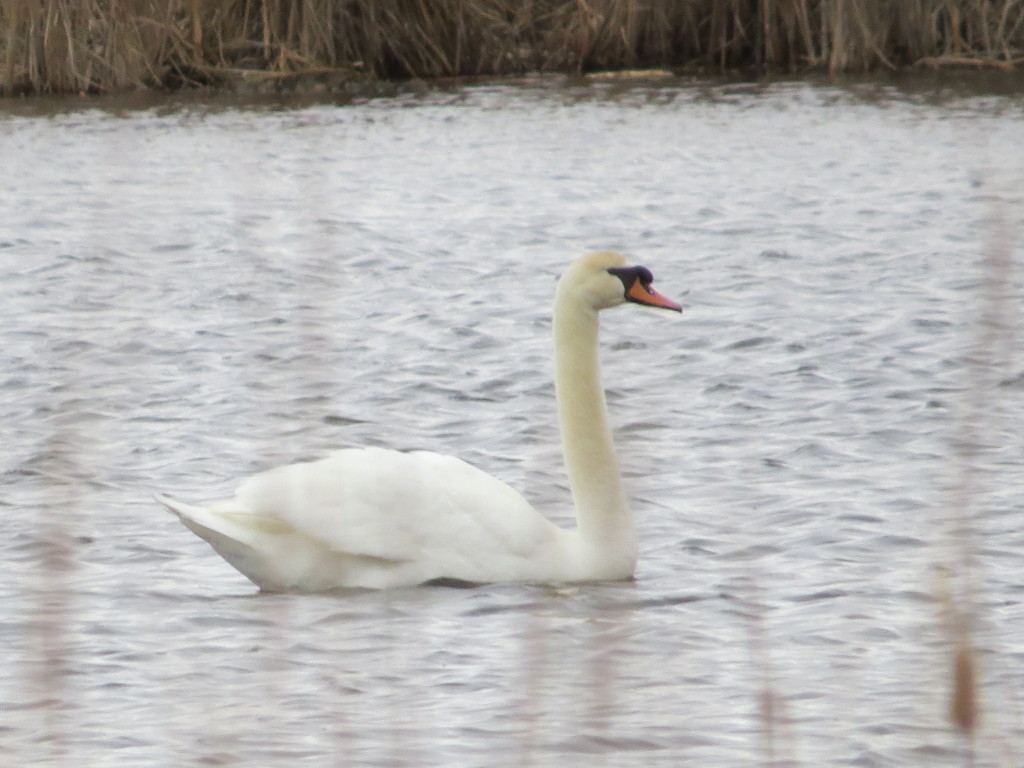
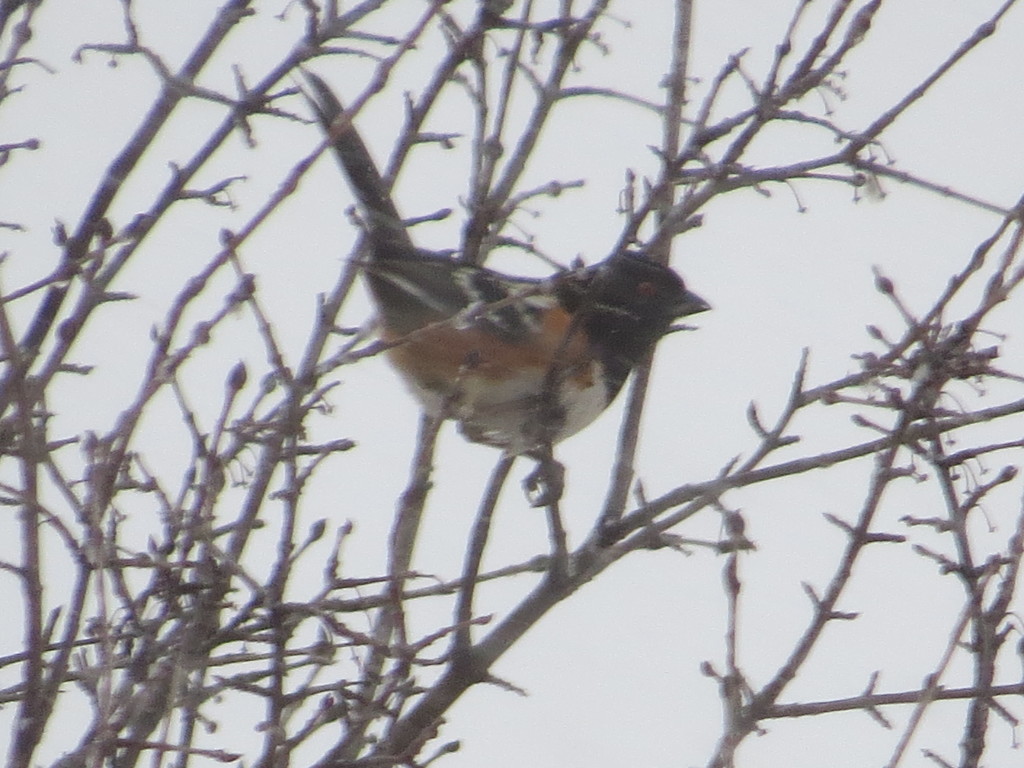

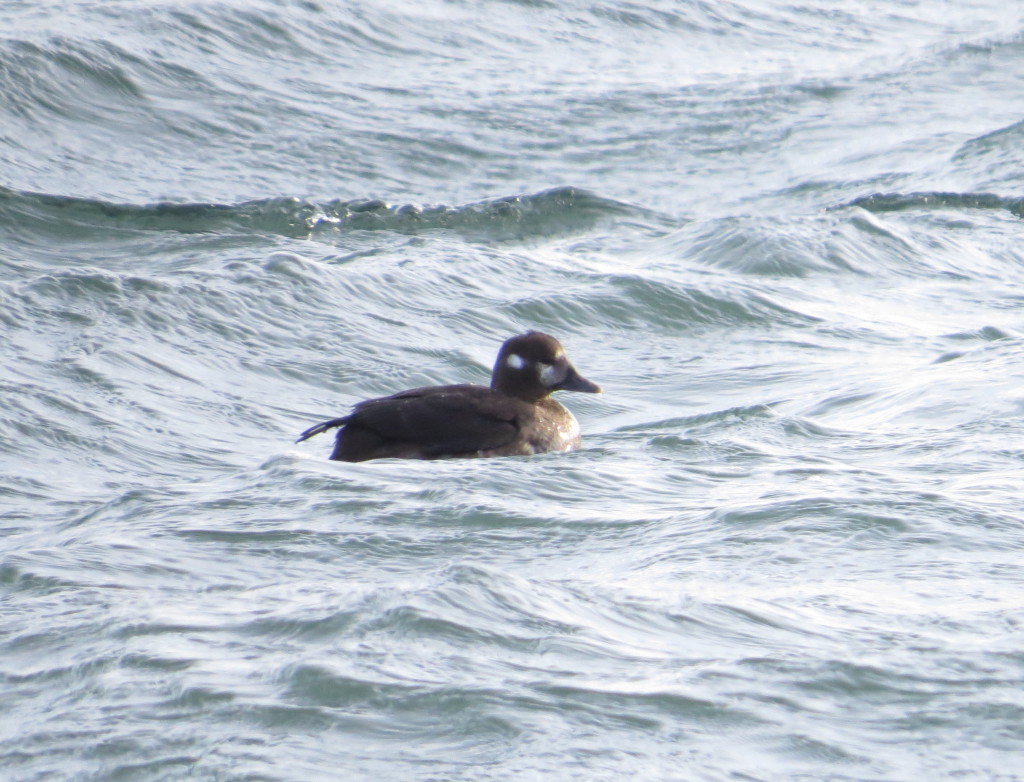
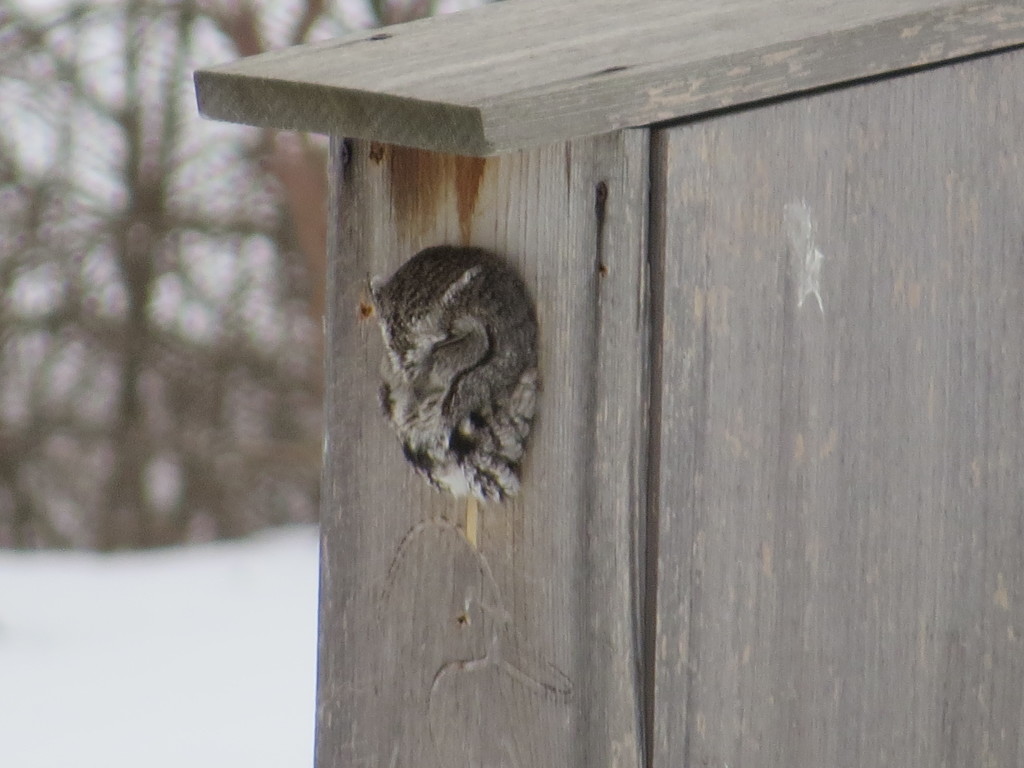
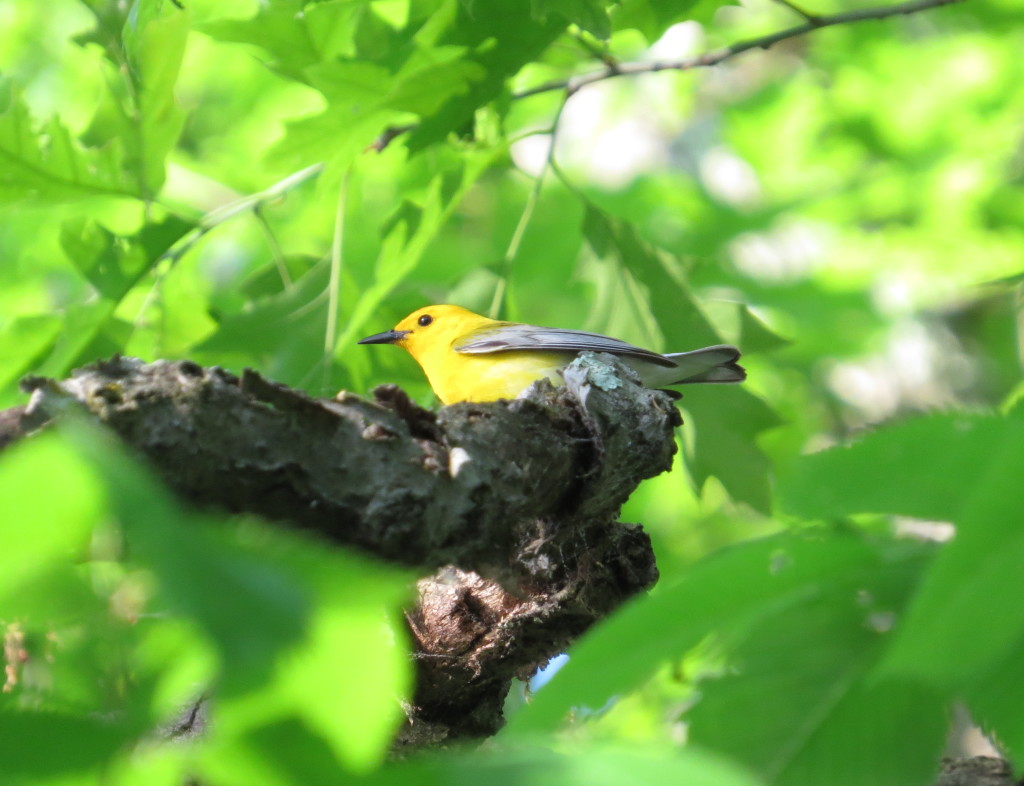
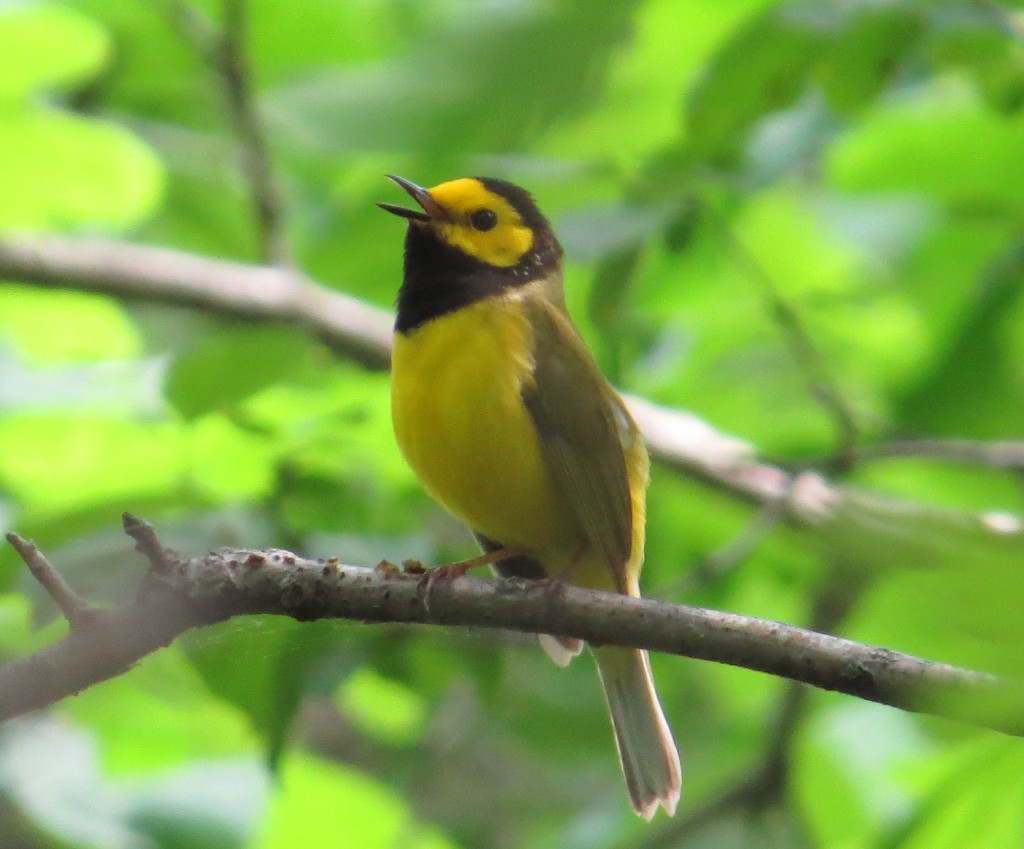
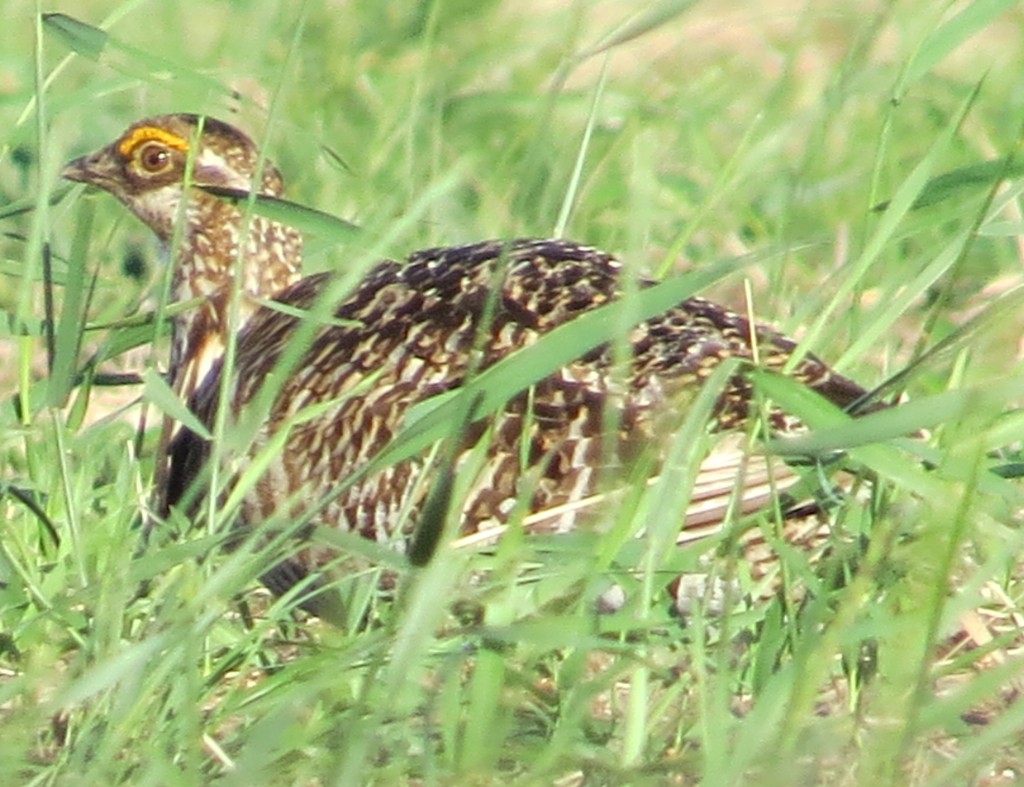
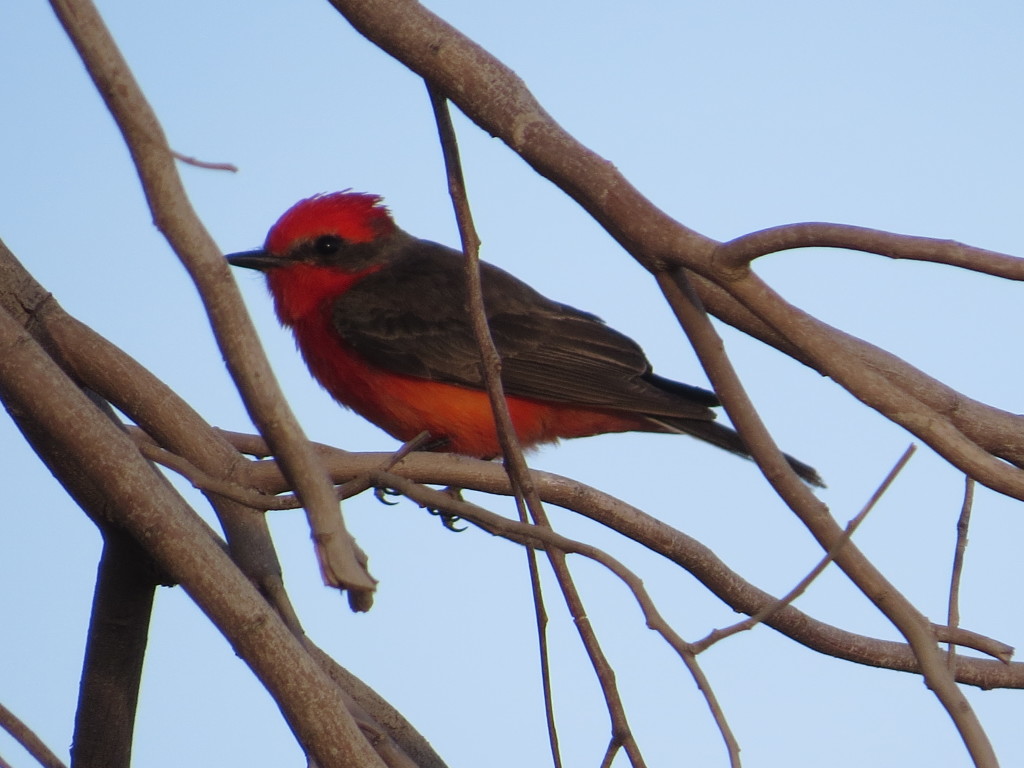
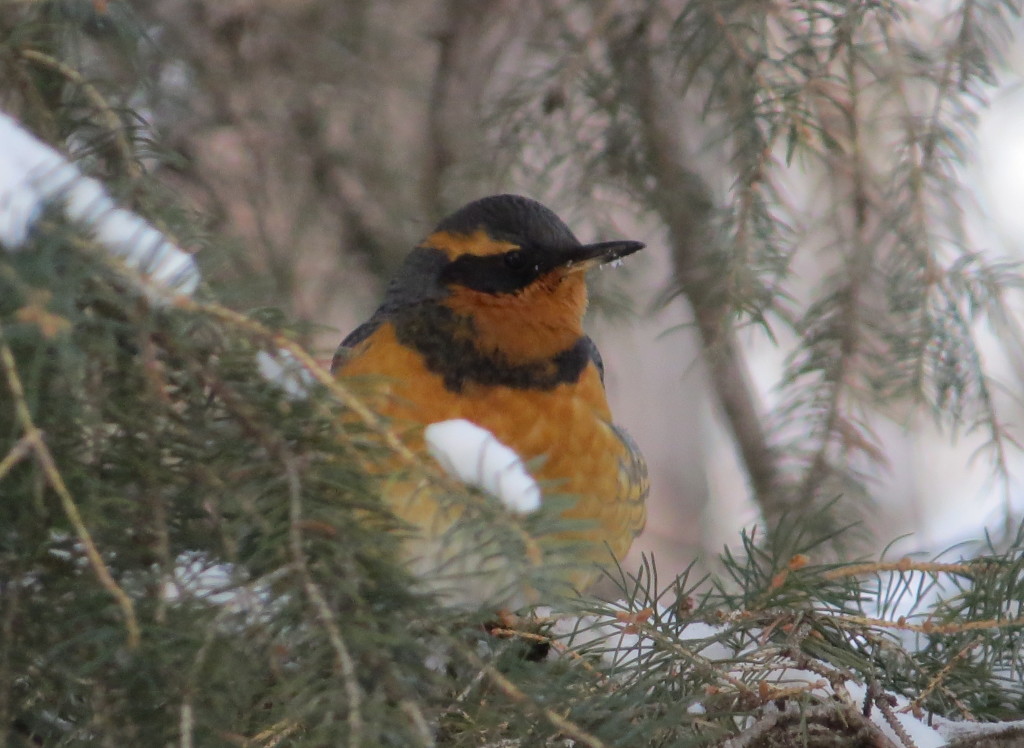
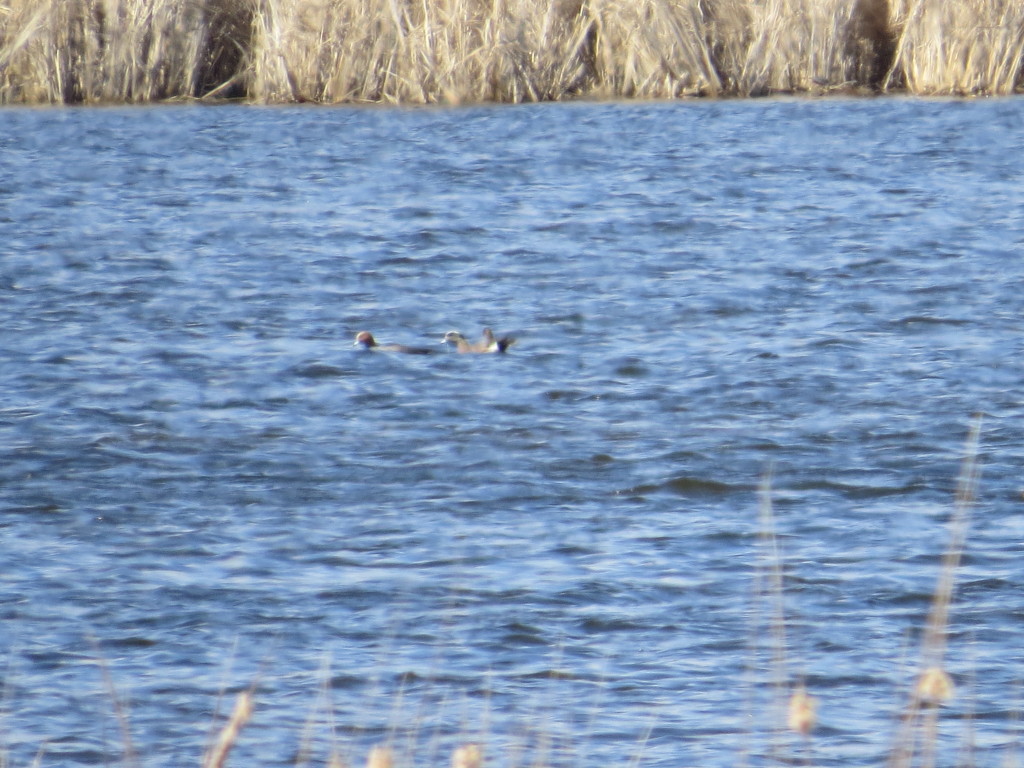
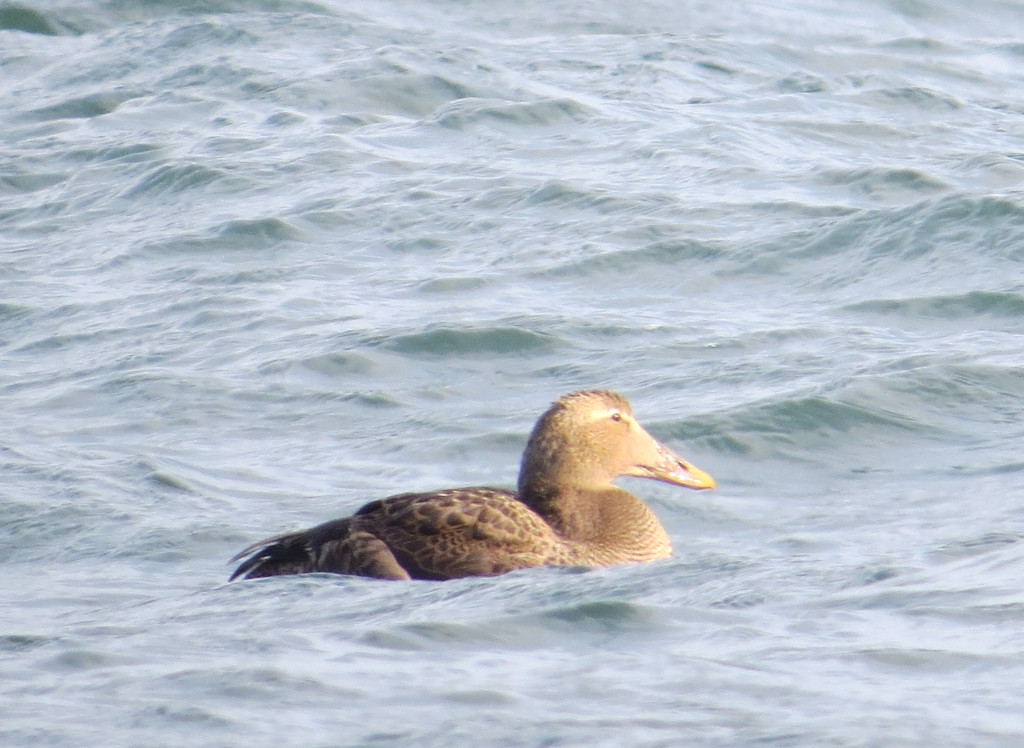
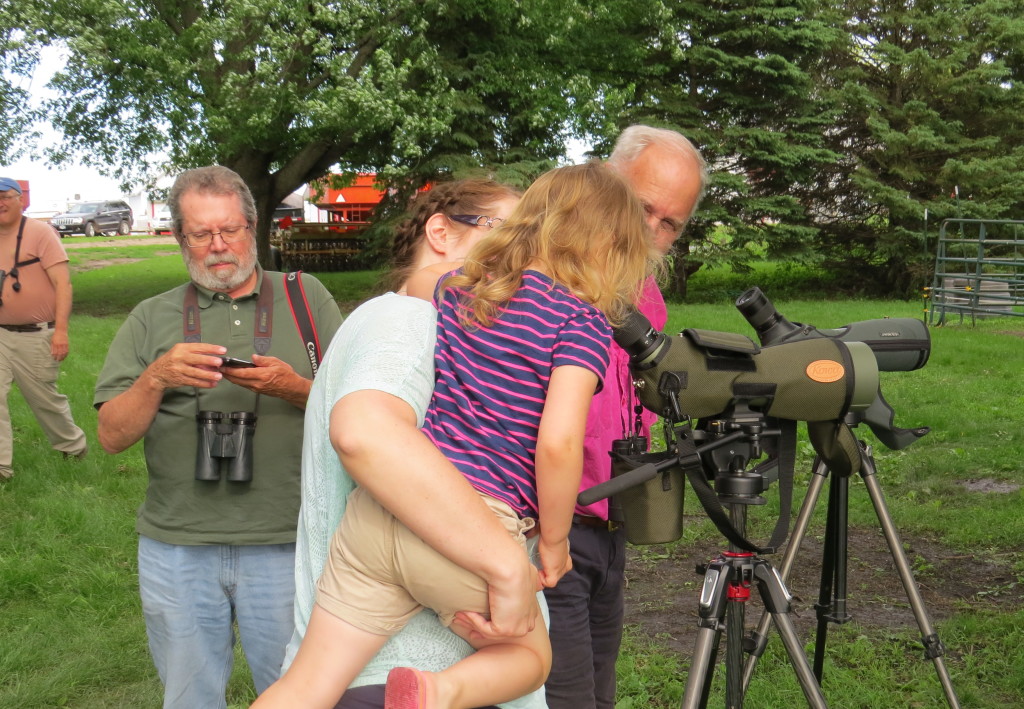
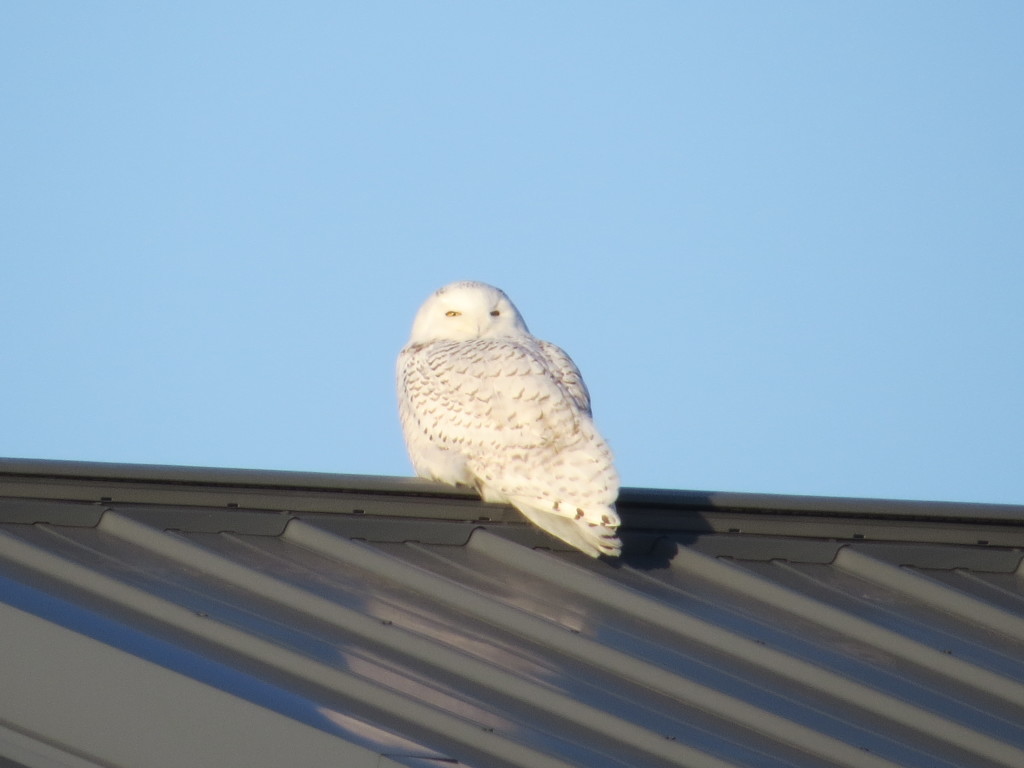
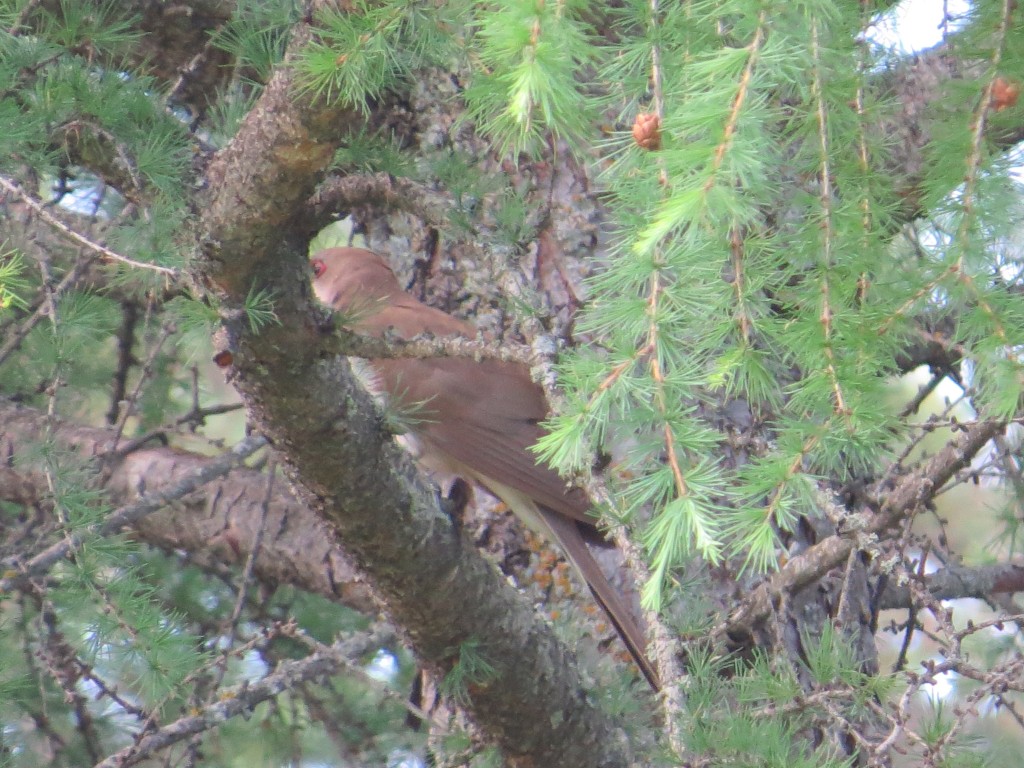
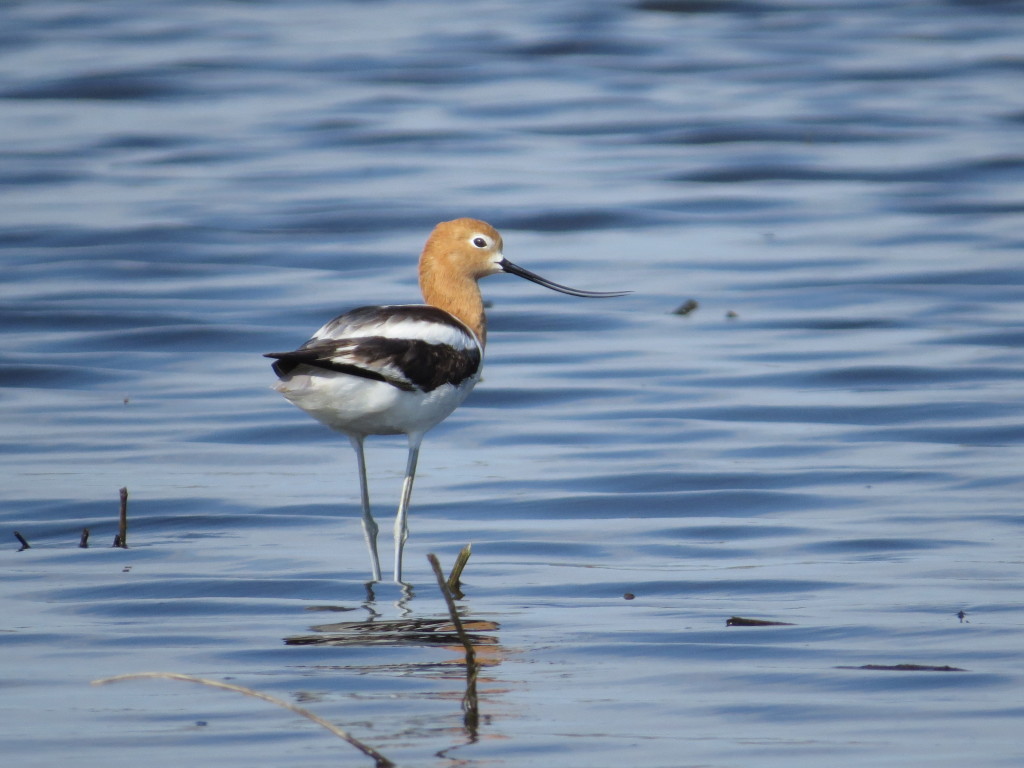
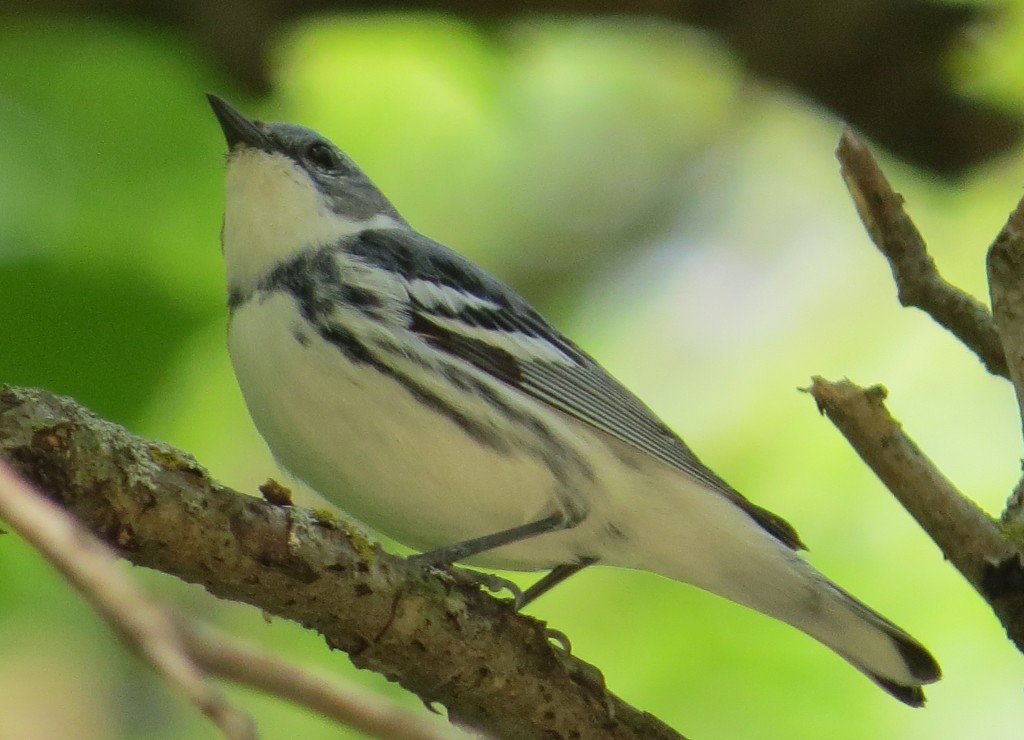 6. Chestnut-collared Longspur
6. Chestnut-collared Longspur